 Kowloon, Hong Kong
Kowloon, Hong Kong



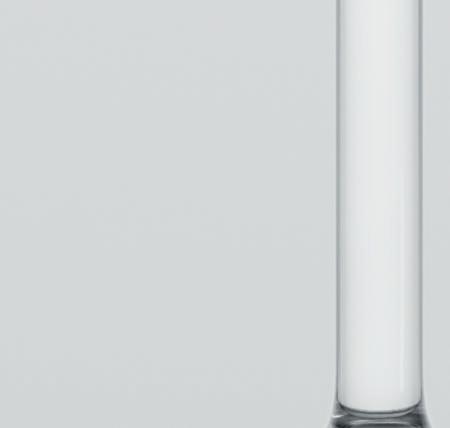



























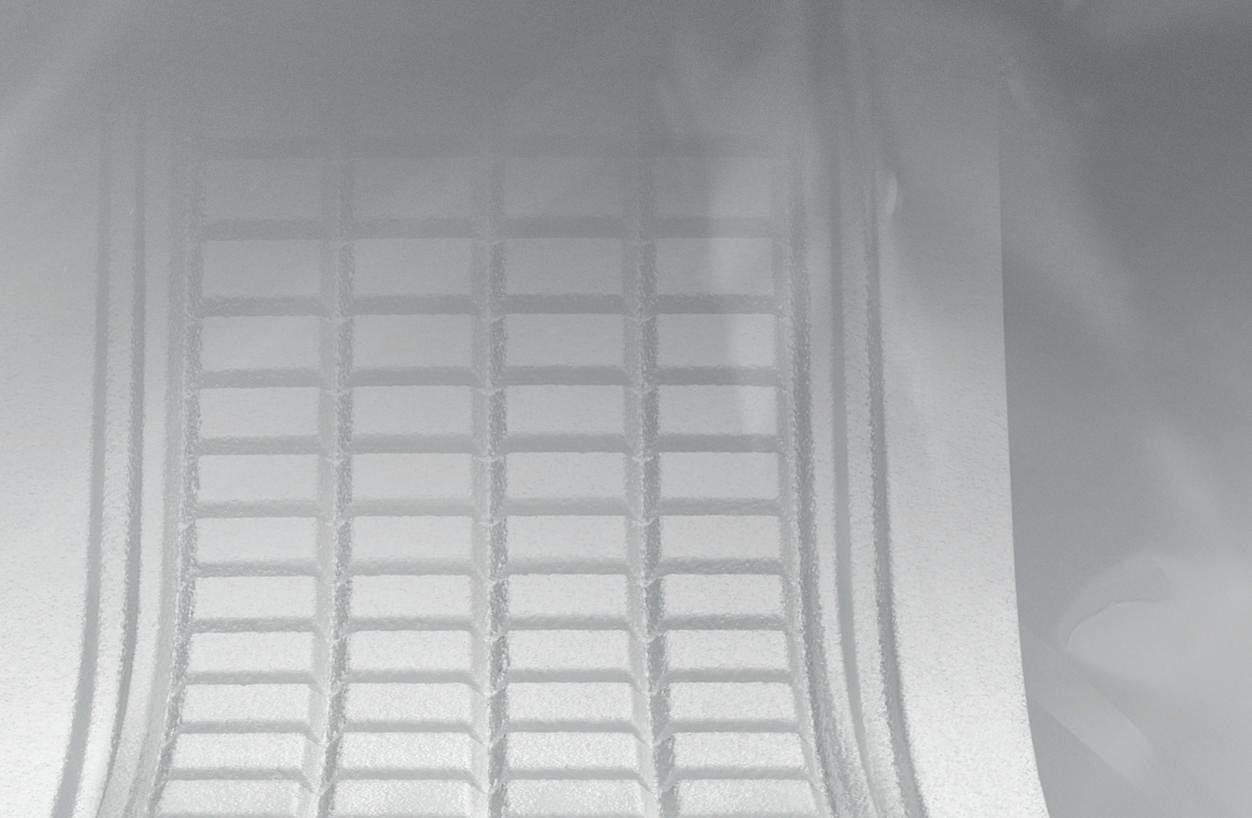


















 Kowloon, Hong Kong
Kowloon, Hong Kong

















































The all-electric Audi RS e-tron GT
With a powerful presence, wide stance and fowing lines — the Audi RS e-tron GT is designed to turn heads. With up to 475 kilowatts at your disposal, onlookers will have to turn quickly.

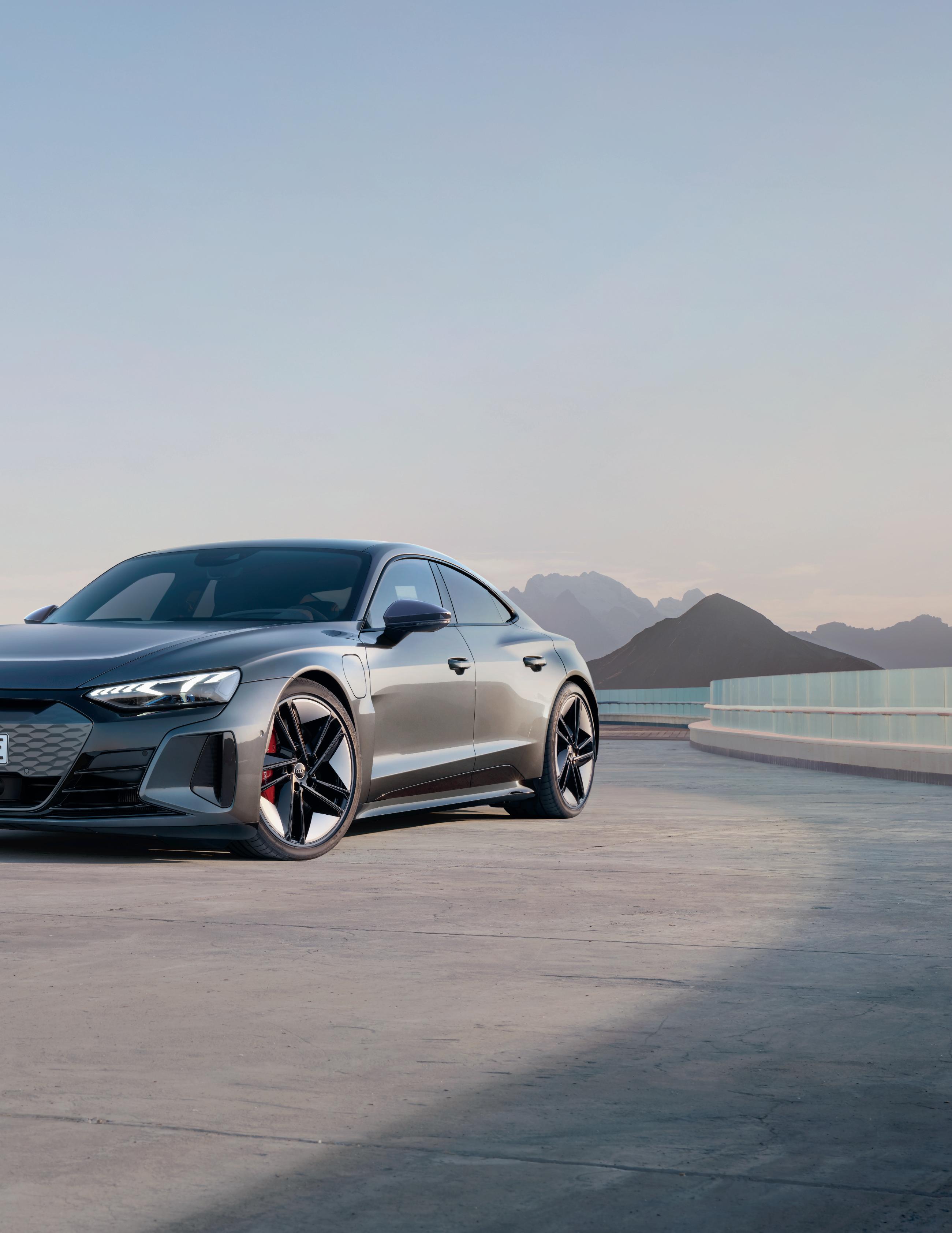
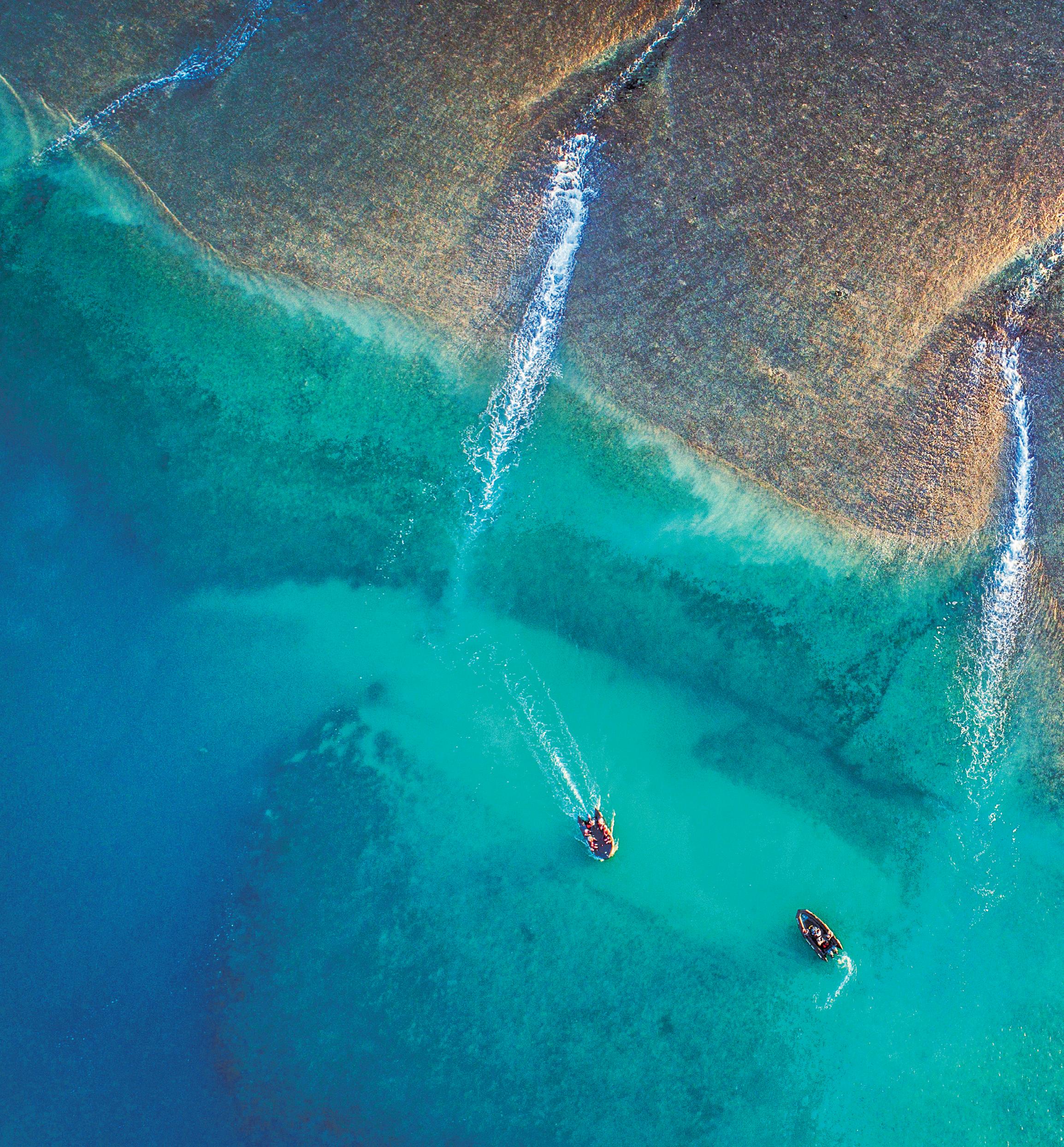





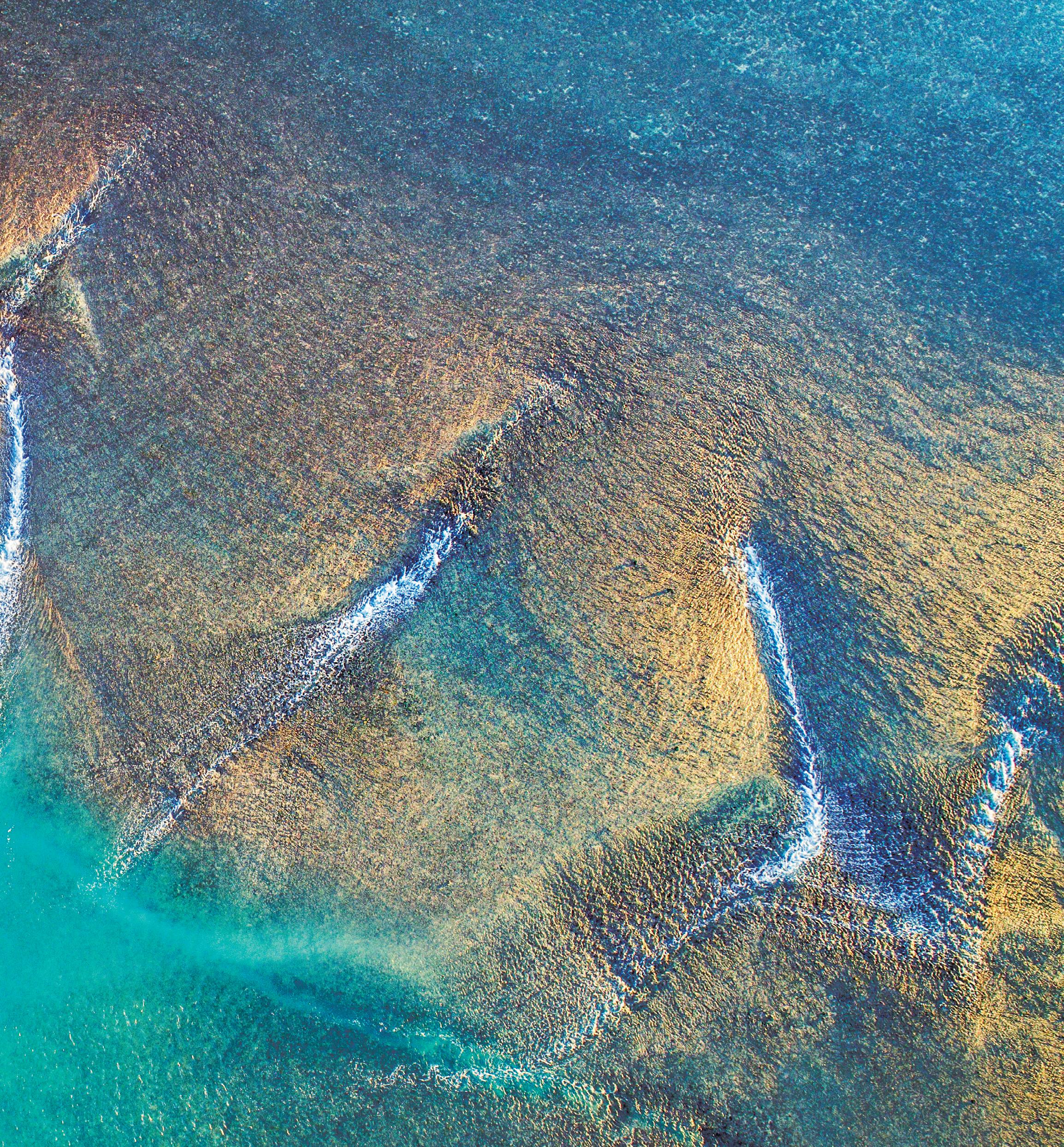
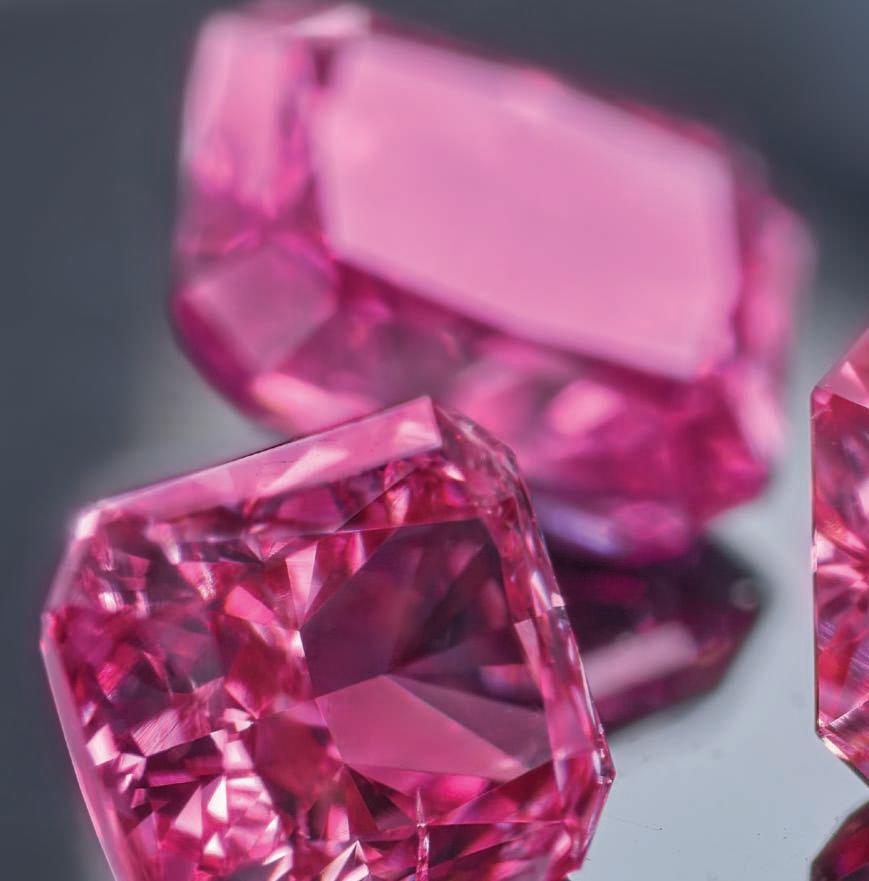

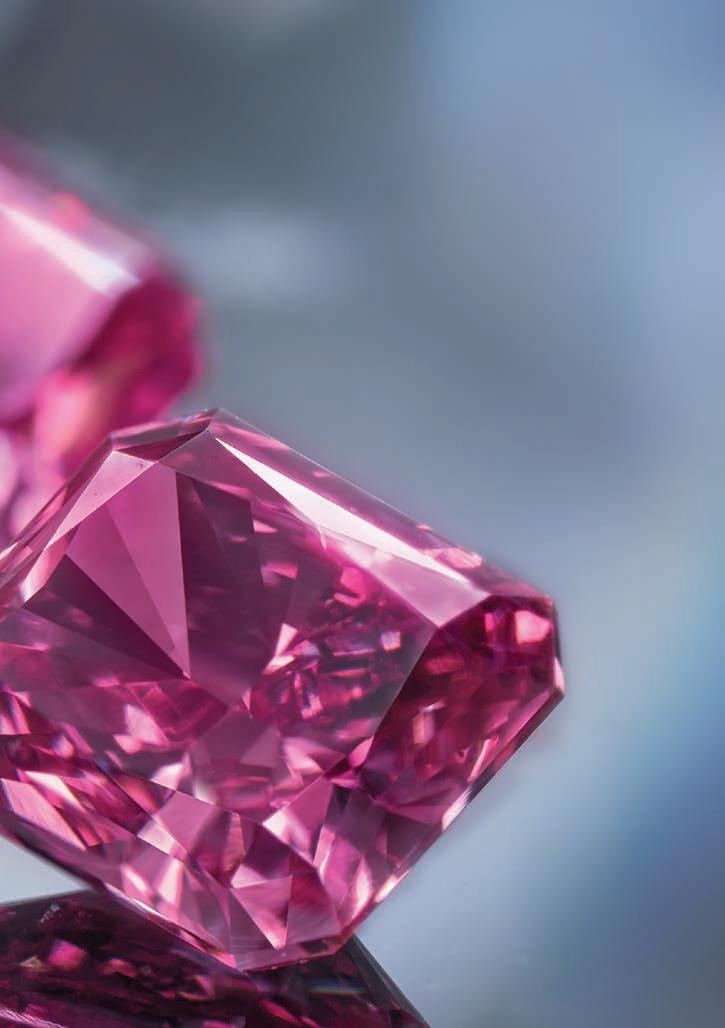


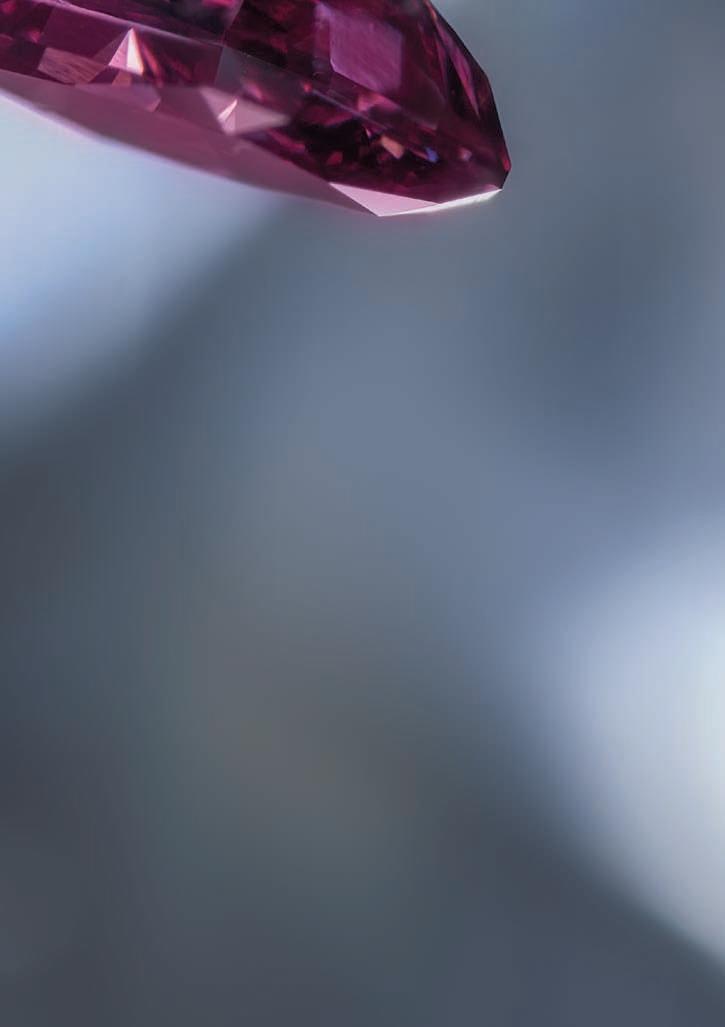





90
80 THE HOT LIST
98 JOIN THE CLUB
In a city brimming with fine-diners, the hidden gastronomic societies of San Sebastián beckon.
90 ORDER UP
Feast on the best eating and drinking Hong Kong has to offer, from street snacks to Michelin stars.

106 ROOM SERVICE
Book a table and a bed for the night at the restaurants that double as stays, here and around the globe.

46 Chefs and sommeliers: Secrets of a great restaurant “marriage”

50 Australia’s 2023 Wine List of the Year Awards Special: The winning drinks lists and where to find them
68 Long Weekend: Maria Island, Tasmania
70 48 Hours In... Bourke Street, Melbourne
72 Play And Stay: Giants of Mandurah, Western Australia
74 Epic Escape: Rea Rea Lodge, Kangaroo Valley, NSW
164 Creative Process: Polly Borland
166 Design Notes: Molloy chair
168 Foundations: State Library of Queensland, Brisbane
170 Packing List: Fashion for travelling in style
174 Spotlight On: Van Cleef & Arpels Zip necklace
176 How I Travel: Michael Lo Sordo
178 Watch Special: The latest and greatest timepieces
186 Think Tank: How quantum technologies are changing the way we live and work
192 View from the Top: Sarah Derry, CEO, Accor
198 Check In: Sydney
200 Firsts: Karen Mundine
202 Masterclass: How to... pay attention
204 The Big Idea: Andi
131 Sail away on your dream voyage, whether that’s on the Danube River in Eastern Europe or to French Polynesia – and everywhere in between.
119 From the top eateries in Perth to the First Nations story of Broome, there are a host of fresh reasons to visit – and revisit – WA.















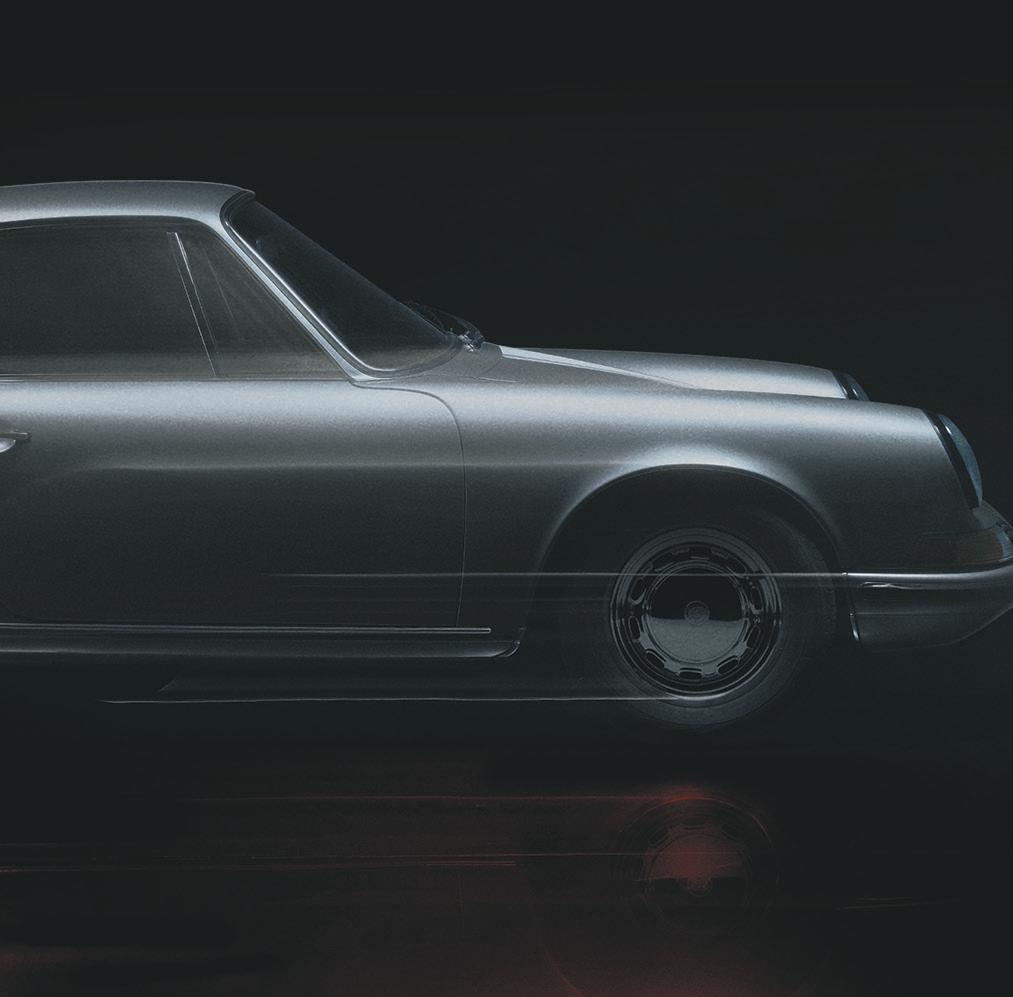







EDITORIAL
Editor-in-Chief
Kirsten Galliott
Content Director
Genevra Leek
Deputy Content Director
Faith Campbell
Content Manager
Natalie Reilly
Online Editor
Christina Rae
Senior Digital Producer
Maxim Boon
Managing Editor, Qantas Hotels
Bridget de Maine
Digital Producer
Anneliese Beard
Creative Director
Tony Rice
Art Directors
Kate Timms
Nick Clark
Visual Director
Elizabeth Hachem
Copy Director
Rosemary Bruce
Deputy Copy Director
Sandra Bridekirk
Copy Editors
Pippa Duffy
Nick Hadley
Production Manager
Chrissy Fragkakis
For editorial inquiries, contact: qantaseditorial@mediumrarecontent.com
ADVERTISING
Head of Sales, Travel and Luxury
Tony Trovato
+61 404 093 472
National Sales Manager, Travel Callum Bean
+61 404 729 224
Senior Account Manager, NSW
Crystal Wong
+61 420 558 697
Senior Account Manager, NSW
Anthony Sullivan
+61 408 447 148
Sales Manager, Qld, WA and SA
Sarah Harding
+61 403 699 867
Sales Manager, Victoria
Lauren Casalini +61 424 980 800
S enior Account Manager, Victoria
Miranda Adofaci +61 410 387 707
Digital Sales Director
Mike Hanna +61 402 640 095
Digital Campaign Manager and Product Specialist
Anna Delgado +61 404 855 041
Implementation Executive, Travel and Luxury
Ammara Mumtaz +61 480 223 837
I nternational Representatives
Greater China and Japan
Peter Jeffery +852 2850 4013 peterjeffery@ asianimedia.com

South-East Asia and the UK
Nick Lockwood +65 9776 6255
nick.lockwood@ pharpartnerships.com
United States
Ralph Lockwood +1 408 879 6666 ralph.lockwood@ husonmedia.com
For advertising inquiries, contact: qantasadvertising@mediumrarecontent.com
RARE CREATIVE Strategy and Partnerships
Head of Rare Creative Paulette Parisi Content and Partnerships Director Mark Brandon Senior Content Editor Natalie Babic Partnerships Editor Helen Martin Senior Writer
Terry Christodoulou Creative Director Philippa Moffitt Art Director Georgia Dixon
Strategy and Insights Director Jane Schofield Senior Strategy Manager Natalie Pizanis
Qantas Senior Partnerships Manager Alana Baird Qantas Loyalty Partnerships Manager
Molly Maguire Qantas Partnerships Campaign Executive Kellie Hammond Content and Events Campaign Manager Jessica Manson
For Rare Creative inquiries, contact: rarecreative@mediumrarecontent.com
Nick Smith Chief Commercial Officer Fiorella Di Santo Head
Managing
Travel and Business Kirsten Galliott Head of Design, Travel and Business Tony Rice Head of Digital Production and Operations Hana Jo Head of Audience Intelligence Catherine Ross Financial Controller Leslie To Finance Manager Yane Chak Junior Accountant Yongjia Zhou
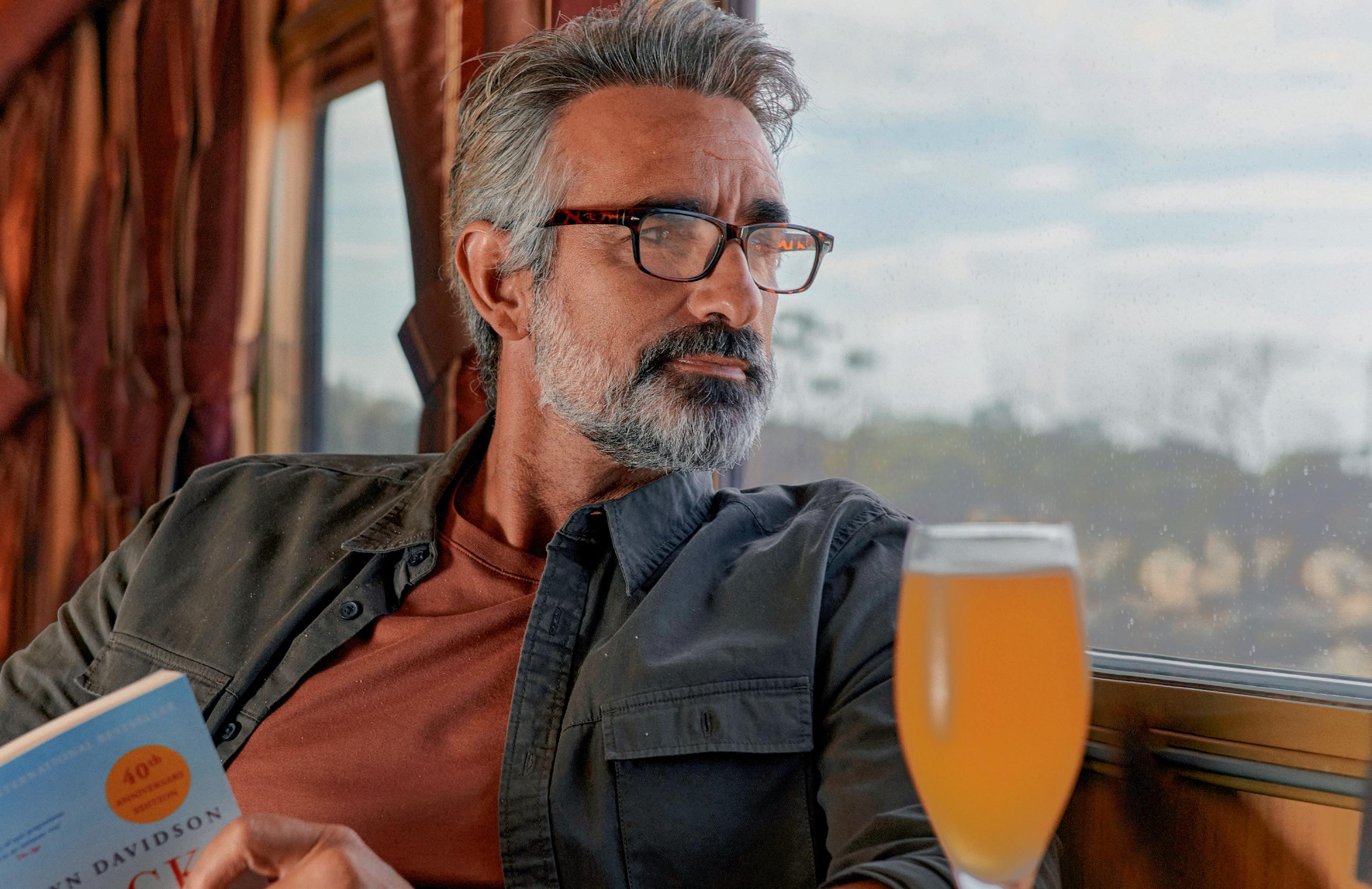
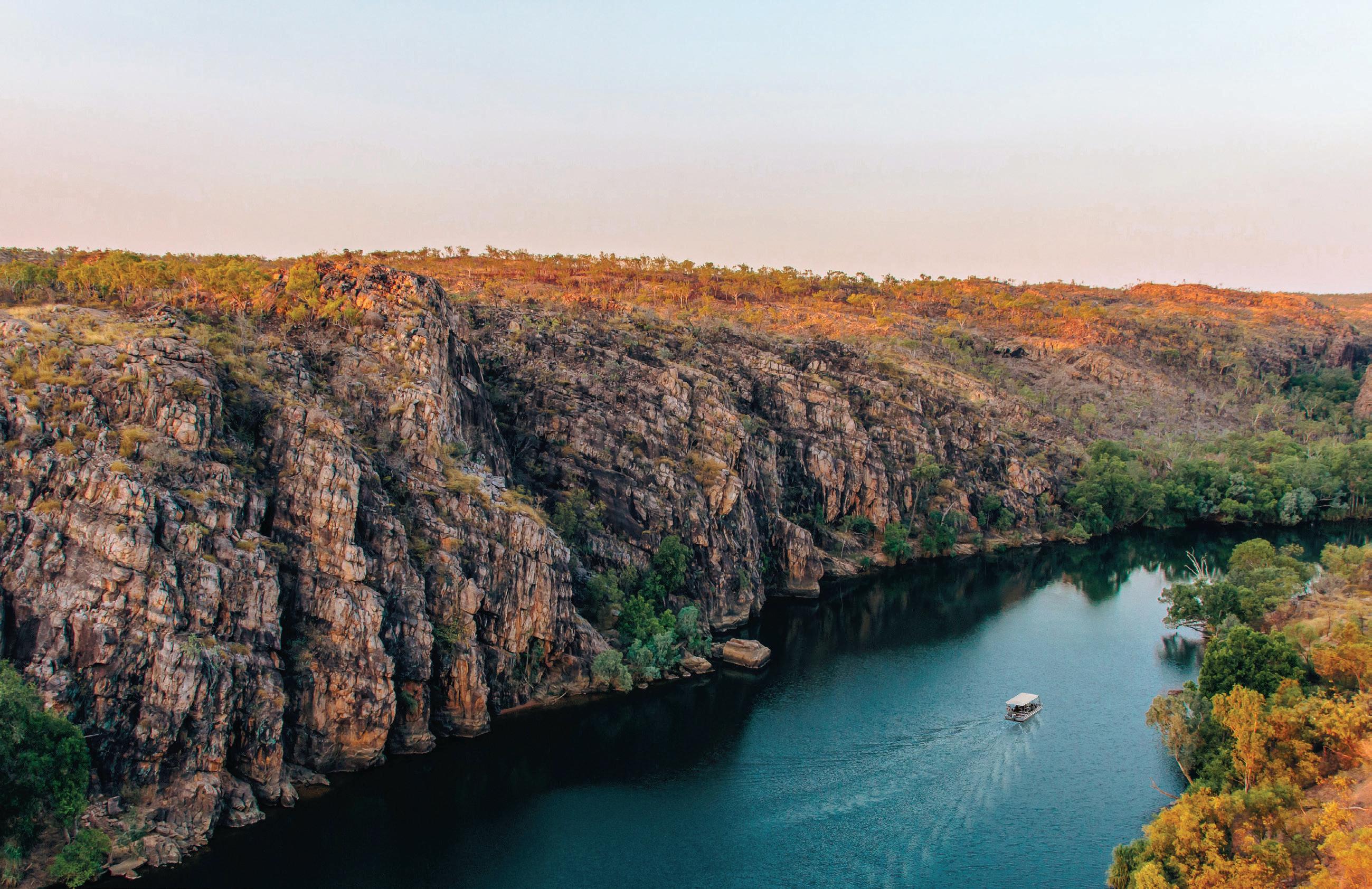
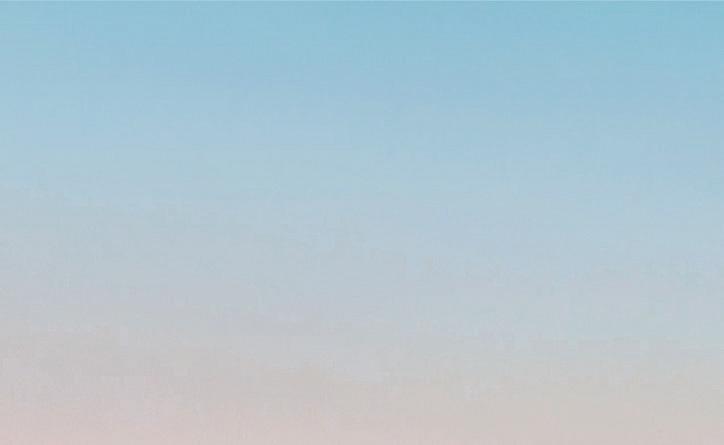

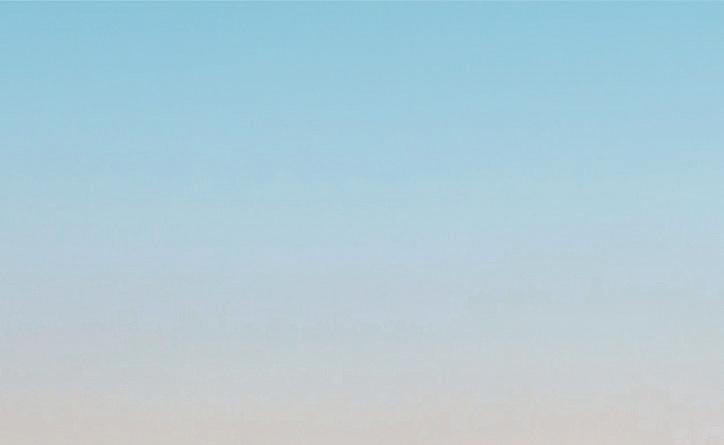

I’ve been to two very different restaurants in the past month. Ogee (ogeehobart.com.au) is a 28-seat eatery in North Hobart. When Matt Breen (ex Sonny and Templo) scouted for a location, he chose a corner shopfront opposite the Crescent Hotel (which also does a cracking dinner). Despite the great location, it had been one of those doomed restaurant sites, where nothing seemed to stick. But since Ogee (named for an architectural curve) opened last year, it’s been constantly packed. Why? Because it’s the neighbourhood restaurant you dream of having around the corner.
You can drop in for a drink and a snack or order the whole menu (as we did). The food is on-trend (sourdough with sea urchin butter; raw beef with pommes dauphine) but never faddish. The wine list is full of Tassie drops, as it should be.
Then there’s Whalebridge (whalebridge.com.au), a French bistro that’s smack bang in Circular Quay. This is one of the best spots in Sydney – next to the Opera House and opposite the Harbour Bridge – but expectations in what is traditionally tourist central are low. With those views, how can the food even compete?
But co-owners James Wicks and Brett Sergeant are up to the challenge. They’ve hired David Clarke (ex Quay) as culinary director and are dishing up lobster rolls, confit duck and steak frites alongside a global wine list and my all-time favourite champagne (Gosset!). Ogee and Whalebridge may be completely different restaurants but they are both destination diners. Great restaurants take you places, whether you’re after a low-key vibe or want to soak up all the action.
Our travel experiences are always enhanced by our dining experiences. It’s why we create so much food and drink content every month and why we’ve done this special issue. Salut!
Kirsten Galliott Editor-in-Chiefkirstengalliott
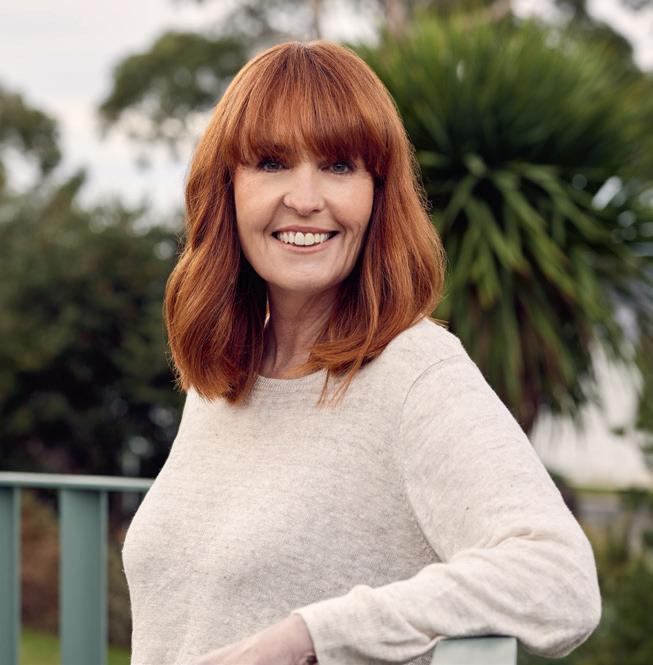
Our writers are not armchair travellers. Rest assured any assistance we accept from the travel industry in the course of preparing our stories does not compromise the integrity of our coverage.


Deep dives into crystal-clear waters, powder-white sands and luxury accommodation – such as the five-star Tavanipupu Wellness & Spa Retreat on Marau Sound in the Solomon Islands – are now within your grasp. Starting on 29 October, Qantas is introducing a brand-new route from Brisbane direct to Honiara, the capital of the Solomons.
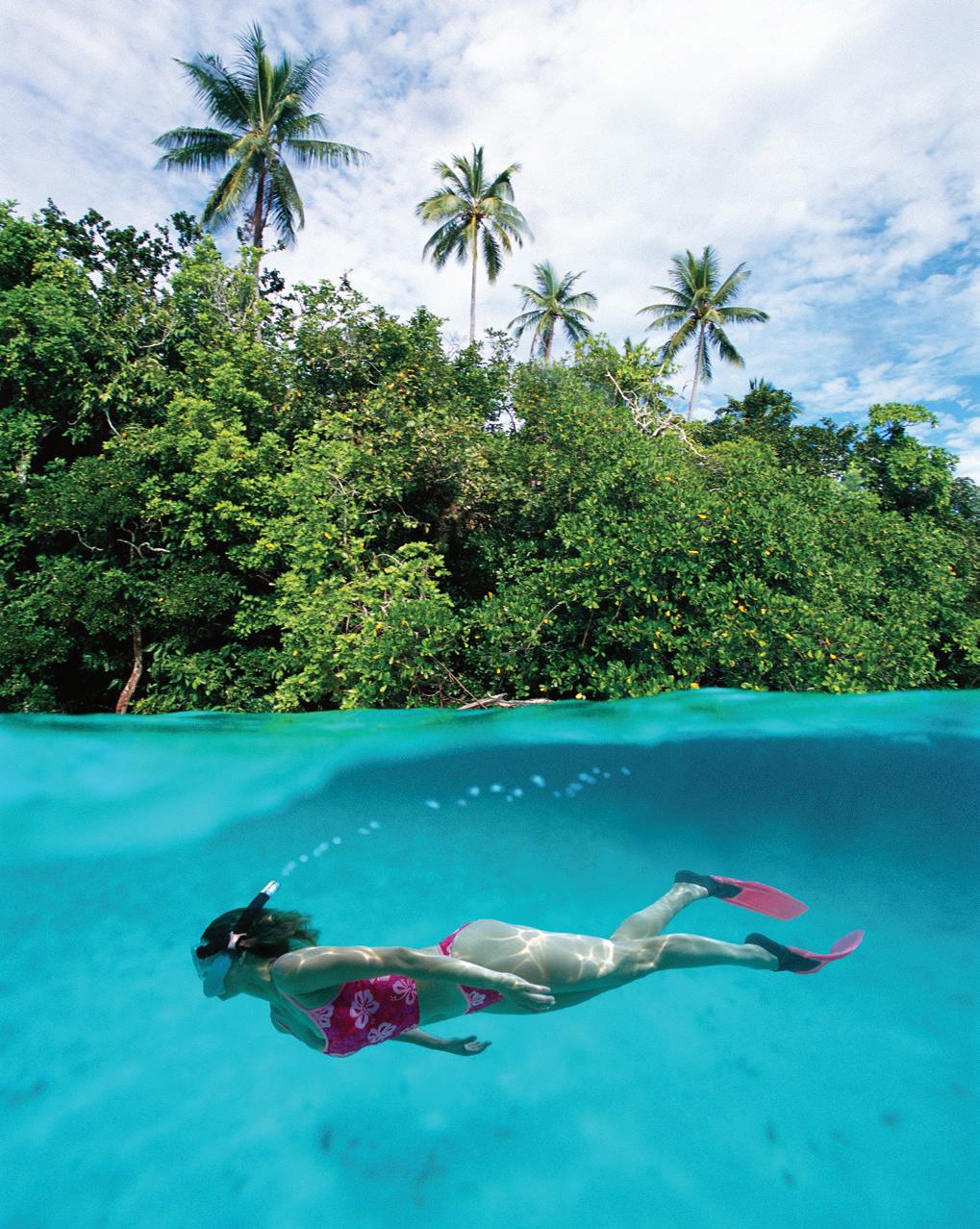
And from late October, Qantas will operate daily A330 flights from Sydney to Shanghai for the first time in three years. So whether you fancy a Michelin-starred dinner at Jardin de Jade or a ride at Disneyland, Shanghai is ready to welcome you.
The Qantas Group has removed the expiry date on COVID travel credits issued for bookings made on or before 30 September 2021 that were due to run out at the end of this year. If you have a Qantas COVID credit, you can request a cash refund at any point in the future. To request a refund or to use your travel credit, follow these steps.
1. Use the Find My Credit tool on qantas.com
2. To request a refund, call 1300 668 885
3. To use your Qantas COVID credit, visit qantas.com/ travelcredit for specific advice based on the type of Qantas COVID credit (most credits can be used online at qantas.com). You must book by 31 December 2023.
If you need further help, speak to our Travel Credit Concierge team on 1300 171 505. If your original booking was made through a travel agent or third-party website, contact them directly. If you’ve already booked travel with a Qantas COVID credit voucher, you don’t need to do anything and there’s no change to your trip.
Once onboard, connect your own device to Qantas Free Wi-Fi on domestic flights in three simple steps:
Enable Aeroplane Mode and select the “Qantas Free Wi-Fi” network in your Wi-Fi settings.
Follow the prompts on the “Welcome Onboard” screen to connect.
Once you’re connected, you’re ready to access the internet and start exploring.
Having trouble connecting? Make sure you’re connected to the “Qantas Free Wi-Fi” network and go to wifi.qantas.com in your preferred browser to start the connection process. To ensure an enjoyable flight for everyone, keep flight mode activated, switch your device to silent and refrain from voice and video calls
We acknowledge the Traditional Custodians of the land on which we work, live and fly. We pay our respects to Elders past and present and are committed to honouring Australian Aboriginal and Torres Strait Islander peoples’ unique cultural and spiritual relationship to the land, water and sky.
qantas.com
Qantas Reservations 13 13 13
Qantas Holidays Ltd 13 14 15 (ABN 24 003 836 459; Licence No. 2TA003004)
Qantas Club and Frequent Flyer Service Centre 13 11 31
From overseas +61 3 9658 5302

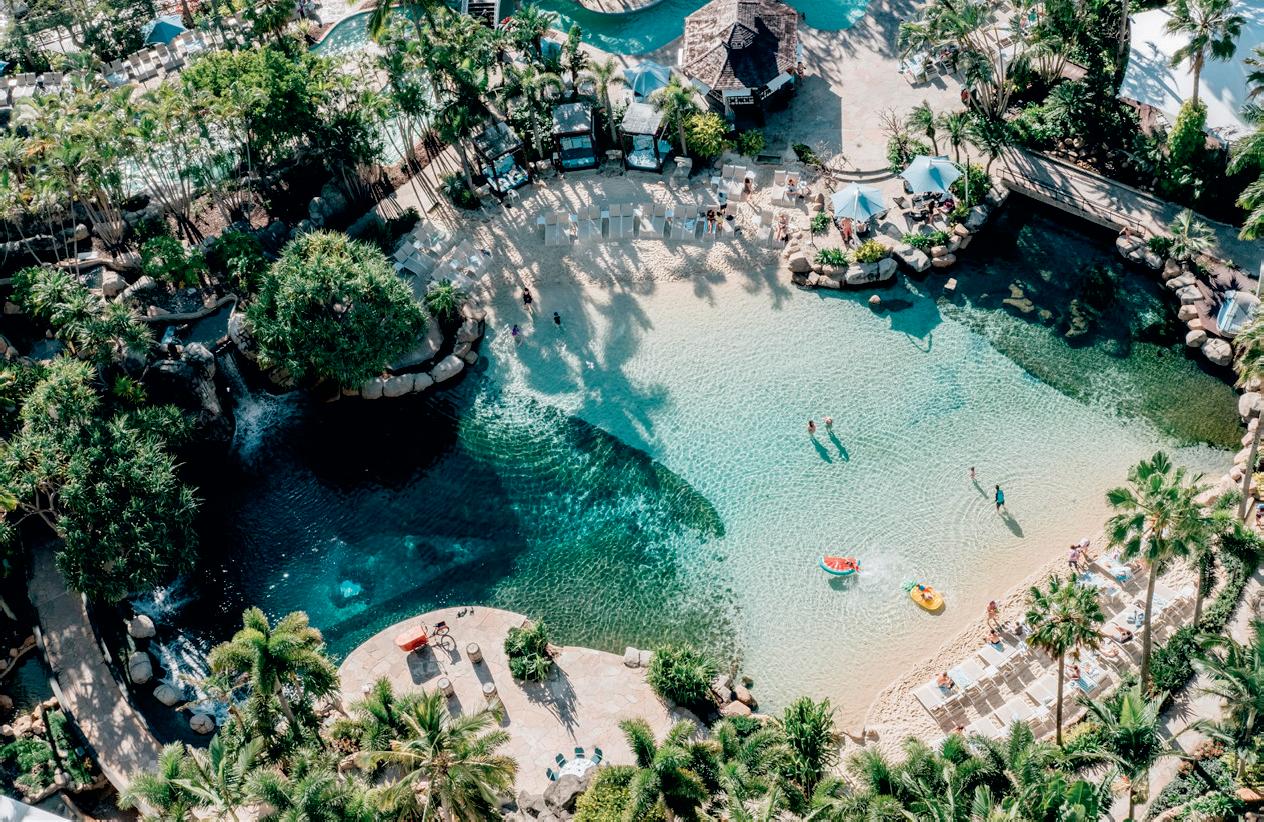
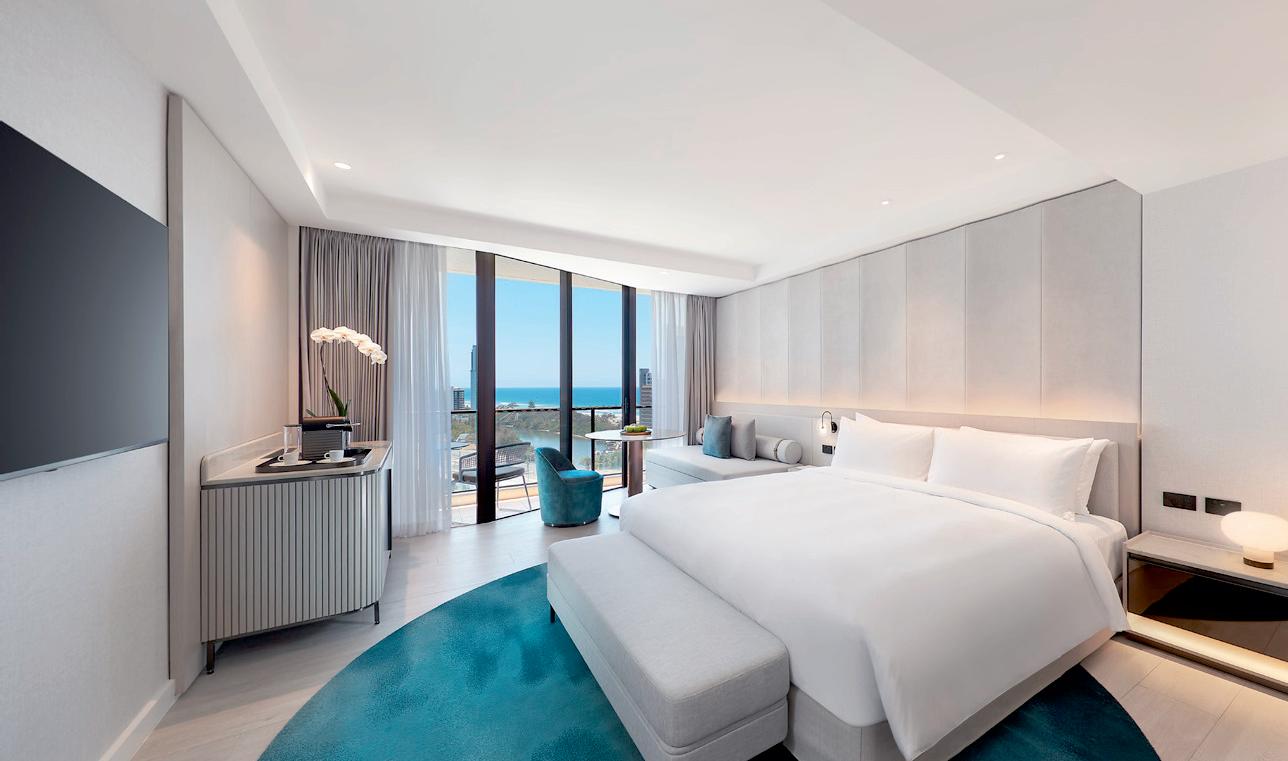


Dinner with fire dancers, swimming with whales and crystal-clear water everywhere you look. Here, three Qantas travellers share highlights from their recent trips.
Bronze Frequent Flyer
“Swimming with whales in Vava’u, Tonga, was a bucket-list holiday. My partner and I spent five days in the water; you’d just put on your snorkel, kick out, look down and the whales were right there. It wasn’t uncommon for people in our group to return to the boat in tears because of how powerful the experience was. The most incredible moment was seeing the humpbacks resting with their newborns. It was beautiful.”
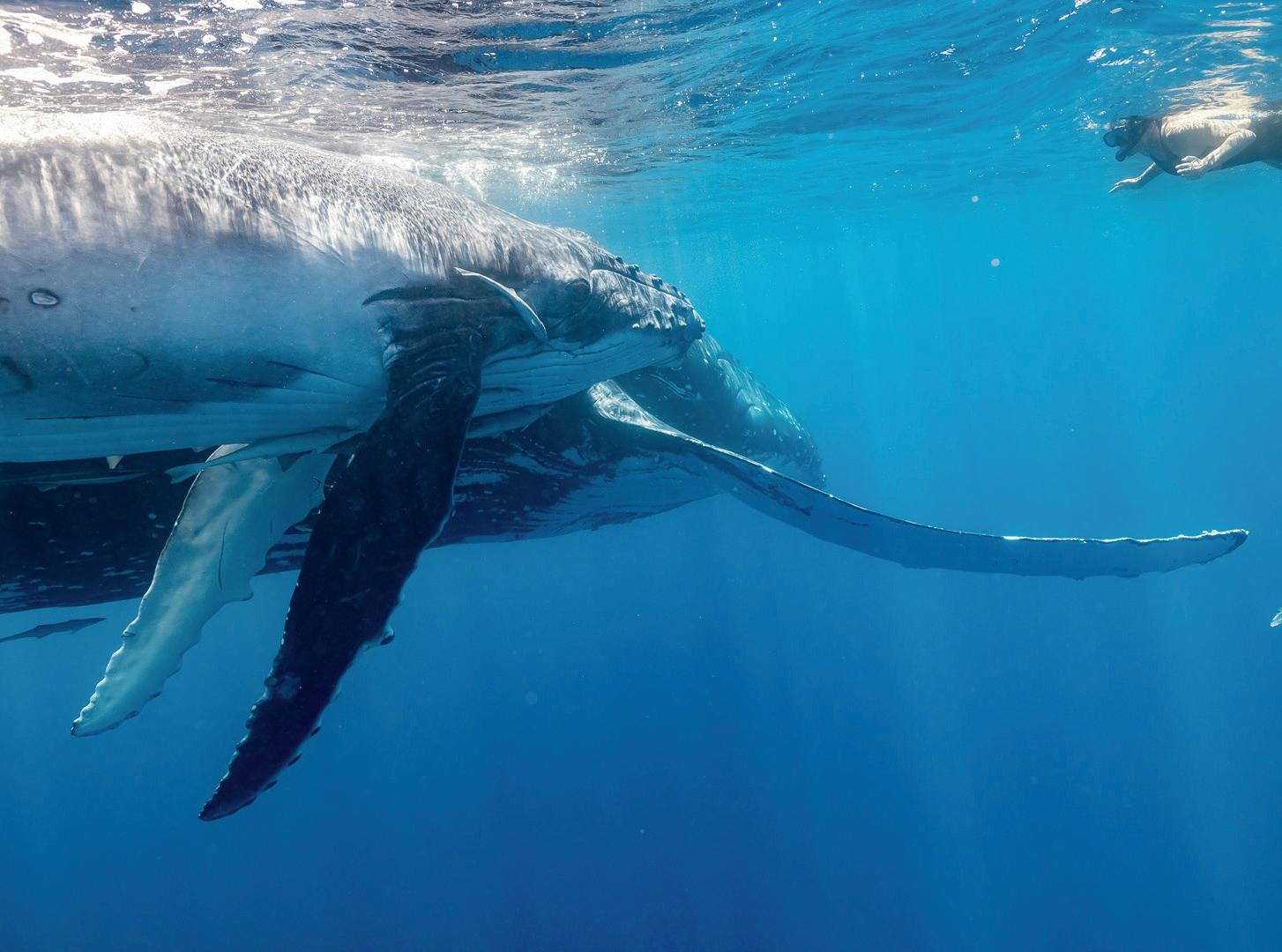
SAMOA

Bronze Frequent Flyer
Fly
Bronze Frequent Flyer
“My best friend and I booked a Qantas Holidays Package to New Caledonia for my birthday. The flights and hotel were included so it made organising the trip so easy. We visited Signal Island, where you travel by water taxi and take your own food, drinks and snorkelling gear. There’s just endless sand and iridescent blue water – I saw turtles and a baby shark. In Noumea, book a table at French restaurant Marmite et Tire-Bouchon (marmiteettirebouchon.nc). It’s often booked out in advance but you won’t want to miss out on the mangrove crab, fish gratin and yellowfin tuna. They were delicious.”
“I went to Samoa to celebrate a friend’s 40th birthday. We flew Qantas –the crew were lovely – and stayed in a villa overlooking the water at Return to Paradise Resort & Spa (qantas.com/hotels/returntoparadise) on the main island, Upolu. Each night they put on a special dinner, one of which included fire dancers. I loved visiting To Sua Trench; you have to climb down a steep ladder to reach the water but it’s so worth it when you look up to see the circle of blue sky above. When people tell me they want to go on a holiday, I say, ‘Go to Samoa! It’s paradise.’”


The Artisan Series consists of 50 one-of-a-kind pieces to commemorate each year of Linneys’ storied history. Hand-crafted using incredibly rare Argyle pink diamonds, this collection celebrates the unique natural beauty of WA’s most prized gems. Each piece not only offers the owner an item of exceptional rarity and value, but also the privilege of becoming the custodian of one of nature’s most exquisite gifts.
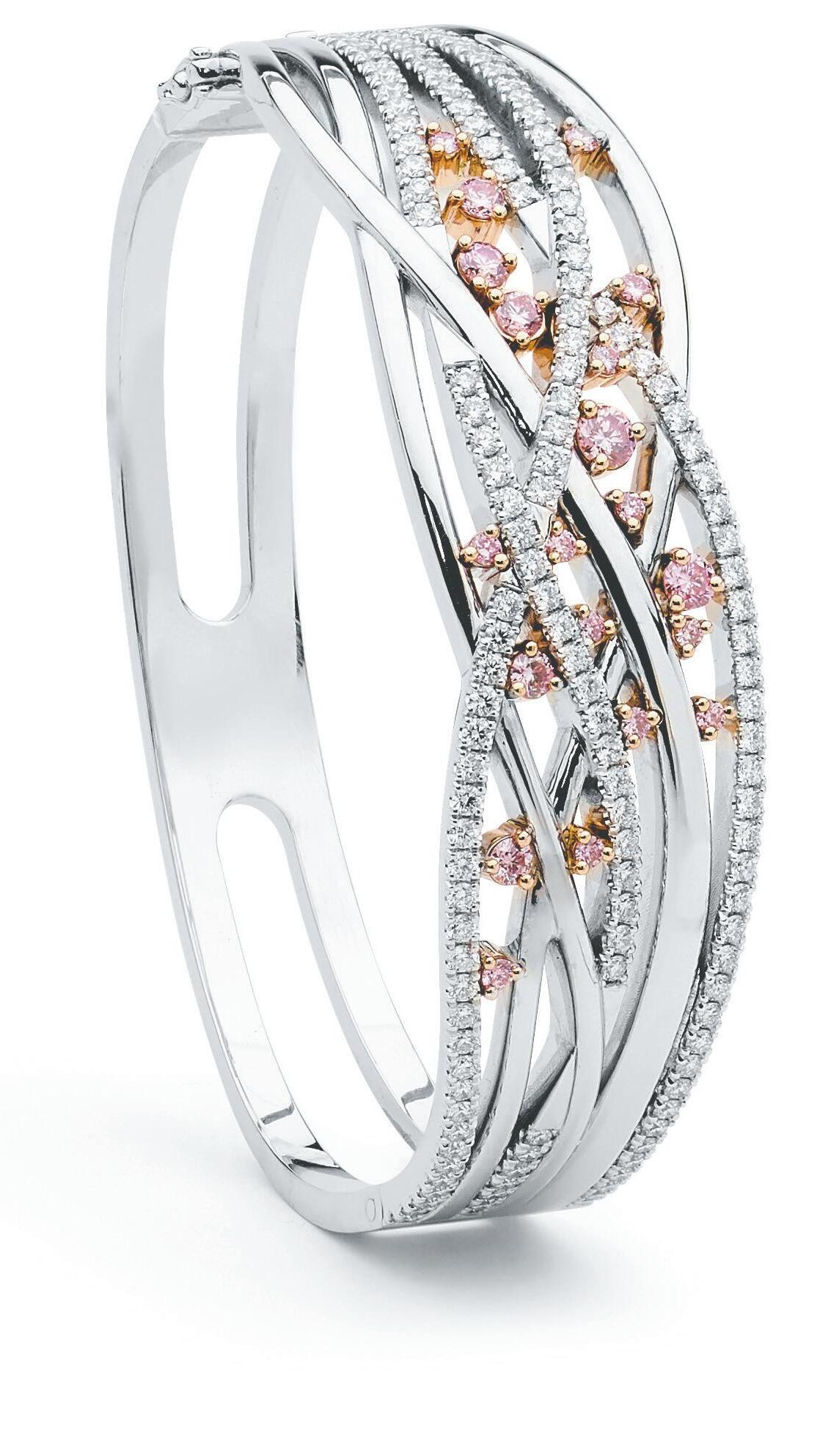

“Achieving excellence requires dedication. I’m proud of the hard work I’ve put in over the years and the relationships I’ve built.
Which is why it’s an honour to partner with a company that continually strives for excellence. LSH Auto Australia is dedicated to building trust. It’s the place for all your premium motoring needs, where the goal is to deliver an exceptional customer experience.”
Australia’s leading Mercedes-Benz retail group YOU

 Mercedes-Benz Sydney | Mercedes-Benz Melbourne | Mercedes-Benz Brisbane | AMG Sydney | Mercedes-Benz Melbourne Airport
Mercedes-Benz Sydney | Mercedes-Benz Melbourne | Mercedes-Benz Brisbane | AMG Sydney | Mercedes-Benz Melbourne Airport
In association with
Qantas magazine and Travel Insider welcome you to Think., a thought-leadership reader event in association with LSH Auto Australia. You’ll enjoy dinner as Australia’s top business leaders tackle the night’s theme in a live panel discussion, which is hosted by Editor-in-Chief Kirsten Galliott.
THE TOPIC
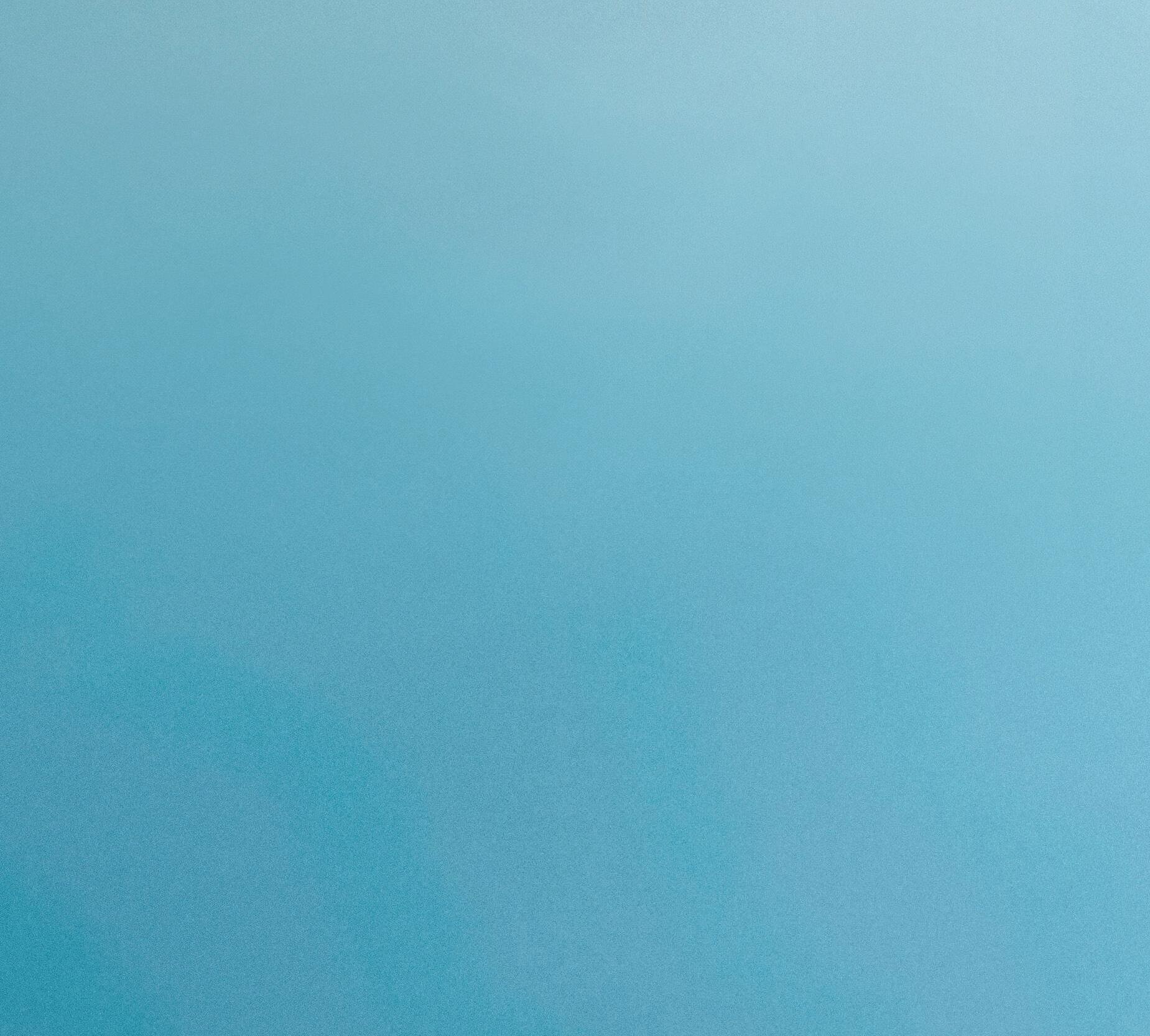
Dr Larry Marshall, scientist, technology innovator and business leader
The former CEO of CSIRO and author of Invention to Innovation is also a director of Fortescue Metals Group.

Jan Owen AM, principal, AdaptabilityQ

The one-time CEO of The Foundation for Young Australians is co-founder of AdaptabilityQ and advises businesses on social change.
Deborah Yates, global chief people officer, Lendlease Responsible for 7600 staff, this CPO aims to create “a culture that enables us to disrupt ourselves to be ready for the rapidly changing future”.

LOCATION
Cutler & Co.
55-57 Gertrude Street, Fitzroy, Melbourne
DATE AND TIME
Monday, 13 November 2023, at 6.30pm
PLACES ARE LIMITED
$200 per person, which includes a four-course menu with matching wine
Reserve your seat before the event sells out. Book now at thinkbyqantasmagazine.eventbrite.com.au or enquire at rsvp@mediumrarecontent.com

Join the brightest minds in Australian business as you enjoy an exclusive experience at one of Melbourne’s hottest restaurants, Cutler & Co.
Nestled in Queenstown’s elemental splendour, the exclusive waterside community of Lake Tewa is taking shape beneath the Remarkables, at Jack’s Point. This idyllic waterside village features eight figurehead villas perched on Lake Tewa’s placid shores, each secluded sanctuary with its own private water access. Nearby, innovatively concepted alpine residences cluster amongst parks and gardens. Designed by internationally awarded architects this waterside concept also ensconces boutique Hotel Tewa, a destination unto itself with premium retail, dining, spa and wellness centre. All next to New Zealand’s premier golf course, best vineyards and ski fields.

+64 21 588 672
laketewa.nz
willie@falconer.nz
+64 21 24 47630
julia@falconer.nz
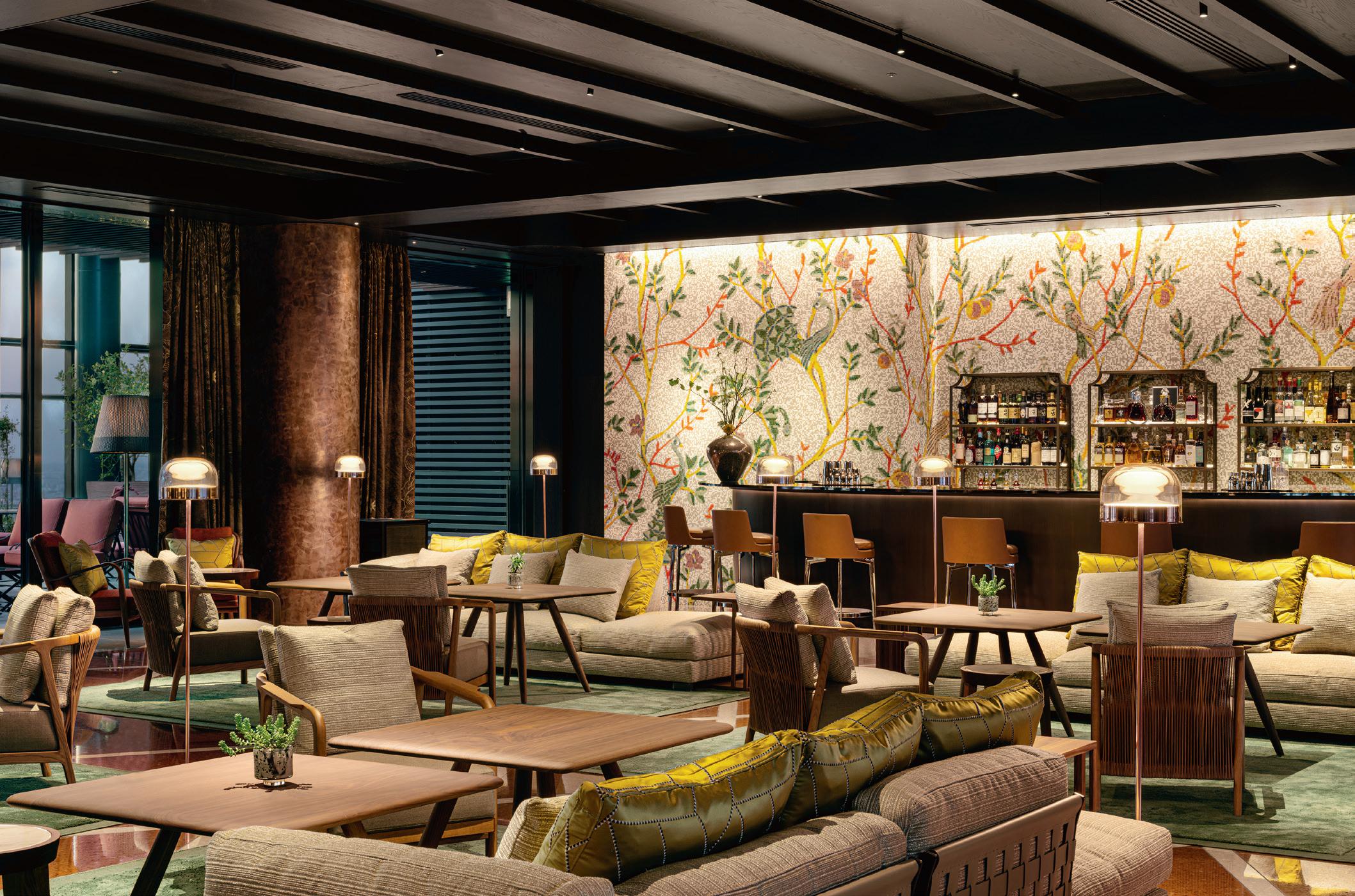 The Bulgari Bar, Bulgari Hotel Tokyo
The Bulgari Bar, Bulgari Hotel Tokyo
A much-missed Sydney favourite finds a new home north of the border. Story by
Alexandra CarltonThere are some restaurants that acquire legendary status not because they’re the fanciest or most extravagant but because they speak so fluently of a time and place. Sydney’s lively but laid-back Longrain, which served its final betel-leaf-wrapped confit salmon in 2019, is one of them. Most Sydneysiders and many visitors to the city have a Longrain memory: breezy lunches inside the converted warehouse in Surry Hills as the sun streaked in through the vintage windows or sexy cocktails and snacks at the bar at night, the latter often so spicy that you needed to order more of the former.
Now Longrain’s founding executive chef, Martin Boetz (below), is bringing his power-packed Thai-style cooking to his hometown of Brisbane, with the opening of Shortgrain (shortgrain.com.au), a roughly 60-seat eatery and providore in Fortitude Valley. Fans of the original should be pleased with the synergies between the new digs and the old, from the heritage building to the food. “A few classics are coming back, like my signature curries and salads,” says Boetz, along with slam-dunk future classics such as pork fat pastry tarts with duck egg caramel custard and turmeric wafers filled with caramelised pork, prawns, lemongrass and lime leaves (which will spark memories for anyone who ever tried Boetz’s beloved eggnet dish).

On the drinks front there’s a short cocktail list, international wines and a house gewürztraminer and shiraz from Victorian winemaker Delatite. Plus, there’s a shop that sits inside Shortgrain’s entrance – if you don’t feel like pulling up a chair, you can buy pre-made curries, condiments such as Fermentary pickles and Rōnin kelp soy sauce and even fresh produce to recreate a little bit of the Boetz magic at home.
Sydney’s loss is Brisbane’s gain.

The George On Collins restaurant in Melbourne, helps create the menus at American Express’s Centurion Lounge and has more than 200,000 followers on Instagram. Here’s what he does when he’s not cooking. As told to Natalie Reilly

The TV series
I’m watching…
I’m bingeing this show called From. It’s a dark, dystopian series set in a small town in America. It’s from the producers of Lost and has Harold Perrineau, who played Michael Dawson in Lost, in it as the main character. I found Lost really confusing after the first series – it just sort of fell off a cliff – but I’m enjoying the evolution of the characters in this and it has just enough horror to get me through. I’m a massive fan of the horror genre and I like thrillers, too.
The last movie I watched….
Avatar: The Way of Water
The story was really beautiful but it went on for about four hours – that’s just too long! At the two-hour mark I was like, “I can’t believe I’m still here! How much longer is this going to go on for?”
The podcast I love…
I’m obsessed with the one from Shameless Media called Scandal. Every week they analyse a new scandal from pop culture and I always learn something. I love how much analysis they go into and their
reporting is so in-depth. The last one I listened to was about YouTubers Jake and Logan Paul. Logan was banned from YouTube in 2018 after he uploaded some disturbing videos. Jake was more into uploading his music. Now they’re both into amateur boxing. It’s been a ride!
The apps I use the most are…
For me, Instagram is more about following my friends but TikTok is more about following random people I don’t know. But I follow a guy called @mckgaston on Instagram. He’s American and talks about plants in this voice that sounds exactly like Gaston, the cartoon character from The Beauty and The Beast He’s funny and his content is engaging so I learn a lot. I love plants; I’m obsessed with them. Outside of cooking, they’re my biggest passion. They’re the source of so much food so I enjoy finding out the origins of what I’m cooking and where each ingredient comes from.
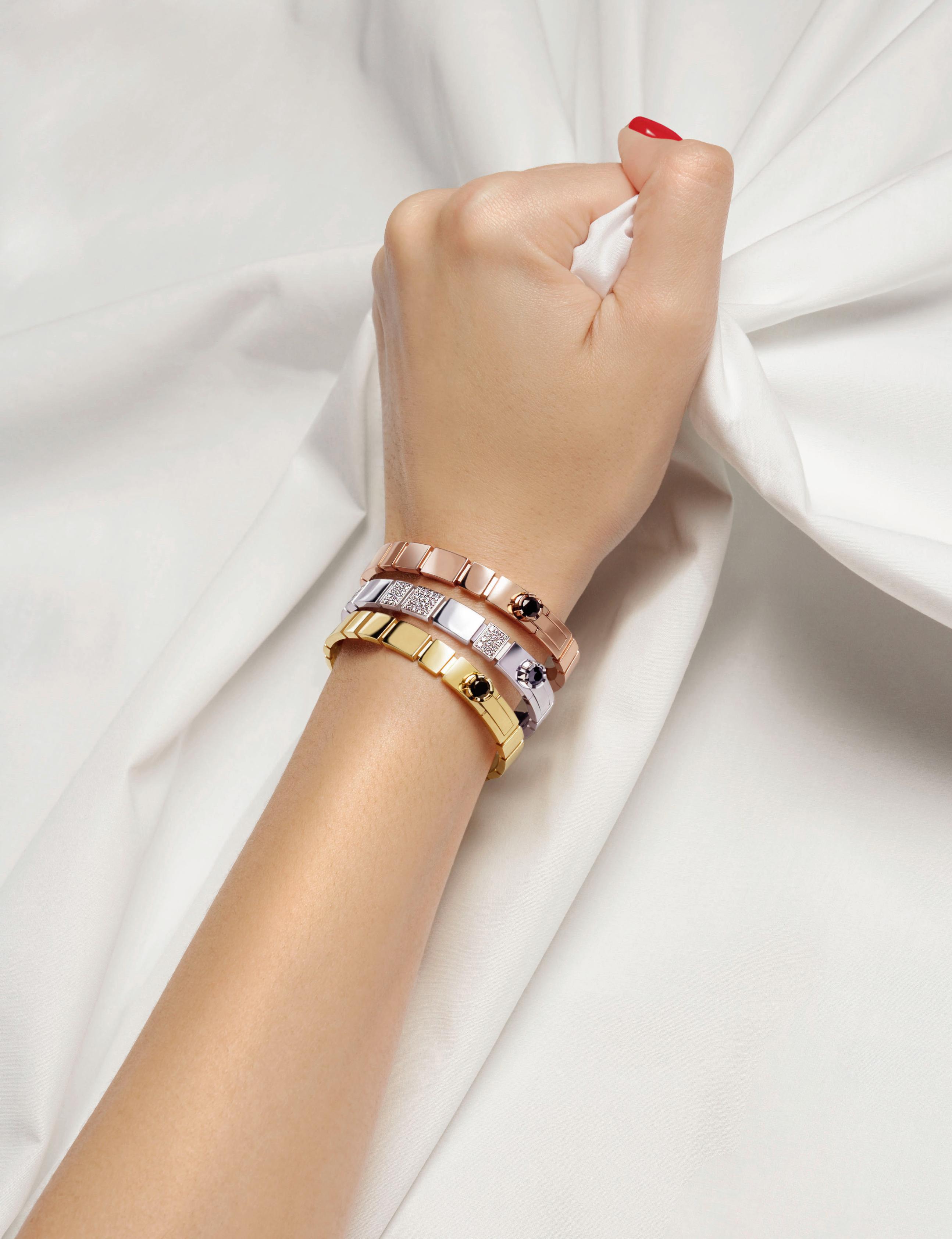

Compiled by Natalie Reilly
Movie
How many times can you say “Oscar winner”? If you’re watching Killers of the Flower Moon, directed by Martin Scorsese and starring Robert De Niro, Leonardo DiCaprio and newcomer Lily Gladstone (above with DiCaprio) with a plot about FBI cover-ups, the answer might be, “How many Oscars you got?” Based on a true story, the film follows a white man (DiCaprio) married to an Osage woman (Gladstone) in 1920s Oklahoma. When members of her family are murdered, the FBI is sent in to investigate.
In cinemas 19 October.
In the tradition of Dopesick (about Big Pharma and the opioid epidemic in the United States) and pyramid scheme series like On Becoming a God in Central Florida comes Pain Hustlers, the story of Liza Drake (Emily Blunt), an unemployed single mum who bites off more than she can chew after pharma rep Pete Brenner (Chris Evans) offers her a job selling pills. With Andy Garcia and Catherine O’Hara (Schitt’s Creek). On Netflix 27 October.
Chef Mat Lindsay, who started his career working with Neil Perry and Kylie Kwong, became a Sydney food celebrity when he opened Ester in Chippendale

10 years ago. Now, for the first time, he’s released a collection of the recipes that made the famous restaurant a stand-out, with a few surprises thrown in. Ester is a book so beautiful you won’t know whether to cook from it or display it. In stores 3 October.
Another glamorous Italian fashion house is taking on beauty. Prada, which signed a long-term agreement with L’Oréal in 2021, has launched an assortment of bold lipsticks, sheer foundations, eyeshadows in those classic bold Prada colours of saffron and sunny yellow – and even skincare. It’s not the first time Signora Miuccia Prada has dabbled in
cosmetics; the designer has always made fragrances and there was a short flirtation with skincare in 2000. Now, more than two decades later, there’s a swathe of improvements, including an ingredient called Adapto.gn Smart Technology™, which claims to reinforce and renew skin (prada-beauty.com).
Can’t cook? Won’t cook? Don’t worry, the Tokit Omni Cook Basic Bundle can do it all. Its 21 different functions include blender, juicer, shredder, rice cooker, kneading machine, fermenter, electric steamer, electronic scale and wok. Launched in Australia in August, it’s now available at tokitaustralia.com for $1499.
Don’t miss this collection of Egyptian artefacts showing in Australia for the first – and last – time. Story by Bek Day

“Even though Ramses II died more than 3000 years ago, his significance is sprinkled throughout history,” says Fran Dorey, head of exhibitions at the Australian Museum (australian.museum) in Sydney. “He was king during the Exodus and at the Battle of Kadesh, he signed the first peace treaty ever recorded.”
And while visitors to Ramses & the Gold of the Pharaohs exhibition (opening on 18 November) will miss out on seeing that piece of history, Dorey, a passionate ancient historian, is confident that the more than 180 treasures coming here are worthy of the largest cultural exhibition to visit Australia in more than a decade. “You can see some of these items in textbooks but standing in front of them, it’s an experience unlike any other –a once-in-a-lifetime opportunity.”
From gold diadems unearthed in the tombs of 12th-dynasty princesses to ancient bows and arrows and even a virtual-reality journey through Queen Nefertari’s tomb in the Valley of the Queens, the eye-wateringly valuable exhibit (about $3.7 billion) is the most expensive the museum has ever hosted. The pieces, displayed in collaboration with the Egyptian government, are only being shown in 10 venues around the world – and nowhere else in Australia –before they return home permanently.
Half a million people are expected to visit the exhibition at the Australian Museum and Dorey’s advice is to take your time. “Stay for at least a couple of hours and let it all soak in. You’ll be grateful you did.”

A molto Italian hotel in the crazy chaos of Tokyo? Yes, please. Towering over the commercial district of Chiyoda, a 10-minute stroll north of Ginza, Bulgari Hotel Tokyo (qantas.com/hotels/bulgaritokyo) celebrates its Italian heritage in style. There’s a sparkling mosaic of blue-and-green peacocks behind the rooftop bar on the 45th floor; the pool gleams with Venetian glass tiles; and sketches of the brand’s colourful jewellery adorn the walls.
The property’s 98 rooms and suites are just as fabulous. Step out of the lift on the 40th floor and a sharply dressed concierge will whisk you through the lobby and straight to your suite for in-room check-in. There, linen pyjamas are waiting for you, Bulgari’s own line of floral-and-citrus-scented soaps sit by the taps and a plate of baci di dama (hazelnut cookies) make a sweet snack.
At on-site Il Ristorante, crowned by a cathedral-like ceiling and offering glittering city vistas, every ingredient is held to a high standard. “When it arrives from the farm, it looks like it’s come out of a spa,” says chef de cuisine Mauro Aloisio of the tender Hokkaido pork that’s served in caramel orange jus.
Whether you’re lounging on the terrace at the 45th-floor rooftop bar with a gin-andcitrus Bulgari cocktail in hand or swimming in the hotel’s 25-metre cabana-lined indoor pool (“It looks the best at sunset,” says one spa attendant), part of this property’s magic is that it quickly becomes your own oasis of calm amid the relentless rush of the Japanese capital.

 Story by Noelle Faulkner
Story by Noelle Faulkner
So what’s the deal? Koleos is Renault’s midsize SUV and the French brand’s most popular model in Australia. It was developed alongside the Nissan X-Trail so it shares many of the same bits and bobs but is a much more stylish buy. What powers it? Underneath the hood is a 2.5-litre 4-cylinder petrol engine, which can deliver 126kW/226Nm.
The Koleos is available in both front-wheeldrive and 4x4 options and the latter has hill-descent control as well. What’s special about this edition then? Only announced in June, the Koleos Iconic Edition is limited to 400 units and basically ups the ante on Koleos’s already formidable style stakes with small but meaningful elements, such as
sand or black nappa leather, luxurious front-seat heating and ventilation, massage seats, a very cool amethyst-black metallic paint option (exclusive to this model), French flag badging and a unique design for the 19-inch alloy wheels. Why choose this over other midsize SUVs? The midsize segment is one of the most bloated in Australia. But Renault gets a few things right. For starters, the styling of the Koleos is sophisticated and sumptuous so it feels more elevated than its competitors. Then there’s Renault’s 5-Year Easy Life ownership program, which entitles you to unlimited kilometre warranty, roadside assistance and capped price servicing (at $2750 over the term). Another thing worth noting: Renault is one of the few brands in the country that doesn’t have crazy waiting lists. How much? From $48,990 drive away. renault.com.au
This limited-edition SUV is for those who want something a little different.



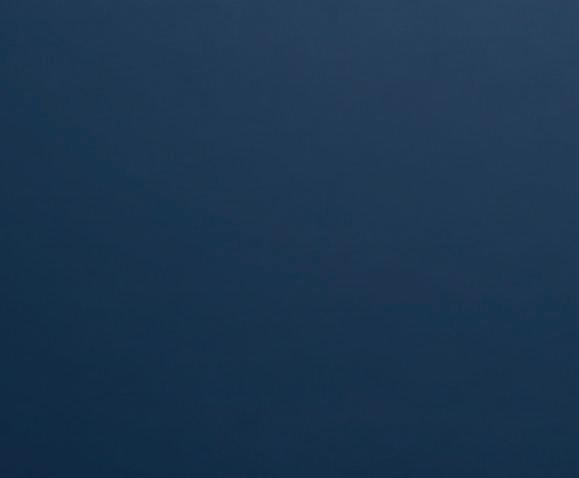




From the latest novels to essential reads, these are our page-turning picks.
Story by Michael WilliamsThe book everyone is reading
If you’re already hooked on The Thursday Murder Club books by English comedian and TV star Richard Osman, you don’t need me to tell you the fourth in the series, The Last Devil to Die, is out this month. And if you’re not, then you have a real treat ahead of you. This series, which follows a bunch of senior citizen amateur sleuths

as they investigate murder and mayhem, is far funnier and more heartwarming than it has any business being – and with cracking crime plots as well.
The book you should be reading
The short stories in Laura Jean McKay’s Gunflower are weird and wonderful, just as you’d expect from the author of The Animals in That Country
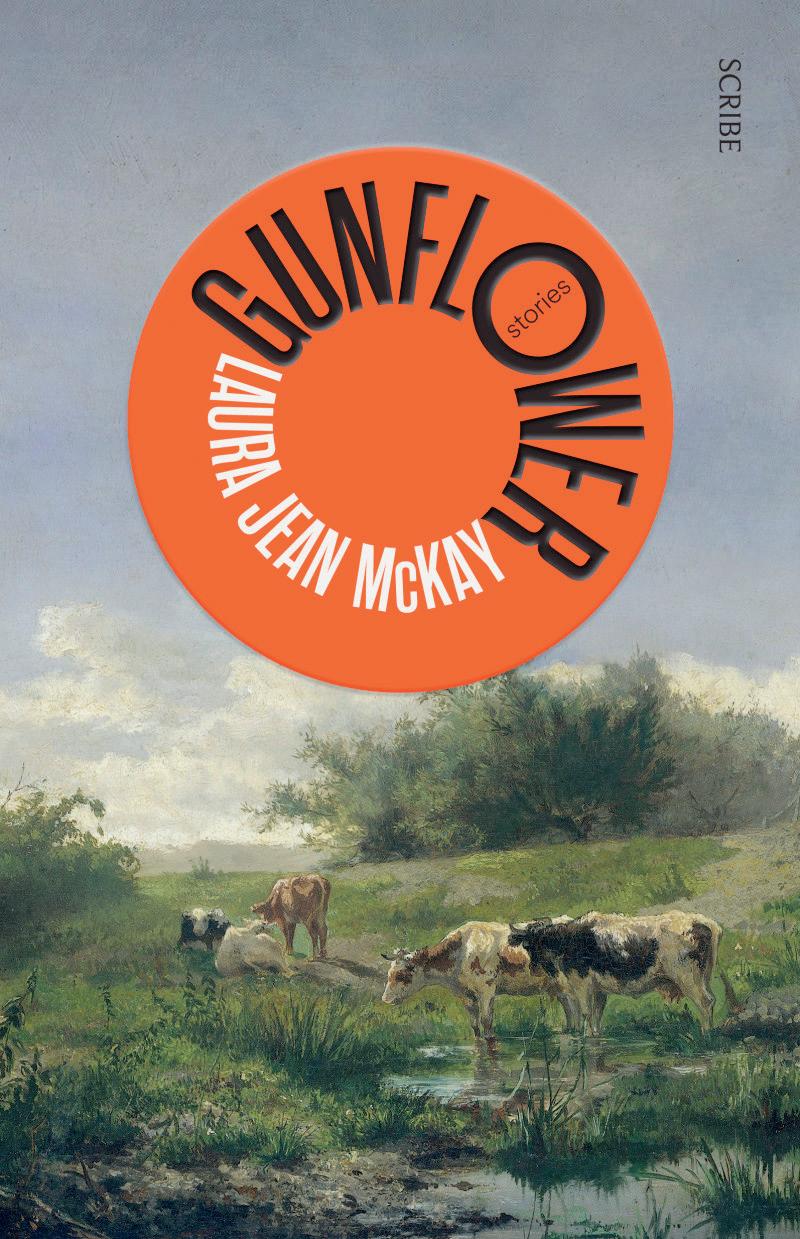
Some of the concerns of the earlier book are in its follow-up, with a similar dreamlike, even fabulist take on a world that’s familiar but with improbable and fantastical twists. Funny, creepy and addictive.
The non-fiction book to know about
The tagline for Robyn Davidson’s new memoir, Unfinished Woman, is “Writer. Explorer. Filmmaker. Legend.”
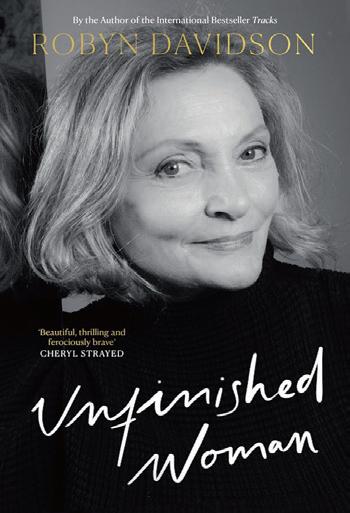
Taking in the scope of her travels and extraordinary career suggests that this might be an understatement. Ever since her bestseller, Tracks, she has been one of our most beloved writers and the joy from her adventurous life makes this book wonderful.
The Aussie book to read now
Madeleine Gray’s debut novel, Green Dot, follows a 24-year-old comment moderator

at a news website as she begins an affair that is doomed from the start. This book is funny, charming, deeply relatable and just so good.
The book to revisit This month, as Australia marks a historic referendum on a First Nations Voice to Parliament, Quarterly Essay 90: Voice of Reason – On Recognition and Renewal by celebrated scholar Professor Megan Davis considers all the constitutional, national and human implications of the vote. It’s an essential read for understanding the context and impact of this ongoing conversation.



We all know it feels good but can massage change the way your body looks? Story by Natalie Reilly
“We began by burying crystals in the earth,” says Jeannie Bourke, founder of Venustus (venustus.com.au). She’s walking me through the new holistic spa space in Sydney’s Paddington, which opened in June. “We then worked energetically up from the ground, choosing the most ancient material
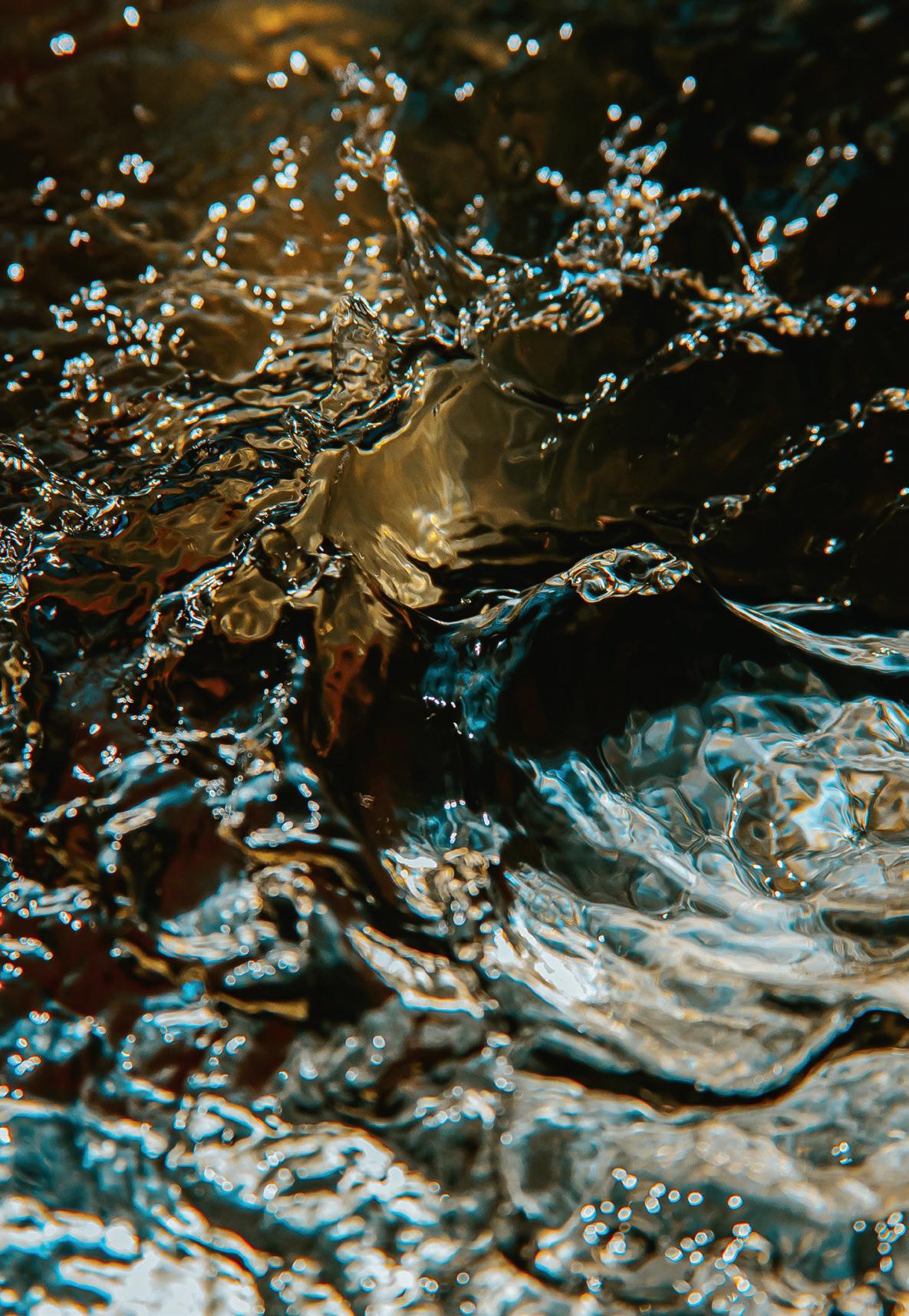
of all – metal – for our three-metre-high staircase. It works as a direct portal to the moon and sun.”

I’m trying to match her fizzy energy but, honestly, I just want to lie down in one of the four egg-shaped treatment pods, close my eyes and be massaged into oblivion.
“Your immune system is bruised and your energy is… anxious, drained,” senior masseuse Haruko tells me. She’s worked at Venustus for 20 years (it was previously located two doors down) and reads me in
a heartbeat. “Yes, my lymphatic system doesn’t work properly,” I tell her, spreading out my puffy fingers and lifting a swollen ankle. “I’m always carrying excess fluid.” She smiles and says, “So we’re going to go slow, gentle.”
Haruko begins by loudly inhaling and exhaling. Is this for my benefit or hers?
Intimidated, I inhale deeply and discover that I like it. “Breathwork,” Bourke tells me later, is “the process of deep rhythmic breathing that moves us out of fight or flight and into the parasympathetic nervous system”. That’s the “rest and digest” state to you and me and it beats being told to “relax”.
The soundtrack of crashing waves, chimes, light rain and birdsong floats over us while Haruko kneads my shoulders and I feel myself liquify. She switches up and begins gently rocking my hips.
“Rocking helps relax muscles, calm the nervous system, open up the joints and bring the body back into balance,” explains Bourke afterwards. “It also releases endorphins in the brain, which can reduce anxiety and tension.”
After what seems like hours – I can’t tell anymore – Haruko focuses on opening then draining my lymphatic system by gently pressing on my fingers, ankles, legs, chest and neck, basically wherever there are lymph nodes. After placing heated stones on my back in order to loosen contracted muscles, she swaddles me in linens and I feel reborn.
And then it’s over. I look at my de-puffed fingers and toned legs. A muted joy spreads over my body and – dare I name it? – a slight feeling of increased energy.
Taking my hand in hers, Bourke encourages me to drink lots of water and keep moving so those lymphs keep draining. Of course, I forget and feel hungover the next day. But that’s somehow validating, proof that whatever toxic sludge may have been stuck in my lymphatic system has finally been released.
Dine inside an aquarium and sip topnotch drops in Australia’s best wine regions. Your next great escape is calling – and you’ll find it at Qantas Hotels and Holidays.


Known for its excellent cabernet sauvignons and chardonnay, the Margaret River Region in Western Australia is the perfect destination for a long weekend. Visit the area’s oldest vineyard at Vasse Felix and stop by the family-run Leeuwin Estate to sample the 2015 Art Series Chardonnay. Bed down in a luxe villa at Pullman Bunker Bay Resort (left). Plan ahead and bundle your hotel and flights with Qantas Holidays to pack in more value – and earn 3 Qantas Points per $1 spent plus Status Credits on flights.
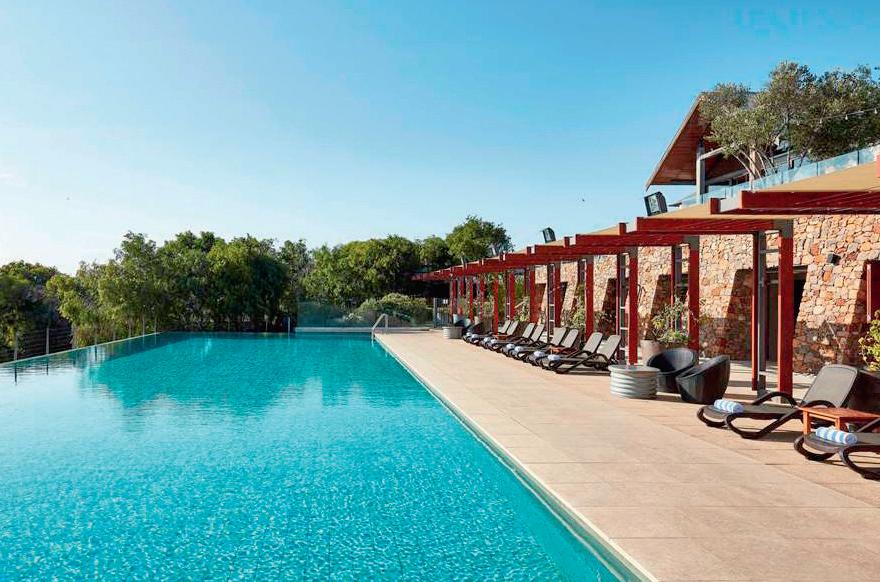
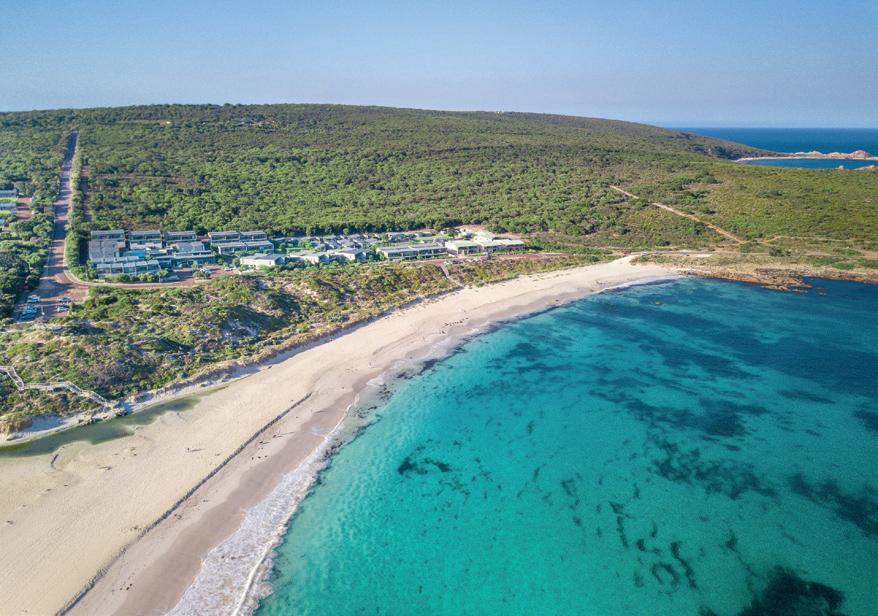
Farmer- and forager-driven menu Wildflower at COMO The Treasury, Perth (Boorloo)

Stay two nights for two people from 184,056 points1
Tables under an aquarium
Koral Restaurant at The Apurva Kempinski, Bali Stay two nights for two people from 137,446 points1
Whether you’re after a fun-filled city break, a relaxing country escape or a chic coastal retreat like Smiths Beach Resort (right) in Western Australia, your next holiday can come loaded with added value. Explore the latest limited-time Qantas Luxury Holiday offers today and your getaway could come with extras such as premium dining and beverage inclusions, room upgrades, late checkouts, spa treatments and more. Better yet, you can secure your stay with a 20% deposit. 2
Chef-hatted restaurant
La Madonna Restaurant at Next Hotel Melbourne
Stay two nights for two people from 90,232 points1
You can use Qantas Points to book an unforgettable holiday with Qantas Tours. Secure your spot on the Unlimited 5 Star Australian Wine Voyage, where you’ll sample wines from more than 200 local vineyards. Prices start from $2,849 or 284,900 points. 3 Visit tours.qantas.com
Born to fly, this classic makes the most of its functional good looks.
Story by Luke Benedictus
If you’ve ever taken a snap of your skilful barista’s latte art or pretended to hold the Eiffel Tower in the palm of your hand, you’ll probably have experienced vemödalen The word was coined just a decade ago to describe that hollow sense of frustration borne from photographing something truly amazing while also knowing that countless identical pictures of it already exist.
Thankfully, there’s no danger of that with this Santos de Cartier. The watch’s extraordinary blue dial is almost impossible to replicate. Achieved by applying a tinted layer of lacquer, the precise shade remains tantalisingly elusive with a gradient complexion that becomes inkier towards the edges, where it fades almost to black. Continually shifting as it catches the light, the hue strikes a lively contrast with the steel case, sword hands and Roman numerals.
The colour refreshes an iconic piece that Cartier describes as the “first modern watch meant to be worn on the wrist”. The model was initially released in 1904, after the Brazilian aviator Alberto Santos-Dumont complained to his friend, Louis Cartier, that it was dangerous having to fumble about for his pocket watch while flying. Yet the result looks different to what we expect from the pilot watches of today. The exposed screws on the 39.8-millimetre square case add a certain utilitarian bent while the 100-metre water resistance and date window bring a sense of functionality.
Ultimately, this is Cartier so there’s an inherent elegance at play. Powered by a mechanical movement, it’s a watch that happily resides in the delicate hinterland between casual and formal, helped along by a second bracelet in blue calfskin. It is, in short, a watch that refuses to be pinned down.

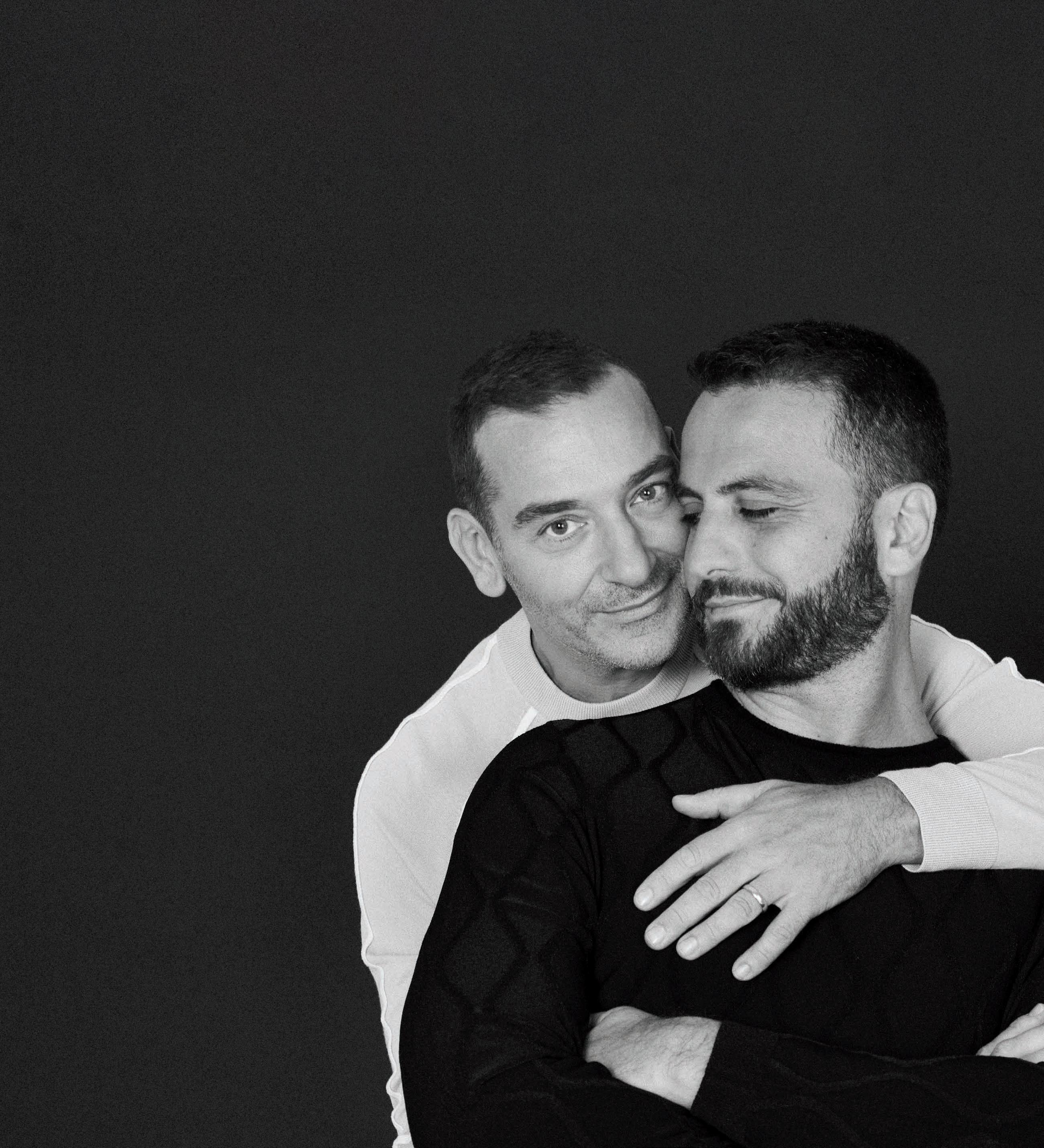 Beau Brummell Introductions founders Vinko Anthony and Andrea Zaza, photo by Sealeybrandt.com
Story by Bridget de Maine
Beau Brummell Introductions founders Vinko Anthony and Andrea Zaza, photo by Sealeybrandt.com
Story by Bridget de Maine
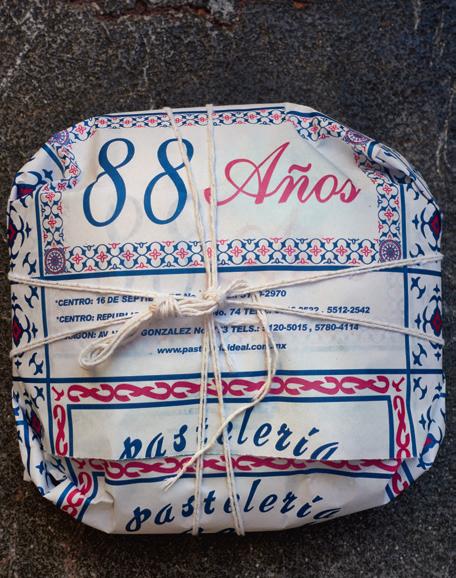 Photography by Con Poulos
Photography by Con Poulos
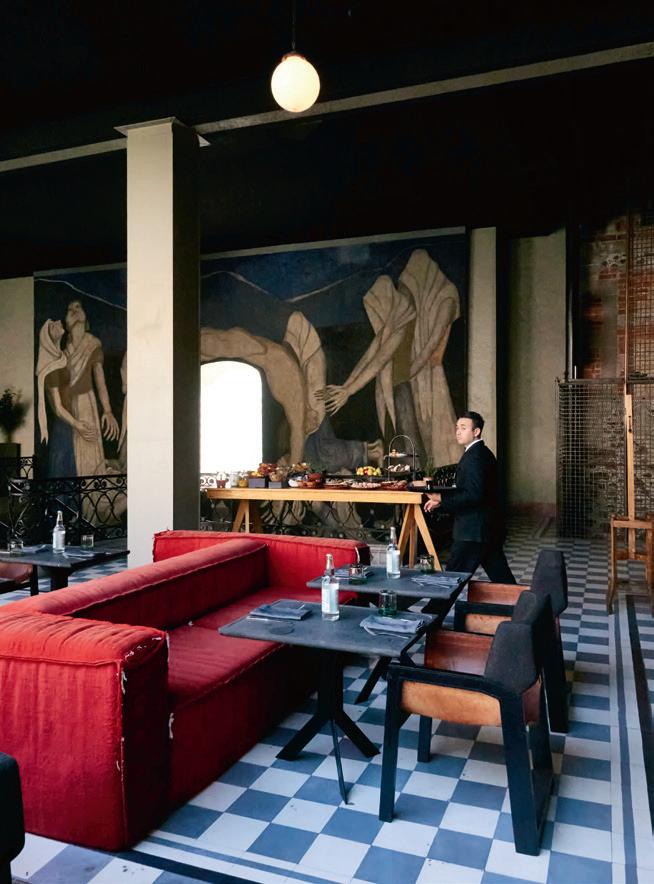
Nowhere can the extremes of Mexico City be felt more palpably than in its food scene. In CDMX (Ciudad de México), as it’s known to locals, you’re as likely to see a kitchen on the footpath as you are at the back of a restaurant. Your chef could be wielding tweezers in a fine-diner or might be someone’s abuela (grandmother). The flavours can be simple, like the creamy layering of full-cream milk, condensed milk and evaporated milk in the tres leches cake at Pastelería Ideal (above, left) or have a list of ingredients that’s as expansive as the city’s urban footprint. And while CDMX’s globally lauded chefs espouse the value of traditional recipes, street vendors toss Dorilocos – a bag of Doritos topped with anything from gummy bears to Mexican turnip and hot sauce. All of it sits side by side, part of the same vibrant kitchen. The only thing you’re unlikely to find is repetition.

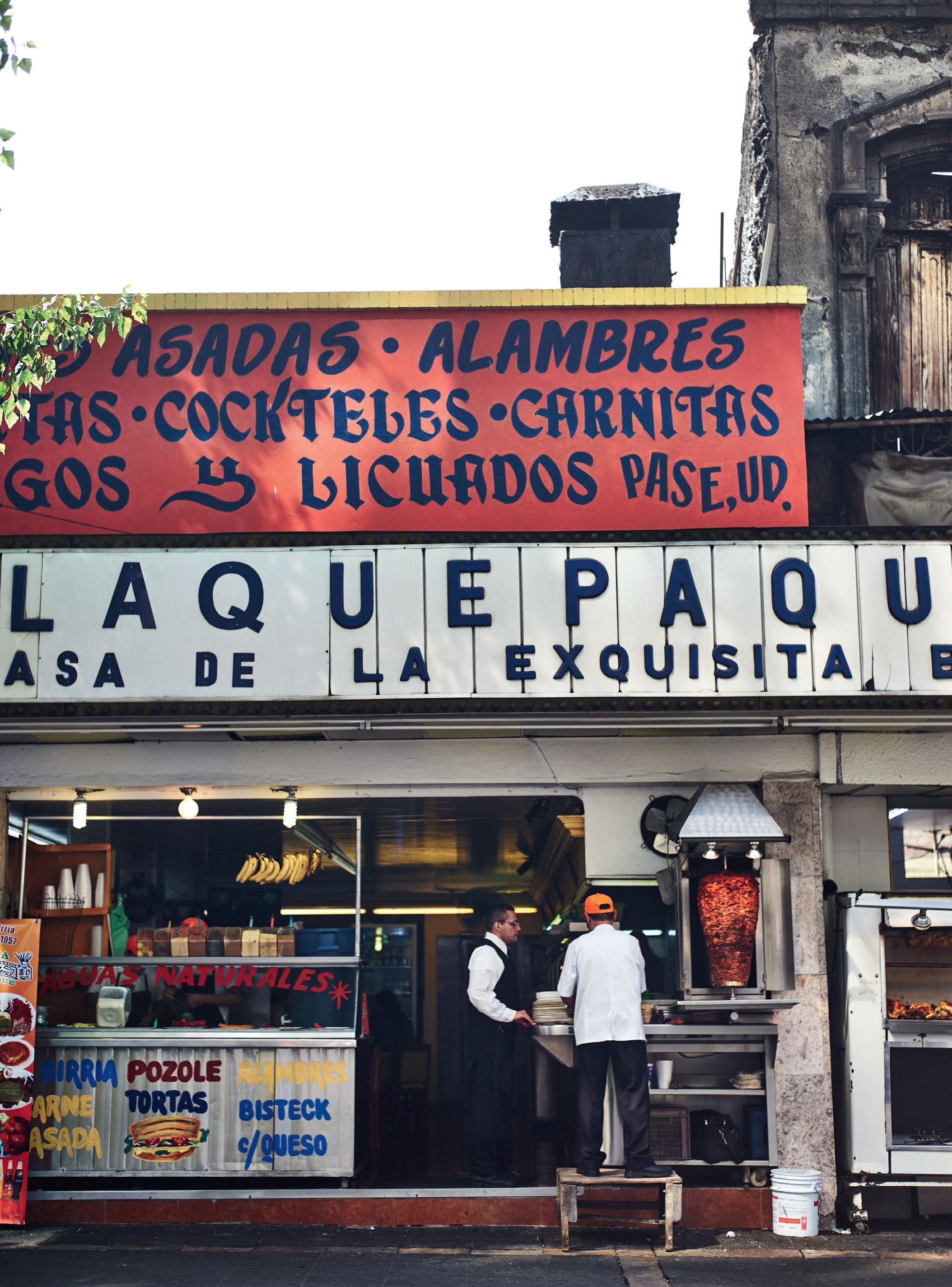
INCLUDES $2,500 flight credit per couple
Quote
when booking
Feel the heartbeat of the world’s greatest destinations. e Viking Way means taking you deeper into the heart of each destination. Deeper into the culture, history and local way of life. While the heartbeat of our modern ships – our dedicated crew – o er a new level of comfort.


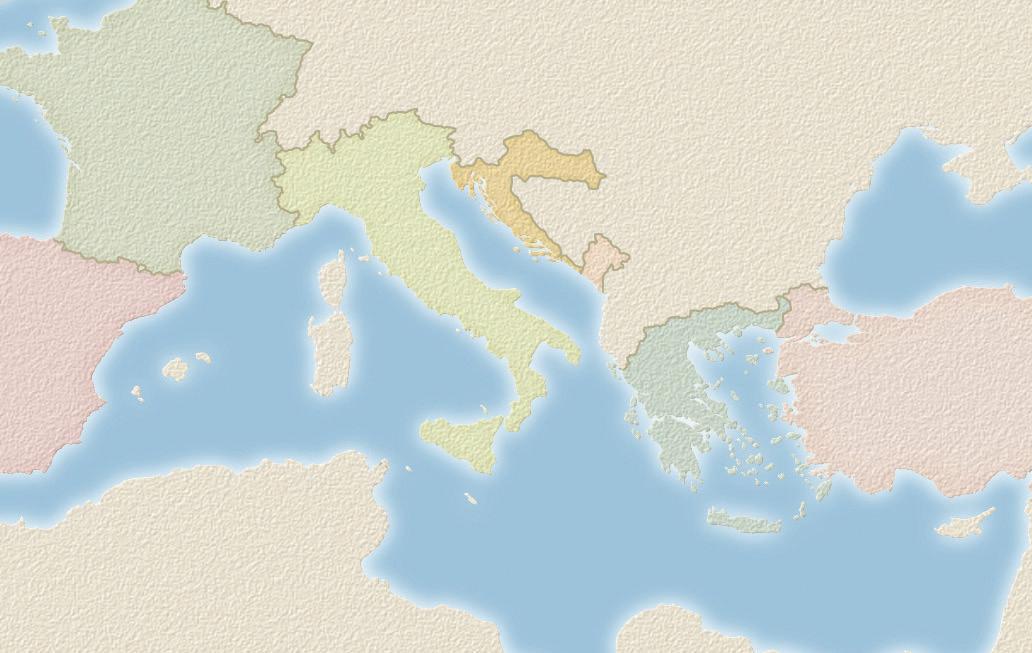
Barcelona to Istanbul or vice versa
29 DAYS | 8 COUNTRIES | 23 GUIDED TOURS

FEB–AUG, OCT 2024; MAR–AUG 2025 in Veranda stateroom per couple
INCLUDES $2,500 flight credit per couple
Quote OC12 when booking
Athens
SET SAIL: OCT 2024; MAR 2025






From

SAVE up to $1,600 per couple


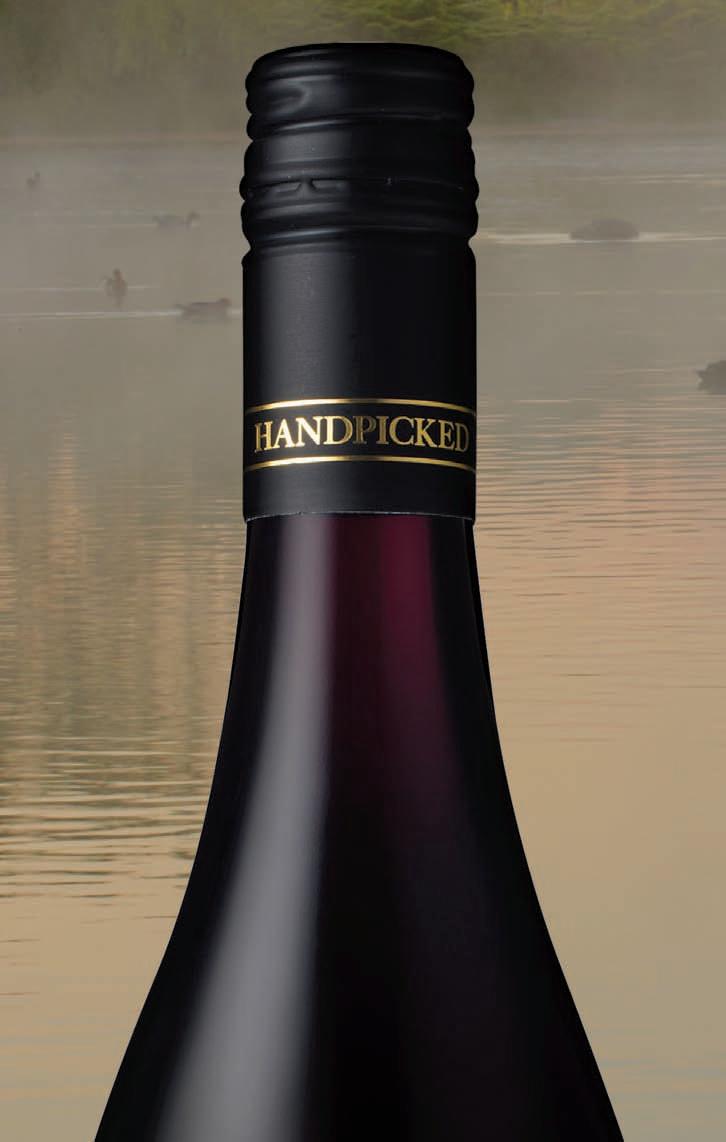


Celebrating 30 years, Australia’s Wine List of the Year Awards continue to turn the spotlight on the country’s most skilful sommeliers and restaurateurs — and the wine and beverage lists they create.

Ask Chris Walker to recall a meal that represented the perfect coming together of wine, food and place, and his answer is instantaneous. “That’s easy,” says the head sommelier at Brisbane’s acclaimed Cru Bar + Cellar (crubar.com). “It was 2015, at a hillside restaurant in Barolo, Italy, with friends. A bottle of 2000 Bartolo Mascarello Barolo, fresh pasta, local butter and lots and lots of freshly shaved white truffle.”
Troy Crisante, co-head chef at Sydney fine-diner Quay (quay.com.au), has an equally evocative memory. “I found myself in a small wine bar in Paris that had an incredible array of cheeses and local wines. I sadly spoke zero French and the only waiter on duty didn’t speak much English but we managed to settle on a wheel of Vacherin Mont d’Or and a bottle of Jura.” Combine the right place, the right dish and the right drop and it’s alchemy. But such an experience can be elusive, especially if you don’t have a Master Sommelier certificate up your sleeve. Fortunately, help is at hand.
While chefs are often the focus, appearing on television and taking pride of place when awards are handed out, there’s an important person in the background of every quality Australian restaurant – the sommelier. Responsible for writing wine lists that fit food menus like a glove, the sommelier is charged with adding the sparkle that can take a meal from satisfying to unforgettable.
The sommelier’s work should “add an extra layer of enjoyment and sophistication to the dining experience, making it a truly memorable occasion”, says restaurant manager
Just as food and wine equal a perfect match, so do chefs and sommeliers. But what are the secrets of a great restaurant “marriage”?
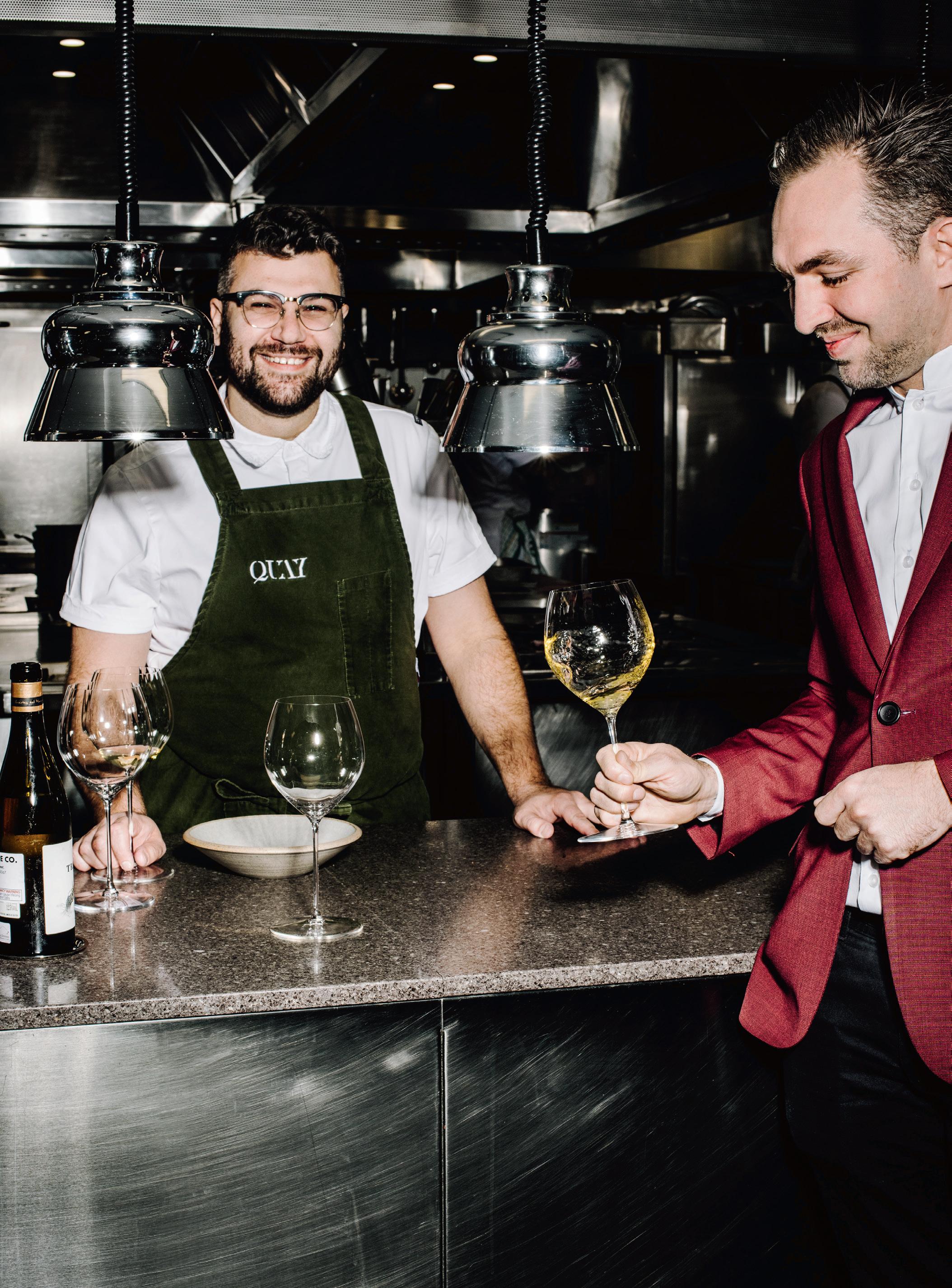
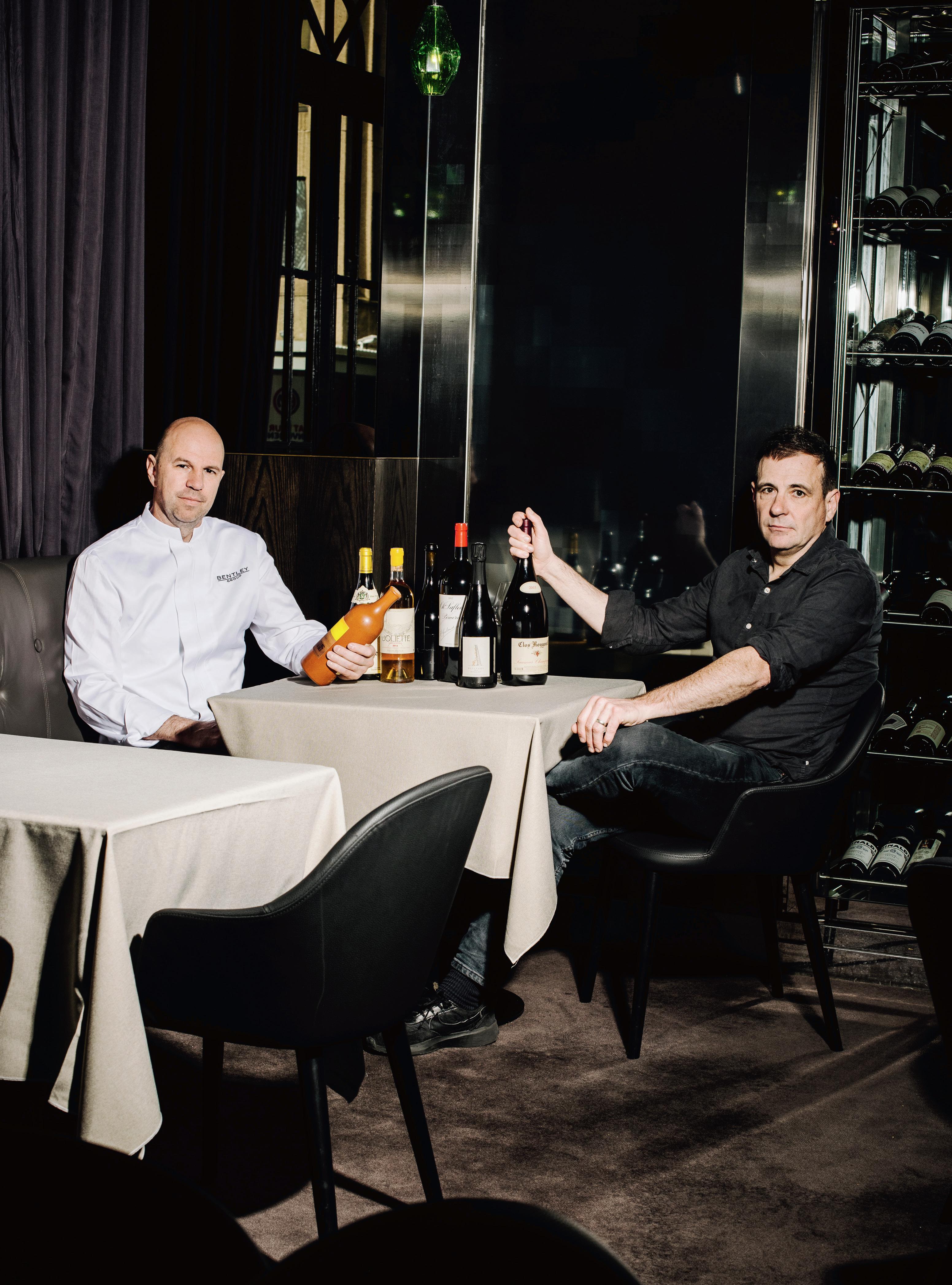
Michael Stoddart from Sydney’s Oncore by Clare Smyth (crownsydney.com.au). “A thoughtfully designed wine list enhances a guest’s experience. It provides an avenue for exploration, complements the flavours of the food, promotes knowledge of wine and should cater to diverse preferences.”
Stoddart believes the key to a good list is communication between sommelier and chef. “By comparing notes and listening to each other, they can create something incredibly special.”
“When chefs and sommeliers collaborate, magic happens,” agrees Walker, who with his team took out the 2022 Australia’s Wine List of the Year award. “We’re both in the business of bringing people joy, after all. We have a common goal that connects us.”
While most of these professional partnerships end when someone changes jobs, some chef-sommelier pairings lead to enduring business relationships. Sommelier Nick Hildebrandt and chef Brent Savage are perhaps Australia’s best known professional food/wine combo, having jointly launched and owned some of the country’s most successful restaurants, including Bentley Restaurant + Bar, Cirrus, Monopole, Yellow and the recently opened Brasserie 1930, all in Sydney.
Hildebrandt says knowing how to pair wine and food isn’t easy – it takes two to three years to become a sommelier and a lifetime of toil to really understand the nuances of wine – but there are some simple rules to follow.
“It’s about finding the balance and weight and flavour of the food and wine – they have to be similar,” he says. “For example, with an ingredient like scampi the flavour is
pure and subtle and you don’t want to overpower it. You try to find a wine that sits underneath that, something such as a lean chablis, a semillion or a light dry white. If you have a rich stew or piece of beef or duck or offal, you can ramp up the flavour of the wine. For a 9+ marbled Wagyu, you’d go for a red with a lot of tannin to cut the richness; something like a barolo or a nebbiolo.”
Hildebrandt notes that it also comes down to personal preference – no match is meaningful if the customer doesn’t enjoy the taste. “I’ve been doing this a long time so if people want to have red wine and oysters, that’s what they want and that’s fine by me,” he says. “But as a customer, if you have a more open mind and if you want to let the sommelier give you their expertise, you can really have an amazing experience.”
Some restaurants even create their own beverages to fit the menu. Adelaide’s Arkhé (arkhe.com.au), for instance, commissioned a champagne to match chef Jake Kellie’s wood-smoked cuisine. The 2013 Arkhé Brut “La Majestueuse” was produced by champagne house Baron Albert and is only served at the restaurant. Bhatia Dheeraj, Arkhé’s director of wine, says the bubbly goes beautifully with the menu’s lighter courses, which include Smoky Bay oysters and raw kingfish with fermented jalapeño and smoked bone dressing. “Champagne is in our soul at Arkhé,” he says. “And wine plays a big role in further beautifying the guest experience.”
For sommeliers, the process evolves with each new season or shift in theme. “Excitement rises each time there is a menu change coming up,” says Quay assistant head sommelier Steven Pietersma. “When Peter Gilmore puts on a new dish, we are among the first to try it so that we can think of wine matches from our incredible cellar. We line up multiple options on the kitchen pass and our head chefs and sommelier team try wine pairings with the new dish. Eventually we decide together on the perfect combination.”
So who’s the most important person in the restaurant: chef or sommelier? “It’s always nice when a chef considers wine but creating a menu with the best combinations of ingredients always needs to come first,” says Pietersma. “As sommeliers, we are there to dance around the magic of the dish.”
Walker agrees, adding that the true wonder of wine is its ability to balance and enhance the work of top chefs. “A great wine can lift a dish to a whole new level. And the same can be said for the ability for food to balance and enhance a wine – through the powers of science, suddenly a good bottle of wine becomes a remarkable bottle of wine.”
For Pietersma, the relationship between sommelier and chef is a little like a marriage. “We all see each other more than our own partners,” he says. “In pursuit of the best guest experience, we have to be dead honest and when we don’t agree with one another, we make it known. We’re a team.”
When chef Brent Savage and sommelier Nick Hildebrandt opened Cirrus (bentleyrestaurantgroup.com.au) at Barangaroo in 2016, the 500-strong wine list was good. Seven years later, it’s great. “I guess it has grown over the years,” says Hildebrandt, who now works with sommelier Polly Mackarel to craft an offering that today tips 1200 bottles and about 50 drops by the glass. “It’s taken a while to develop the cellar. We now have vintages of a lot of rare and hard-to-get wines, which is something we pride ourselves on.”
But the deep cellar isn’t what sets the Cirrus list above the rest. According to Hildebrandt, it’s all about balance. “We like to have a split between locally made wines and imported wines, plus a balance of price points. We want to have wines that are approachable and affordable.”
This egalitarian attitude is just one of the elements that impressed the judging panel. “There’s plenty of joy and difference on each page of this spectacular, innovative and thrilling list,” says judge Jane Faulkner. “Who else could offer such an extensive mix of French chenin blanc or 17 aligoté wines?”
While special mention was made of the list’s “amazing burgundy selection” and “the champagnes organised into sub-groupings to reflect origin”, Hildebrandt says it’s the chenin blancs and rieslings that really sing. “They go with our food really well,” he says of the seafood-focused menu. “Rieslings are exceptional with our lighter dishes, like oysters and tartares. For richer seafood, like the deep-sea fish or crustaceans, we suggest chenin blanc.”
So what does it take to make it onto the award-winning Cirrus wine list? “I always joke that our one rule is ‘don’t buy crap wine’,” says Hildebrandt. “But to be honest, there’s no real rules. We’re looking for interesting, individual wines. They’re the ones we like to drink and they’re the ones we like to sell.”
Cirrus is also the winner of Best Wine List NSW, Australia’s Best City Restaurant and the Judy Hirst Award for the sommeliers responsible for the winning list, Nick Hildebrandt and Polly Mackarel
Mr. Wong
Sydney, NSW / merivale.com
Gimlet at Cavendish House
Melbourne, Victoria / gimlet.melbourne
A comprehensive list built on balance and paired with a commitment to unearthing interesting drops sees this Sydney restaurant come into its own.

Familiar faces and new names round out this year’s winners.
The classic-with-a-contemporary-spin menu at Canberra institution Italian and Sons (italianandsons.com.au) always delivers but the real magic happens in the glass. “This is such a wonderful list to pore over,” says judge Mike Bennie. “Lean into the Italian theme: Foradori, COS and Olek Bondonio are irresistible, plus there are stalwarts to entice the uninitiated, such as G.D. Vajra, Produttori del Barbaresco and Ornellaia.”
You’d think the main event at Agnes (anyday.com.au) was the ambitious menu: everything is cooked over a wood fire to bring out the unique flavours of each ingredient. But the food is matched by a wine list that’s designed to complement all those smoky notes. “This is a benchmark wine list that should be the envy of sommeliers and wine selectors nationally,” says judge Bennie.
“It’s a who’s who of producers, styles and vintages that will delight everyone from wine geek to aspirational drinker.”
Agnes is also the winner of Australia’s Best Digestif List
A meal at Restaurant Botanic (restaurantbotanic.com.au) is an experience. Set in the tranquil Adelaide Botanic Garden, the fine-diner serves a dégustation of 20 small plates over four hours. As you’d expect, the wine offering is just as much of an event. “This is an exemplary wine list perfectly pitched to the Botanic’s freshly foraged food,” says judge Peter Bourne. “South Australian wines form the core, with the rest of Australia succinctly covered. The champagne list is outstanding, burgundy treated with due respect and a tight selection from across the world completes the enticing offering.”
Restaurant Botanic is also the winner of Australia’s Best Wine List (200 Wines)


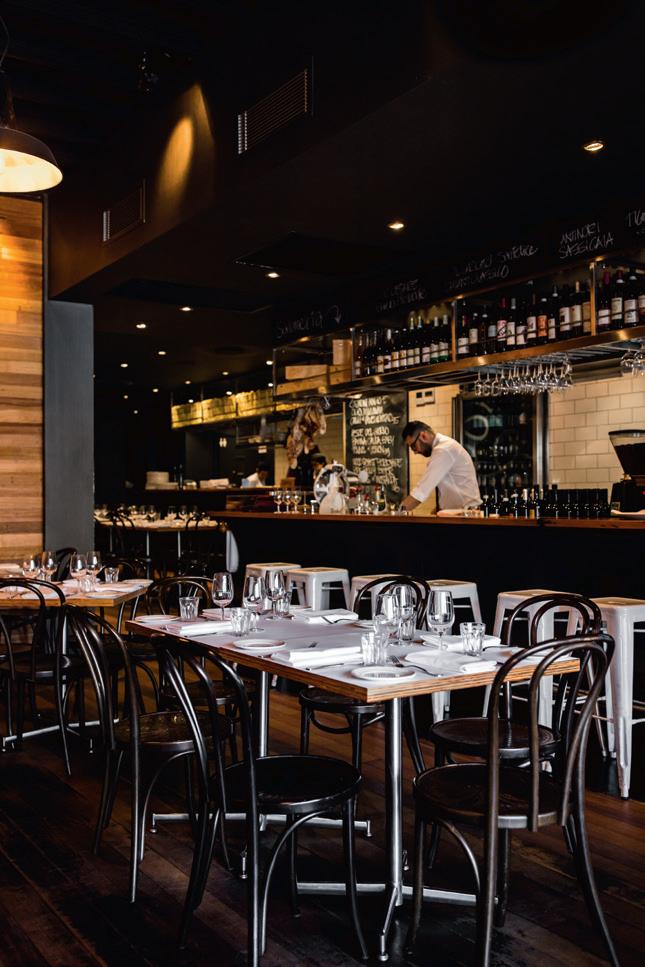
Glacier 51 Toothfish is sought after by top chefs around the globe for its pearly flesh, tender, flaky texture and sweet, rich flavour. But to understand its unique story, you have to begin at the very edge of the world.
The Australian sub-Antarctic territory around Heard Island is as remote as it gets. It lies a staggering 4,109 kilometres south-west of the Western Australian coastline and requires a 100-day round trip in a purpose-built ship. It’s a treacherous journey – the wild waters of the Southern Ocean are home to 95-kilometre-an-hour winds, 10-metre waves and near constant snow. The reward? Glacier 51 Toothfish, which thrives in the icy waters and has adapted to the freezing temperatures with a high Omega-3 fat content, lending a buttery richness to its snow-white flesh.

Each fish is wild caught and traceable through a blockchainpowered ID. The information is then linked to a scannable QR code printed on the packaging, which helps consumers verify all of Glacier 51 and parent company Austral Fisheries’ sustainability claims, including its status as the world’s first carbon-neutral fish. Glacier 51 Toothfish is also certified sustainable by the Marine Stewardship Council, which conducts an independent annual review of the fishery, and is recommended by the Monterey Bay Aquarium Seafood Watch Program.
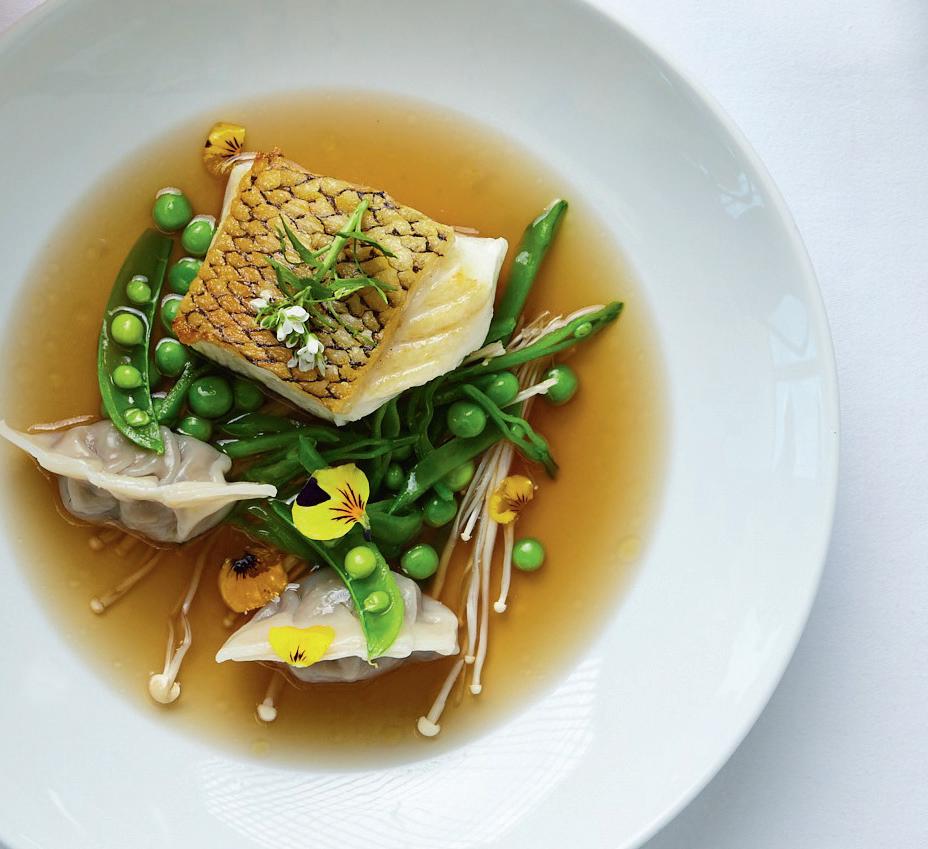
“The ultimate fish.” That’s how chef Neil Perry describes Glacier 51 Toothfish. “It’s supremely delicious, sustainable and Australian,” says the Qantas creative director, food, beverage and service, and owner of Sydney restaurant Margaret. Perry and Qantas have been showcasing this sought-after product to passengers on the new First menu. Glacier 51 is now known as the world’s premier toothfish brand, servicing the likes of the Nobu restaurants internationally and premium fishmongers around the country, such as Peter’s Fish Market in Sydney and Fish Pier in Melbourne.
Learn more at glacier51toothfish.com
The Peppina (peppinarestaurant.com) experience is designed to conjure an authentic Italian feast – one made using superb Tassie produce, that is. The wine list walks the same line. “What majesty in a small list,” says judge Andrew Graham. “Peppina splits its focus between Tasmania and Italy, delivering a wonderful sense of identity. The list is extremely strong by the glass and a huge range of price points are covered, too.”
Peppina is also the winner of Australia’s Best Listing of Tasmanian Wines

Gimlet at Cavendish House, Melbourne
Visiting Gimlet at Cavendish House (gimlet.melbourne) feels like stepping back in time. The restaurant’s aesthetic is old-world glamour – to match its 1920s building – and its menu spans oysters, steak and lobster. “The wine list follows suit, starting with a cocktails selection that ranges from a novel Hazelnut Martini through to grand celebratory drinks, such as the Lotus Club Sazerac,” says judge Jeni Port. “Australian producers go toe-to-toe with the Europeans as the list delves into new-style skin-contact and oxidative whites plus low-intervention reds.”
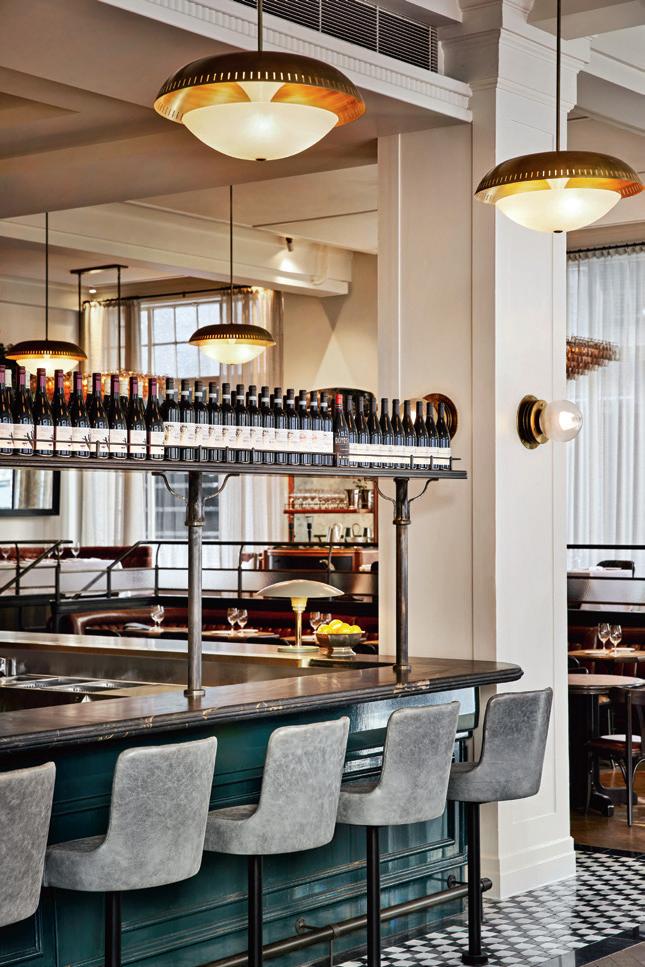
The team at Shorehouse (shorehouse. com.au), a breezy beachside diner with a robust, Mediterranean-style menu, describes its wine list as being “extremely diverse, yet always inclusive; forever priding itself on being uniquely West Australian”. The panel couldn’t agree more: “Shorehouse keeps its position at the top in WA with a list that places the West first, yet fixes it clearly in a world context,” says judge Peter Forrestal.


Pouring top drops by the glass, plus sake, beer and cocktails, these are the best places to enjoy a drink around Australia.
BEST HOTEL RESTAURANT WINE LIST
Woodcut
Barangaroo, NSW
This is a must-visit for oenophiles and gourmands (crownsydney.com.au). “There’s an impressive number of cellared wines and a mix of local contemporary labels and international icons,” says judge Toni Paterson MW. And the menu? Everything is prepared using fire, steam, smoke or ice.

BEST NEW WINE LIST – THE TONY HITCHIN AWARD
Olivine
Coburg, Victoria
BEST WINE LIST (50 WINES)
Jimmy Wah’s
Burleigh Heads, Queensland
The selection at Jimmy Wah’s (jimmywahs.com.au) is as impressive as it is compact. “This is a smart, idiosyncratic list that sings in complete harmony with modern Vietnamese cuisine,” says judge Jeni Port.
BEST COUNTRY RESTAURANT
WINE LIST
Settlers Tavern
Margaret River, Western Australia
Located in one of Australia’s best wine regions, it’s no surprise that Settlers Tavern (settlerstavern.com) has an enviable cellar. “It offers the ultimate insiders’ guide to local wines,” says judge Peter Forrestal.
Olivine wine bar (olivinewinebar. com.au) calls its novel-like list the Book of Wine. Peruse its pages or wander the cellar yourself. Judges called the list, conceived to accompany small share plates such as caviar, sea urchin and scallop tart, “eccentric and charismatic”.
BEST APERITIF LIST
Bentley Restaurant + Bar
Sydney, NSW
Rizla
Braddon, ACT
Rizla (drinkrizla.com.au) is an anomaly as it focuses almost exclusively on rieslings. “The listings are superbly chosen to give acid hounds the ultimate experience,” says judge Mike Bennie. The food, served to share, has all been designed to pair perfectly.
BEST CLUB RESTAURANT
WINE LIST
CHU Restaurant by China Doll
Rooty Hill, NSW
CHU (churestaurant.com.au) celebrates modern Asian flavours teamed with food-friendly wines. “There’s plenty of depth, with the list hovering around 240 bottles,” says judge Jane Faulkner.
The range of aperitifs on the drinks menu at Bentley Restaurant + Bar (bentleyrestaurantgroup.com.au) impressed the judges. Also of note are the signature cocktails, an abundance of premium spirits and a solid roster of non-alcoholic options.

BEST FOOD AND WINE MATCHING LIST
Amaru Melbourne
Armadale, Victoria
Expect a wide range of flavours and styles when you visit Amaru Melbourne (amarumelbourne.com.au) for its contemporary Australian tasting menus. “The pairings are quirky, which allows them to stand out from the crowd,” says judge Paterson.
BEST CHAMPAGNE LIST
Quay
The Rocks, NSW
“Quay (quay.com.au) has a consistently impressive wine list befitting Peter Gilmore's extraordinary food,” says judge Paterson. Of special note: the mix of contemporary and classic labels and the sizable collection of magnums.
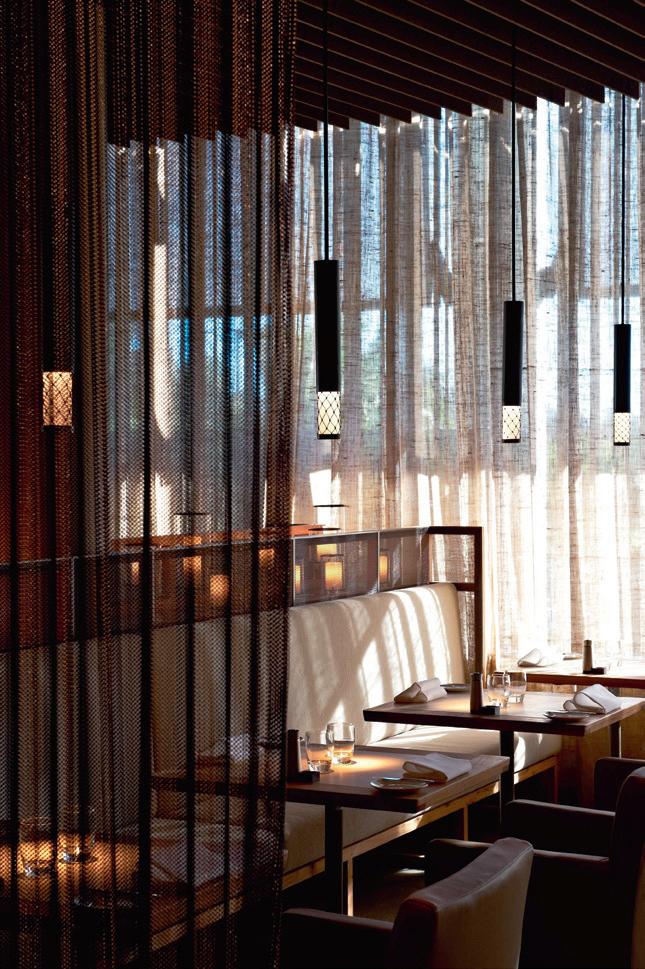
BEST SPARKLING WINE LIST
Cru Bar + Cellar
Fortitude Valley, Queensland
“What. A. List!” says judge Bennie. “Cru Bar + Cellar (crubar.com) seems to have the encyclopedia of wine at its fingertips and 100-plus cuvées on offer.” It’s ideal for toasting a food menu designed to suit Brisbane’s warm climate.
NON-ALCOHOLIC LIST
Bells at Killcare
Killcare Heights, NSW
While boutique hotel Bells at Killcare (bellsatkillcare.com.au) has a stellar wine list, it hasn’t overlooked its non-alcoholic offerings. There’s a comprehensive list of low- and no-proof teas, spirits, cocktails and beers, with a strong focus on natural and sustainably sourced drops.
BEST SAKE LIST
Leonie Upstairs
Carlton, Victoria
“Unquestionably one of the finest sake lists in the country,” says judge Andrew Graham of Leonie Upstairs (leonieupstairs.com.au). The range, which is best sampled alongside an omakase suite of 12 temaki sushi, “goes from easy and approachable to truly magnificent”.
BEST WINE BAR LIST – THE FIONA MACDONALD AWARD
Where’s Nick
Marrickville, NSW
The drinks list at natural wine bar and bottle shop Where’s Nick (wheresnick.com.au) favours smallscale and minimal-intervention winemaking. “The non-conformist selection is thrilling in its diversity,” says judge Paterson.
BEST LIST OF WINES BY THE GLASS
Rockpool Bar & Grill Perth
Perth, Western Australia
“Rockpool Bar & Grill Perth (rockpoolbarandgrill.com.au) has a world-class list,” says judge Forrestal. It’s matched by a world-class menu starring seafood and woodfire-grilled meat. “It starts with 65 wines by the glass and there’s a premium selection, which includes wine from each part of the Bordeaux appellation.”
BEST BEER LIST
Mojo’s Kitchen, Bar & Bottleshop
Bunbury, Western Australia
The beer selection at Mojo’s (mojosrestaurant.com.au) is constantly evolving and brews are matched to the seasonal menus that hero locally sourced produce. Always on offer: brews from the state’s South West, as well as a wide range from Australia and abroad.
Mojo’s Kitchen, Bar & Bottleshop is also the winner of Australia’s Best Listing of WA Wines
BEST COCKTAIL LIST
Sarino’s Baulkham Hills, NSW
Modern Italian restaurant Sarino’s (sarinos.com.au) has a cocktail menu organised by categories such as Obscure & Modern and Sour, Simple & Effective. “The list is smart and inventive,” says judge Ken Gargett.

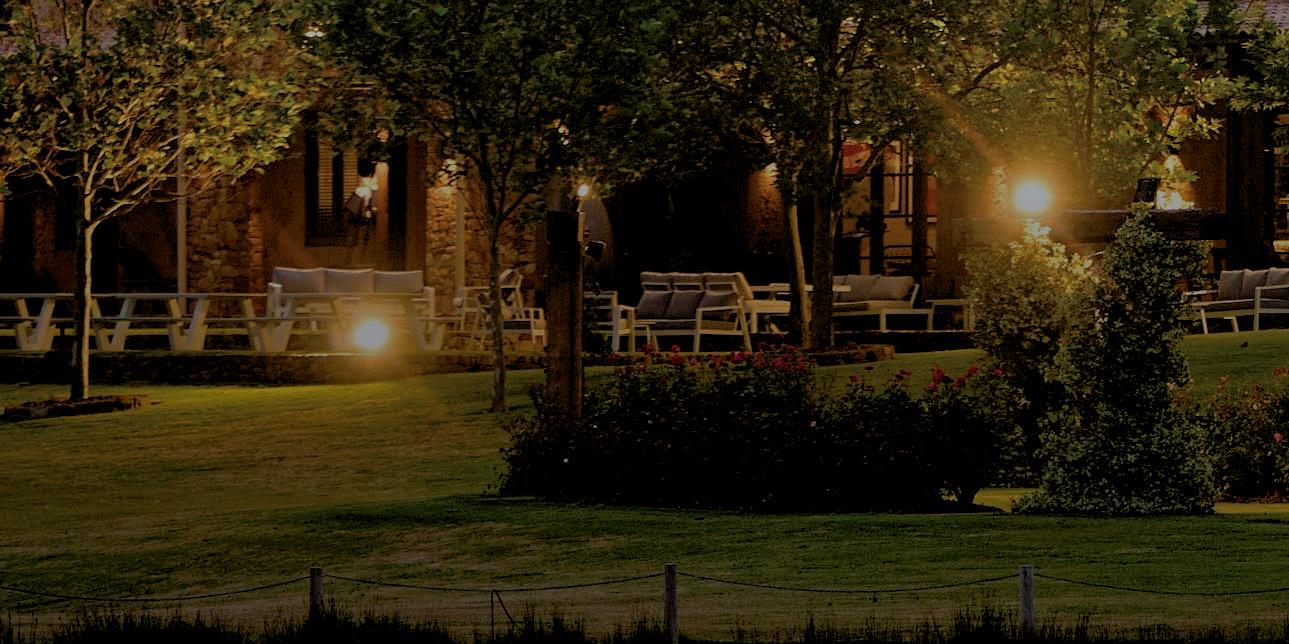









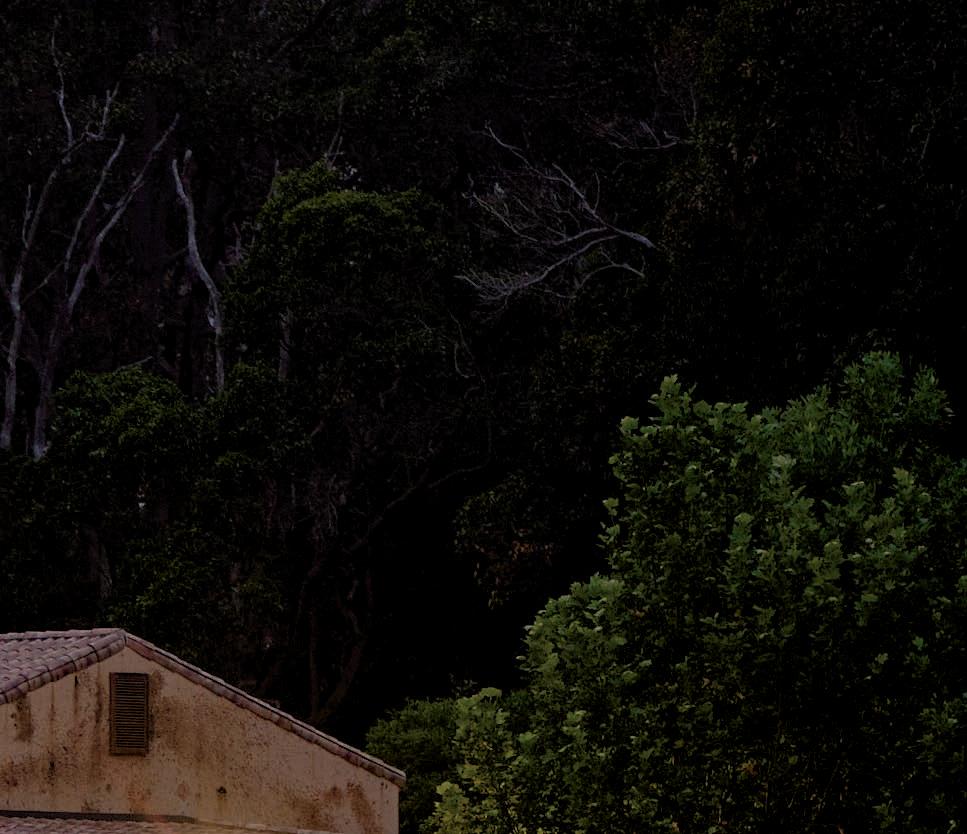

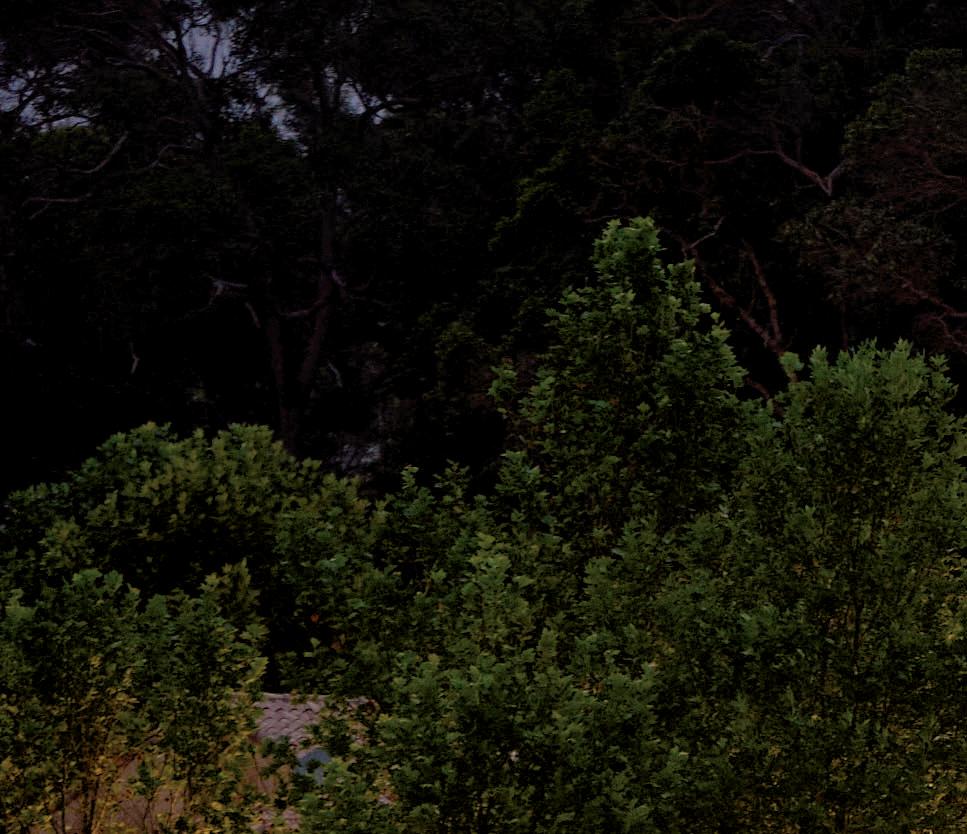


as determined by a national team of leading food and drink writers
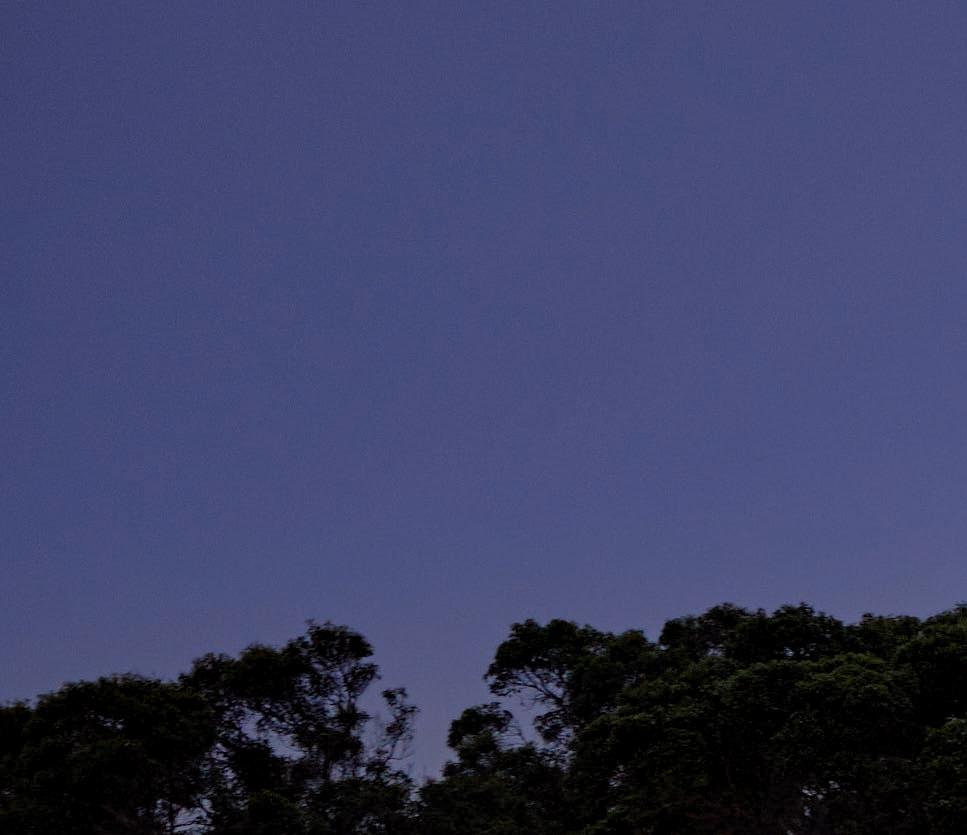
Sommeliers around Australia voted for their favourite wine lists and, for the second year running, there are two winners: Mayfair Lane in Perth and SK Steak & Oyster, Brisbane.
Foni Pollitt CO-OWNER AND WINE DIRECTOR, MAYFAIR LANE PUB & DINING ROOM West Perth, Western Australia
For a long time, Foni Pollitt couldn’t envision a future where she’d devote her days to wine. “When I was in my 20s, I didn’t think working in wine was an option,” she says. “I was running restaurants and doing wine lists on the side.” That turned out to be the perfect training for her next venture: opening Mayfair Lane Pub & Dining Room (mayfairlane.com.au) in West Perth with husband Chris. “Perth has the best
beaches, best sunsets and best weather but it needed more great restaurants.”
Pollitt now spends her days managing the venue, which was conceived in the tradition of the great British gastropub, and overseeing the 400-strong wine list. Her philosophy is simple: “I want to have fun with wine. Wine is the way I communicate.”
The list complements classic English fare, such as bangers and mash, but also represents her heritage. “I’m half Greek, half Sicilian and I love volcanic soil,” she says. “When you do the list for your own pub, it’s a big risk because there’s no-one to say it’s wrong or right. I’ve realised, though, all my

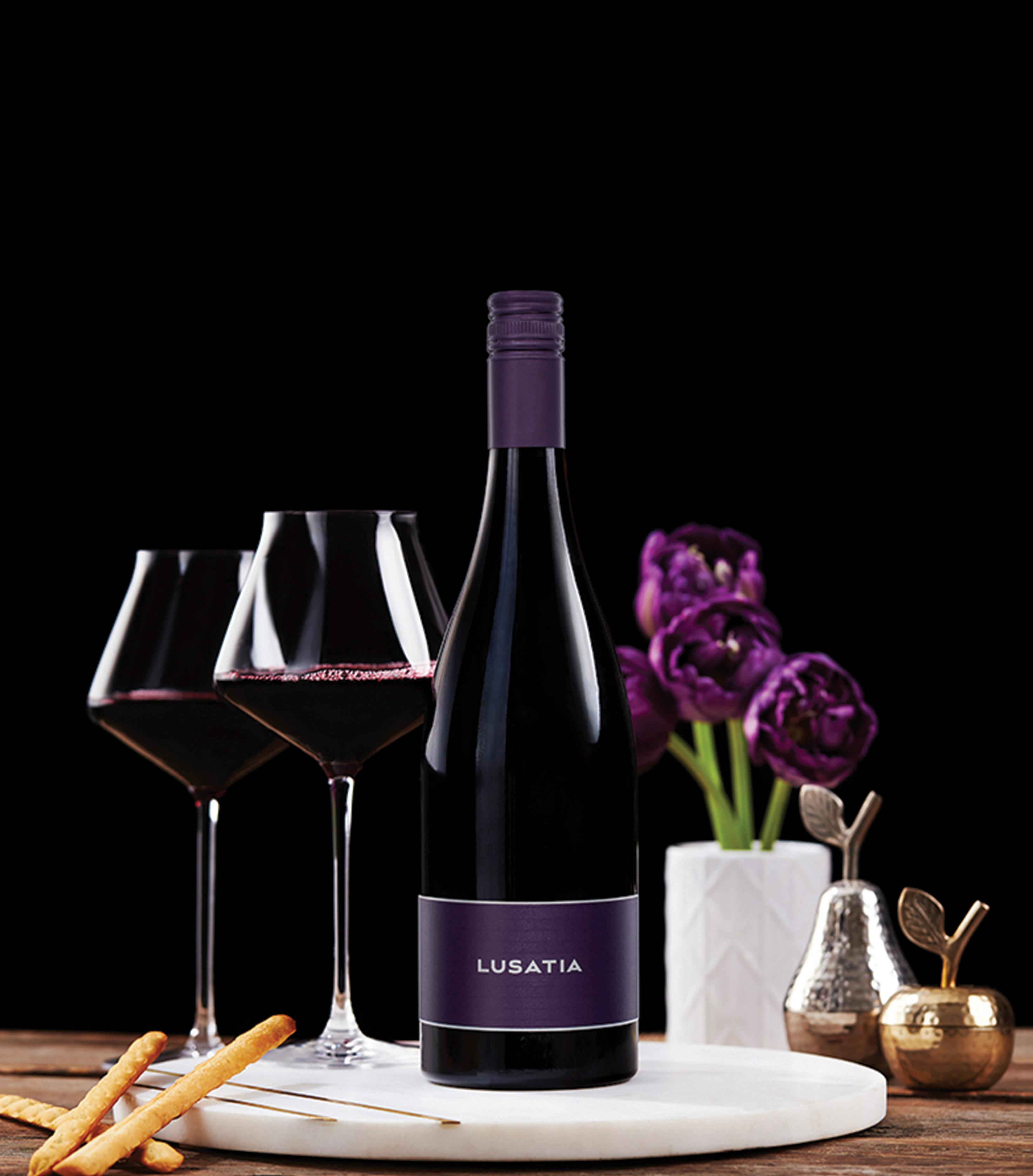
favourites have volcanic soils from everywhere in the world. So that wasn’t a coincidence.”
Mayfair Lane is also winner of Australia’s Best Pub Restaurant Wine List
Alexandra McPhersonFortitude Valley, Queensland
Alexandra McPherson grew up on her family’s vineyard in the NSW Hunter Valley and while she didn’t head straight to work in the wine industry, it soon became clear that it was her calling. “I really enjoy the immediacy of finding the right wine for somebody,” she says.
The extensive wine list at SK Steak & Oyster (sk-so.com) gives McPherson and her team plenty of scope to find the perfect match for dishes such as Rockefeller oysters or chateaubriand. “There’s sometimes a misconception that sommeliers are there to find the most expensive wine but I get as much pleasure from recommending a $60 wine as I do a $1000 bottle.”
An ample by-the-glass choice that changes regularly also allows for extensive sampling. “There’s a sense of elegance to all the wines on our list,” says McPherson. “I look for classically made, beautiful, interesting wines.”
SK Steak & Oyster is also the winner of Best Listing of USA Wines and Best Listing of Queensland Wines
Best Listing of French Wines Society
Melbourne, Victoria
Best Listing of Italian Wines
Bistecca
Sydney, NSW
Rose Bay, NSW
Catalina (catalinarosebay.com.au) is a Sydney classic and with good reason – enjoying a crisp glass of white while overlooking the harbour on a sunny afternoon at this seafood fine-diner is next to unbeatable. And there are plenty of outstanding wines to choose from. The list is broken up by varietal and location, with a couple of extra-special groupings, such as the Tyrrell’s, Penfolds and Henschke collections. The by-the-glass selection is also noteworthy: take a trip around the world and choose from a contemporary list or for something a little extra, head to the “fine and rare” options.

Best Listing of a Region’s Wines
Stillwater
Launceston, Tasmania
Best Listing of Australian Wines
Cafe
Sydney
Sydney, NSW
Best Listing of ACT Wines

Brunello
Canberra, ACT
Best Listing of NSW Wines
Charred Kitchen & Bar
Orange, NSW
Best Listing of SA Wines
Uraidla Hotel
Uraidla, South Australia
Best Listing of Victorian Wines
Lake House
Daylesford, Victoria
Chairman of judges

Judging panel

Deputy chairs
Ken
International chair


Plus an additional domestic and international jury of 17 experts, including five Master Sommeliers and five Masters of Wine

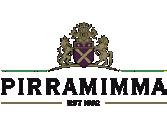
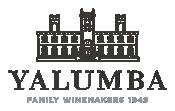


Media partners






Major award partners Award partners

winelistoftheyear.com.au










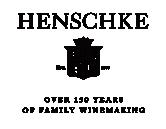

















Embark on a food-filled journey through one of Melbourne’s most exciting shopping strips.
High Street Armadale hosts world-class croissants, coffee and charcuterie alongside some of the city’s top restaurants.
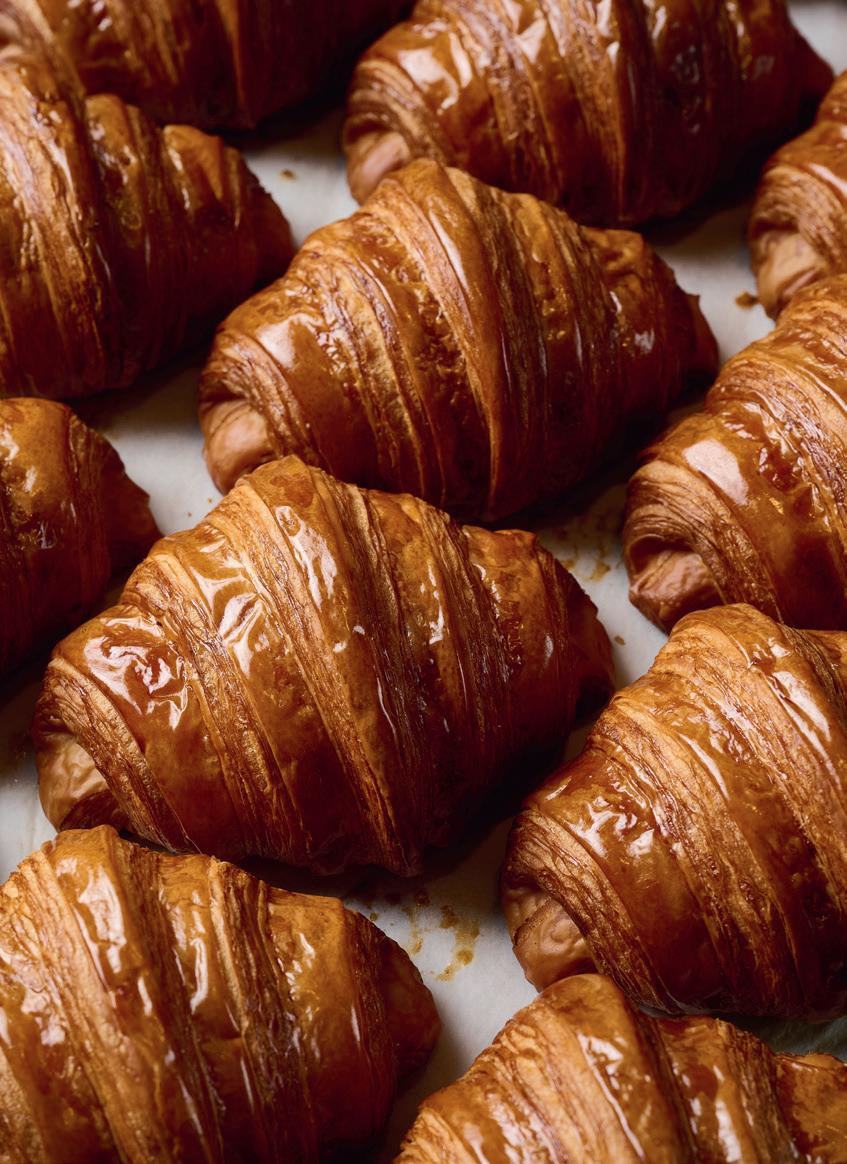

Specialty butcher Victor Churchill’s Melbourne store is a temple to Australia’s finest beef, including cuts from O’Connor in Victoria’s Gippsland. There’s also an in-house beef ageing program and a charcuterie counter that slices full-blood Wagyu bresaola. You could try the prawn cocktail at the French-inspired bar but the real star is the steak frites with a 280g Black Market beef flank MS 5+.

Lune croissants have been described as the best in the world by The New York Times, no less. An entire cookbook has been dedicated to their creation and there are now five shopfronts around the country selling these flaky half-moons. The Armadale iteration has all the classics and we suggest a morning bun: croissant pastry swirled and dusted with brown sugar, cinnamon and orange zest.

Banshō is a new addition to High Street and combines the elegance of French cooking with the distinctive flavours of Japan. Familiar dishes take a slight swerve to become something new – think spanner crab with a celeriac vichyssoise or wasabi stracciatella with bluefin tuna tartare and rice paper crisps.
On the ground floor of a 1400square-metre flagship furniture showroom comes an elevated dining experience in a meticulously designed space. Blue velvet chairs and marble tables are the canvas for James Said Bistro’s Mediterranean menu. Settle in for a Niçoise salad and an Italian rosé at lunch after perusing the wares or a linguine puttanesca and Negroni after hours.
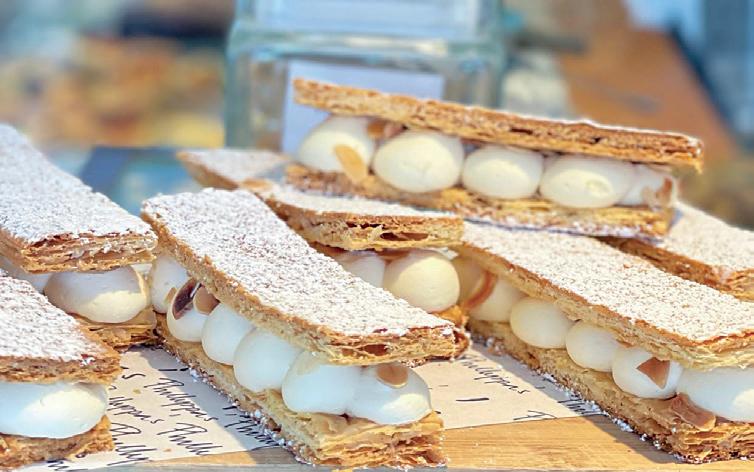
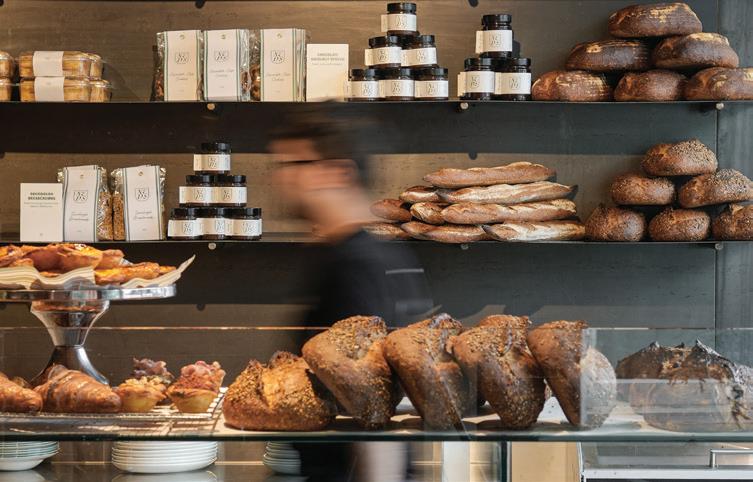
Amble down High Street and discover a bunch of hidden gems. Tartine brings the party with Frenchinspired finger food, charcuterie platters and take-home meals while Blakeaway boxes up meal kits, including a slow-cooked lamb banquet and homemade pasta sauces. Newcomer Ruben’s Deli is an ode to New York and the pastrami-filled Reuben sandwich. Covering off bread, biscuits, cakes and tarts is Phillippa’s Bakery (above), where a fresh scone with jam and cream calls.
With glowing candles, green fabric awnings and tables lining the footpath, Albert’s is a neighbourhood bar with European flair. The wine list is dedicated to small-batch producers – order a glass of 2020 The Lost Plot Roussanne from Central Victoria then fill the table with small plates – burrata and charred garlic toast and king prawns with café de Paris butter are highlights.
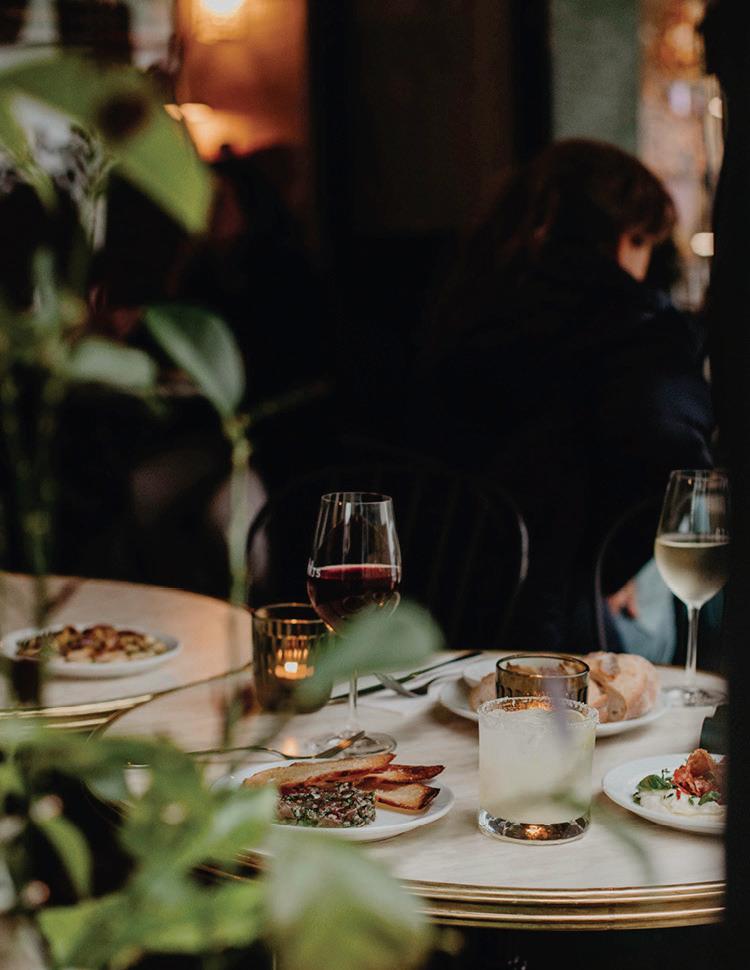

Amaru (pictured) seats just 34 in a gold- and sepia-toned dining room. Go for the seasonal Modern Australian menu devised by chef-owner Clinton McIver, which may include dry-aged duck with apricot and native juniper. Want more? Head to McIver’s pared-back, snackfocused wine bar Auterra just across the road, which sees venue sommelier Ella Maravilla pour champagne while you nibble on a king prawn sandwich with kimchi.

Ned’s Armadale (above) is a must-visit bakery-café hybrid and the perfect place for a prosciutto piadina and St Ali coffee. And while Le Petit Prince’s chilli scrambled eggs on a croissant and Moby ’s buttermilk ricotta hotcakes duke it out for best brunch, there are plenty of pit stops for coffee, such as High Society, Bruno&Co, Nigel and Willow. Satiate that sweet tooth before you go with a classic vanilla slice from Euro Lounge Patisserie.
To find out more, visit highstreetarmadale.com.au


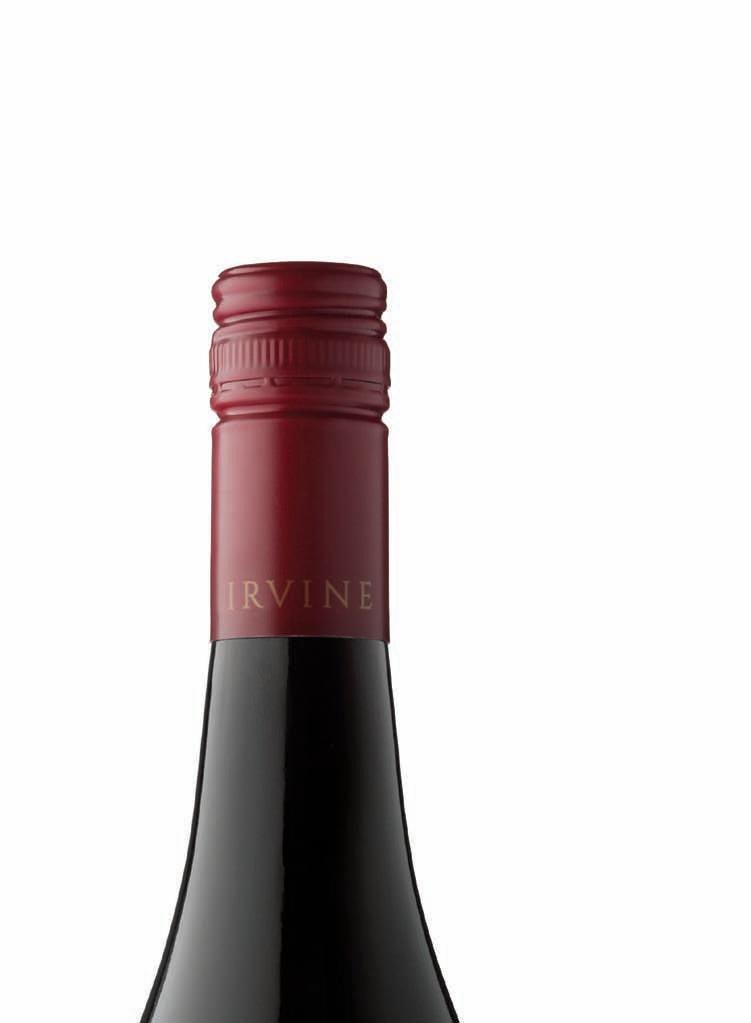
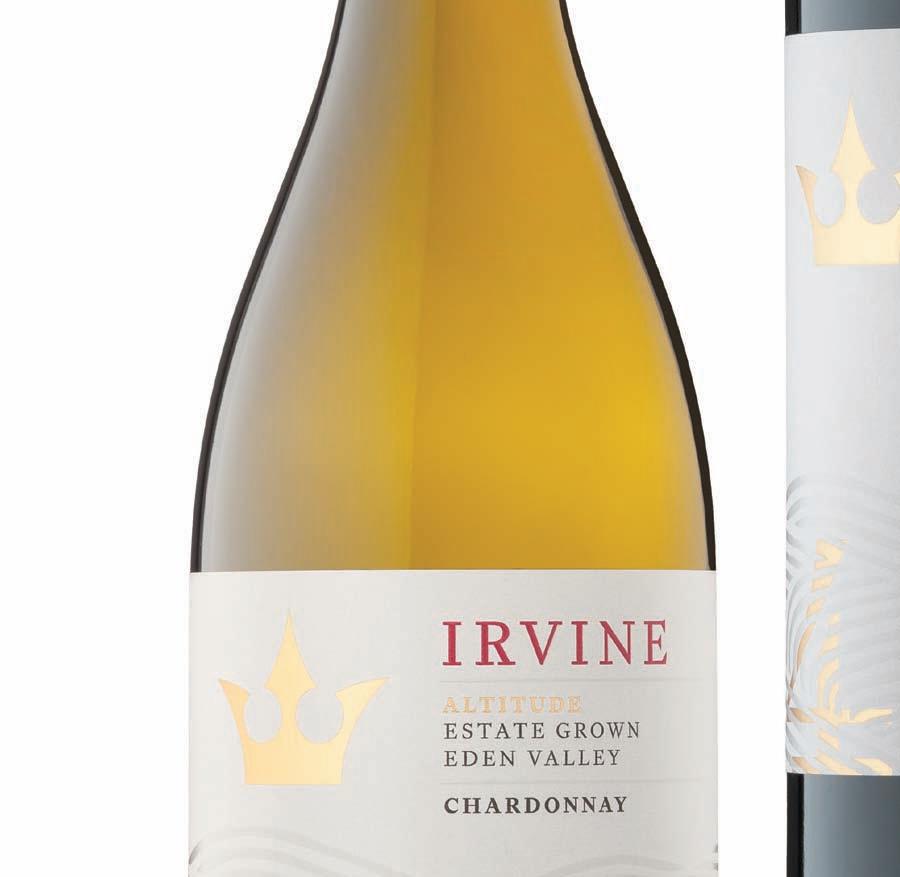





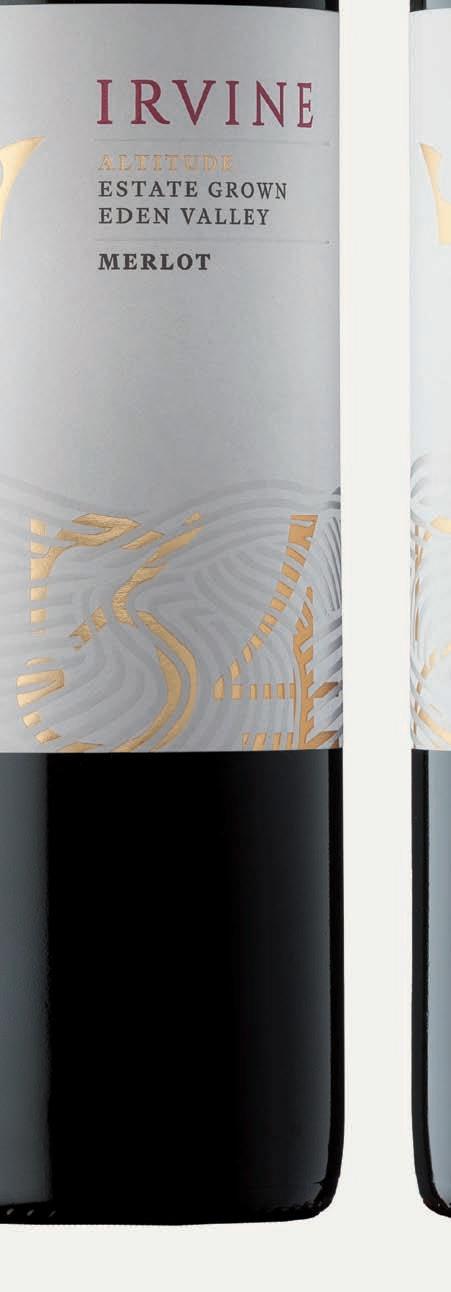



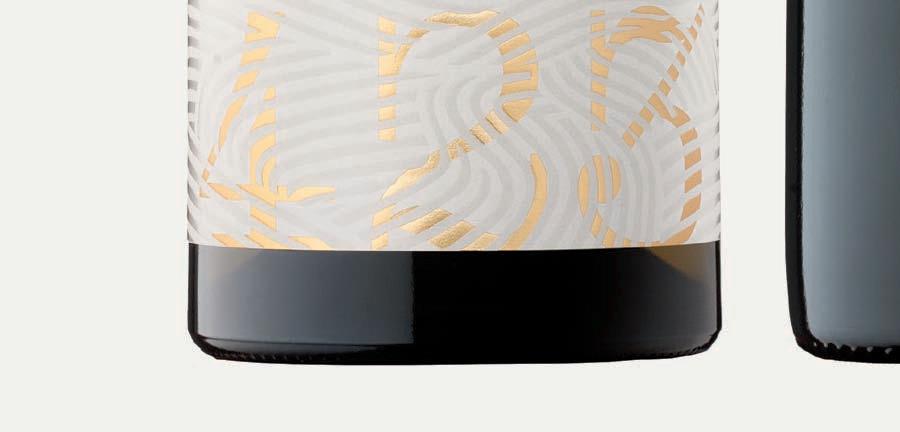

The first thing to do before setting off on the Maria Island Walk (mariaislandwalk. com) is downsize. “Get rid of the weight on your backs,” says Sharna, a guide who has spent seven years showcasing the 115.5-square-kilometre island off the east coast of Tasmania. “I wear these clothes every day. It’s okay to smell like we’ve been on a bushwalk.”
The four-day tour – billed as “one of the world’s great walks” by its operator, Wild Bush Luxury – will see us traversing spectacular cliffs and coastlines, back roads and beaches. We’re just a 30-minute boat ride from the township of Triabunna (and 85 kilometres north of Hobart) but for the first two days, we see only a handful of people. “We’re on island time,” says Sharna, “so slow down.”
The walk on Maria Island (wukaluwikiwayna), which can range from four kilometres a day to almost 17, begins with an Acknowledgement of Country and a grounding exercise under the shade of an old Casuarina tree on the first day. I feel the needles from the tree tickle my feet and listen to the hypnotic back and forth of the ocean.
“You’re here for the next four days to be in nature and take a break from your everyday life,” says our second guide, Louis, who tells our group of seven what to expect, from a “five beaches day” to a “mountains day” and other challenging additions for those who want to push themselves. “What I love about this walk,” adds Sharna, “is that it’s accessible for all levels of fitness.”
Accessible and supremely comfortable. The final night is spent at historic Bernacchi House – circa 1880 and part of the island’s World Heritagelisted convict settlement – but for the first two nights, we’re sleeping at two different campsites. Although this is a national park, Wild Bush Luxury has secured a special permit to create semi-permanent tents that are open to guests from October to April.
Each site, which has five double tents (with beds!), blends seamlessly into its environment. The toilets are of the drop variety (but totally inoffensive), rainwater is collected and composting is commonplace.
Guides carry fresh produce in –about 20 kilograms each – and do all the cooking. Dinner might include local ash brie, risotto with scallops and asparagus and a “messy meringue” with berries.
It’s all washed down with world-class Tassie wine, from Bream Creek Riesling to Cape Bernier Pinot Noir.
Not that anyone overdoes it in the drinks department. We want to appreciate the wilderness that the island is famous for. We skitter across the whitest of sand and marvel at the colours of the lichen – red and orange, green and black – that covers the pink granite in the west. I delight in watching a native potoroo scamper at my feet and an echidna roll into a ball before me.
The highlight for many is the steep walk (and boulder scramble) to get to the jagged, dolerite columns of Bishop and Clerk, the most popular peaks on the trail. But there is as much pleasure to be found by walking 10 clicks in a day and stopping to watch wallabies nibble grass, while a wombat shepherds her baby across the field.
On the final day, we set out in near darkness, our only company the first pink streaks in the sky and scores of pademelons, wombats and Cape Barren geese. And then, at the top of the hill, the vista that’s worth the sweat – a mob of kangaroos backlit by the iridescent sunrise and looking out over the marine nature reserve below. Sure, we may smell a bit but this is the wild life.
MARIA ISLAND, TASMANIA
Empty beaches, dolerite columns and wildlife everywhere you look. Take it all in on this four-day walk.


What does Prince have to do with Le Méridien Melbourne (above; qantas. com/hotels/lemeridienmelbourne)?
It’s all part of the history of the hotel’s host building, a Deco-fronted beauty near Parliament House that dates back to the 1850s. The theatrics of the 235-room property’s past, which spans a hotel, nightclub and the Palace Theatre – where The Artist Formerly Known As performed in 2003 – purposefully peep through
the sleek refurb, which features a cinema-themed café and wine bar and moody eatery Dolly (a nod to the camera shot, not the megastar). An 18-metre rooftop pool, stunning city views and graphic art installations by Stephen Baker bring it all into the now.


Folded into an arcade between Ridgway Place and Collins Street, boxy little St. Ali Canteen (stali.com. au) offers the reliably exceptional locally roasted brews Melburnites have been sipping since 2005.
Your nan’s crockery and an oenophile pal’s plonk – that’s the vibe at Myrtle Wine Bar (myrtlewinebar.com.au).
The Aussie-only wine list is foolproof and the food is delightfully homey – if your mum knows her way around a warrigal green gribiche, that is.
Fall down the literary rabbit hole at Paperback Bookshop (paperbackbooks. com.au), a bibliophile’s paradise. Ask the staff for recommendations – their knowledge is encyclopaedic.

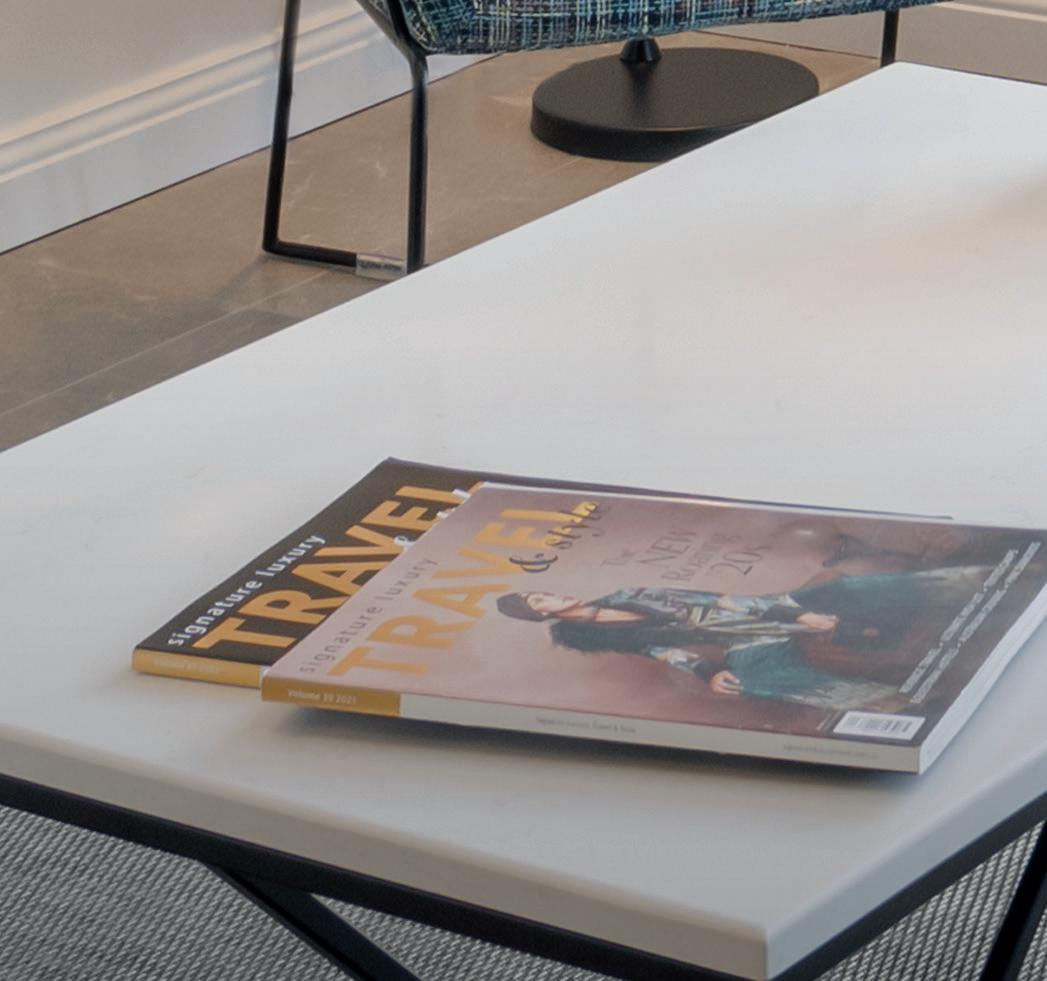
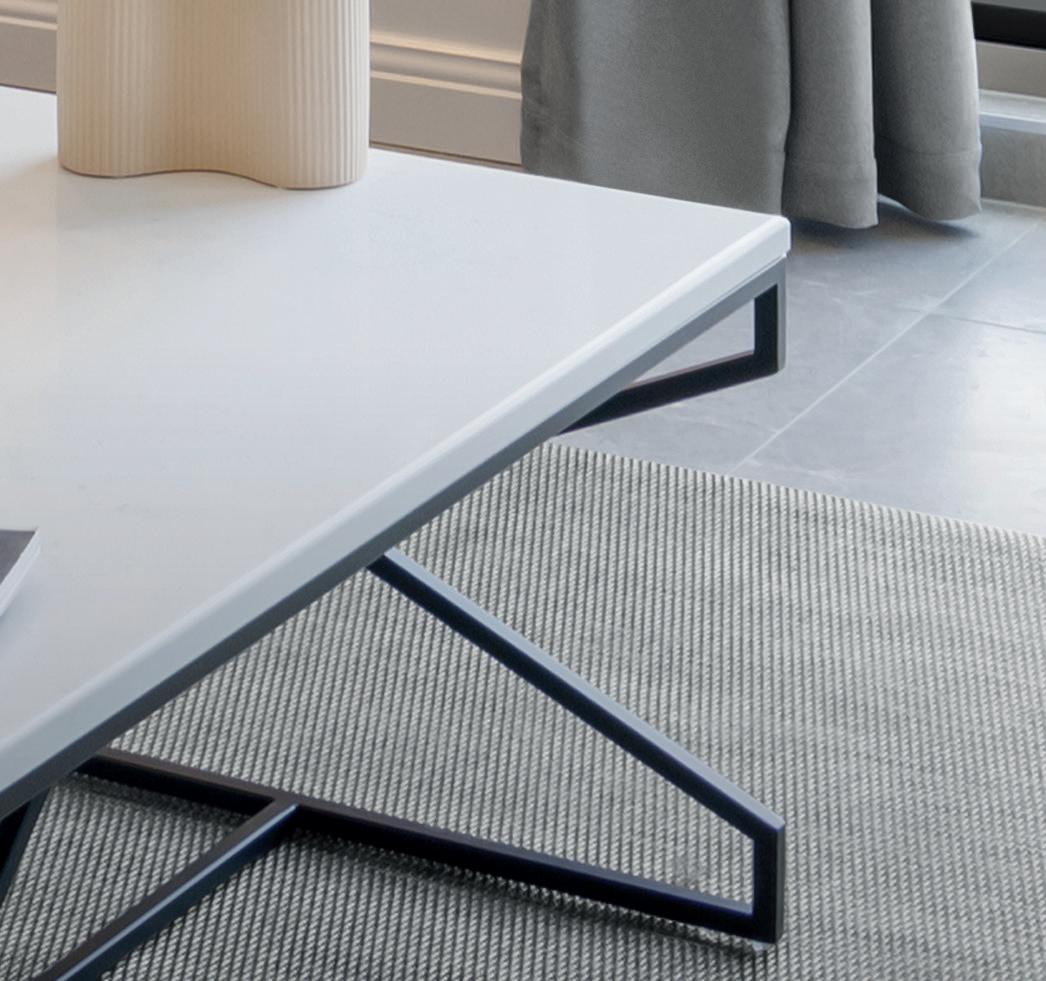
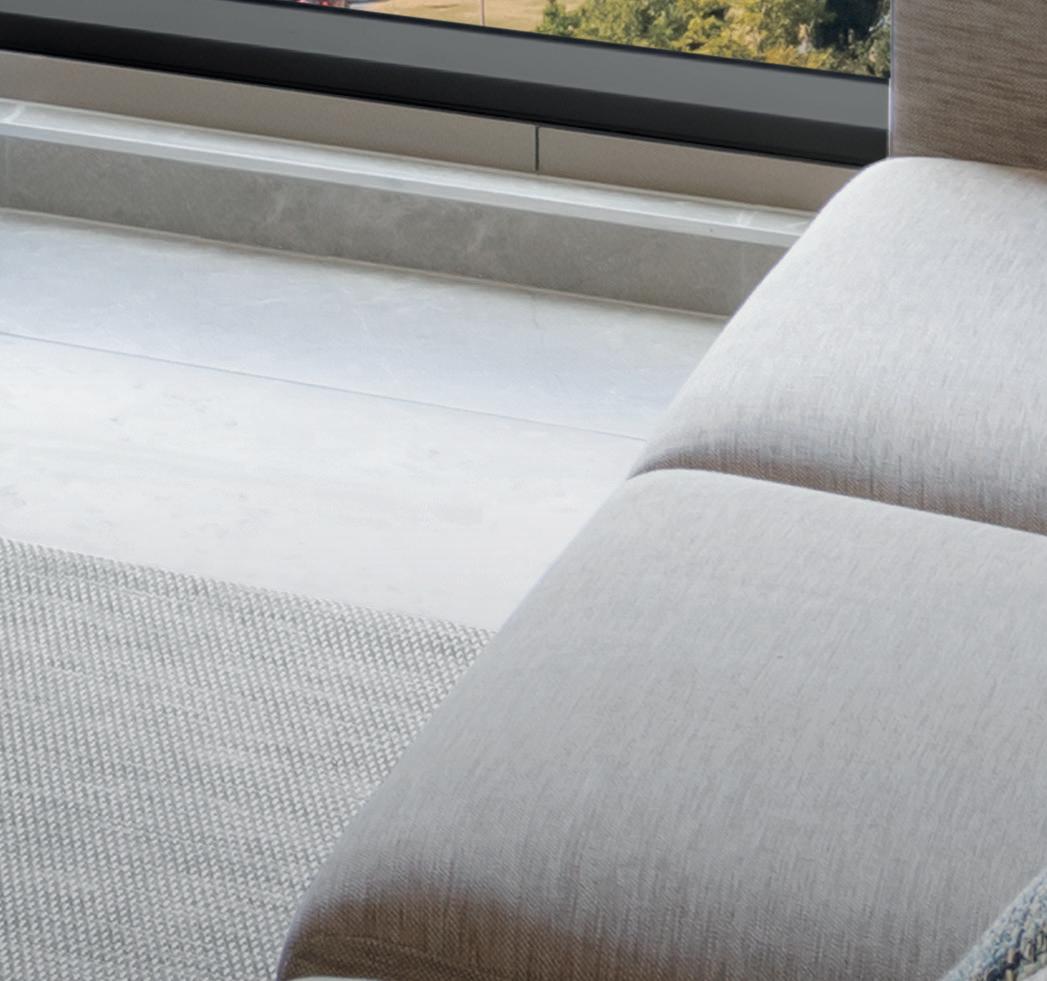


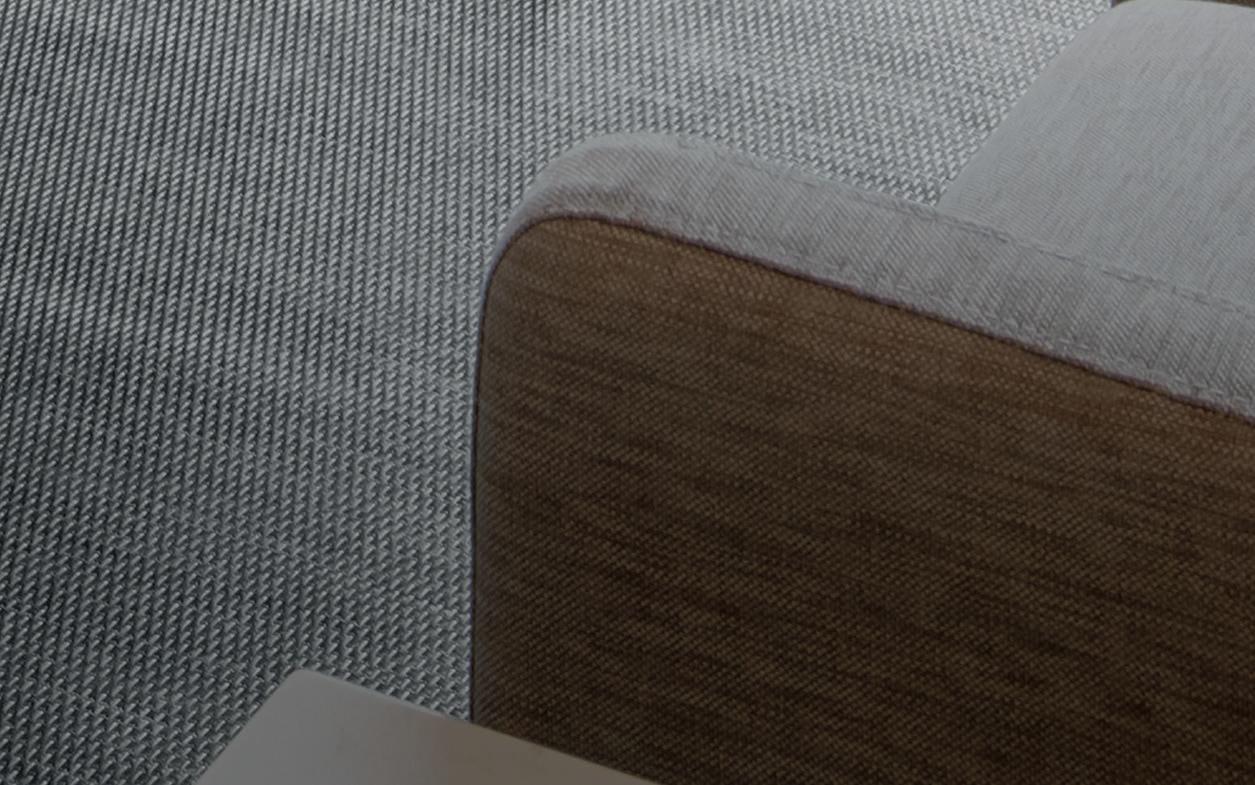



See the fairytale figures that have become a global sensation in this coastal haven.Story by Bek Day
Imagine creatures, some as big as houses and some even bigger, sculpted from recycled wood and reminiscent of Maurice Sendak’s Where The Wild Things Are, scattered through the majestic coastal town of Mandurah (Mandjoogoordap) in Western Australia. The five-metre tall sculptures poke out from towering eucalyptus, sit on cliffs and appear to dip their toes into the sea, pulling visitors into an other-worldly adventure. These are the “giants” of Mandurah (giantsofmandurah.com.au).
Just eight weeks after it opened in November 2022, award-winning Danish recycle artist Thomas Dambo’s thoroughly original sculptures had attracted more than 40,000 people, a 400 per cent increase on the previous year’s tourism numbers in the sleepy town an hour south of Perth.


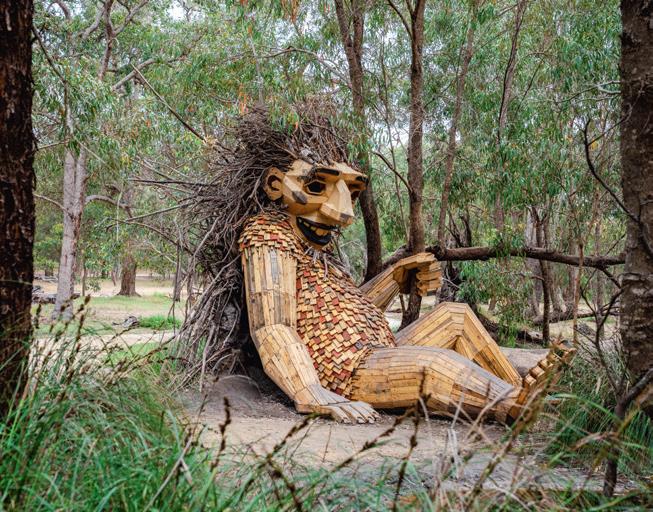
“We nearly broke Mandurah over Christmas; the influx of visitors was just enormous,” says Tabitha McMullan, CEO of FORM: Building a State of Creativity, the not-for-profit arts and cultural organisation that conceived the project. “We’ve been blown away by how people have embraced it.”
Ambitious, immersive and undeniably enchanting, the project –now on track to clock more than 300,000 visitors by the end of this year – is an Australian first and the latest in an international trail of giant sculptures by Dambo, who was profoundly affected by the “fairytale magic” of the West Australian bushland.
“Thomas Dambo’s work is global but at the same time Giants of Mandurah really could not exist anywhere else,” says McMullan. “We have the oldest continuing culture in the world and the Bindjareb Noongar people have been so incredibly generous with their stories and knowledge throughout the project. It’s a truly special experience.”
The award-winning Waterfront Redmanna (redmanna.com.au) is a Mandurah institution for good reason: owner/chef Jason Hutchen has been championing the culinary spoils of the region for nearly two decades, focusing
on a seasonally rotating menu that always circles back to the warm seas of the WA coast. Cone Bay barramundi and Mandurah whiting are both fail-safe favourites.
For a more casual bite with an excellent drinks list, the Thorny Devil Brewery (thornydevil.beer) is well worth
the 30-minute drive south of Mandurah, where the venue – set across two hectares of bush and with a sprawling playground for the kids – dishes up American barbecue and a range of craft beers.
The luxe, self-contained apartments at Seashells (seashells.com.au) offer access
to happy holiday bustle from their location near Mandurah Ocean Marina, where fishing and crabbing or a round of golf on a world-class course are at your doorstep. The real drawcard?
The twinkling Indian Ocean just metres from your balcony.
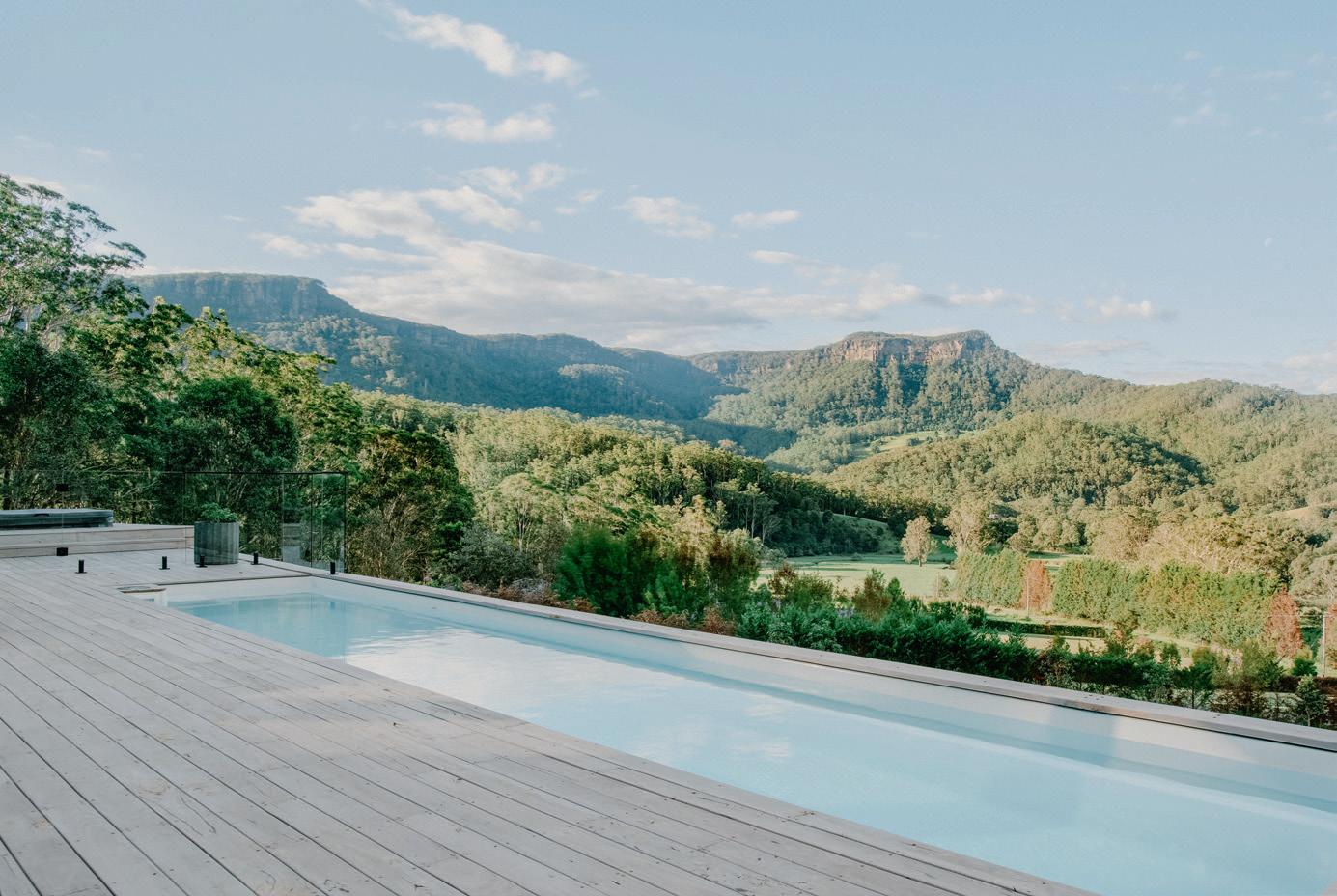 Story by Alexandra Carlton
Story by Alexandra Carlton
Almost every morning at dawn, gossamer clouds conceal the dramatic escarpment that encircles Kangaroo Valley. Just a two-hour drive south of Sydney but on what feels like its own other-worldly plane, the spectacle is best viewed from the deck at Rea Rea Lodge (rearealodge.com.au).
Wake early and wander from one of the five bedrooms to the edge of the infinity pool and it’s just you, the mist and perhaps the call of a cockatoo or the shuffle of a wallaby.
While the outdoors is the scenestealer here, the property itself is a bold supporting act. The broad brushstrokes of the décor are exquisite: soft leather sofas, earthenware ceramics and a huge chef’s kitchen (and private chef, should you want one). The bar fridge is stacked with beer, seltzer and wine for sale, as well as a selection of ready meals. Then there’s the welcome hamper of Kangaroo Valley eggs, fresh bread and marmalade from nearby Morning Cloud Farm. But it’s the little touches that elevate Rea Rea from elegant to excellent: a vase of bright magenta paper daisies in a bathroom, the perfect water pressure in every
shower, a fireplace stacked and ready to light on arrival. If you’ve brought the kids, it’s the treehouse in a eucalypt, a short stroll down the hill.
Drive into Kangaroo Valley village to pick up charcuterie from Hampden Deli or dough from Terra & Mare Pizzeria to shape into woodfired crowd-pleasers in the property’s pizza oven. Detour to the local campground to see the wombats or explore the valley’s contours on horseback or by kayak.
But no stress. There’s something about the swirling mist of a Kangaroo Valley morning that coaxes you to slow down and stay exactly where you are.

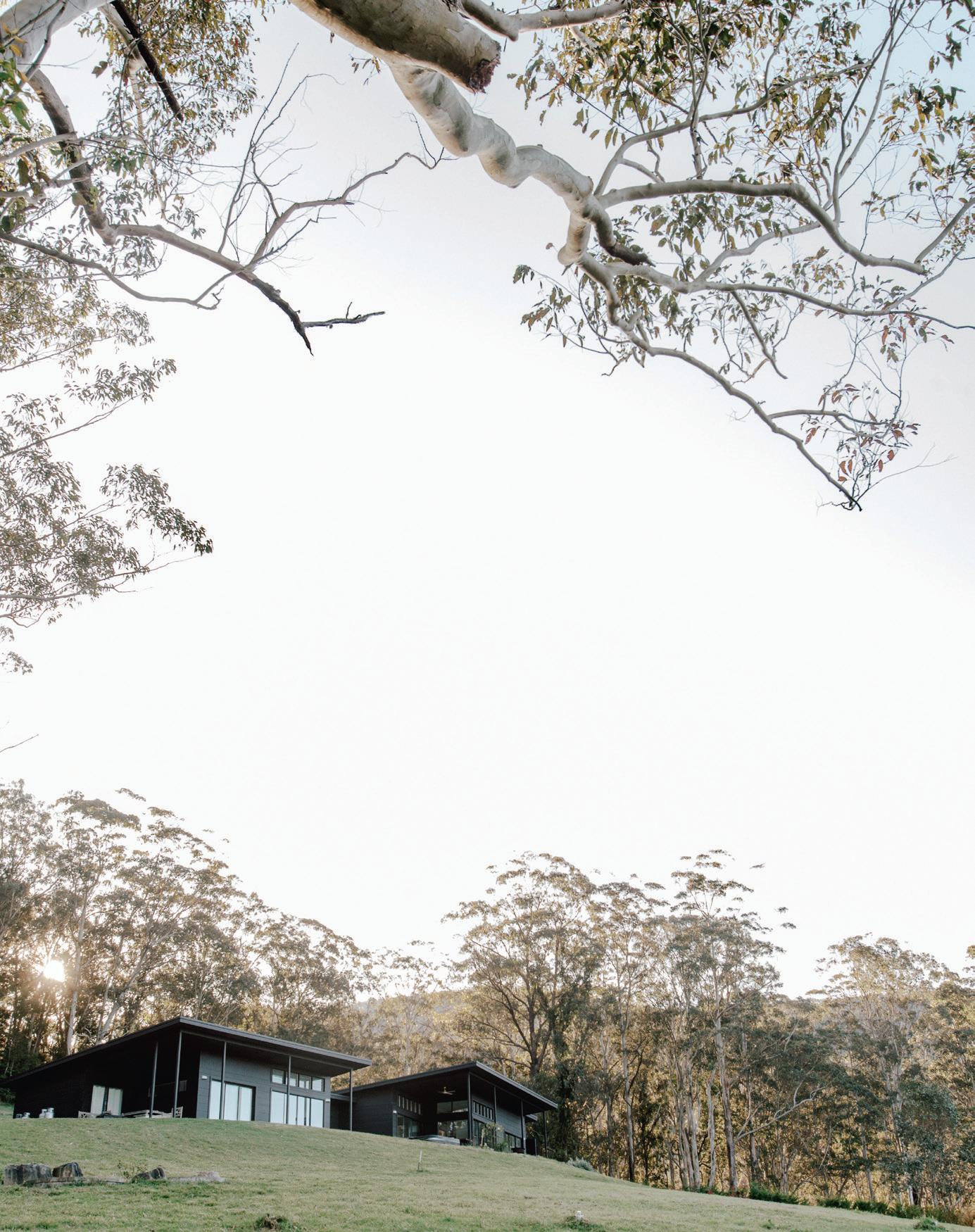

For internationally renowned interior designer Daniel Goldberg, there’s something incredibly dramatic about Sydney’s Circular Quay and its views of the Opera House, Harbour Bridge and the points and coves of the waterway. “You can’t escape the magic of the place and those iconic structures,” he says. “As a city port, it has a dynamism and energy. With the boats coming in and out, there’s a sense of rhythm and flow.”
Goldberg is the founder and creative director of State of Craft, the London-based interior architecture studio behind some of the world’s finest residences, including London’s Shard Place and the sky-scraping One Sydney Harbour.
Now Goldberg has been commissioned to craft the interiors at One Circular Quay, a joint venture between Lendlease and Mitsubishi Estate Asia. Positioned between the Harbour Bridge and the Sydney Opera House, at 1 Alfred Street, the residential tower offers front-row seats to the choreography of the water.

The 200-metre-high tower – with 158 apartments over 58 levels – is designed by late Australian architect Kerry Hill, founder of Kerry Hill Architects. With the view as hero, the honeyed sandstone and crystalline tower has a façade that reflects its surroundings.
Levels 50 to 55 will be home to six full-floor subpenthouses, while levels 56 to 58 will feature a threelevel penthouse with five bedrooms, a private lift and a north-facing pool and terrace. One Circular Quay residents will have access to premium facilities, including an indoor pool, gym, steam room and dedicated 24/7 concierge services.
Goldberg’s vision for the elegant interiors began by imagining the apartments as “private box seats” to make the most of the captivating vista.
“We hope to create a sense of sanctuary, a place where you can close the door and everything is calm.”
“We wanted to create something that feels authentic and beautiful and responds to the nature of the setting. It’s about feeling connected to the experience outside and having that romantic feeling brought back into the interiors.”
Timelessness is a feature of Goldberg’s work, evident in his use of natural materials such as stone and timber. “All the beauty, colour and texture in the apartments comes out of the generous use of these carefully curated materials.”
Residents will have the choice of three colour schemes inspired by One Circular’s Quay’s unique setting. The light and airy Aero palette features pale timber wall panelling and milky Portuguese limestone to create a calming environment influenced by the Sydney sky. Aqua is a deeper, moodier palette with dark-stained oak and stunning natural stone reflecting the harbour’s surface, which, according to Goldberg, “really comes into its own at night”. And Terra mimics the landscape’s distinctive shoreline with warm timbers and green natural stones.
“Regardless of what colour scheme is chosen, we hope to create a sense of sanctuary, a place where you can close the door and everything is calm.”
In addition to refined design and stunning views, the location is second to none for its lifestyle. World-class dining establishments, such as Matt Moran’s celebrated Aria and Peter Gilmore’s acclaimed Bennelong and Quay, are just moments away, along with performances and cultural events at the Sydney Opera House and the Museum of Contemporary Art.
Daniel Goldberg



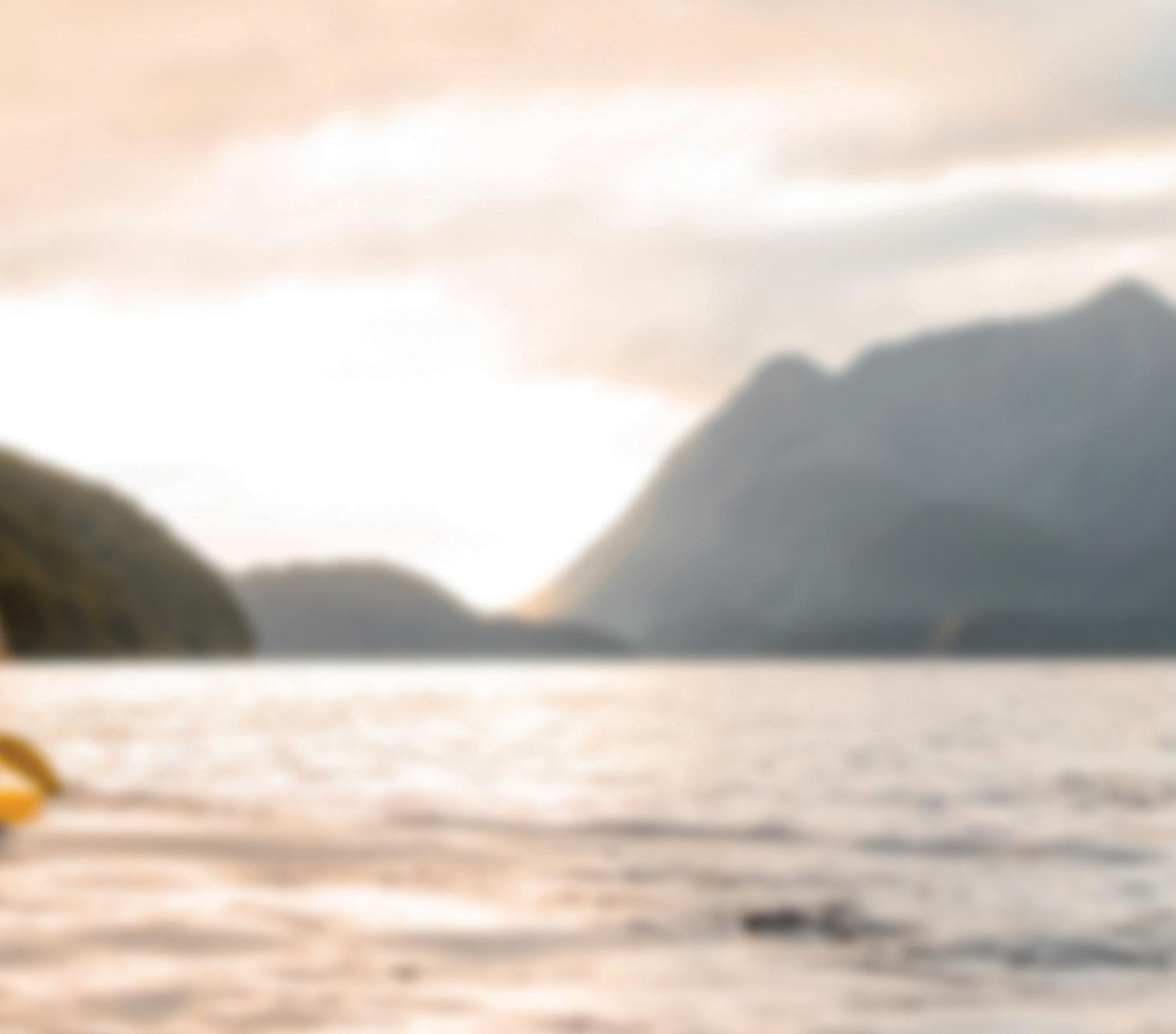



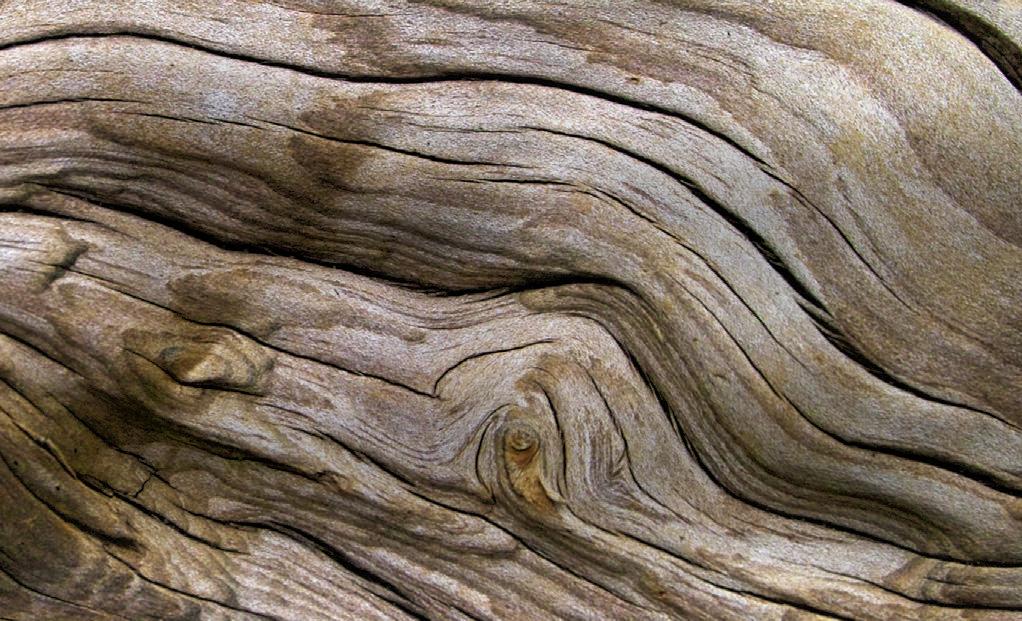
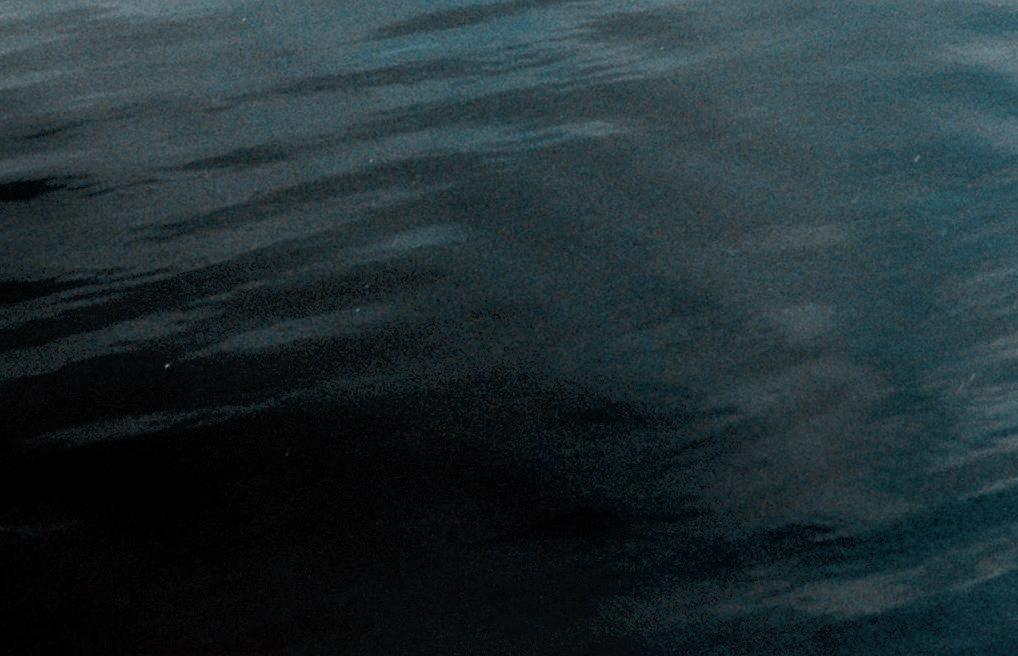

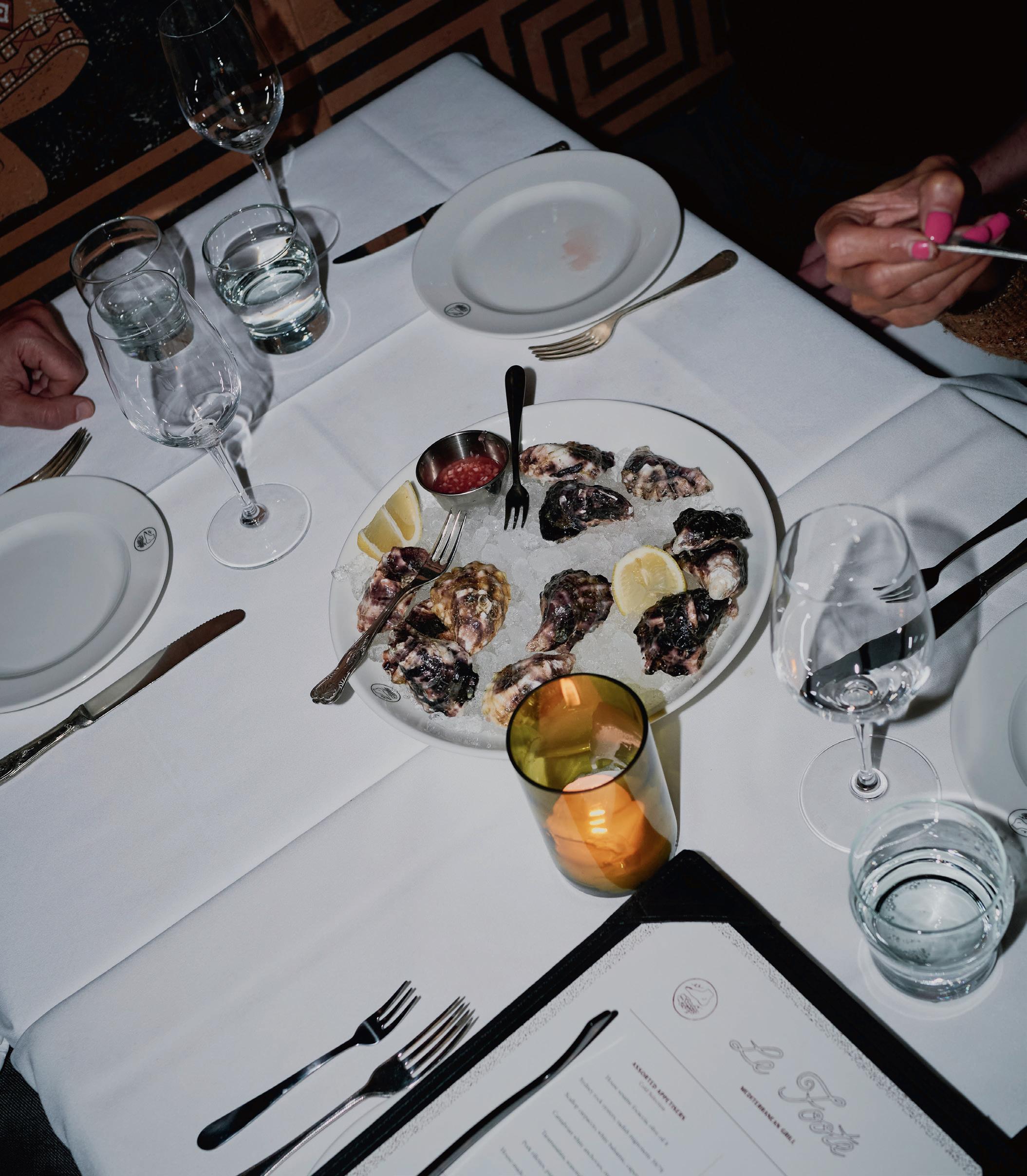
From not-so-humble pub grub to hot-ticket fine-diners, cult cocktails and fancy sweets – these are the trends, experiences and openings to get across now.
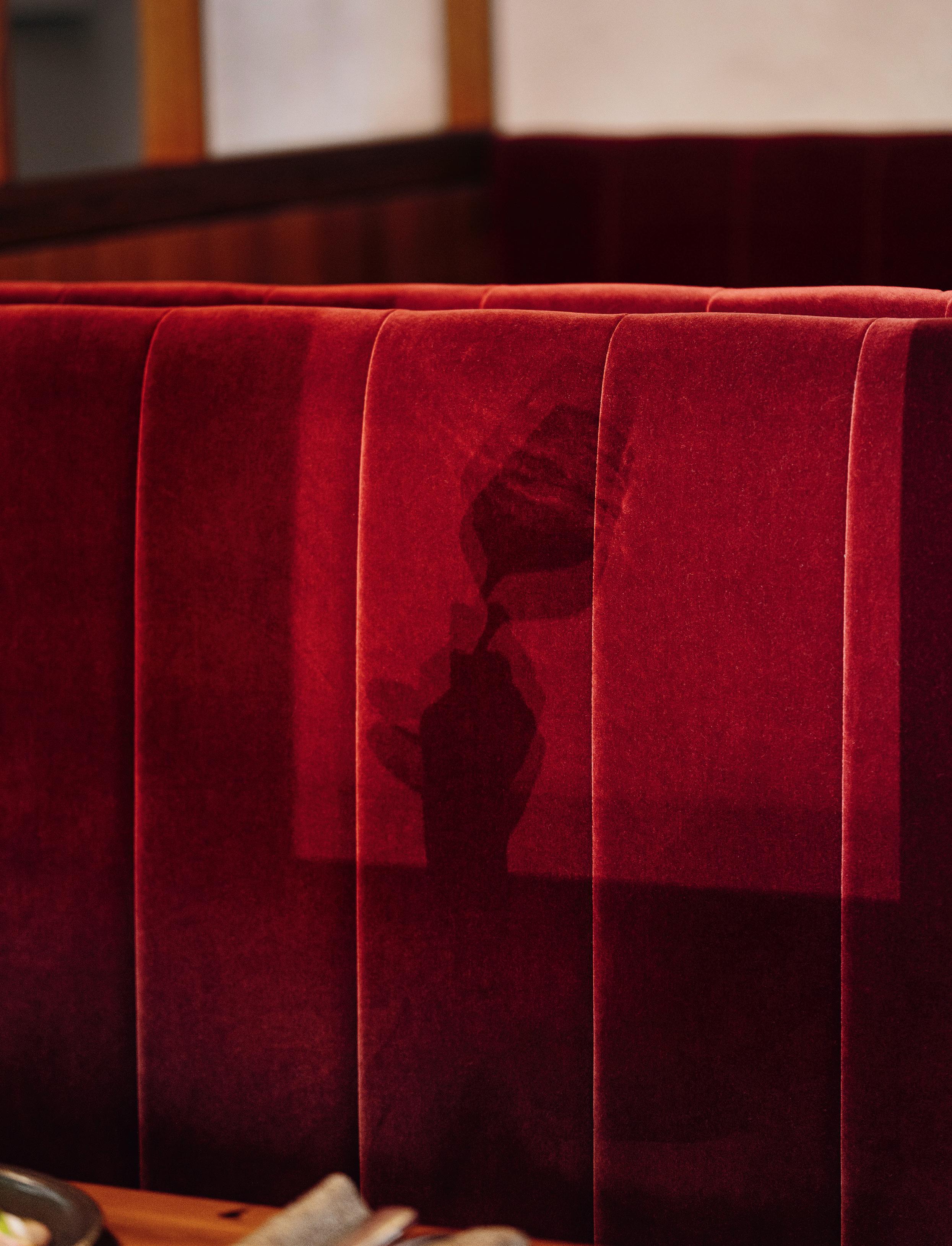 Story by Alexandra Carlton
Story by Alexandra Carlton
Art has always been a major consideration in restaurants, from the famous Mural Room at Grossi Florentino in Melbourne to the d’Arenberg Cube in South Australia’s McLaren Vale (which boasts the largest collection of Salvador Dalí sculptures in the Southern Hemisphere) and the vast gallery of John Glover masterpieces at Landscape inside Hobart’s Henry Jones Art Hotel. But right now the décor stakes seem higher than ever. Sydney’s Petermen has gone retro Australiana with an array of summerfun Ken Done paintings. Step into the bathrooms at Apollo Inn in Melbourne and you’ll find quietly contemplative still lifes from emerging artist Leanne Xiu Williams. And at Palette in Western Australia’s Fremantle, the food is equal partner to the venue’s rotating gallery, which showcases and supports emerging artists.

Remember when Vivid Sydney was just a festival of twinkling lights? Then it expanded to talks and bands, until suddenly it was the biggest event on the harbour city’s winter calendar. In 2023, the three-week party muscled its way in on Sydney’s favourite pastime – eating – with the introduction of Vivid Food, where top chefs from around the world lined up to bang spoons and clash pans. Our favourites included the collab between Bar Morris in the CBD and Cape Town chef Mmabatho Molefe, Kiln’s Mitch Orr working with Jeremy Fox from Los Angeles and the Vivid Sydney Dinner in the Ivy Ballroom helmed by roaming chef Danielle Alvarez and Hotel Centennial’s Ben Greeno. Keep an eye out for what’s cooking in 2024.
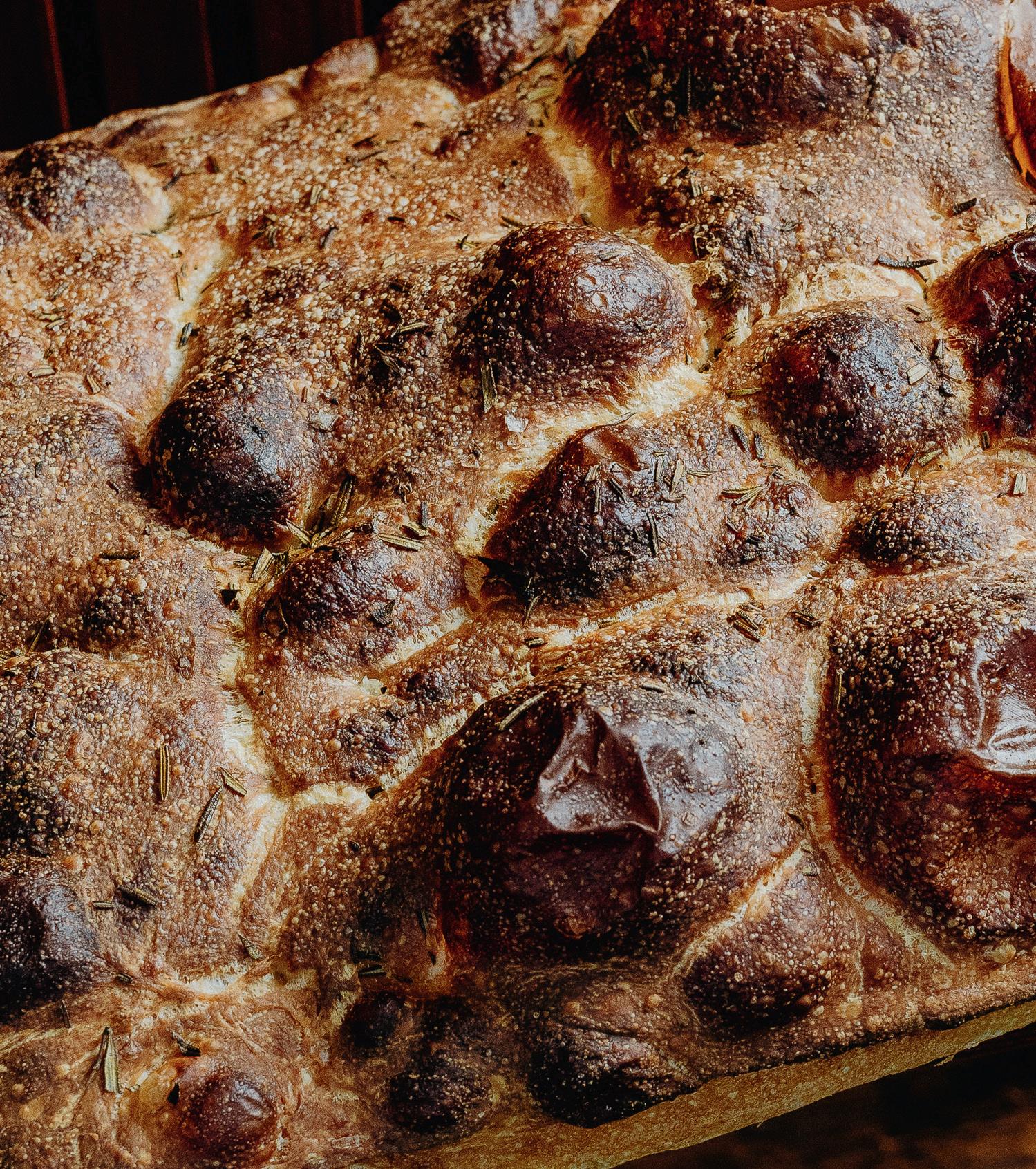
We’ve heard the Italian bubble-pitted bread ordered this way a few times. Just make sure you’re not in formal company because it’s easy to mishear. Where to find the best foc in the country:

Livemore Deli LENNOX HEAD, NSW livemoredeli.com.au
Goodwood Bakeshop MARRICKVILLE, NSW goodwoodbakeshop.com.au
Hope St Radio
COLLINGWOOD, VICTORIA hopestradio.community
Bottega Bandito
PROSPECT, SOUTH AUSTRALIA bottegabandito.com
Ramona COORPAROO, QUEENSLAND ramonatrattoria.com
Jake RodenIf you’ve ever thought that blue cocktails belonged to 1970s Hawaiian honeymoons or re-runs of The Love Boat and that such an unholy colour is probably barely fit for human consumption, think again. It’s time to dust off that old bottle of curaçao because azure cocktails are having a big, boss-energy moment and (for the most part) they’re leaning tasteful, not tacky. Poodle Bar & Bistro in Melbourne has invented a suave Blue Martini, garnished with a sunshine-yellow lemon twist,

while Ante Bar in Sydney’s Newtown mixes a demure concoction called a Bondi Skinny Dip made with melon liqueur, Nigori Sake and Marionette Blue Curaçao that’s enlivened with a sprig of mint. But perhaps the best of the blues in Sydney can be found at louche and likeable steakhouse Clam Bar (see page 88). Though its Blue Daiquiri (right) does verge on kitsch (at least its maraschino cherry garnish isn’t neon red), the drink’s pretty hue comes from spirulina rather than food colouring, making it a far more elegant offering than its retro forebears. Maybe you can’t chase your blues away but you can try drinking them.
Desserts should be all razzle-dazzle – Sugar! Syrup! Sprinkles! – but recently the last course seems to have upgraded from wonderful to work of art. In Sydney, the titan of the genre is the shiny, spherical core apple at Oncore by Clare Smyth but others are following suit: the oblong chocolate bar at Armorica in Surry Hills hides a treasure-trove of chocolate mousse and caramel; and Bottega Coco in Barangaroo has developed a dish topped with lamington mousse that pays homage to the Sydney Opera House. In Melbourne’s South Yarra, Yūgen Dining’s chocolate delice (above) collapses when hot caramel sauce is poured into its centre, while the ABC ice kacang bingsu at Pandan Dessert Bar in the CBD is a hyper-coloured sugar rainbow.

There’s one ’shroom that’s long eluded Aussie diners: the maitake (right), also known as “hen of the woods”. Native to Asia and North America, this expressive and delicately flavoured fungus has recently been cultivated for the first time in Australia by Yarra Valley producer Unearthed Co Mushrooms and you can now find it in dishes at Quay in Sydney, Navi, Omnia and Kisumé in Melbourne and at Adelaide’s Restaurant Botanic. “It goes really well with citrus, light soy and delicate Japanese flavours, and especially with seafood like calamari,” says Unearthed Co Mushrooms founder John Ford. If you’re interested in trying it at home, visit Damian Pike (“the mushroom man”) at Melbourne’s Prahran Market.

Does anyone even cook in their own kitchen any more? Recently, the concept of the roving chef – pop-ups, guest appearances, collaborations – has become the norm (we can’t help but wonder how much time is spent asking where the colanders are kept). Some of our favourites in 2023 – so far – include Gordon Ramsay at Sydney’s Aria and L’Enclume at Bathers’ Pavilion in Mosman; David Thompson springing up at Adelaide’s Arkhé; Rosheen Kaul (left) from Etta in Melbourne appearing at Casa in Perth; and Roman chef Sarah Cicolini making the rounds at Paski Vineria Popolare in Sydney, Barrio in Byron Bay, Biànca in Brisbane and Osteria Ilaria in Melbourne.
 Kristoffer Paulsen
Kristoffer Paulsen

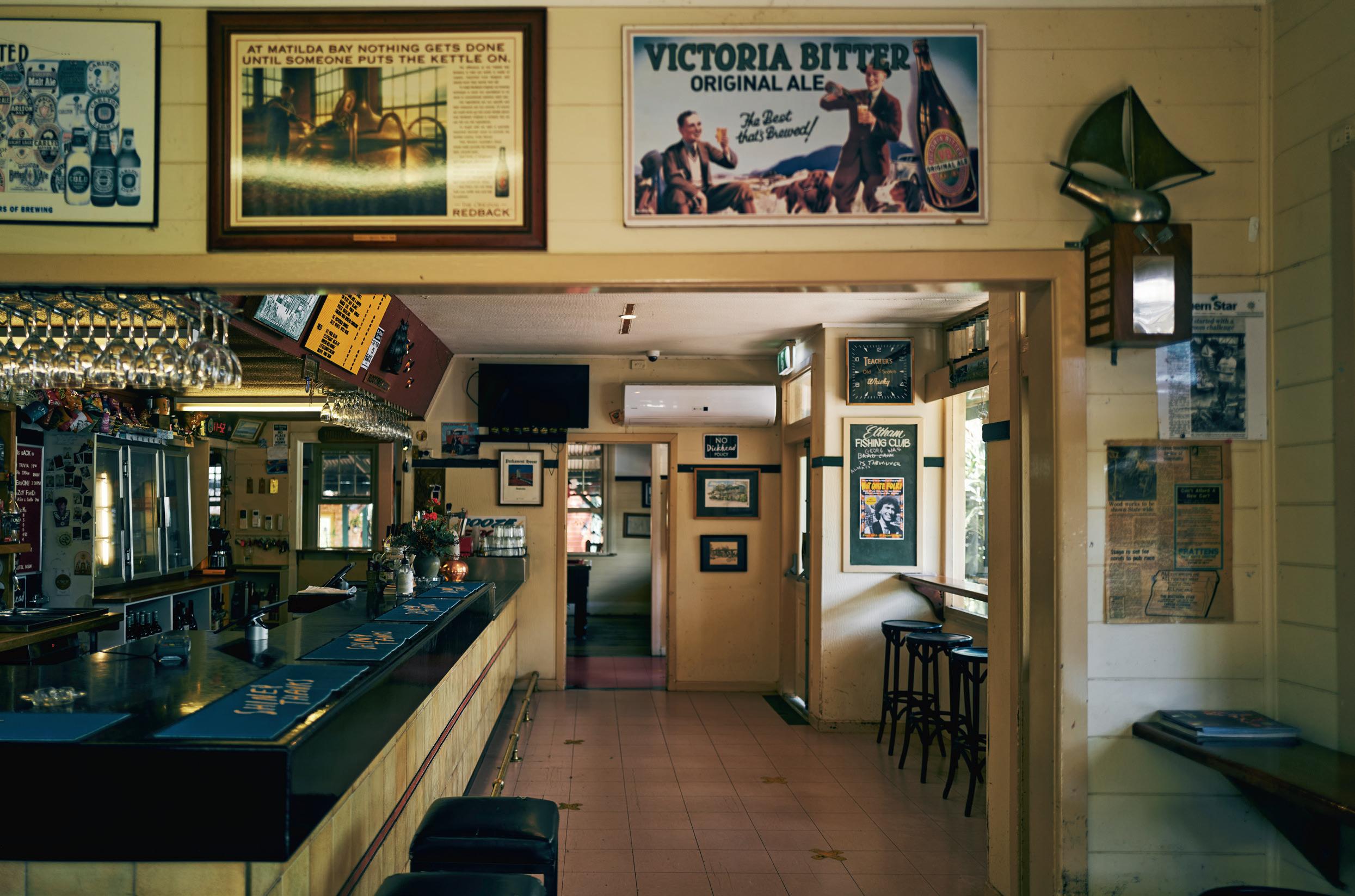
A character-packed boozer is as Australian as a blue heeler or a Bunnings sausage sando. But even the most beloved trad pub needs a bit of spit and polish to give those tired carpets and sagging floorboards some sparkle. Enter top-name chefs, rooftop bars and considered drinks lists that celebrate the small-scale, the independent and the local. Here’s where to go to sink a cold one.
Cricketers Arms Hotel
SURRY HILLS, NSW fb.com/cricketersarmspub
“Let’s go to the Cricketers” has been a rallying cry of beer-loving, trivia-happy Sydneysiders for decades. Now this beloved inner-city venue has gone a little bit fancy – upstairs at least – with the addition of Chez Crix, a French-accented bistro serving up confit duck, flounder grenobloise and Sunday roasts.
Eltham Hotel
ELTHAM, NSW elthampub.com.au
A jumble of mismatched floral plates, op-shop finds and a rotation of local live music characterises this charming revamped pub, about 30 minutes inland from Byron Bay. Former Saint Peter head chef Alanna Sapwell-Stone is newly installed on the pans, creating what she calls Women’s Weekly -style cooking with a twist: elevated quiches, sausage rolls and a strawberry gum roly-poly.
Central Club Hotel
NORTH MELBOURNE, VICTORIA centralclubhotel.com.au
A staunchly all-Australian drinks list is the jewel of this 155-year-old stunner, which reopened with a new, graceful look in 2023. The wines are particularly interesting and lean new wave, while the kitchen serves all the classics: schnittys, burgers and steaks. The charcuterie deserves a look, too, with free-range salami made in Lismore, NSW, and Wagyu bresaola from Victoria’s Otway Ranges.
thescenichotel.com.au
SA
The Scenic’s fairytale grounds – all twinkling lights, mature conifers and elms – make it one of the prettiest beer gardens around. And with its new head chef, Jordan Latour (formerly of Tasmania’s Fico and Tom McHugo’s), the menu at this Adelaide Hills beauty is equally special. Expect the likes of house pork terrine with mustard, Port Lincoln mussels with preserved chilli and kangaroo loin schnitzel in pepper sauce.
thewickham.com.au
This proudly LGBTQIA+-friendly Brisbane favourite has just emerged from a $3 million facelift and the old girl is looking grand. There’s a ’70s disco theme to the fit-out: riotous wallpaper, feathered light fittings and even a Jennifer Coolidge print. Tacos and pizzas lead the food offering and there’s a dedicated “pup menu” for four-legged guests.
HOBART, TASMANIA
telegraphhotelhobart.com.au
Unlike many pub restorations that are the handiwork of sleek hospitality groups, this hotel has been in the same family’s hands for more than 30 years and it’s that family – brothers Stephen and Brendan Bourke – who have spearheaded its revamp. It now has a sleek rooftop bar (with igloo dining in winter), a wine and beer list that celebrates Tassie drops and pub classics made with stellar local produce such as Cape Grim beef and Norfolk Bay oysters.
The Claremont Hotel CLAREMONT, WA
theclaremont.com.au
Big-name sommelier Matt Skinner leads the revitalised wine list at this historic Perth pub that reopened this year following a staggering $12-million makeover. Choose from a range of producers from as nearby as Margaret River and as far afield as Burgundy or Beaujolais, and share a seafood platter that includes Shark Bay prawns and Albany oysters. It’s an enjoyable way to spend a weekend arvo.
NSW swillhouse.com
Capacity: 425
Style: A Mediterranean seafood grill split over several spaces in the historic Rocks area.
Don’t miss: The Two-sip Negroni.
MELBOURNE, VICTORIA morrishouse.com.au
Capacity: 550
Style: Two bar/restaurants, a comedy club and a rooftop bar across four elegant levels.
Don’t miss: The Frozen Iced Vovo Margarita.
SUBIACO, WA subicontinental.au
Capacity: 400
Style: A busy corner tavern on a grand scale.

Don’t miss: The rib-eye for two with all the fixings.
COCKATOO, VICTORIA chae.com.au
Capacity: 6
Style: Refined Korean cooking in the Dandenong Ranges at the home of inventive chef Jung Eun Chae.
Don’t miss: Chae’s housemade vinegars and pickles.
FOOTSCRAY, VICTORIA matsuxbar.com
Capacity: 4
Style: Ceremonial kaiseki where every dish is an edible artwork.
Don’t miss: It’s chef’s choice so everything will be fresh and seasonal but the sake pairing is a perennial winner.
BOONAH, QUEENSLAND blumerestaurant.com.au
Capacity: 24
Style: Sharp and seasonal cooking in the Scenic Rim.
Don’t miss: The extended set menu, for even more of chef Jack Stuart’s hyper-local dishes.
The last few years have been the era of the French bistro and the New York-style steakhouse. Now, relief from all those terrines and T-bones comes from a crop of flavour-forward South-East Asian restaurants taking their cues from Thailand, Korea, the Philippines, Malaysia, Vietnam and China (or mashups of any of the above). They’re bright, bold and rock’n’roll – and we can’t get enough.
Hey Chú SYDNEY, NSW heychu.com.au
Chef Cuong Nguyen from Marrickville’s Hello Auntie has transformed the first floor of a CBD pub into a Ho Chi Minh City laneway, serving red-hot mala chicken wings and crafty wines late into the night.
Soot BARANGAROO, NSW sootbbq.com.au
This Barangaroo banger is sizzling up Korean barbecue with a harbourside sparkle. The meat has a minimum marbling score of seven and tastes best wrapped in a perilla leaf, ssam style.
Thai Baan MELBOURNE, VICTORIA thaibaanmelbournecbd.com.au
The ceiling is adorned with colourful flags and the walls look like
a carnival but the food is the liveliest part of all at this brand-new Bourke Street spot. The spicy boat noodles are a must.
Kiin ADELAIDE, SA kiinrestaurant.com.au
Ben Bertei (formerly of Brisbane’s Same Same and Longtime) has transplanted his sophisticated brand of Thai-inspired eats to Adelaide. The grilled kingfish collar with chilli jam and Thai basil has become an instant favourite.
Paper Tiger ADELAIDE, SA papertiger.com.au
Malay and Indonesian flavours form the backbone of this Rundle Street melting pot, headed by Malaysian-born chef Benjamin Liew, though there are plenty of nods to the rest of Asia. The chilli roasted eggplant with sambal terasi and coconut is magic.

Lucy Luu MOUNT HAWTHORN, WA lucyluu.com.au
Spicy Strawberry Margs, chilli salt-and-pepper corn ribs, sriracha prawn toasts – everything at this buzzy, neon-bright diner is a party, especially the bottomless brunch.
Nonda NEWSTEAD, QUEENSLAND nonda.restaurant
This newcomer doesn’t play by any rules except “delicious”. Order the clam croquettes with shaoxing wine and bechamel, sashimi tacos and Chinese-spiced lamb ribs with labne.
Miss Mi PERTH, WA missmiperth.com.au
A lively eatery inside Novotel Perth Murray Street, Miss Mi is ostensibly pan-Asian but leans heavily into chef Alex De Leon’s Filipino heritage. Don’t leave without trying the Manila clams with squid XO sauce.

Pilloni WEST END, QUEENSLAND pilloni.com.au
This deep dive into genuine Sardinian cooking is one of the most exciting things to open in Brisbane’s West End. Expect fish cooked over coals, bitey pasta and classic 72-hour roasted suckling pig.
Clam Bar
SYDNEY, NSW clambarsydney.com
If you’re a fan of Australia’s gazillion New York-style steakhouses, make sure you try this one. Like all of Dan Pepperell and team’s venues (Pellegrino 2000 and Bistrot 916), there’s a wink and a nudge everywhere you look at Clam Bar, from the huge tin marlin on the wall to the upmarket diner desserts. Steaks come with every trimming imaginable, the prawn cocktail is one of the best in the city and you’ll dream of the Tex-Mex-style creamed corn for weeks.
Megalong
MEGALONG VALLEY, NSW megalongrestaurant.com.au
The Blue Mountains has been begging for a restaurant like this: spectacular bushland and escarpment views; legit farm-to-table menus (they grow everything from vegetables and fruit to cattle and sheep); and a wide-armed welcome. Add it to your “weekend away” list.
Alta FITZROY, VICTORIA
altatrattoria.com
A lot of people are cooking pasta in 2023 but few are doing it with the panache of Alta trattoria. It’s nothing overly clever or brave, just exceptional North-West Italian food – the vitello tonnato is also a must – playing nicely with mainly Italian wines.
Apollo Inn
MELBOURNE, VICTORIA apolloinn.bar
If your heart belongs to Gimlet, your loyalties will be tested when you visit its pretty new neighbour and sister venue, Apollo Inn. A cocktail bar at its core (don’t skip the Martini), there’s a seductive selection of small share plates such as raw tuna sobrasada and a silken crème caramel.
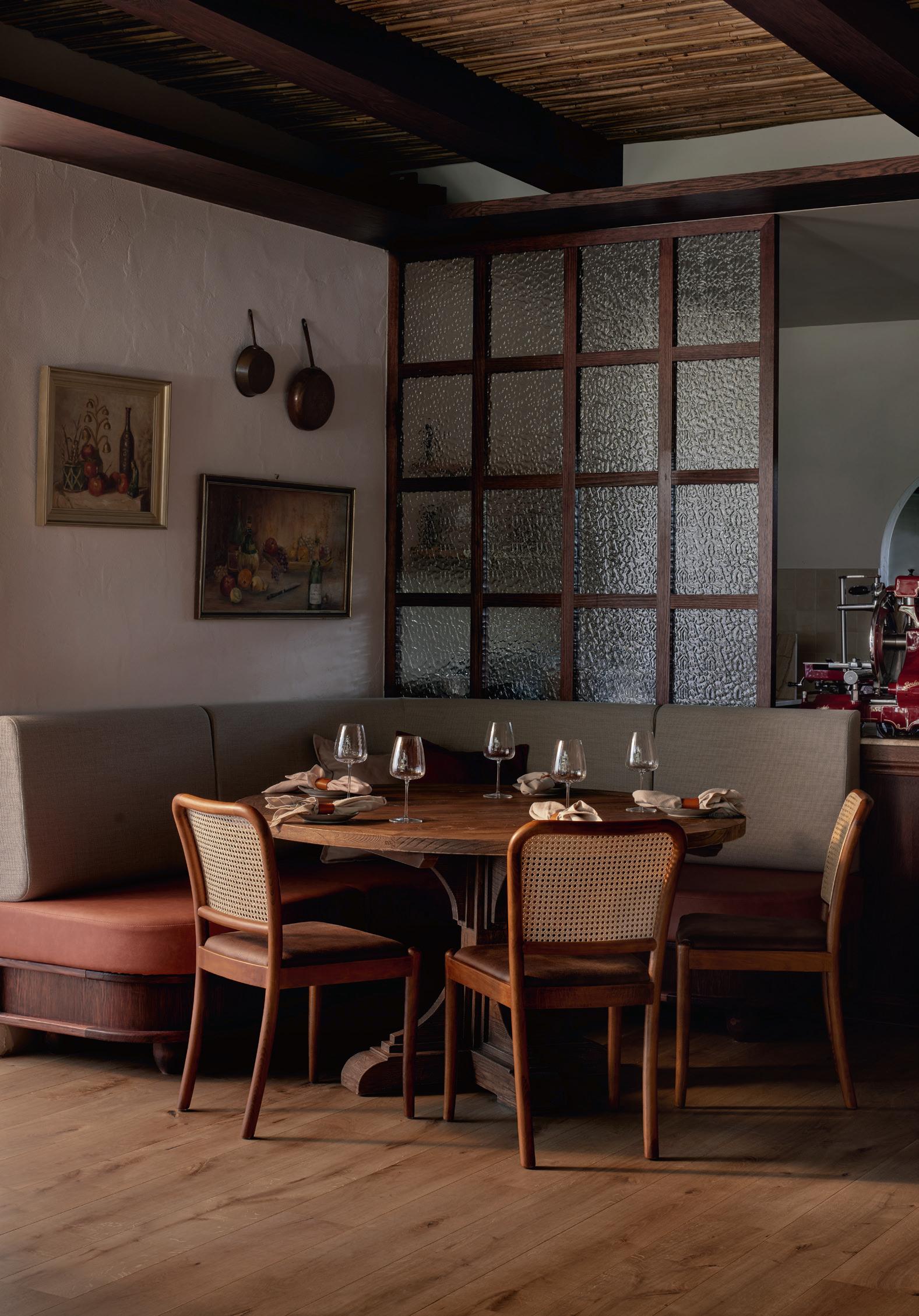
Komeyui SPRING HILL, QUEENSLAND komeyui.com.au
Hokkaido-born chef Motomu Kumano has brought his brand of artful omakase from Melbourne to Brisbane with this luxurious and elegant Japanese diner. The lunchtime house special bento boxes are almost as beautiful as they are delicious.
Yiamas SUBIACO, WA yiamasperth.com.au
A grooving Greek taverna in Subiaco that treats the classics with equal parts reverence and fun. The restaurant’s flame-grilled kontosouvli meats, vegetables and seafood, along with mastiha cocktails, are what gregarious group dining is all about.
Patch Kitchen & Garden STIRLING, SA patchkitchen.com.au
At this little bit of homemade heaven in the Adelaide Hills from Andrew Davies, the chef/owner of Adelaide favourites Osteria Oggi and Maybe Mae, you’ll find comforting pastas, pastries and pies along with generous service.
Omotenashi
HOBART, TASMANIA omotenashihobart.com
This temple to Japanesecentric snacks and stories is the artistry of former Port Cygnet Cannery alumni Lachlan Colwill and Sophie Pope and it’s one of the most intriguing restaurants to open in recent years. With just 12 seats per sitting, this is considered dining at its best.
Such and Such CANBERRA, ACT andsuchandsuch.com
The galleries and lake are great and all but chef Mal Hanslow’s blue-eye cod with crazy water is possibly the best reason to visit Canberra right now. Everything about this arty, exciting little spot from the team behind fine-diner Pilot in Ainslie is designed for a good time.
Wineries all around the country are being spruced up – and we’re not just talking about a lick of paint. At 26-year-old Bird in Hand in Woodside in the Adelaide Hills (above; birdinhand.com.au), a renovated cellar door with a manicured lawn and terraced garden kicked things off but the showpiece is the new 40-seater restaurant, led by former Restaurant Botanic head chef Jake Davey, opening this month. “We’re delighted with it,” says Bird in Hand founder Andrew Nugent, who lives onsite with his wife, Susie, and three kids. In the wine business, he adds, “you have to keep moving forward and always improving”. A change is as good as a holiday – and in this case, a good reason to book a holiday in one of Australia’s wine regions.
T’Gallant Vineyard
MORNINGTON PENINSULA, VIC tgallantvineyard.com.au
The property’s restaurant has new Tuscan-inspired interiors and a refreshed menu, though the famous woodfired pizzas are still on the pass.
MACEDON RANGES, VICTORIA passingclouds.com.au
Located in Musk, just outside Daylesford, the winery’s renovated dining space overlooks chardonnay and pinot noir vines, while the menu has fire-cooking at its heart.
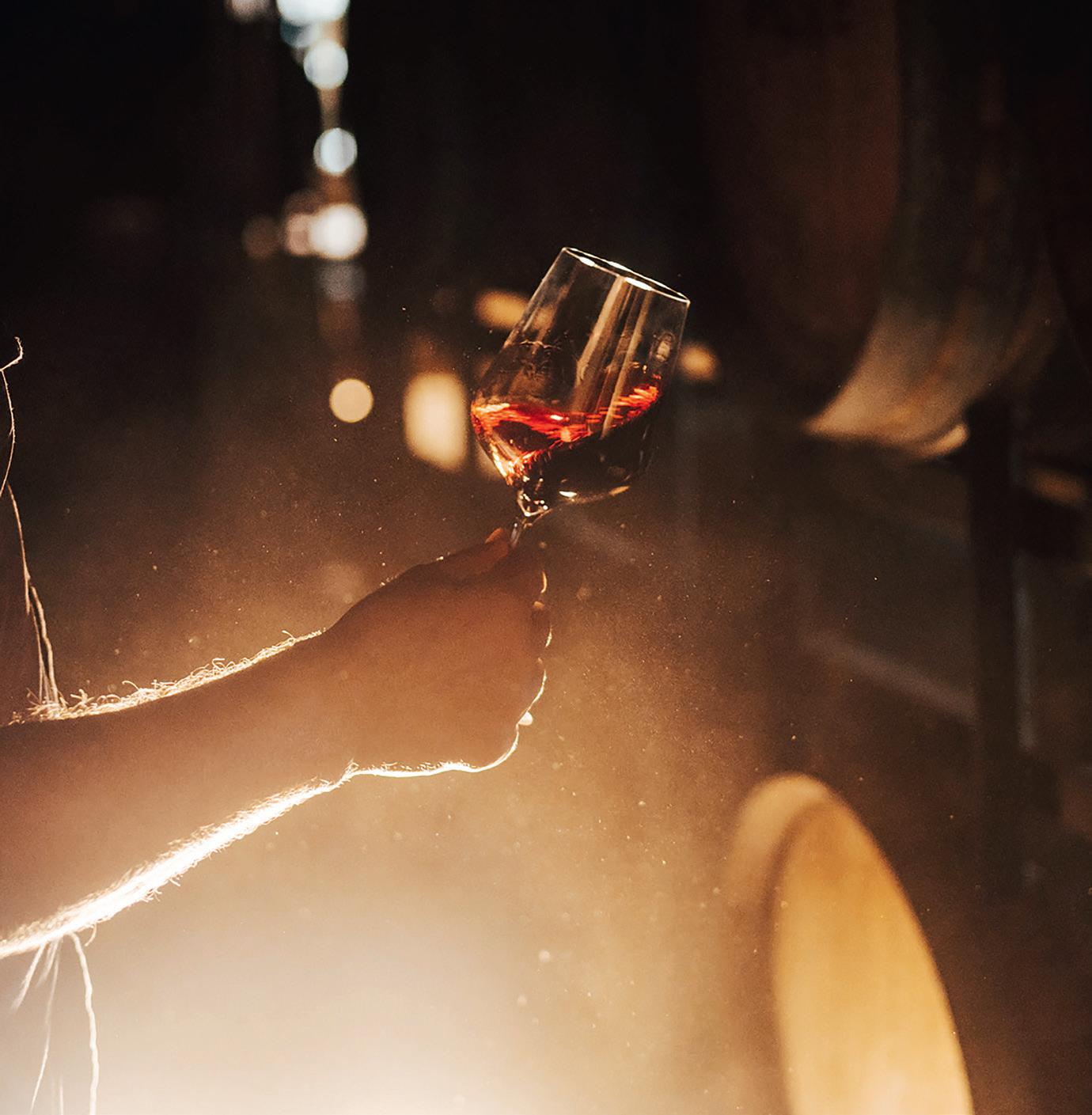
ADELAIDE HILLS, SA nepenthe.com.au
Boutique architect firm Black Rabbit has reimagined the cellar door, which now includes a VIP tasting room and indoor/outdoor grazing.
Nick O’Leary Wines
CANBERRA DISTRICT, NSW nickolearywines.com.au
The new Heywood restaurant is serving sharp-shooting small plates alongside killer cocktails.
Michelin-starred dumplings, Peking duck and the street snacks that can’t be missed. Here’s everything you need to eat in Hong Kong.
Story by Hannah-Rose Yee
Photography by Harold de Puymorin



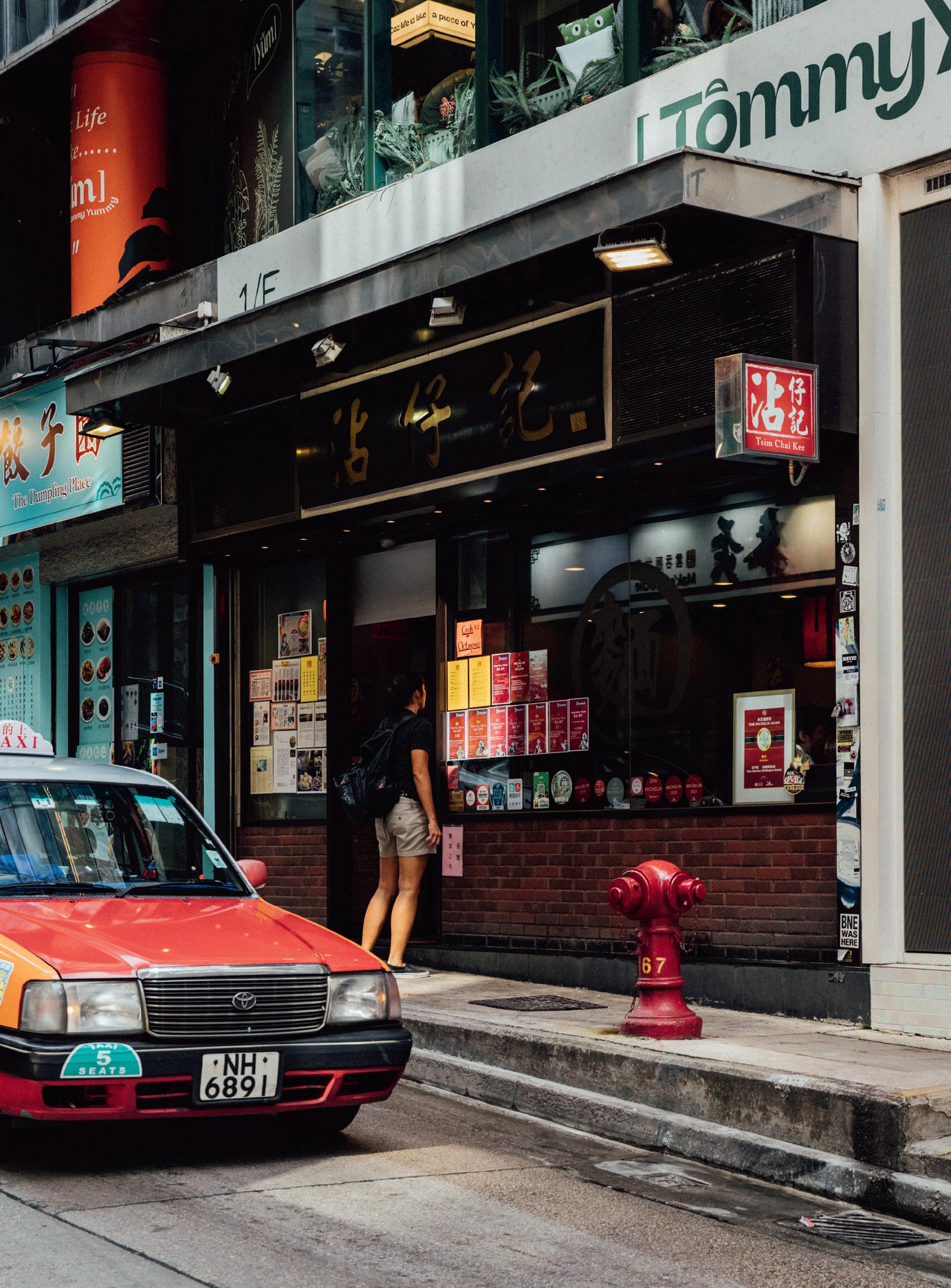
Walking into this restaurant (holee fook.com.hk), you’ll be struck first by the décor. The red velvet banquettes, dancing lions embroidered with silver thread on the wallpaper – it could be from a scene in Wong Kar-Wai’s sumptuous cult film In The Mood For Love. This decadent design is no accident. Ho Lee Fook is arguably the best restaurant in Hong Kong, a modern Cantonese establishment founded in 2014 in the heart of hip SoHo. While anything you eat here will be outstanding, don’t miss the Peking duck or Ho Lee Duck, as it’s known, the eatery’s singular take on the classic dish. The duck slices are closer to a Hong Kong-style char siu or roast goose – crisp skin and tender, sweet meat, served in steamed pancakes with pickles and spicy Sichuan mala sauce, the house specialty. The duck takes three days to marinate so pre-ordering is essential.
Wellington Street in the bustling metropolitan hub of Central is packed with wonton noodle restaurants, including the main branch of Mak’s (maksnoodle.com), one of the city’s original purveyors and an eatery that once hosted the late celebrity chef Anthony Bourdain. While Mak’s is justifiably world-famous, there’s something about the simplicity of
Tsim Chai Kee (Shop B, 98 Wellington Street; +852 2850 6471), just across the road, where you can order a bowl with a choice of only three toppings –dumplings, beef or fish balls. The thin ribbony noodles are the right side of chewy and the warm broth is delicate and fragrant with spices but it’s the dumplings that stand out here. Order sweet prawns mixed with pork mince and bundled into a wonton wrapping. Fans have dubbed them “ping pong” because of their spherical shape and they are the ideal size to scoop up and eat whole.
This place does exactly what it says on the tin: crab that is blow-yourtastebuds-out hot. The beloved restaurant on Lockhart Road in the Causeway Bay area of Wan Chai began life in the 1990s as a hawker stall a little closer to the harbour, selling what locals call typhoonshelter food, which are meals made by fishermen taking refuge when the seas are too rough. The signature crab at Under Bridge is exquisite, wok-fried sweet meat served whole and topped with crisp garlic and chilli. Yes, it is possible to order a “slightly spicy” version on the eatery’s Richter scale but why would you? The punchy heat from that moreish topping is what everybody in the queue makes the pilgrimage for.
This signature Cantonese dish is an absolute Hong Kong must-try – if you leave the island without seeking it out, you have only yourself to blame. Make a beeline for Kam’s (krg.com.hk) in Wan Chai, founded by the grandson of one of the city’s most renowned goose guys, Kam Shui-fai of Yung Kee restaurant. (The third generation has now outperformed the first, with Kam’s earning itself a Michelin star.) There’s an extensive menu featuring everything from goose sausage to char siu and roast duck but what you have to order is a roasted goose leg with nothing but the homemade plum sauce. The meat is tender, the skin crisp and the flavour salty and rich. It’s more than worth the hour or so you might have to wait in the queue that snakes down Hennessy Road.
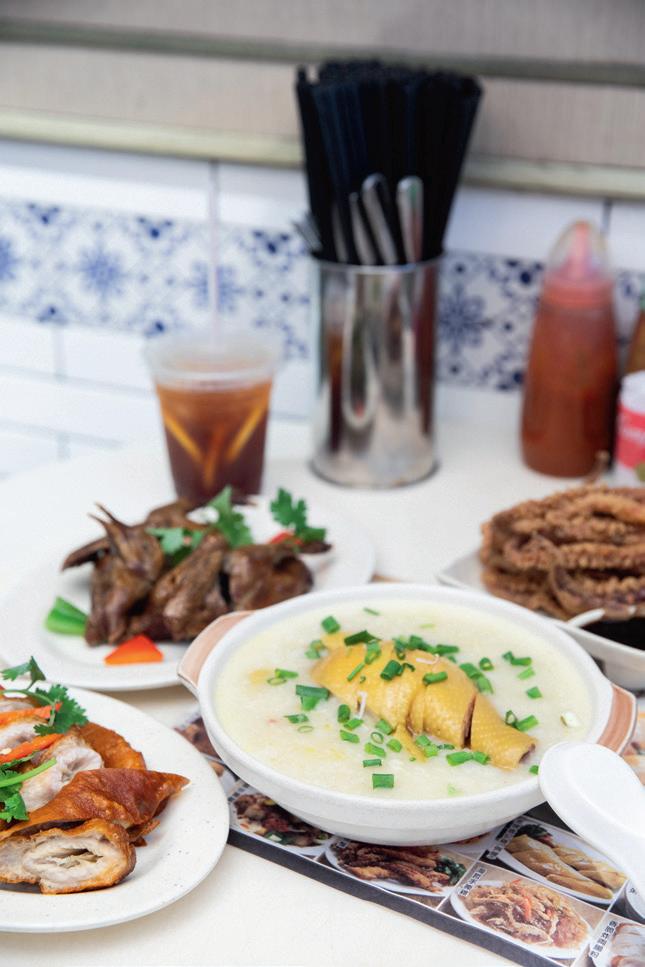

At a tiny restaurant nestled among the maze of tight-knit alleys and flower market stalls in Mong Kok, Sun Kee Chicken Congee (Shop 5, G/F, Hung Hay Building, 1 Fa Yuen Street; +852 2385 2669) serves a deliciously thick, starchy stew that’s made with three types of rice and fragrant poached chicken that’s topped with a generous handful of herbs. The super-smooth soup is cooked low and slow for so long that the rice practically melts away.
The Chairman for char siu
Char siu or barbecued pork is such a Hong Kong staple that you can get it at almost every restaurant in the city, as well as some streetfood stalls. Kam’s and Rùn (see below) do great versions but the one you’ll find at The Chairman (thechairman group.com), a modern Cantonese restaurant on Wellington Street in Central, is second to none. The highest quality blade pork is smoked in a woodfired oven to achieve a fine balance of aroma and taste. It’s a dish befitting this sophisticated venue, which regularly ranks among Asia’s 50 Best Restaurants.

In Cantonese, yum cha means “drink tea” and there’s no better place to drink tea than at Rùn, inside the elegant St. Regis hotel (stregishong kong.com) in Wan Chai. Here, maitre’d and tea master Kezia Chan knows exactly what brew best complements the intricate dumplings that executive chef Hung Chi-Kwong dreams up: perhaps a Wagyu beef puff with pastry so light that it dissolves in the mouth, an impeccable har gao in its own mini bamboo steamer or a sticky glutinous rice dumpling in the shape of an apple. These are the dumplings that have earned Rùn not one but two Michelin stars and Chan prepares tea worthy of the feast: a fragrant brew of chrysanthemum, jasmine and

white lily. Each cup is poured with the same care and consideration that goes into this sensational yum cha service, which is available only at lunchtimes. Every table is full of well-heeled women – their designer handbags even get their own chairs.
In the city’s fabric district, Sham Shui Po, there’s a nondescript blueand-white-striped awning at a corner stall called Hop Yik Tai (121 Kweilin Street; +852 2720 0239). Here you’ll find Hong Kong’s finest cheung fun, a traditional Cantonese snack that consists of rolled rice noodles doused in an addictive mix of peanut sauce and sweet soy dressing. To fit right in, demolish your plate of silky noodles in the alleyway with the locals.
Afternoons at the Mammy Pancake (mammypancake.com.hk) outpost on Wan Chai’s namesake road are cacophonous as children line up for their after-school treat. They know that these egg waffles – light, airy pockets that look like bubbles thanks to the mould they’re cooked in – are the best in Hong Kong. Some people like to fill them with slices of banana, chocolate chips or roasted chestnuts but this street food is just as delicious unadorned straight from the grill.
Across the harbour in Yau Ma Tei on the Kowloon peninsula, the Australia Dairy Company (G/F, 47 Parkes Street, Jordan; +852 2730 1356) offers a Hong Kong/Western fusion at a traditional café (cha chaan teng). Order mugs of milky tea and plates of thick white buttered toast alongside a rumpled, unmade bed of creamy scrambled eggs, as well as slices of char siu in chicken soup. Ever since it opened its doors in 1970 and no matter the time of day, the Australia Dairy Company (the name refers to a stint the owner spent working Down Under) is always busy.
For almost 70 years, punters have lined up early in the morning and well into the afternoon to get their hands on Tai Cheong Bakery’s egg tarts (taoheung.com.hk). A close cousin of the Portuguese pastéis de nata, the Hong Kong egg tart –popularised in the late 1940s as a cheap and cheerful snack – has no cinnamon chaser. Instead, it’s all about the rich custard filling. The version here, in the heart of buzzing, up-all-night Central, is a sure-fire hangover cure, served hot from the oven with a crisp, buttery pastry shell and an oozing, bright-yellow creamy centre.

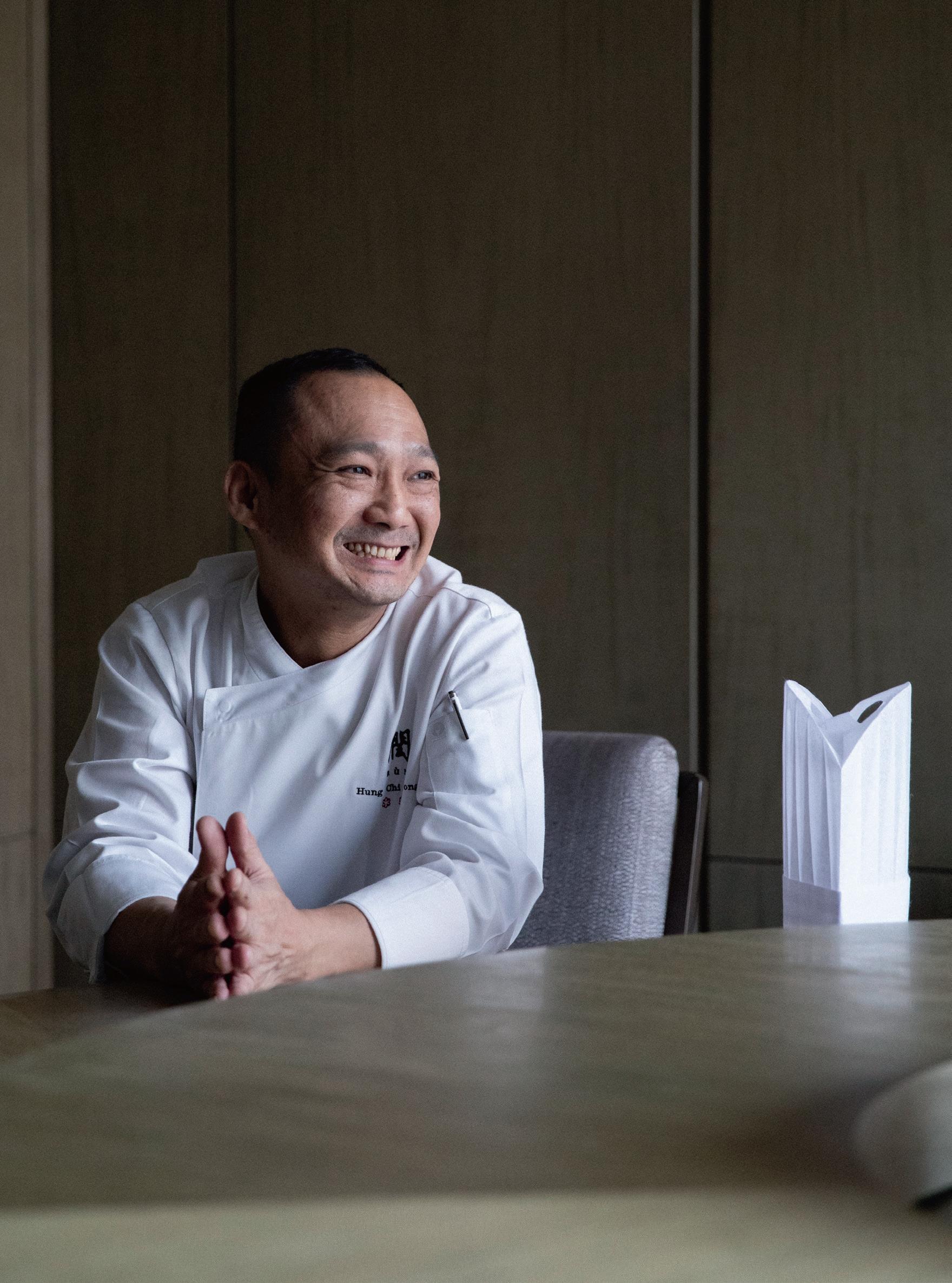


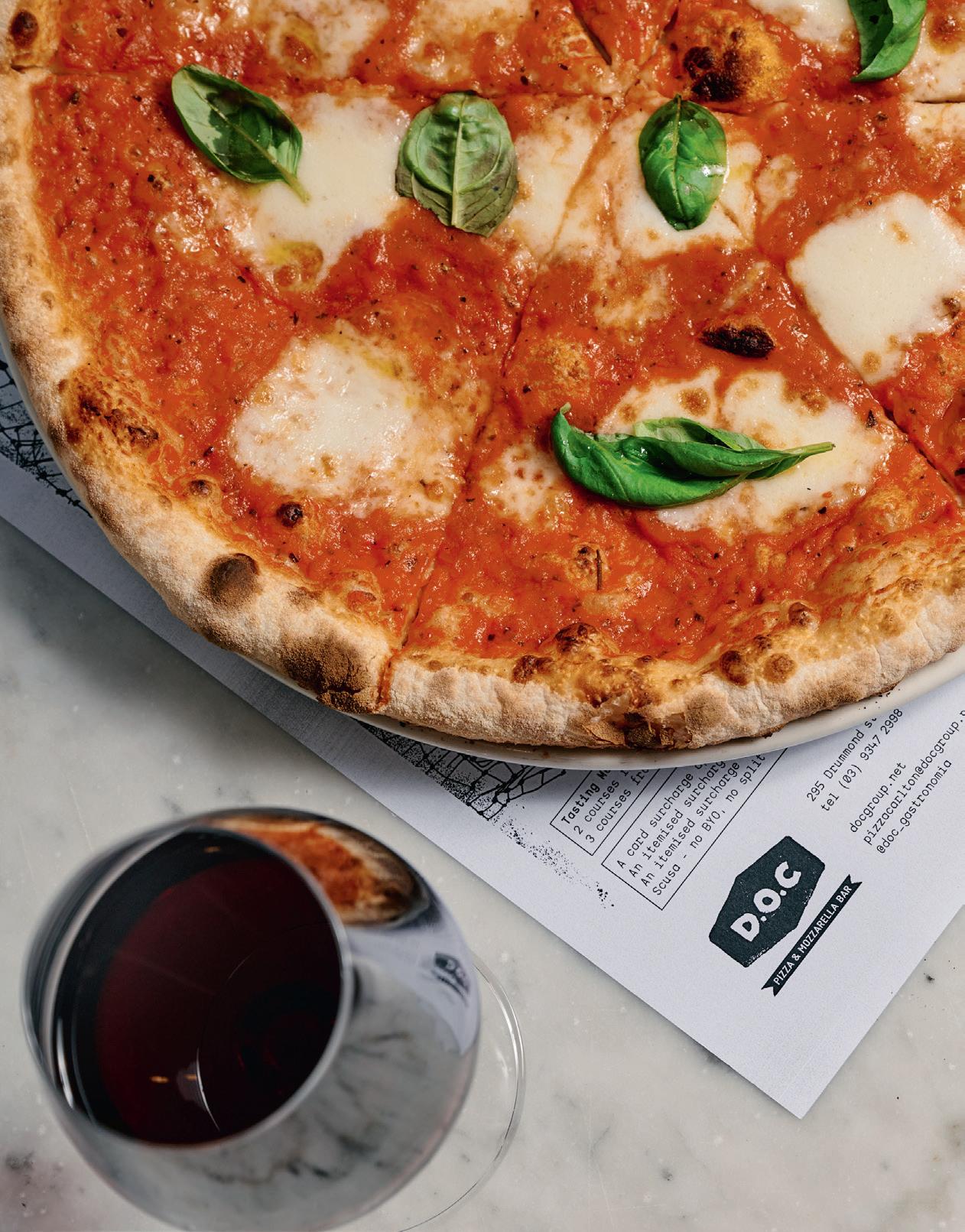

Sip espresso with a side of biscotti, share slices of authentic pizza and order paper-thin prosciutto. The Melbourne suburb might sweep you off to Italy but there’s a host of culinary influences to uncover.
Marooned on a traffic island opposite Argyle Square lies a tiny former power substation that’s now home to Parco Canteen, an unassuming breakfast haven. Its menu is best enjoyed alfresco, including all-day items like the bánh mì: a milk bun stuffed with crispy maple bacon and fried egg, along with pickled carrot and tangy miso mayo. Wash it down with a cappuccino by Coffee Supreme.
Discover a wealth of Italian treats
Located inside one of Australia's first grocers, King & Godfree (top, right) features a trove of Italian delicacies such as slicedto-order Italian meats (salumi, soppressata, mortadella and more), artisan cheese, cicchetti (Italian tapas), oodles of dried and fresh pasta, flowers and still-warmfrom-the-oven bread. You’ll have to be dragged out of this Lygon Street institution.
Help yourself to an artisan pizza
Wafer-thin crusts and a less-is-more approach to Italian toppings have seen D.O.C Pizza & Mozzarella Bar (bottom, right) build a cult following. The buzzy diner just off Lygon Street pumps out perfect rounds, including the Pizza Boscaiola, topped with fior di latte, DOC Deli’s pork sausage, mushrooms, rosemary and thyme. The menu also features a long list of cheeses and charcuterie.
Try a decadent afternoon pick-me-up
Sit down surrounded by Romanesque marble, murals and mosaics and order a Fragolina Semifreddo – strawberry cheesecake mousse and gelato on top of vanilla sponge – at Brunetti Classico (top, left). The café began trading in 1985 as a pasticceria and has been serving Italian sweets, like amaretti and biscotti, and Brunetti Classico blend coffee ever since.
Feast on authentic Lebanese fare
For more than 40 years, Abla Amad has been dishing up flavoursome Lebanese fare to the Carlton dinner crowd in the almost unchanged dining room (bottom, left) of her eponymous restaurant. Go straight for the banquet option at Abla’s for smoky baba ghannouj, lady fingers (cinnamonspiced lamb mince and pine nuts wrapped in thin, buttery filo pastry), grilled lamb or chicken skewers and flaky baklava.
Savour a bellissimo gelato cone
Ice-cream fans rejoice in Lisa Valmorbida’s gelateria, Pidapipo. Expect flavours such as vanilla bean and honeycomb, pistachio and blood orange sorbetto – all made on the premises. Valmorbida searched for the top producers of milk, nuts, fruit, honey and chocolate from around the world, including pistachios from Sicily. The best part? There’s a chocolate tap that fills up the inside of your cone.
Indulge in refined Japanese fusion Moody Euro-Japanese diner Kazuki’s – led by husband-and-wife team Kazuki and Saori Tsuya – seats just 30 guests and delivers tasting menus of up to seven courses. Expect dishes like veal tataki, confit tuna and dashi and toothfish, almond miso and lotus roots. To drink, there’s a curated range of wine, Japanese sake, whisky (think barrel-aged Nikka), spirits and cocktails.
End with an expertly concocted nightcap
It’s hard to miss the giant copper “ginfuser” imbuing spirits with local botanicals like pepperberry behind the bar at Fossey’s Distillery Lygon . But you’ll find more than gin here: blood orange vodka and butterscotch whisky liqueur are also on offer. And don’t leave without asking for the Saltbush Margarita, with Fossey’s Old Man Saltbush Gin, orange curaçao, lime and lemon.

Take an easy 10-minute walk from the CBD or hop off tram Route 6 at Stop 112.

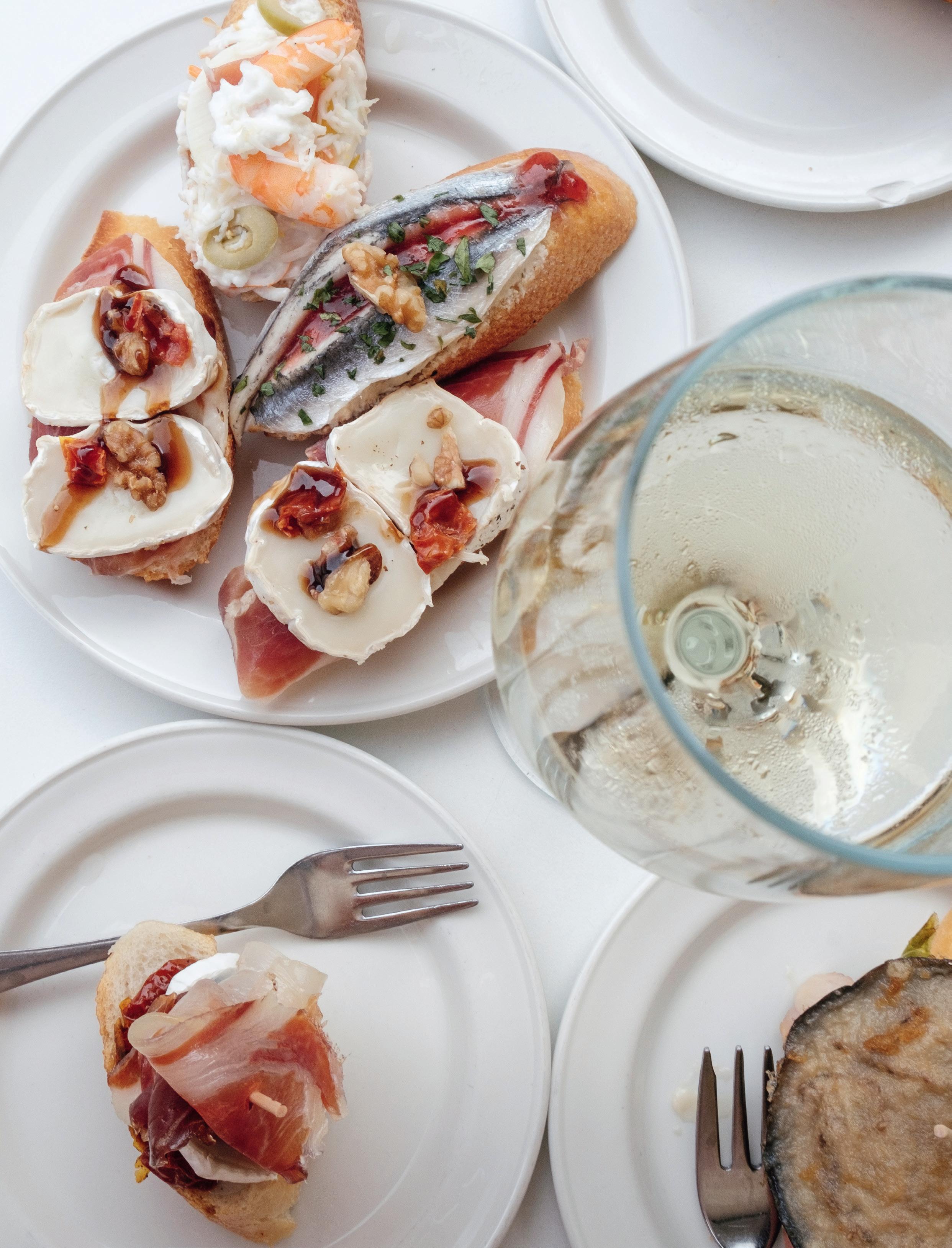
In San Sebastián, food is life and dining out is for everyone. But the hottest places to eat require an invitation, writes Bridget
 de Maine.
de Maine.

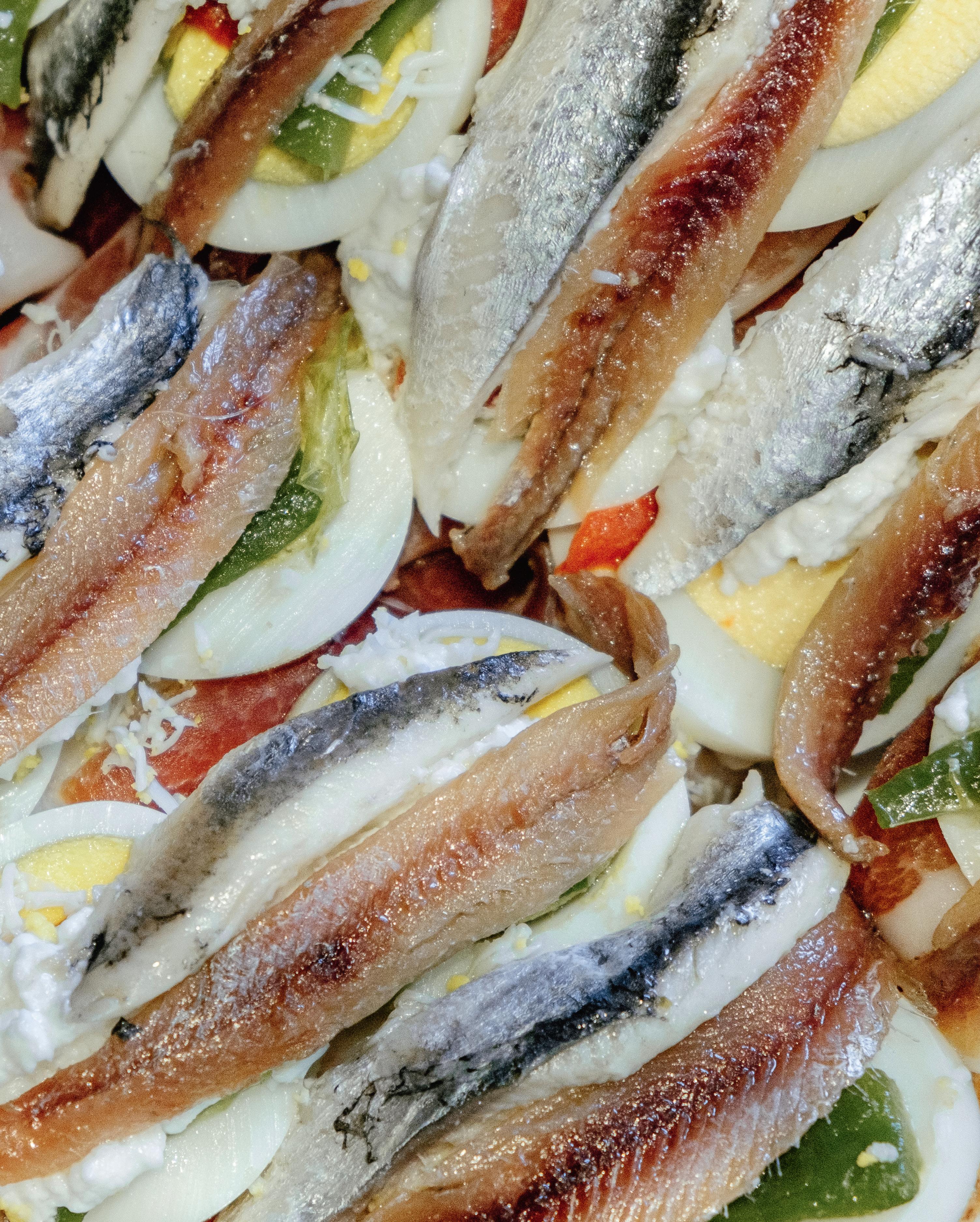
“Nah, that’s just Netflix,” says Mikel Martija. Someone has asked our food tour guide if he gets up early for the best produce at the local market, like they do on chef-centric TV shows. He tsks. When he and fellow chef Eneko Irizar shop for seasonal vegetables at La Bretxa Market, they go to the same suppliers. “Sometimes they will hide the good stuff under the table for us,” he says with a wink.
Despite Martija’s relaxed approach to procuring his ingredients, food is serious business in San Sebastián on Spain’s Bay of Biscay. The initiated know the city’s credentials: within a 25-kilometre radius of the old town, there are 16 Michelin-crowned restaurants. In the narrow arteries of the city centre, every second shopfront is a purveyor of pintxo or snacks. Suspended in a bowl of fertile land with its toes in the wild North Atlantic, even the landscape of Donostia – as it’s known in the local Basque language – demands indulgence. The sea and forest offer abundance, from stout mushrooms to crisp winter walnuts and ocean-salted mussels. But you don’t have to book a table in a fine-diner to get a taste.

“That’s how you know a place is good,” Martija shouts to us above the din at Gorriti Taberna (San Juan Kalea, 3; +34 943 428 353), pointing to the scrunched receipts under the bar. This unassuming spot is our initiation into the world of pintxo

(referring to the Basque verb “to spike”). Typically, the small bites comprise a trio of dependables – an anchovy, a slice of creamy, lard-veined jamón and sharp, pickled Guindilla peppers – pierced with a toothpick. We enjoy piles of boiled eggs, jamón, anchovies and sardines with a glass of txakoli, a local sparkling white wine poured into tumblers from such a height that the bartender has to crane his neck to achieve it. It’s hamaiketako, the local equivalent of elevenses, and the place is full of Donostians. It’s thrillingly foreign to me, a desk-lunch devotee, that a city pauses to eat when the working day has barely begun. “This time means pintxo and a glass of wine then back to work,” says Irizar, co-owner of Mimo (mimo.eus), the food experience company that runs this tour. “When we stop work to do this, we don’t drink at night because we need to forget work.”
Outside, it’s raining. The sky spits on our group of 11 while we buy bouquets of chubby, white asparagus. It pelts us while our two leaders discuss buying pearl-like teardrop peas (a delicacy known as “vegetable caviar” that’s only available for three months of the year). It doesn’t let up as we wander past the incongruous McDonald’s housed in a Belle Époque building, which Irizar has nothing but expletives for. Rain is so common here that there are words dedicated to its
*You must be a Qantas Frequent Flyer member to earn and use points.
Zen out at a luxury hotel with a bespoke sleep program or create your own cosy cocoon of luxury bed linen. A deeper night’s slumber is waiting – whether you’re at home, in flight or on holiday.


Naturally thermal-regulating, moisture-wicking and hypoallergenic, Shleep’s range of bedding is made from its trademarked ShleepHaloTM fabric, which has been created from the finest Australian merino wool. Research shows people sleep better surrounded by wool so the pillowcases and sheets (below in Mesa Canyon), blankets and duvet covers in the super-soft range aren’t just luxurious, they’re an investment in your health and wellbeing.
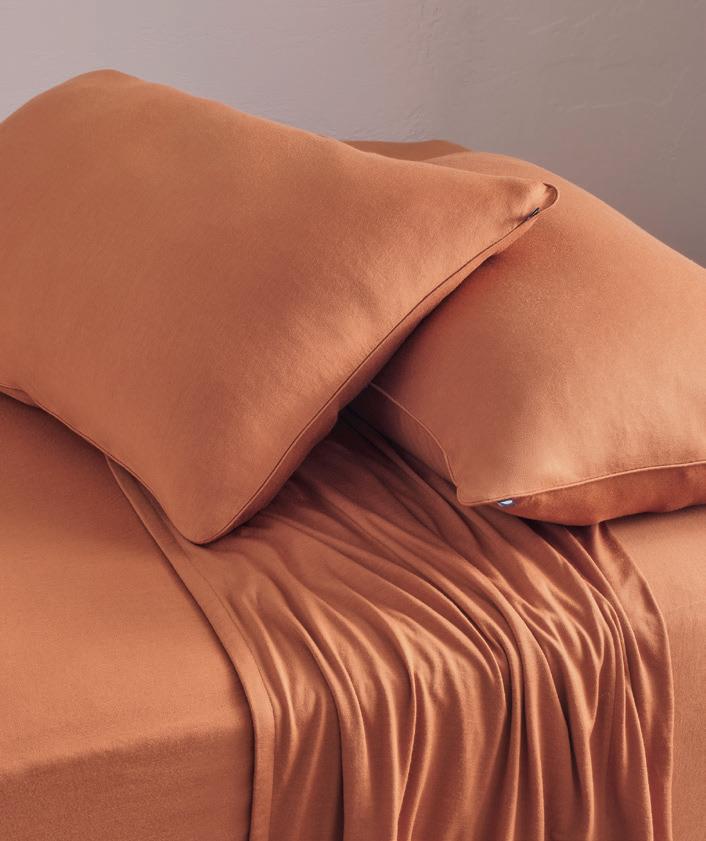
ON
Take a sleep vacation – a break in which shut-eye is the main attraction. At The Langham Sydney (qantas.com/hotels/ langhamsydney), rest and relaxation is the goal of the Sleep Matters by Chuan program, a holistic approach that includes bespoke room packages and treatments at Chuan Spa. Book an overnight Refresh and Renew package for a 60-minute couples’ Chuan Harmony massage with ear auricular therapy (a type of acupuncture that can aid in the relief of insomnia), earplugs, calming pillow mist and in-room breakfast for when you finally wake from hibernation.
Earn 3 Qantas Points per $1 spent* or use your points to shop Shleep at qantas.com/marketplace

Made from luxurious Shleep merino jersey, the ultra-soft Sleep Mask (right) is the perfect flight companion. It’s breathable and adjustable – plus it will block out cabin light.

variations, from galerna (a sudden storm with violent winds) to xirimiri (the persistent light rain that shrouds the city). The heavens give residents plenty of excuses to spend time inside.
“When you meet with your friends, you start in the kitchen,” says Irizar. “At the end of the day, you don’t move from the kitchen. Food is something super-social.” A culturally crucial aspect of the dining scene here is one that most visitors will never have the opportunity to experience. That’s part of the reason I’m trailing Irizar and Martija – both are members of txokos (gastronomic societies), where members cook, dine and socialise away from prying eyes. There’s a network of them around the city, some with origins stretching back 150 years, hidden behind unassuming façades, sober signage and windows with drawn blinds. I wouldn’t have looked twice at the sign we’re about to walk under – “1901 Euskal Billera 1940” – but we have a willing member, Martija, on our side. This is one of San Sebastian’s oldest txokos.

Until recently, women weren’t allowed inside the societies at all but times have changed – reluctantly for many, says Irizar. At Euskal Billera, permission for women is relegated to entry only. Forbidden to clean, cook or even enter the kitchen, my participation is limited to being served. “Women are chilling like the queens,” says Martija to laughter.
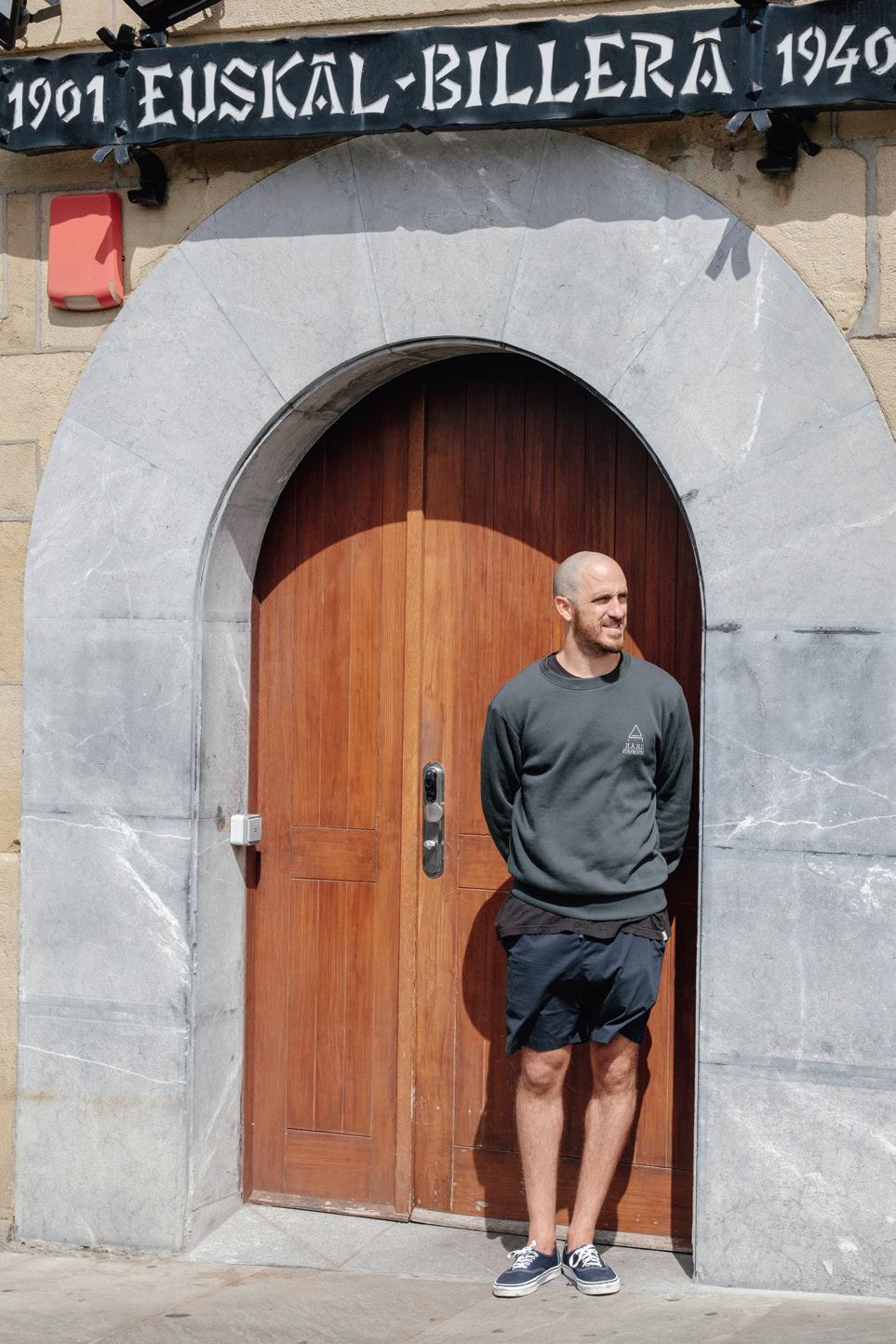
Two men from the group take to the kitchen while Irizar pours cider. He lifts the bottle as high as his shoulder – the kind of pouring height I’d scold my kids for trying – and tips a frothy trickle into my glass. Forget the fresh, sugary versions your pub palate knows; traditional Basque cider is ragged and cloudy, drunk in small (yet frequent) quantities to retain the aroma. Most of it lands in the glass. Soon, the plump sardines we bought from the market are served slick with oil and golden coins of garlic alongside crusty bread. The men show us how to pluck the flesh from the fish’s spindly spine with our teeth. Alba García, from the northern Spanish city of Gijón, works for Mimo and is filming our safari. She tells me that adjusting to life in this corner of her home country has been difficult. “People are a little bit closed. It took some time to become part of the city.” Martija says that members of his txoko aren’t pleased about inviting visitors into its private world but he waves them off. “Things are changing,” he proclaims. It feels as much an appeal to his peers as an affirmation of fact.
Wandering the city after the tour, I start to pick out the plain façades with unlit signage, the shuttered txokos coming into focus like objects in a magic eye artwork. In between, people spill from the doorways of bars despite a haze of xirimiri, the city open, welcoming and always ready to serve.
Lush green vineyards, sandy beaches, dramatic cliffs and desert landscapes. British Columbia’s southern Thompson Okanagan region is a rich study in contrasts, culture and culinary sensations.
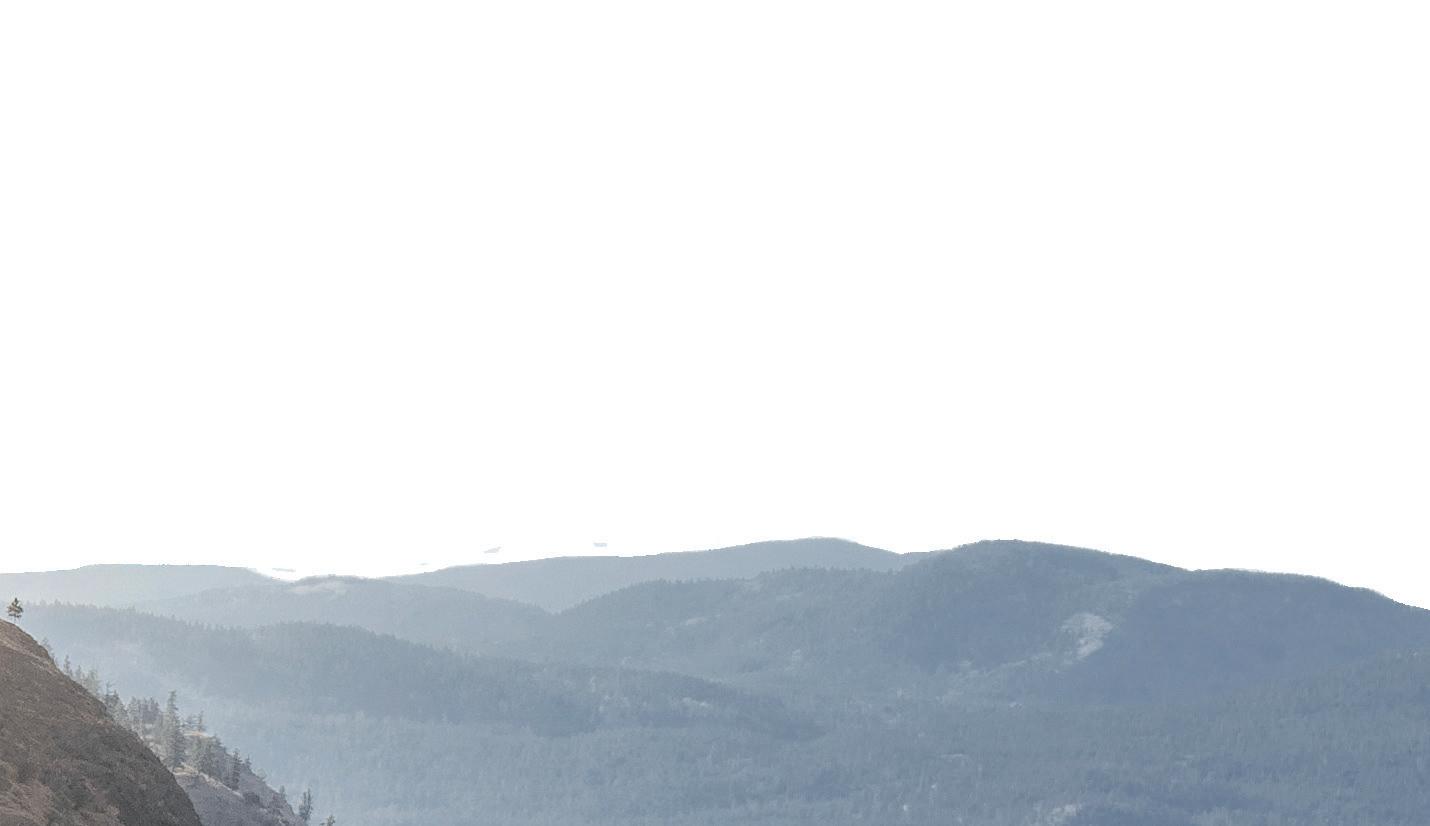

leaving behind mountains, sparkling lakes and what is considered to be Canada’s only desert. Snow-capped peaks, verdant farmlands and semi-arid scrub can all be seen here on the same day, so as Route 97 beckons you north between Osoyoos and Vernon in the south-east of British Columbia, you might be forgiven for thinking you’re in Tuscany or Arizona. If you squint, maybe even the moon.
Welcome to the Thompson Okanagan. It’s mostly sunny and dry with a summer average of 29ºC in the south of this region, which is roughly the size of Ireland and lies between the Interior Plateau and Columbia Mountains. For almost half of this 176-kilometre journey, you’ll hug the photogenic shores of Okanagan Lake, a long inland fjord fringed by sandy beaches and undulating rocky hills. But countless photo ops are only part of the attraction. You’ve arrived at one of Canada’s top culinary destinations, where you’ll find more than 200 wineries, a thriving brewery and cidery scene and menus featuring locally grown produce.
Most of the area’s wineries lie between Osoyoos and Kelowna, where mild temperatures and a diverse ecosystem equal fruitful terroir for red and white

Glaciers have carved their way through this ancient landscape,
varietals, says Justin Hall, estate winemaker at Nk’Mip Cellars (nkmipcellars.com; pronounced In-ka-meep) and North America’s first Indigenous winemaker.
“The way glaciers ripped the landscape has created these super-unique, micro soil structures and diverse vineyard sites,” he explains. “There’s sand in one place and just 50 metres away you’re down into these heavy, dark clays. Some places are great for pinot noir, riesling, things like that. South in Osoyoos we can grow big reds such as syrah, cabernet sauvignon and merlot.”
As a young Osoyoos man, Hall started his career as a cellar hand in 2003. He then worked and studied in Australia and New Zealand before landing back at Nk’Mip Cellars, becoming estate winemaker in 2021. He oversees the entire process – planning, harvesting and blending – to produce the vineyard’s 20,000 or so cases of wine each year.

Nk’Mip Cellars is owned by the Osoyoos Indian Band – a community of Syilx People, who have lived in this place for millennia – in partnership with Arterra Wines Canada. In the Okanagan language, Nk’Mip describes a specific gathering place, says Hall. “It’s a spot of land designated thousands of years ago for where people would meet.”

The winery’s backdrop is a scorched mountain dotted with desert sage and greasewood; in front of it are neat green rows of vines, which turn vibrant yellow in autumn, and beyond them a rich blue lake. “I’ve been here so long that it’s normal for me but some days I’ll stand outside and remember I’m in a really different place,” says Hall. “It’s the only place in Canada that’s like this. It’s pretty damn gorgeous.”

Less than five minutes walk from the winery is the striking Nk’Mip Desert Cultural Centre (nkmipdesert.com), with indoor and outdoor exhibitions, a reconstructed Okanagan village and interpretative storytelling to share the area’s Indigenous people’s culture. Rammed-earth walls and a wild flora roof are hallmarks of its sustainably made main building.
Qwam Qwmt (pronounced kw-em kw-empt), the name Nk’Mip Cellars gives its premium wines, translates as “achieving excellence”. “It’s the best word we have for perfection because in our culture there’s no perfection,” says Hall. “Nature isn’t perfect so how can anything truly be perfect? No flies, no stains?”
Working with nature, applying sustainable practices and improving the soil are Osoyoos philosophies the Nk’Mip Cellars team employ with their farming techniques. For example, only every second row is cut and the centre rows are left to create cover crop, which helps protect against erosion and encourage beneficial insects. “The bugs need to eat a little bit, too. Nature can take care of itself if managed well.”
Regenerative farming is expanding here. Wise Earth Farm, a 0.8-hectare urban property in Kelowna, grows produce for households and restaurants while nourishing the soil and increasing biodiversity. In nearby Cawston, Harker’s Organics grows sustainable and organic produce it blends into ciders and fruit wines, complementing a bistro menu that’s all about seasonal offerings. “At pretty much all of the restaurants you’ll see asparagus or cherries in season,” notes Hall. “You really get a taste of what is happening right now in the Thompson Okanagan.”
The freshest flavours, he insists, come in autumn, when sun-ripened fruit bursts off the branches. “There is simply nothing like a peach off a tree. It’s a flavour intensity you’ll never have tasted in your life. People come from the city and say, ‘I just picked a peach from a tree! It was so good I can’t describe it!’ Imagine eating that every day. That’s what it’s like living here.”
From Osoyoos, drive north to visit these charming towns and cities. You’ll get to sample some of Canada’s best food and wine in picturesque settings, often under pedal power.
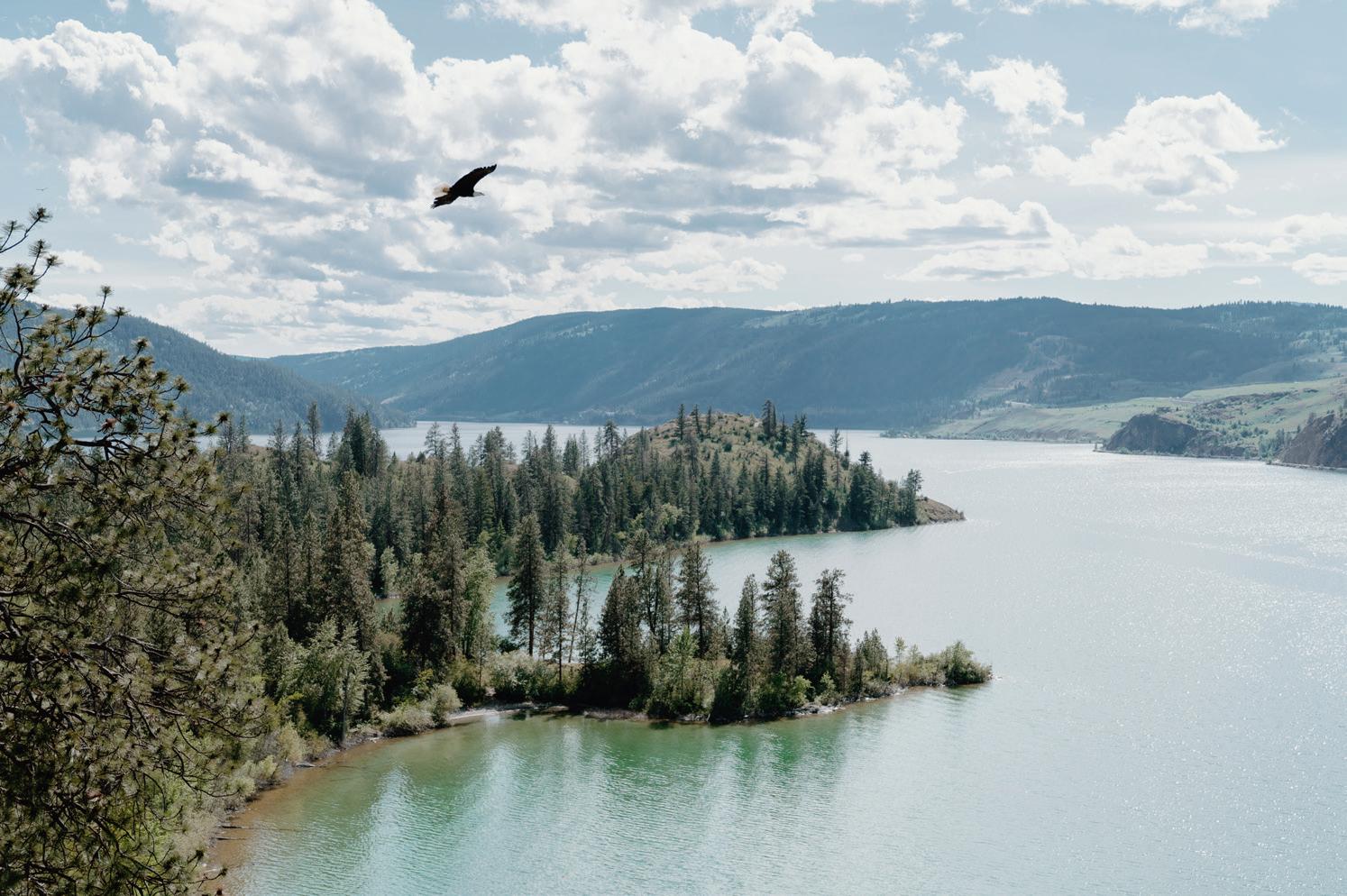
Oliver
Just 20 kilometres north of Osoyoos is another stunning location where the desert-like landscape meets green vines. Head to District Wine Village (districtwinevillage.com), where 12 wineries come together with a restaurant, a craft brewery and a distillery in a visually arresting circular set-up.
Penticton
One of only two cities in the world that sit between lakes (the other is Interlaken, Switzerland), Penticton is renowned for its sandy beaches. This beauty comes with a bonus: a fuel-free travel culture, courtesy of its compact centre, seemingly endless trails and more than 80 wineries located within walking or cycling distance.
Kelowna
The largest city in the region and a popular gateway to culinary and natural wonders, Kelowna and surrounds are home to 40 wineries. Work off any wine-tasting indulgence with the hiking, climbing, biking and golf options here. Kelowna and Penticton are also connected by The Kettle Valley Rail Trail, a scenic track that follows a historic railway line for more than 650 kilometres.
Vernon
A year-round adventure hub, Vernon offers downhill biking and skiing on your doorstep at SilverStar Mountain Resort (skisilverstar.com). The city also has a thriving arts scene that comes to life in theatre, music, galleries and famed outdoor murals that depict some of its rich history.
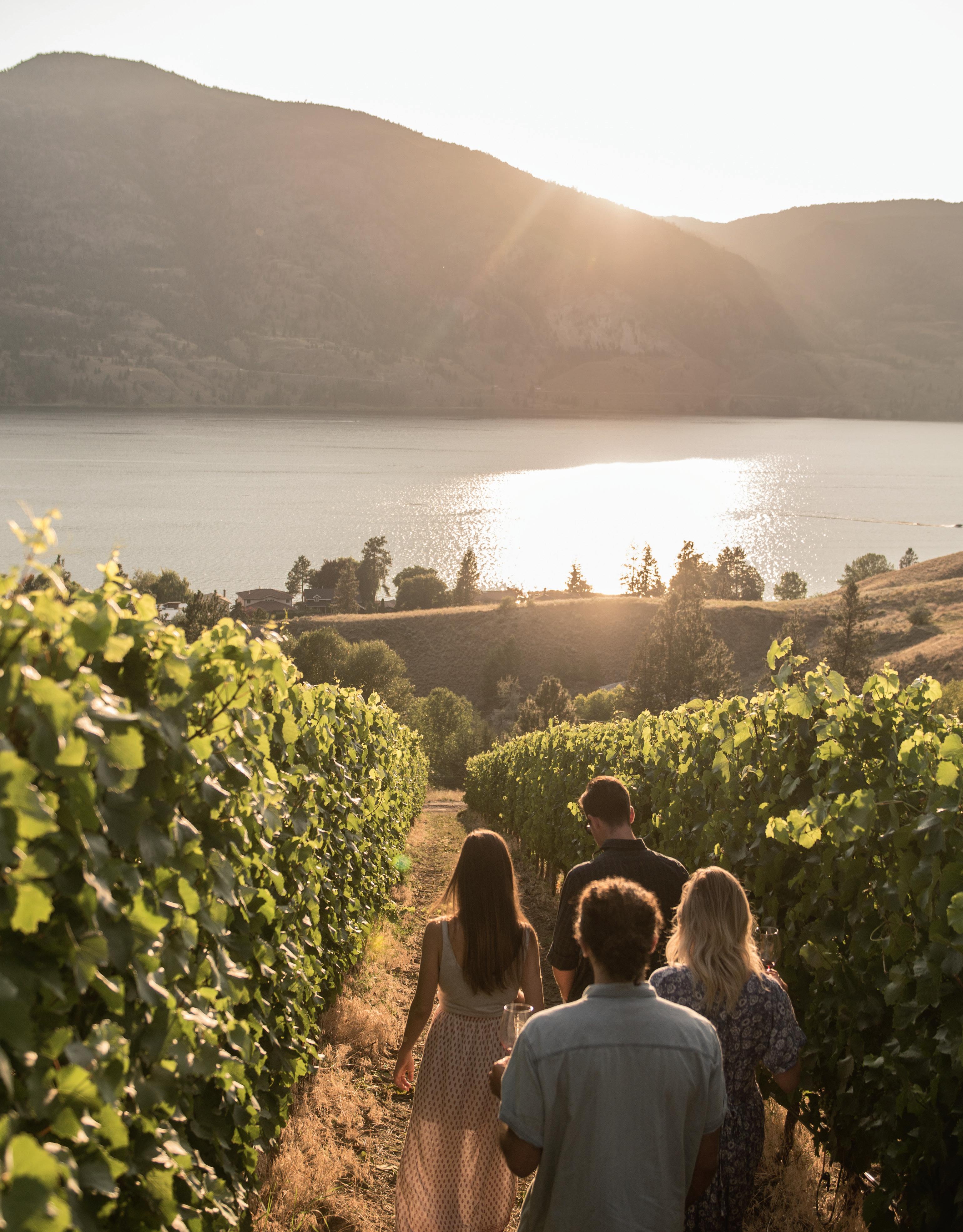
What’s better than an incredible meal at a bucolic restaurant?

Staying the night.
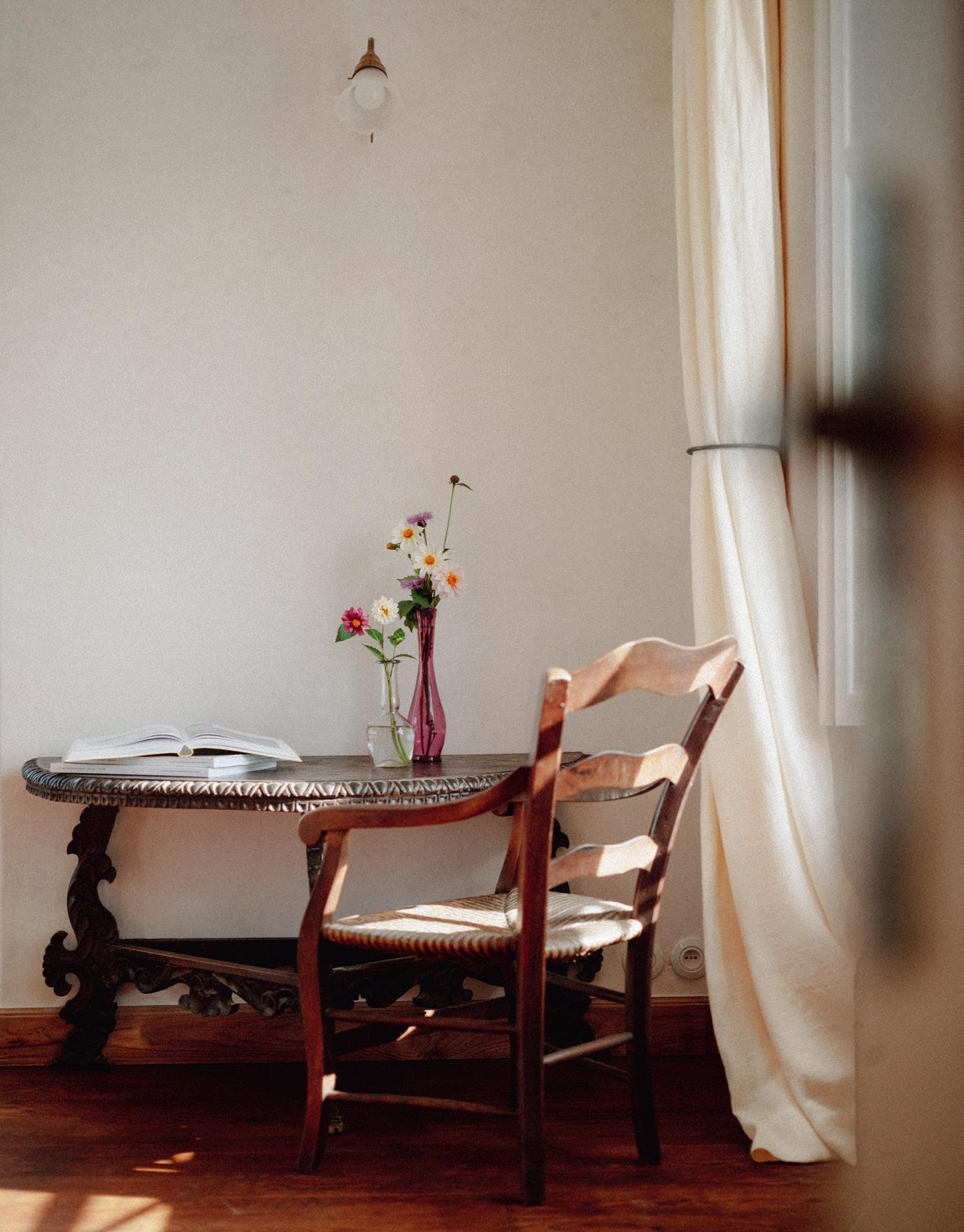

 Le Doyenné, Saint-Vrain Mickael
A. Bandassak, Marine Billet, James Nelson
Le Doyenné, Saint-Vrain Mickael
A. Bandassak, Marine Billet, James Nelson
There’s no bad time of year to visit Le Doyenné (ledoyennerestaurant.com), about an hour south of Paris in the hamlet of Saint-Vrain. “Each season has its particular charm,” says chef James Henry, who works with produce sourced entirely from a sprawling farm manned by fellow Australian chef Shaun Kelly. “When the garden awakens at the beginning of spring and the first peas and radishes come in. Or in winter with the fireplace going and it’s snowing outside.” In summer, the glass-fronted dining room – a space that was once the estate’s stables – is flooded with light.
There’s also no bad time of day at Le Doyenné, from checking out the onsite boutique (pick up a jar of rhubarb jam to take home) to watching the hours pass in your tranquil room (one of 11), complete with clawfoot tub. A wander through the garden at dusk is a must, where you’ll likely spot Kelly on the tools, weaving among the neat rows of artichokes and zucchinis. When the friends, who met working as chefs at Cumulus Inc. in Melbourne, first dreamt up Le Doyenné, it was always as a farm first. The seeds were planted six years ago and now they’re witnessing the literal fruits of their labour.
Take your seat in the dining room for an 11-course feast (wine pairing optional but very much recommended), where Henry serves the farm on a plate. Charcuterie from Le Doyenné pigs, so sheer you can see through it; a plate of raw vegetables – sorrel leaf topped with raspberry, pale cucumber dressed with chilli – is arranged like a painter’s palette; green beans roasted on the fire with a buttery basil sauce. Each dish is an inventive delight and everything tastes of the earth.
But the best time here might be the morning after, at breakfast. Yoghurt and granola, ham and cheese, croissants (this is France), a jar of Vegemite (a gift from the Australian Embassy), a small roster of dishes cooked to order. And just when you think you can’t take any more, out comes a platter of warm madeleines. This generous hospitality is what Henry is most proud of, a year since Le Doyenné opened its doors: “We make people feel at home.”
With its vaulted timber ceilings and flagstone floors, The Three Horseshoes (thethreehorseshoesbatcombe.co.uk) is the platonic ideal of an English country pub. The revamped 17th-century inn presides over the pretty village of Batcombe in Somerset, about two-and-a-half hours from London, and has become a cool weekend getaway thanks to new ownership and a menu by New Zealand-born chef Margot Henderson of famed London restaurant Rochelle Canteen.
But a pub should also be a pub and the relaxed, sunny bar is a haven for locals still wearing their walking shoes after a ramble through the countryside. Granted, they’re drinking St. John crémant and regional pale ale with what might be the world’s poshest pub snacks: crisped sardines on a bed of aioli and a doorstopper of a cheese toastie.
In the restaurant, spread over two rooms leading onto the terrace, things get more substantial. At lunchtime the space is heaving with young families fighting over the last slice of chicken and leek pie. In the evening, the energy is calmer (and romantic – lit by candles and with a wood fire roaring). The cosiness crosses over into Henderson’s elevated comfort food: everything is made for sharing, from melt-in-your-mouth crumbed lamb belly fingers to a juicy Devon pork chop. And do not skip dessert: as at Rochelle Canteen, the sweets are a standout and you can expect Antipodean additions, such as hokey-pokey ice-cream and apricot pavlova.
The five refreshed guestrooms are one floor up but feel a world away. They’re enormous – bigger than a London studio apartment – with cloud-like Reylon beds and luxe bathrooms with Wildsmith toiletries. Wake up to the sound of the Batcombe church bells ringing and slope downstairs for a bacon butty or fried eggs. If you’re looking for an activity other than eating, stroll a winding country path to the town of Westcombe, where there’s a small cheese shop and Landrace Bakery, which supplies The Three Horseshoes with sourdough. It’s worth the wander, if only so you can stomp back to the pub and park up at the bar for another round of St. John Picpoul de Pinet.

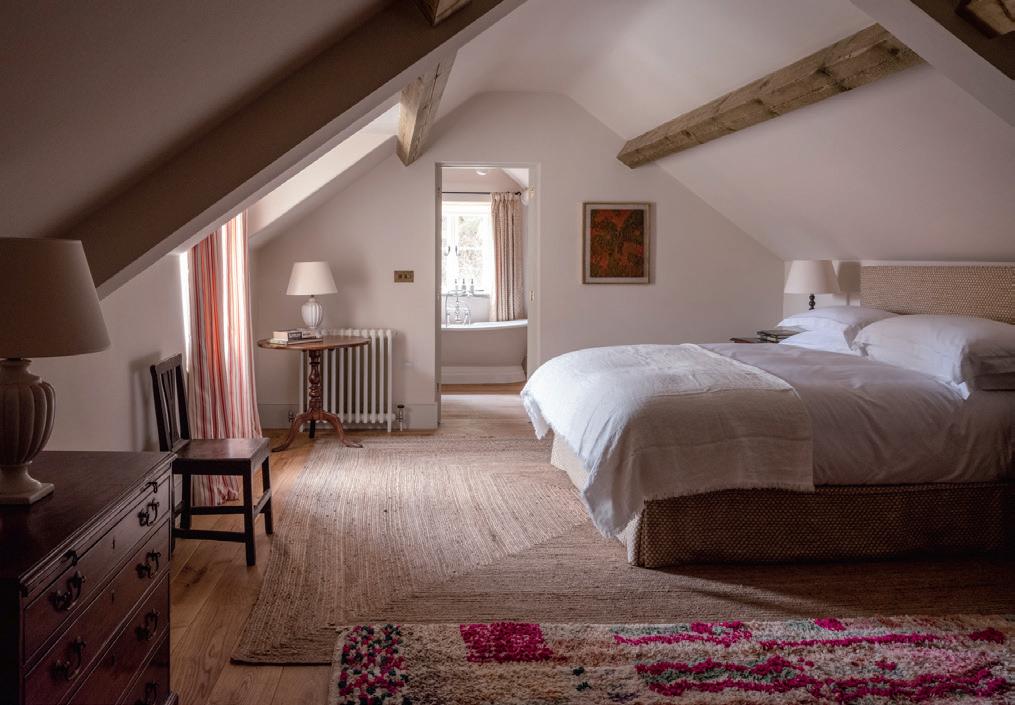
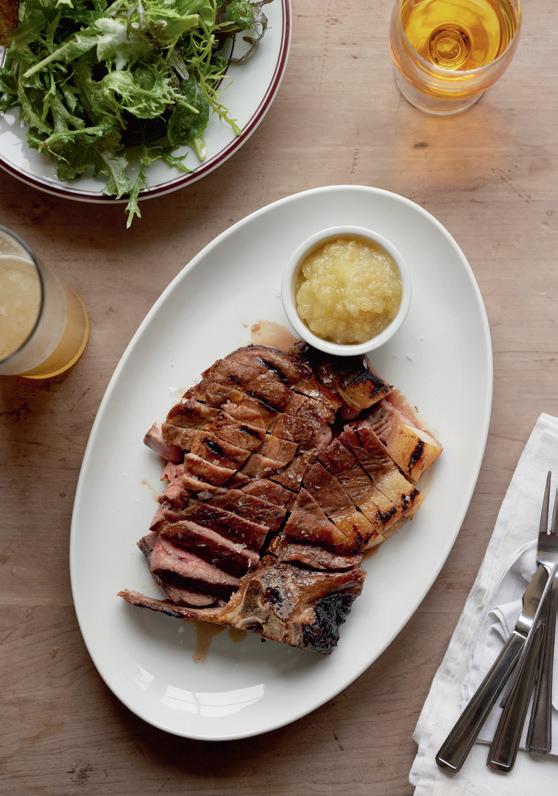
Dotted with bright ginkgo trees and striking architecture, the port city of Nantong is just an hour from Shanghai but a million miles away from the everyday.
See the city in full bloom


Dreaming Island (above) is a botanical garden with a beach and river and occupies more than 110.5 hectares. It’s home to more than 20,000 trees and flowers from across the globe. You’ll see red maple leaves from September to November and lotus flowers along the winding waterways in the summer months. Be sure to visit Cherry Valley in early spring, when more than 3,000 snow-like cherry blossom trees are in bloom.
Witness a winter wonderland Built with real snow and ice, the four-hectare indoor Sendi Snow Park (right) is perfect for adults and children all year round. You’ll wander through frozen cities, discover Christmas Land and skate across ice-covered lakes. Don’t leave without visiting the snow-themed restaurant, too.

Be transported to a golden age Go back in time in the most modern of ways when you visit the Tang Dynasty-inspired theme park, Tang World (right). Visitors dress up and take on a new identity as they enter this absorbing world. Integrating online and offline gaming, you’ll take part in role-playing adventures, theatre shows and escape rooms.


Forget what you think you know about Michelin-starred restaurants. SingleThread (singlethreadfarms.com), about 75 minutes by car from San Francisco, upended everything when it opened in 2016 – and earned three of the celestial accolades in just two years. Maybe it’s all that Sonoma wine country sun. Maybe it’s the warmth of the dining room, where starched white linens are replaced by polished timber, sofa seating and glowing lanterns. Or perhaps it’s because the restaurant has all the fine-dining cred – co-owner and chef Kyle Connaughton spent five years running Heston Blumenthal’s Fat Duck Experimental Kitchen in the UK – with none of the pretension.

At the table, service is attentive as staff guide you through the 10-course Japanese-influenced menu that relies on fresh ingredients grown at the nearby farm and on-site rooftop garden. Nothing here is stuffy, from the food – elegant purple barley crêpes, fine wafers of amberjack sashimi – to the drinks list. There’s sake, of course, but there’s also a brilliant non-alcoholic pairing that includes concoctions fashioned from kitchen offcuts, such as a Ponzu Milk Punch and a Strawberry Spritz.
The laid-back luxury extends to the five guestrooms, outfitted in soothing shades of charcoal and beige and full of Japanese design. (Yes, there’s a Toto toilet in the bathroom, plus matcha and housemade sesame crackers.) At breakfast, be spoiled again with a spread including cedar-roasted salmon, tamago egg with greens, pickles and miso soup.

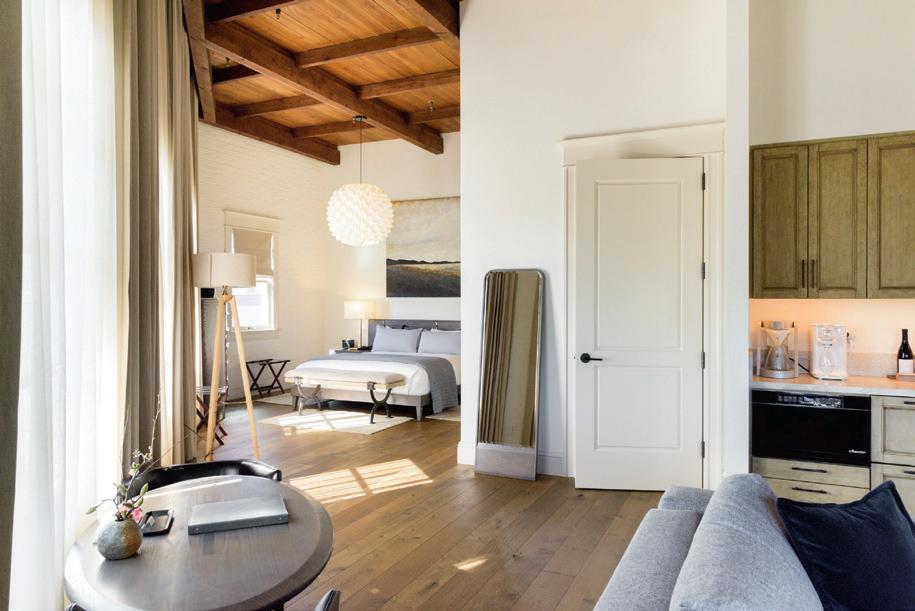


For almost a decade, chef Dan Hunter has been feeding guests at his farm on a hill in Birregurra, about a 90-minute drive from Melbourne. That Brae (braerestaurant.com) is one of Australia’s best restaurants is not up for debate: Hunter’s elegant evocation of the farm’s bounty has earned three chefs hats. And then there are the six zero-emissions suites, designed by Six Degrees Architects with cool details and comfort front of mind. Think couches by Jardan, record players from Thorens and a late check out that allows plenty of time for exploring the grounds after breakfast.
The brilliance of Launceston’s Stillwater (hotel.qantas.com.au/ stillwaterseven) is that it’s all things to all diners. For overnight guests, there’s the promise of a lazy in-room breakfast of local treats and house specialties while the rest of the city wakes up. Stop by for lunch or dinner and you’re in for some of the finest food on the Apple Isle – from wallaby wings with a gochujang glaze to rich venison ragú – and
a wine list of homegrown Tasmanian favourites. Housed in a 19th-century flour mill, there are seven guestrooms upstairs, each with a calming atmosphere courtesy of original timber fixtures and windows overlooking the Tamar River.


There’s a good reason why Lake House (hotel.qantas.com.au/ lakehousedaylesford), the Daylesford restaurant founded by Alla Wolf Tasker and her late husband, Allan, in 1984, is one of the country’s most renowned gourmet destinations. Set amid 2.5 hectares of glorious country gardens about 90 minutes outside Melbourne, the fine-diner’s sublime setting is matched by its menu (which boasts two chef hats), accommodation and easygoing luxury. The restaurant was spotlighting the seasons long before it became a trend, while the property’s suites exemplify country chic and are decorated with art from the family’s personal collection. The experience is so idyllic, guests travel from all over Australia – and the world – to stay the night (American humourist David Sedaris even wrote an essay about his time there for The New Yorker in 2009). And with Lake House’s 40th birthday coming up next year, there’s never been a better time to book.
At her 30-seat restaurant in Red Hill, on Victoria’s Mornington Peninsula (tedesca.com.au), chef Brigitte Hafner cooks lunch – and only lunch. It’s the one meal on offer, available Friday through Monday, but what more could you want when Hafner’s ever-changing, Italian-style menu is designed around fresh pasta, seafood and local produce? The relaxed yet refined fare is the reason it’s almost impossible to land a reservation and it’s only marginally easier to book into Graceburn House, the three-bedroom cottage Hafner and her husband, architect Patrick Ness, have restored nearby. Decked out with plush furnishings and rustic antiques, it’s warm and inviting – just like a meal at Tedesca.
Drive about three hours south-west from Sydney to find sanctuary at Taralga’s Argyle Inn (theargyleinn.com.au).
The bones of this gastropub date back to 1875 and a loving restoration by co-owner and chef Hugh Wennerbom has brought fresh life to the inn, along with a new generation of guests. Wennerbom cut his teeth at Bondi’s beloved Sean’s and it shows in the menu: simple, produce-led, with rotating fresh pastas and housemade sourdough

to start. But if you only order one thing before retiring to one of the eight elegant, old-world suites, make it the roast chook. Wennerbom is the man behind Holmbrae farm, which supplies birds to some of Sydney’s most beloved restaurants.

Eighteen dishes. Four courses. One superb dining experience (the provenance.com.au).
Since 2009, chef Michael Ryan has been delighting diners who make the threehour drive north-east of Melbourne to former goldrush town Beechworth. Inside a grand old bank, Ryan and his team use Japanese flavours and techniques to lovingly transform stellar regional produce into other-worldly offerings. Spend the night in what was once the bank’s stables to discover similarly Japanese-led design, such as dark timber furniture and screen-printed artworks. Full immersion comes courtesy of an impressive sake list, plus Japanese ceramic tableware that you’ll want to take home.




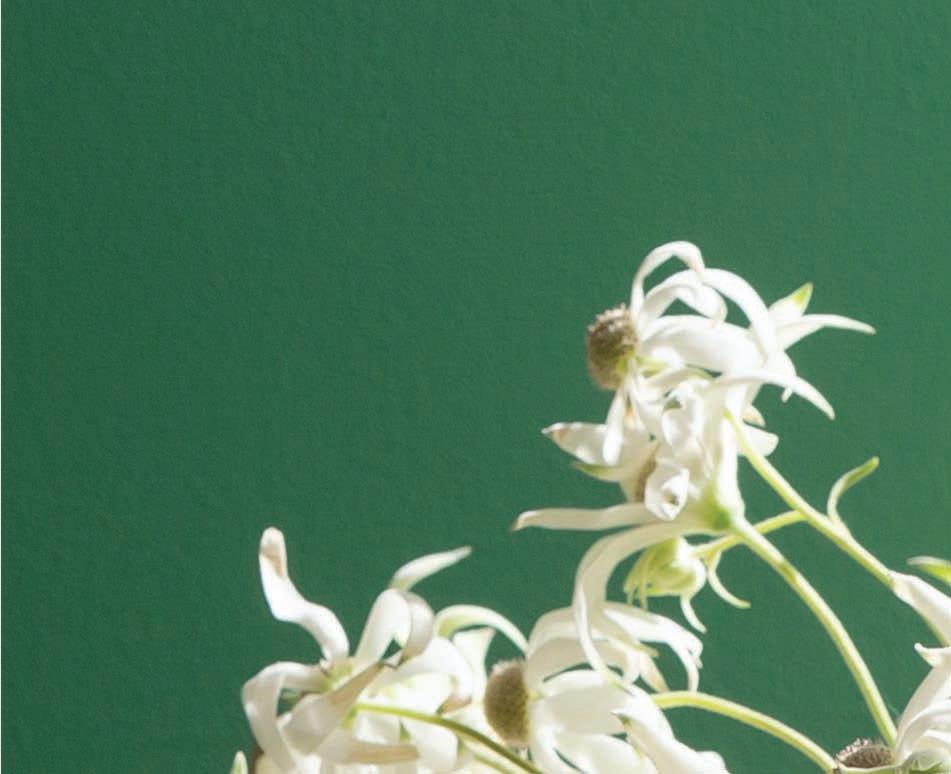

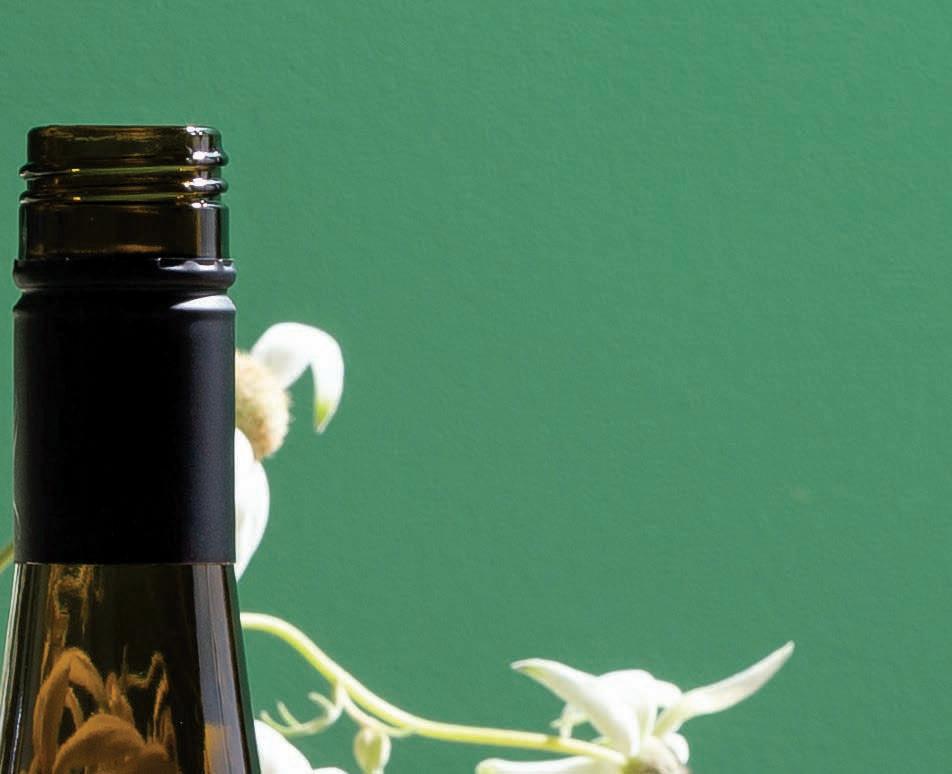

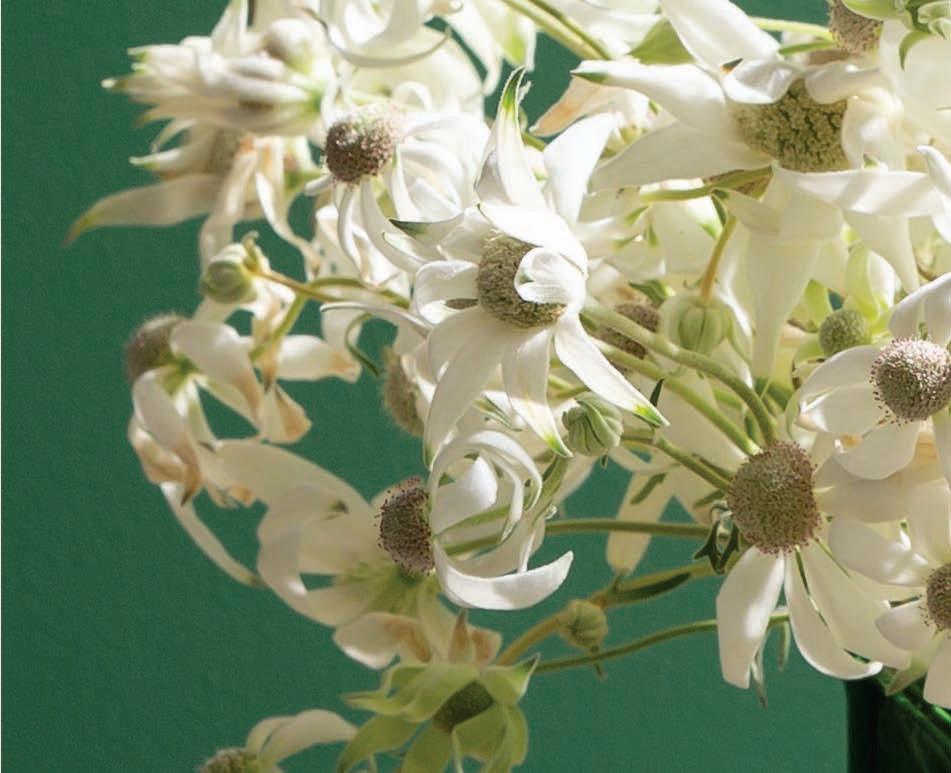
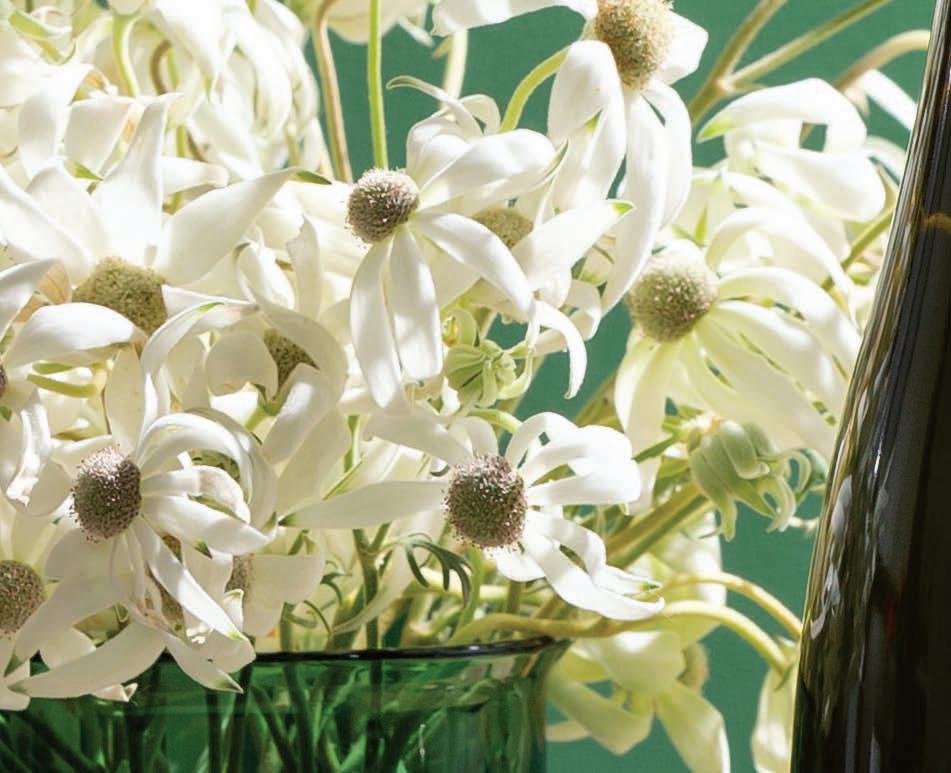



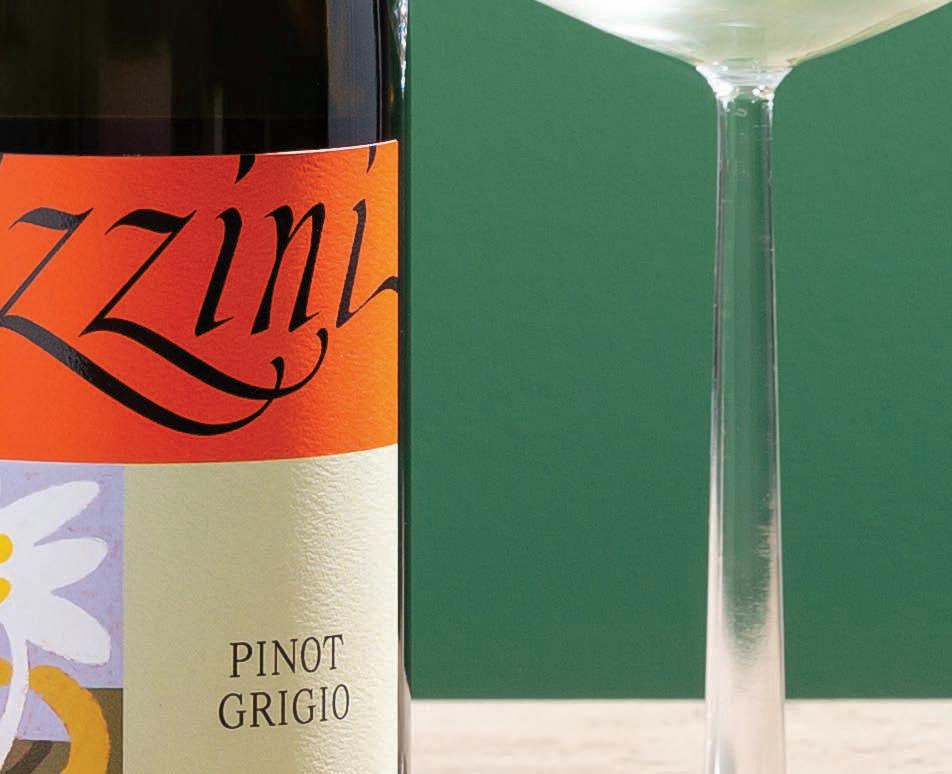
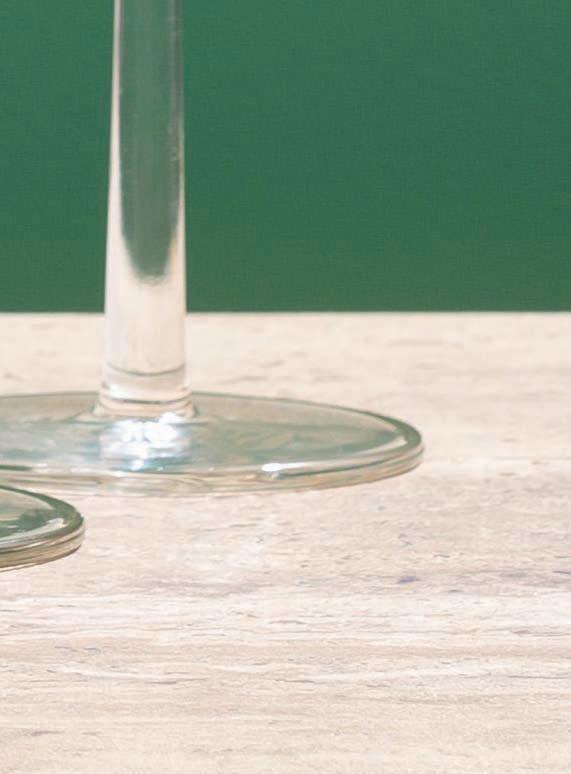

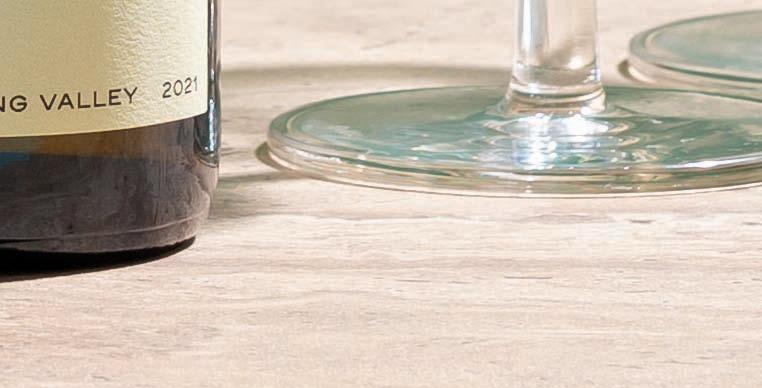
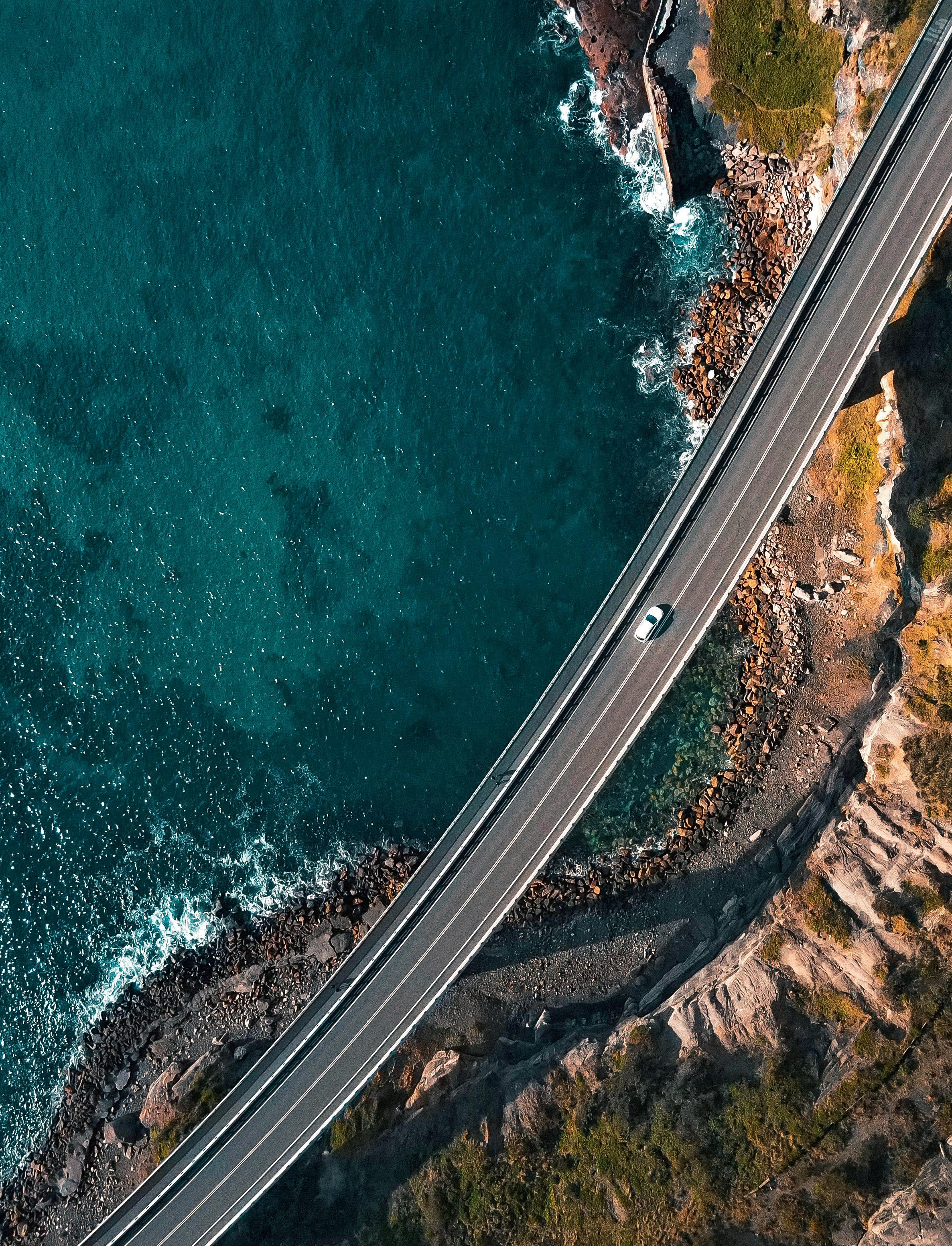
How does driving an electric vehicle (EV) differ from a petrol car?
If you haven’t driven an EV before, your next holiday is the perfect time to try it out. “EVs are smooth and quiet. Many people describe it as a calming drive as the electric engine is free of noise and vibrations,” says Tom Mooney, managing director of the Pacific region for Avis. “Braking will feel a little different due to the regenerative braking, which means when you take your foot off the accelerator, the car will slow to a stop. This is due to the motor acting as a generator to convert kinetic energy back into electrical energy to recharge the battery.”
Where do I charge my car?
There are more and more charging stations popping up all over Australia. You can use Google Maps and Apple Maps to find nearby charging stations and filter the search results to show the charging speed and plug type you require.
How long will it take to charge my car?
Charging time depends on the power available at each station. It will take roughly 40 minutes to charge the car from 10 to 80 per cent on a 150 kilowatt charger and 1.5 hours on a 50 kilowatt charger.
How far can I travel on a charge?
When you hire from Avis, you'll receive a Tesla Model Y. In this vehicle, plan for 300 kilometres on an 80 per cent charge or around 430 kilometres on a 100 per cent charge. Keep in mind that the distance you can travel on a single charge will vary depending on the road and climate conditions. “In the Tesla Model Y, you can keep an eye on the estimated remaining driving range on

the touchscreen. Plus, you can plot your destination into Tesla’s Trip Planner, where it will show recommended charging points.”
What’s the cost of recharging a vehicle?
Prices vary between providers but it usually costs between $20 to $30 to fully charge an EV. “Charging capabilities at charging stations differ, as do energy prices in different areas.”
Charging etiquette
Here are the dos and don’ts of charging your EV:
Don’t overstay your welcome
Be aware of what type of charger you’re using so you don’t leave the EV unattended for longer than necessary.
Look after the charger
Hang up the charger correctly to reduce the chance of it being run over and damaged.
Don’t unplug your neighbour
Unplugging someone else’s EV could damage their vehicle.
For a limited time, earn double points when you book an EV with Avis in Australia.** Visit qantas.com/avis. T&Cs apply.
Experience the smooth, seamless power of EV car rental with Avis Electric
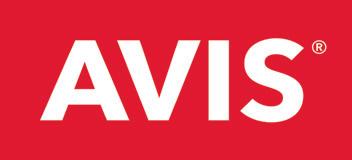
You can use Qantas Points on your Avis car rental. Choose Classic Car Rewards or use Points Plus Pay.*
 The Avis Electric fleet includes the Tesla Model Y, a mid-size, rear-wheel-drive SUV.
The Avis Electric fleet includes the Tesla Model Y, a mid-size, rear-wheel-drive SUV.


New openings, fun festivals and fresh ways to view age-old landscapes. There are countless reasons to visit or revisit the Golden State. Story by Di
 Webster
Webster
They begin erupting in June each year like terrestrial fireworks, spreading joy from the colour-rich north-west all the way south, taking in the golden outback and the eastern wheat belt – even the city of Perth (Boorloo). For about six months each year, 12,000 species of flora (almost two-thirds of which are found nowhere else on earth) carpet the state in a riot of colour, fed by rain and guided down the coast by the warmer days of spring.
In Perth, most of the wildflower displays centre on Kings Park and Botanic Garden, much of which is natural bushland. Time your visit to coincide with September’s Everlasting Kings Park Festival, which includes the blooming wildflowers in the Botanic Garden as well as workshops, tours, talks and art displays.
If self-driving is your thing, the Royal Automobile Club of Western Australia (rac.com.au) maps out some great seasonal road trips. Or if you’d prefer to let someone else take the wheel, from August through to October, Luxury Outback Tours (luxuryoutbacktours.com.au) guides small groups to the best flower sites – north or south, depending on the season – on one-, four- and seven-day excursions from Perth.
Alternatively, base yourself at an outback station (wastationstays. com.au) – some of them are the size of small countries – and combine seeing the blooms with birdwatching, hiking or just getting involved in station life (the properties rarely knock back another pair of hands). The landscape is vast but wait ’til you see the night sky. With little ambient light, the stars put those wildflowers in the shade.
There are two ways to explore the rugged majesty of the Kimberley coast – the hard way and the easy way.
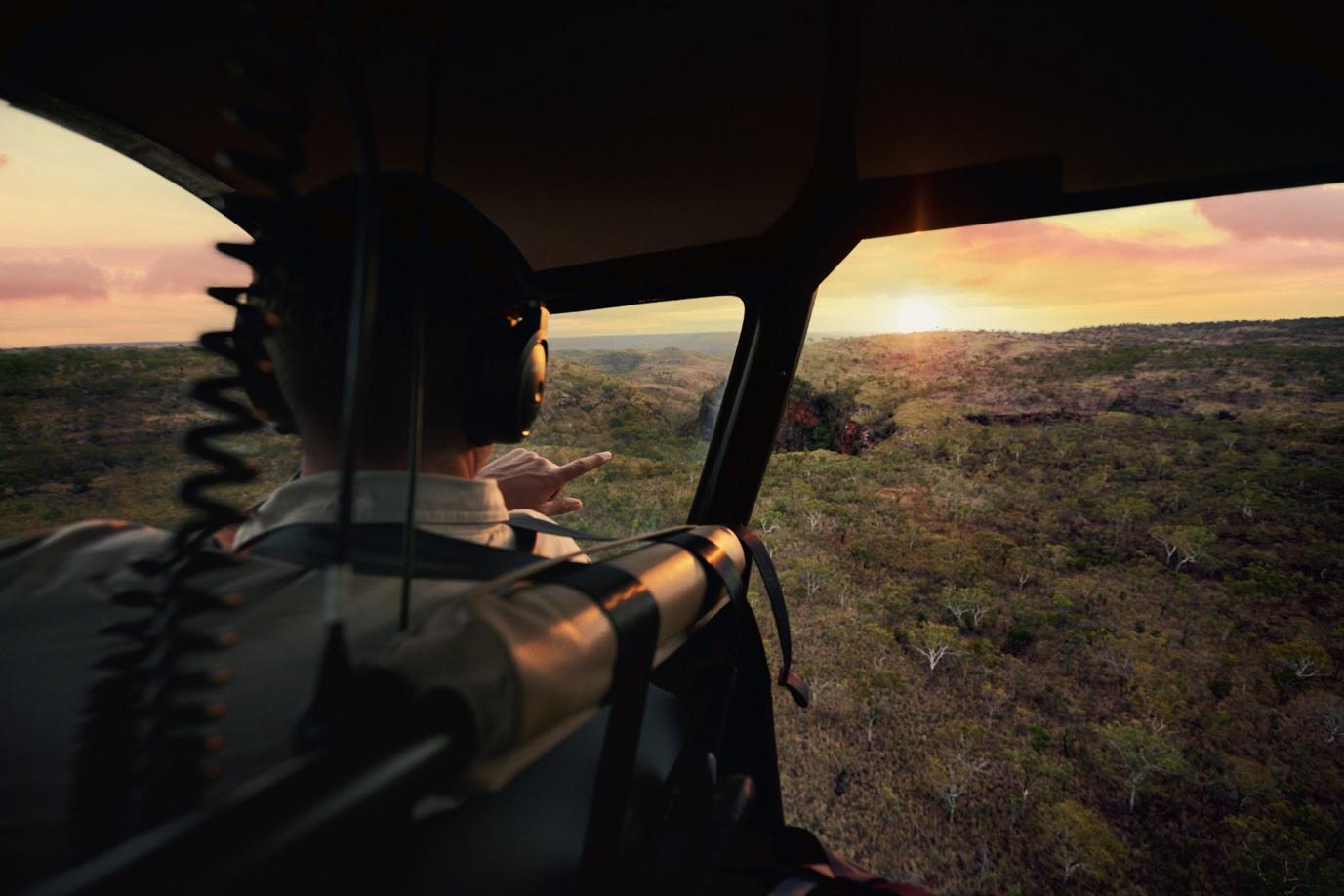
By “easy” we mean the utterly
decadent newcomer Scenic Eclipse II (scenic.com.au). The Discovery yacht will sail out of Darwin Harbour in May, en route to Broome, with up to 228 passengers, 10 different dining experiences, a spa, several butlers, a fleet of Zodiacs, a team of naturalhistory experts and two helicopters, the latter to ferry guests to wonders the ship can’t reach, such as spectacular Mitchell Falls (Punamii-Uunpuu).
The 11-day itinerary includes a zoom through the legendary Horizontal Falls, seldom-seen Aboriginal rock art and wildlife such as saltwater crocs, green turtles and scores of species of seabirds. Crucially, the vessel has two “vitality pools”. It’s hot where you’re going and while those salties are fascinating to observe, you don’t want to swim with them.
As anyone trying to navigate the famous Gibb River Road (GRR) will
tell you, touring the Kimberley by road comes with some logistical challenges. Where do you base the family, for instance, to explore the marvels you’ve driven all that way to see?
Whether you’re looking to camp, glamp or sleep in a standard bed, Mount Hart Wilderness Lodge (mounthart.com.au) has the answer to almost any West Kimberley accommodation question. The lodge, at the end of a 50-kilometre driveway off the GRR, is comfortable more than luxe but what it lacks in white fluffy bathrobes it makes up for in authenticity.
With a shaded campground, powered tents that range from safaristyle with ensuites to bell-shaped and spacious with shared facilities, a comfy homestead (again, with shared facilities), a swimmable river and a tavern with delicious food and live music, the biggest challenge is knowing when to hit the road again.
Helicopters, piloted by dudes with Top Gun-like monikers such as “Eagle”, “Maverick” and “Air Dawg”, are on hand to whisk you over the Horizontal Falls, spectacular gorges and pristine terrain your vehicle can’t access and rivers you don’t want to (yes, there are crocs). The Lodge also offers all-inclusive tours from Broome.
With more than 20 eco-friendly cabins already dotted across the state, Heyscape Tiny Cabins (heyscape.com. au) are spreading south faster than the annual wildflower blooms. In September, the company opened four new boltholes on the fringe of Cape Le Grand National Park next to an olive grove in wild and beautiful Esperance.
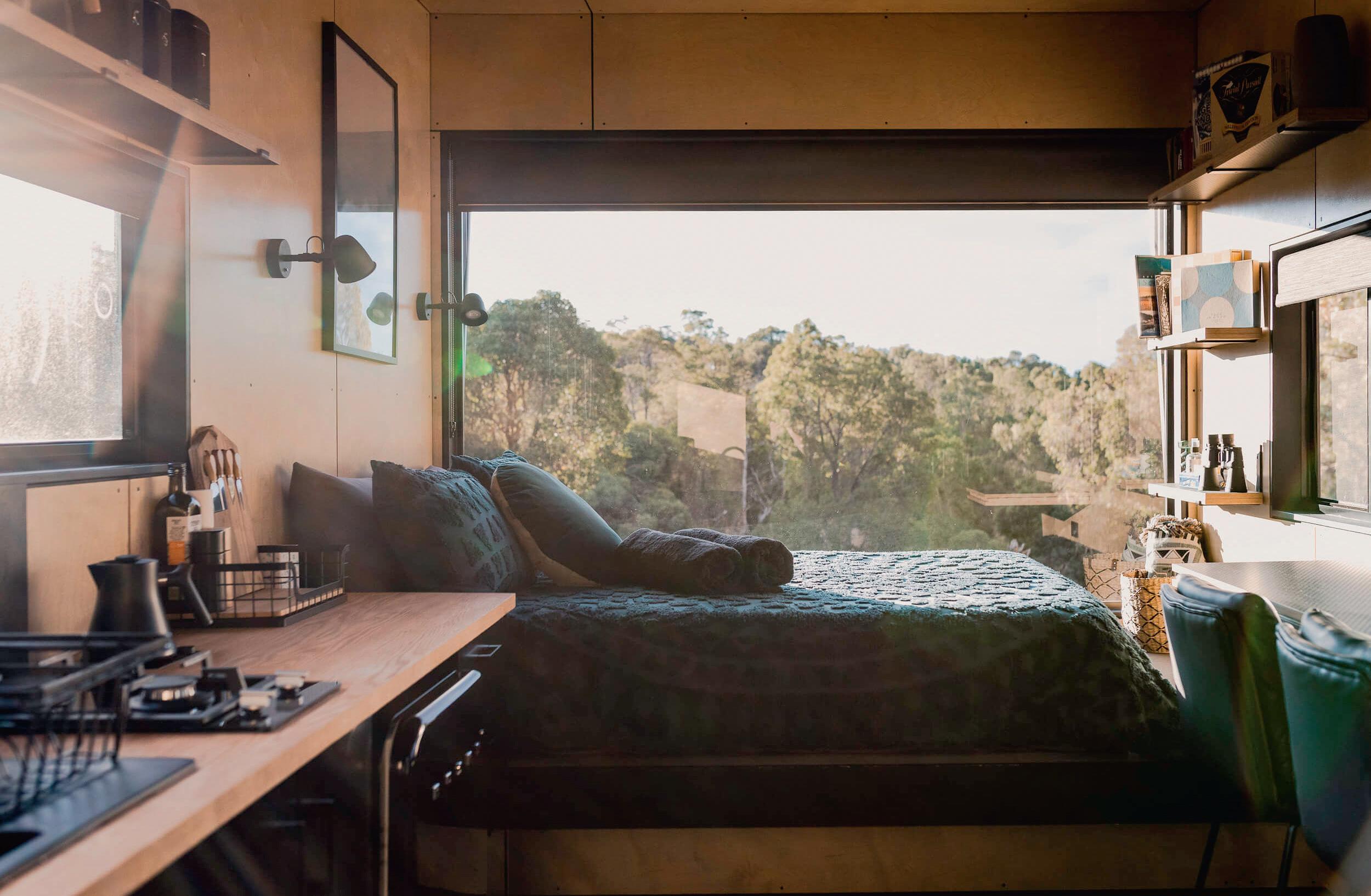
Each of the air-conditioned cabins has a queen bed (with bedding),
a kitchenette and bathroom with an indoor shower and odourless composting toilet. Outside you’ll find a barbecue, wood fire, picnic table and chairs and a natural wonderland begging to be explored.
There are bushwalking trails and hiking tracks aplenty through the national park, which is also blessed with one of the country’s most striking beaches, Lucky Bay. With white sand stretching down to the Tiffany-blue Indian Ocean, it captivates humans and kangaroos alike (share nicely – the roos found it first).
Soak up some R&R Geraldton, just over 400 kilometres north of Perth, has a beach for every activity, a growing arts and culture community and a booming food scene. What was missing until 2021
was a festival that wrapped all of Gero’s attractions into one very fun reason to visit the state’s Mid West.
Shore Leave (shoreleavefestival. com.au), scheduled for April 24 to 28, features live music, markets, art exhibitions, stargazing and a host of kid-friendly activities. But the main event is food, with the region’s renowned western rock lobster taking centre stage.
The four-star Ocean Centre Hotel (oceancentrehotel.com.au) is across from the beach and the foreshore where most of the Shore Leave program takes place. Book a room here and you’ll never be far from the action – or a lobster. It’s also a good base from which to explore the red gorges and starry skies of Kalbarri, less than two hours up the road, and the spectacular Abrolhos Islands, 60 kilometres off Geraldton’s coast.
In fact, Shore Leave’s signature event is the Abrolhos Island Long Table Lunch so secure a ticket and start dreaming: sand between your toes, Vasse Felix wine in your glass and coal-fired lobster and octopus on your plate.

With Sting’s hit song in your ears, ride through fields of gold on WA’s newest cycling event, Backroads (backroads gravel.com.au). It’ll be on again in August next year, when the pastures of the Mid West region are aglow with golden canola, lofty wheat crops and, yes, blooming late-winter wildflowers.
Setting out from (and returning to) the town of Nabawa, a 30-minute drive from Geraldton, riders of all ages and abilities are invited to follow various runs, from the 10-kilometre Gravel Groms (for lapsed riders and little ones) to a 160-kilometre stretch for the serious cyclists. If you think the reception at the finish line of the Tour de France is enthusiastic, you haven’t met the Nabawa locals.
While you’re in the area, walk off the saddle-soreness on the Chapman River Nature Trail, habitat of the endangered ringtail possum and Carnaby’s black cockatoo.
There are no camels or cocktails and there’s no confected history. There’s also no more engaging way to learn the backstory of Broome (Rubibi) than on a walk through the mangroves and mudflats of Roebuck Bay.
Yawuru man Bart Pigram –a professional curator and member of the musical Pigram family – is the founder of Narlijia Experiences (toursbroome.com.au). He and his Aboriginal guides take visitors into havens sheltering fish, turtles and other aquatic creatures while sharing stories of First Nations history and
the settlement of Broome and its pearling industry.
Not all of Pigram’s stories are pretty but in his eloquent telling, they’re always absorbing. So slip on some boots, slap on some sunscreen and don’t forget the insect repellent. This is Broome unvarnished.
With its food, wine and glorious beaches, the state’s south-west doesn’t seem to be an obvious place to sit inside and watch movies, let alone host a six-day film festival. But the organisers of CinefestOZ (cinefestoz.com) know that when the credits roll, there’s nowhere better for after-parties, dinners, workshops and free time than a region blessed with excellent vino, cool eateries and cranking surf.
The festival – back in 2024 for the 17th time – not only premieres
some of Australia’s best new movies but it also awards the country’s richest film prize and gives cinephiles the chance to connect with filmmakers and industry bigwigs at events in places such as Busselton, Margaret River and Dunsborough.
To be close to the screenings (and picturesque Geographe Bay), check into Aqua Resort (theaquaresort. com.au), a collection of self-contained one- to five-bedroom beach houses in Busselton, many with their own heated plunge pool.
Festival regulars this year were thrilled to see Busselton foreshore dining icon The Goose (thegoose.com. au) back on the program after it was destroyed by fire in 2021. If you want a break from all the movie action, watch the wood-burning grill make stars of whole market fish, grass-fed beef and pizza. In Margaret River, drop into Rhum Burgundy (rhumburgundy. au), a hip cocktail bar helmed by mixologist Billy Phillips and partners in wine Dylan Arvidson and Taryn Hogan. But for sheer drive-through joy, lower the window at Coffee Heads (coffeeheads.com.au) in the hamlet of Vasse and pick up a sanger by Brendan Pratt, former head chef at fine-diner Vasse Felix. Pratt’s roastchicken roll is Oscar-worthy.
There was a time when tourists would arrive in the Pilbara region, marvel at the scenery then keep driving, oblivious to the history of the landscape or the stories held for thousands of years by the area’s original inhabitants. Clinton Walker, a descendant of the Ngarluma and Yindjibarndi peoples, Traditional Custodians of the coastal and inland areas of the West Pilbara, wanted to change that.
Forming Ngurrangga Tours (ngurrangga.com.au), Walker and his fellow First Nations guides began taking visitors into Murujuga National Park, home to the highest
concentration of ancient rock art in the world, down the coast to forage for bush tucker and on 4WD camping adventures. Now a night-time tour has been added to the itinerary, enjoying a glorious Pilbara sunset, a starlit campfire and a fireside corroboree (ngunda).

A sprinkling of hospitality fairy dust has settled across Perth this year, with an array of restaurant and bar openings, some inner-city, some unexpectedly suburban and all worth a visit.
Bassendean, for instance, 10 kilometres north-east of the CBD, isn’t quite as cool as urban hot spot Northbridge but it’s making a fine start with new watering hole Bertie (bertiewinebar.com.au). Helmed by
veteran bartender James Connolly, with chef Anthony Yuill (ex-Melbourne fine-diner Vue de Monde and Shadow Wine Bar in Northbridge) on the pans, the vibe here is European while the food is a modern take on the British classics of the chef’s childhood.
Sitting at the other end of the spice spectrum, 180-seat Miss Mi (missmiperth.com.au), which opened in Perth’s Novotel Hotel in February, dishes up a blend of traditional South-East Asian cuisine and local produce (the lamb ribs with Szechuan glaze is getting rave reviews).
In a neighbourhood packed with great places to eat, Subiaco newcomer Shui (shuisubi.com) might be the only one wily enough to offer a dish as irresistible as sesame prawn crumpets with black garlic aioli. It’s the standout on a menu that also includes local swordfish crudo with coriander ginger
ponzu and snapper with a peppered oyster glaze.
One suburb along in Shenton Park, a bistro with sage-green banquettes, crisp white tablecloths and antique-mirror-lined walls has been transporting locals to France since late 2022. La Bastide (labastide bistro.com.au) serves classic French dishes with a modern, local twist, such as Wagin farm magret de canard, pommes dauphinoise, haricots verts, sauce au gingembre, and a considered wine list. This is an eatery serious about its mission but unpretentious in its approach.
Northbridge is not to be outdone, with the opening of Edward & Ida’s (edwardnidas.com), a pub and cocktail den on the site of an old theatre that was founded by a couple of characters called Edward and Ida Beeby. It’s pub fare with a focus on pies. Cheers!
At this exciting time when shaping the future of aviation will extend keeping Australia’s skies safe into aerospace, diverse brains, skillsets and roles are needed. Why not yours? Join us, enquire now.
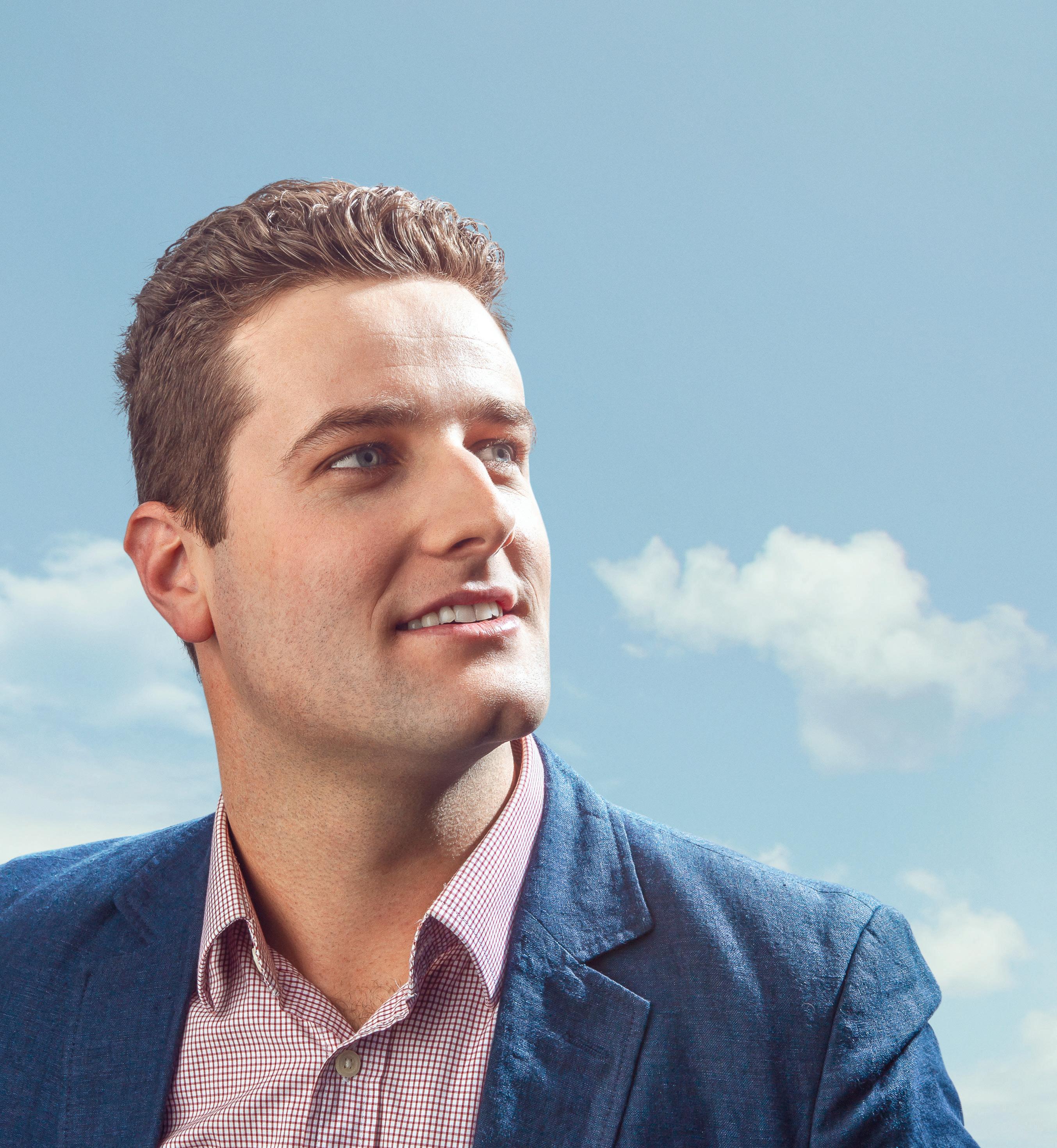
North of Perth (Boorloo), the sparkling beaches of the Coral Coast lure travellers up Indian Ocean Drive. Follow that call and in about two-and-a-half hours you’ll hit the Pinnacles at Nambung National Park. Dotting the landscape for kilometres, these sandstone pillars formed about 30,000 years ago and offer an otherwordly detour.
Back on the coast road, you’ll come upon the wild, white sweep of Hangover Bay – hit the brakes for a swim and to work up an appetite. Just up the road is The Lobster Shack (lobstershack.com.au) in Cervantes so head to the waterside deck for plates piled with fish tacos and grilled whole lobster.
Nearby Jurien Bay offers fishing, hiking and, famously, a colony of endangered Australian sea lions. A tour with Turquoise Safaris (turquoisesafaris.com.au) allows you
to snorkel with these “puppies of the sea”. Celebrate your experience at Illegal Tender (illegaltenderrumco.com), about 80 minutes north, outside Port Denison. The distillery’s Spiced Rum goes down a treat thanks to Kakadu plum, rosella and wattleseed.
This region is a non-stop playlist of nature’s top hits. Hutt Lagoon, a little over an hour from Geraldton (Jambinu), is better known as the Pink Lake. There’s a reason it’s all over Instagram – its candy colour is the sweetest of surprises.

Next up is Kalbarri National Park (Wurdimarlu), with inland gorges and coastal cliffs divided by the Murchison River. Peer through Nature’s Window, a red-rock frame carved over millennia and perch – if you’re brave – 100 metres over the gorge on the new Kalbarri Skywalk (Kaju Yatka).
A short drive away, Finlay’s Kalbarri (finlayskalbarri. com.au) is a chilled-out alfresco restaurant and brewery. Abrolhos octopus and Exmouth tiger prawns are on the menu, along with live music and craft brews.
From here, it’s just over three hours to Shark Bay (Gutharraguda), where temperate and tropical waters meet. At least 320 fish species and 80 different types of coral call this UNESCO-listed World Heritage area home. Explore the waterways on a stand-up paddleboard with Wula Gura Nyinda Eco Cultural Adventures (wulagura.com.au).
More adventures unfold as you head further north. At Monkey Mia, you might see the local dolphins along with jumbo dugongs and turtles. Catch a wave at Gnaraloo and watch the spray at Quobba Blowholes. Then head north to Exmouth (Warnangoora), the gateway to Ningaloo Reef (Nyinggulu). Book ahead for the chance to encounter whale sharks between March and September with Ningaloo Discovery (ningaloo discovery.com.au), a once-in-a-lifetime experience that’s as unforgettable as the road trip you’ve just completed.

Geraldton
Moments from the beach, The Gerald Apartment Hotel (qantas.com/hotels/thegerald) offers spacious rooms and a rooftop bar. Book a Classic King Apartment for super-fast wi-fi and a kitchenette.
Shark Bay
Water’s edge RAC Monkey Mia Dolphin Resort (qantas.com/ hotels/racmonkeymia) offers everything from backpacker dorms to beachfront villas.
Exmouth
Sal Salis Ningaloo Reef (qantas.com/hotels/salsalis) is a safari-style camp of 16 eco-luxe tents dotted along a remote stretch of coast. It’s camping... but with a king bed and outdoor bathroom.
Luxe offer: Book four nights for two adults from $5370 #

Tip: Qantas Hotels has more than 500,000 hotels around the world, including 450 top stays in Western Australia.



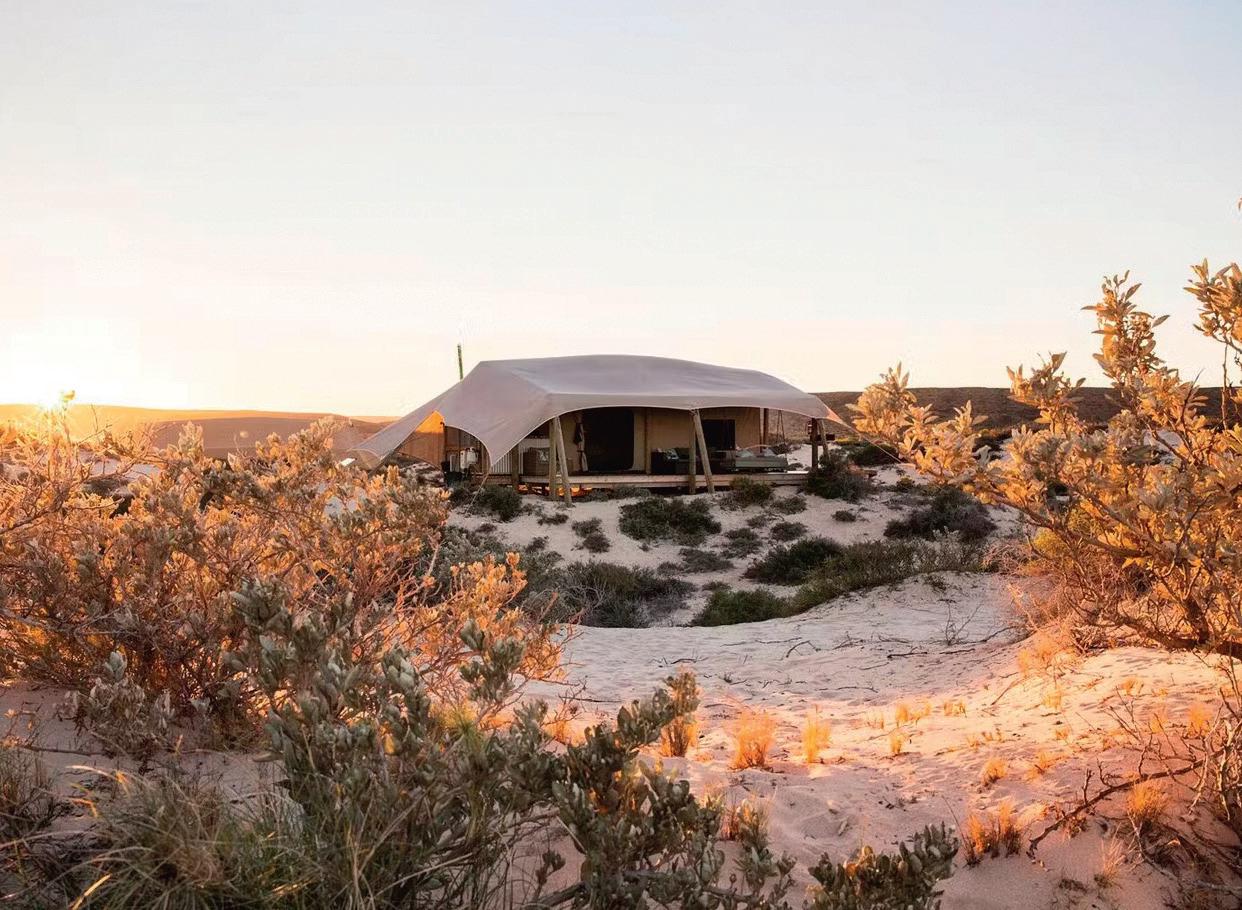
The road from Broome (Rubibi) to the Dampier Peninsula was fully sealed in 2021 so it’s ripe for road tripping. But before you leave town, visit Sun Pictures (broomemovies.com.au) for a heritage open-air movie viewing and Zookeepers by Spinifex Brewing Co (spinifexbrewery.com.au/zookeepers) for lemongrass-cured salmon, a match for their citrussy Myrtle Summer Ale.
As you drive north towards Cape Leveque, take the worthwhile 10-kilometre diversion to visit the Mother of Pearl Church in Beagle Bay. A stark white Teutonic structure, its inside is gloriously studded with shells, placed there by Aboriginal women in 1917.
Dampier Peninsula

Stay a while on the Kimberley coast in glamping tents, family-sized pearling shacks or the Master Pearler’s Private Retreat, all surrounding Cygnet Bay Pearl Farm (qantas.com/hotels/ cygnetbaypearlfarm).
Broome Oaks Cable Beach Resort (qantas.com/hotels/oaks cablebeach) offers apartmentstyle accommodation, plus three-bedroom villas, some with their own private plunge pools. Order a poolside cocktail and slip straight into holiday mode.
With a Jawi woman as your guide, explore the secluded Kimberley Coast by boat with Oolin Sunday Island Tours (sundayislandtours.com.au). Rosanna Angus traces sinuous currents and local culture through untouched tidal passages and islands. “Our stories remain a strong part of our living culture,” she says. “It’s how we pass on information and teach our young generations and visitors.”
Her tours leave from Cygnet Bay Pearl Farm (qantas. com/hotels/cygnetbaypearlfarm), where the Brown family has farmed these beauties since 1960 and runs tours of its marine operation, a remote paradise in shades of blue. Visit, shop for pearls and dine on pearl meat at the Cygnet Bay Homestead Restaurant as you absorb the rich colours of the Kimberley.
The region south of Perth is home to towering forests, dreamy beaches and world-class wineries. Your first stop on this road trip? The charming port town of Bunbury. Fertile valleys nearby produce excellent grapes so you should try the tempranillo at Green Door Wines (greendoorwines.com.au). Cruise through Busselton (Undalup), where a dive/ snorkel day pass allows you to explore a new underwater sculpture trail at the end of its epic 1.8-kilometre jetty. Then take a seat at Bunkers Beach House (bunkersbeachhouse. com.au) for a five-course set menu celebrating local seafood. A morning dip in pristine Yallingup Lagoon warrants eat-on-the-beach pastries and toasties from the kiosk at Lagoon Yallingup (lagoonyallingup.com.au). Can’t decide which wineries to visit in the Margaret River Region? Add some culture to your palate with the Art & Wine Pairing at Leeuwin Estate (leeuwinestate.com.au) for morning tea, a tour of the estate’s art gallery and a guided tasting.
Beneath Leeuwin Naturaliste Ridge lie crystal-studded cave systems, such as Lake Cave in Forest Grove, entered via a sinkhole. Above ground, things are just as adventurous. Consider tackling all or some of the Cape to Cape Track, a 123-kilometre hike along the Leeuwin-Naturaliste Ridge. Multi-day guided walks, half-day or full-day tours are on offer with Cape to Cape Explorer Tours (capetocapetours.com.au).
Head inland to Manjimup and visit Truffle Hill (trufflehill.com.au), the area’s first truffière. Join the treasure hunt and finish with a tasting platter and paired wines. Then walk it off in Pemberton, where the 10.5-kilometre Warren River Loop takes you through old-growth karri forests.
Earn 3 Qantas Points per $1 spent* when you book your WA stay at qantas.com/hotels . Plus, bundle your hotel with flights and save.



In the heart of wine country, Cape Lodge (qantas.com/hotels/ capelodge) is a 22-room estate of grand proportions with hectares of manicured gardens, lakes and its own vineyard.

Smiths Beach Resort (qantas. com/hotels/smithsbeachresort) has villas, beach shacks and apartments. There’s a beach on the doorstep, a national park surrounding it and an excellent Kate Lamont-led restaurant.

Luxe offer: Book two nights for two adults from $995 #
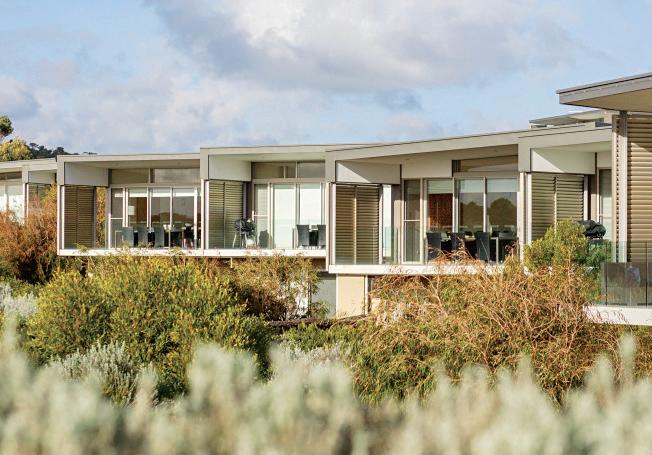
In a serene location, RAC Karri Valley Resort (qantas.com/hotels/ rackarrivalley) is a family-friendly, almost-tech-free zone (it has limited TV reception and no mobile coverage) featuring lakeside and forest-view rooms and chalets, along with a restaurant.
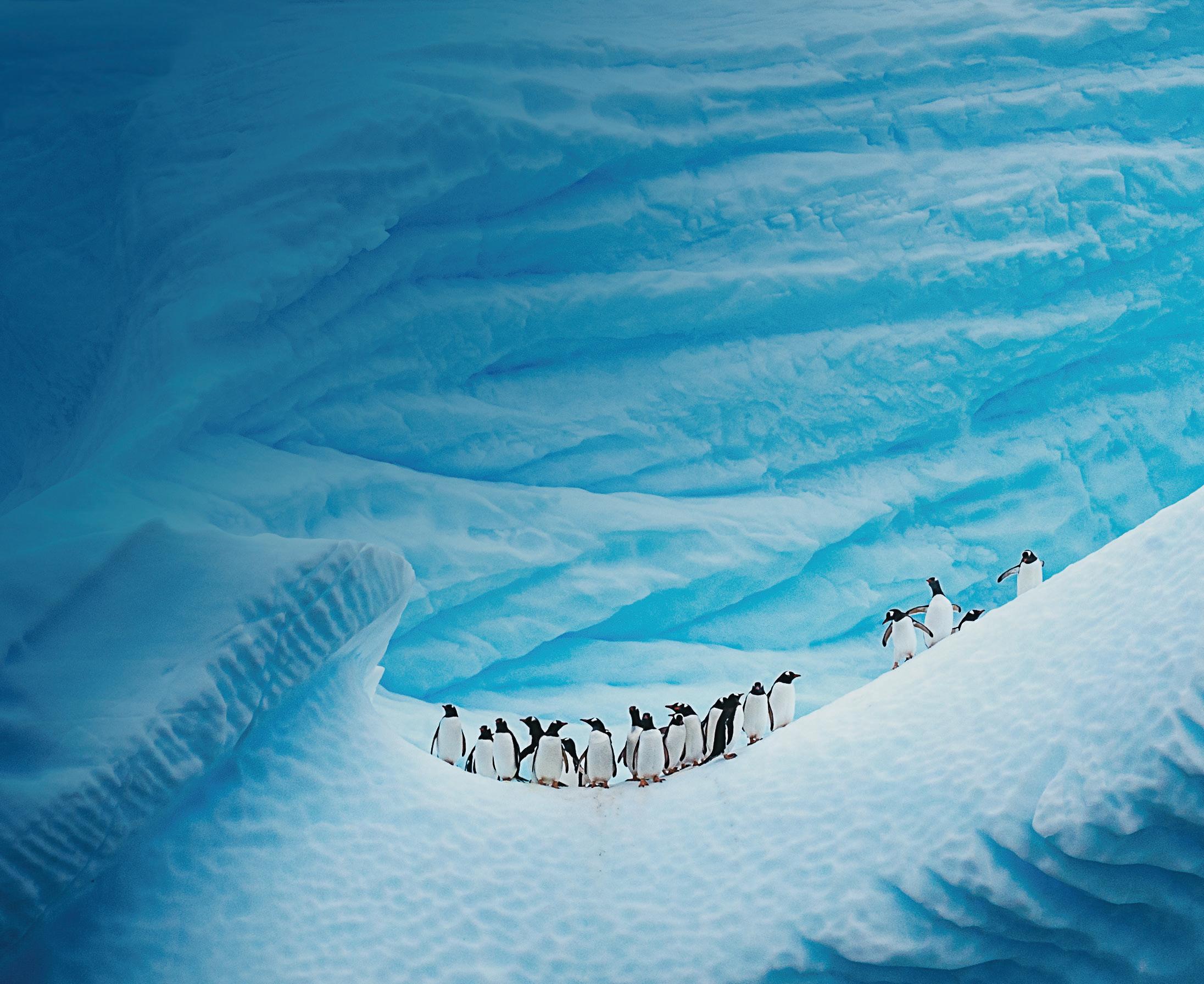
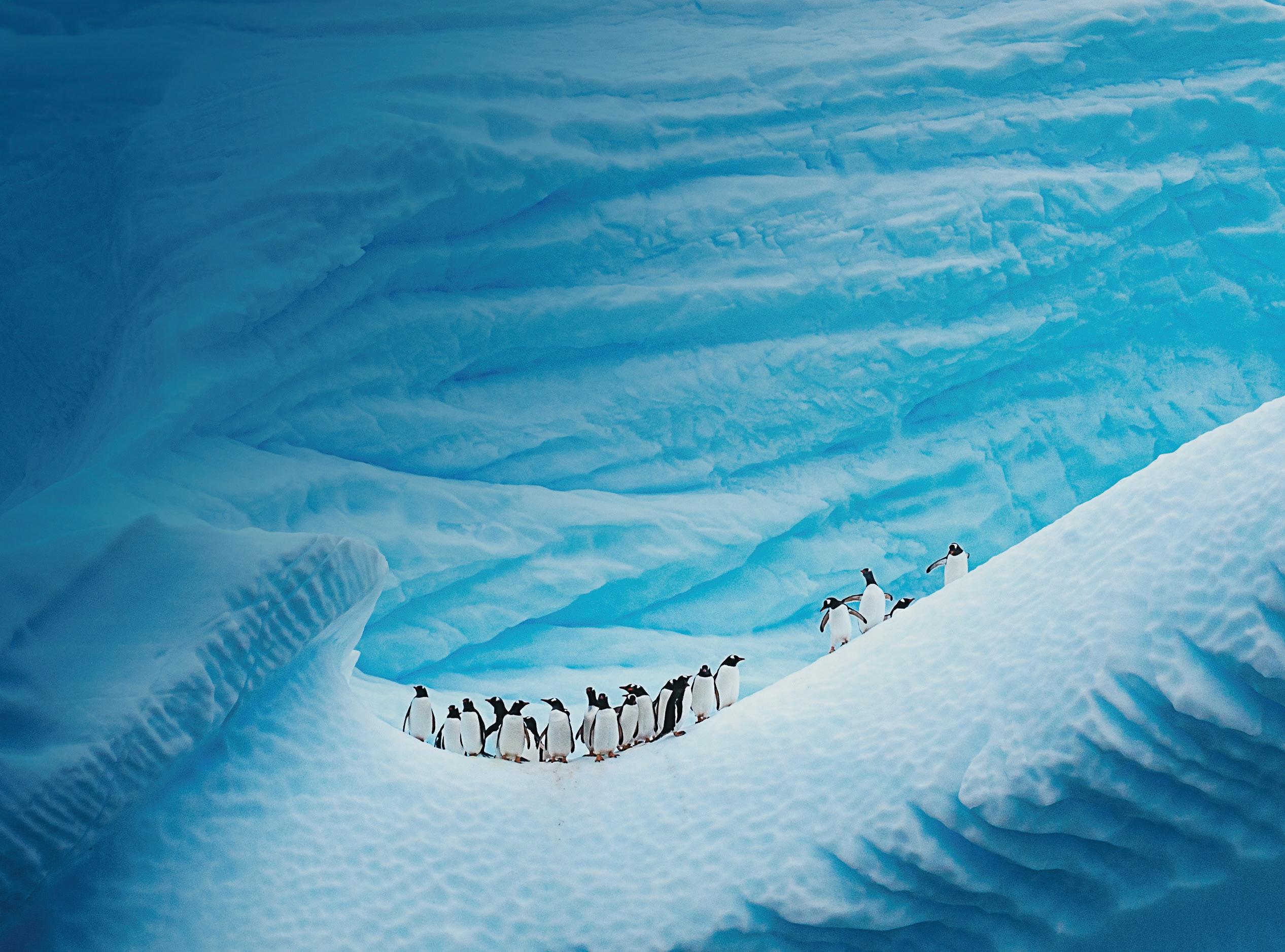
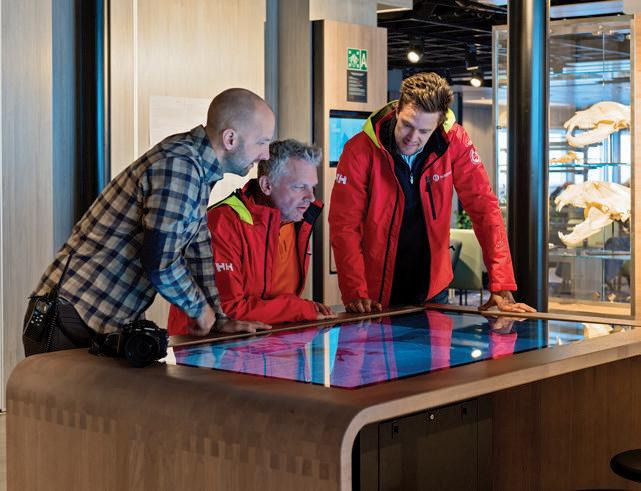

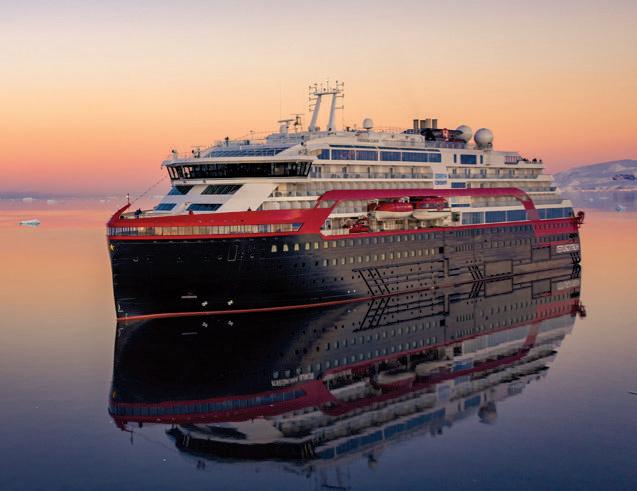

A cruise to French Polynesia’s famed and lesserknown islands reveals both sides of the idyllic Pacific archipelago. Story by Alexandra
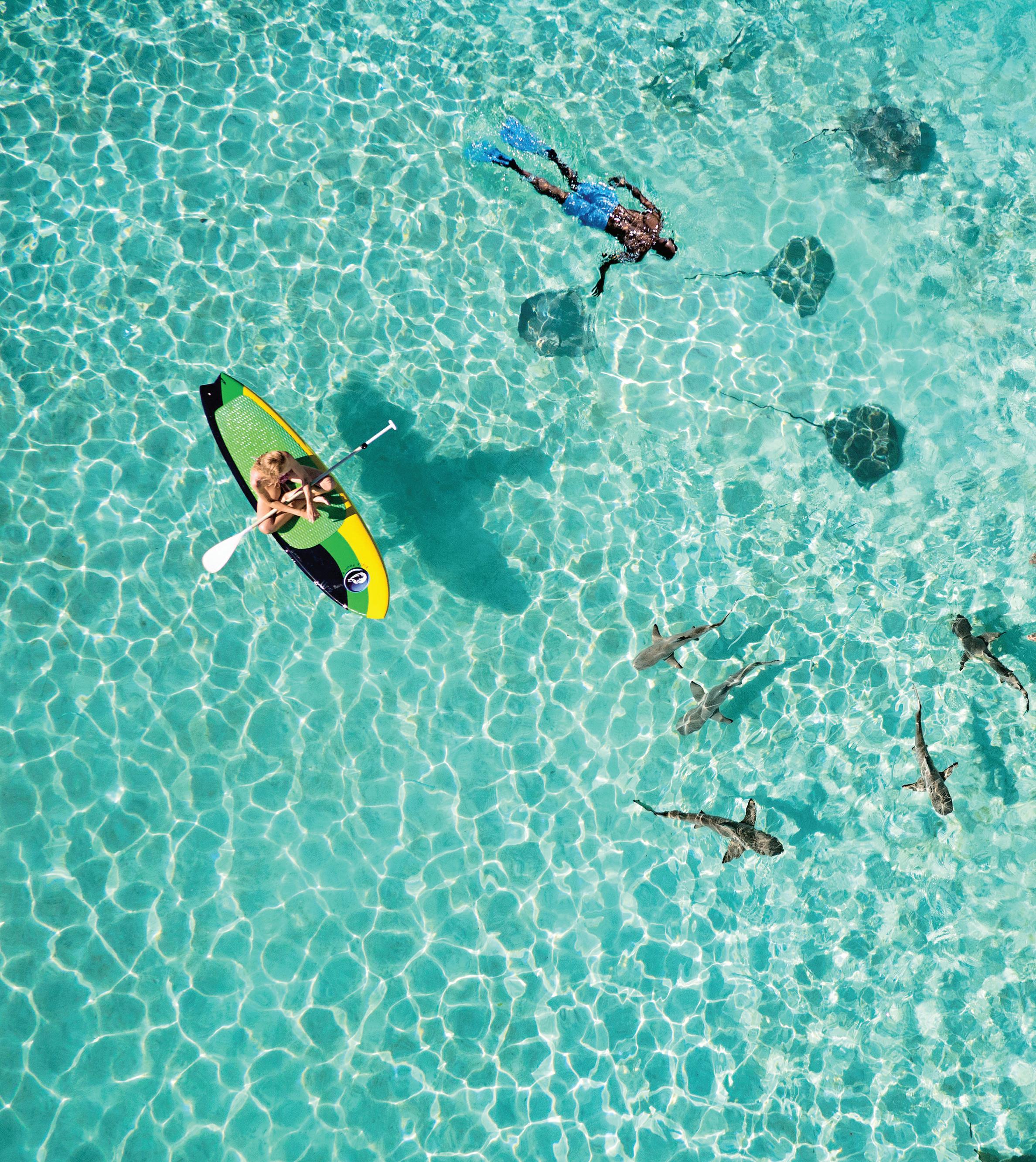 Carlton
Carlton
It’s lunchtime in the waterfront village of Tetamanu, on the south side of the remote, UNESCO-classified Fakarava atoll in the Tuamotu Islands of French Polynesia. Around me, my fellow guests from the cruise ship MS Paul Gauguin are finishing plates of fire-cooked reef fish and poisson cru – the cevichestyle fish salad eaten everywhere around here – but I’m not really hungry. In fact, I’m a little fidgety. I want to jump into the water with the sharks.
In plain sight, off the edge of the jetty, dozens of blacktip reef sharks –some measuring more than 1.5 metres in length – are weaving through the water. Almost everyone who comes to French Polynesia swims with these famously docile sharks at some point; the ones around the popular islands of Tahiti and Moorea are practically tame, well-fed and cruise around in water that’s barely waist deep. But these guys look bigger, a bit more bright-eyed and alert, which is how I feel about getting into the water alongside them.
“If you want, you can go,” says one of the Polynesian guides, noticing my excitement. I don’t need to be told twice. I dive into the water, which is easily four or five metres deep, and pull my snorkel mask into place. Suddenly I’m in the thick of it, just me and the sharks. They dart confidently beside and below me and some even swim straight towards my wide eyes, curious, before veering off at the last minute. I’m simultaneously exhilarated and unnerved – these blacktips are more lively than their chilled-out counterparts, though I know that they don’t consider me lunch. This is the wildness I want from an island adventure.
My solo Fakarava shark encounter is one of many unforgettable moments on the 10-night The Society Islands & Tuamotus cruise with French Polynesian



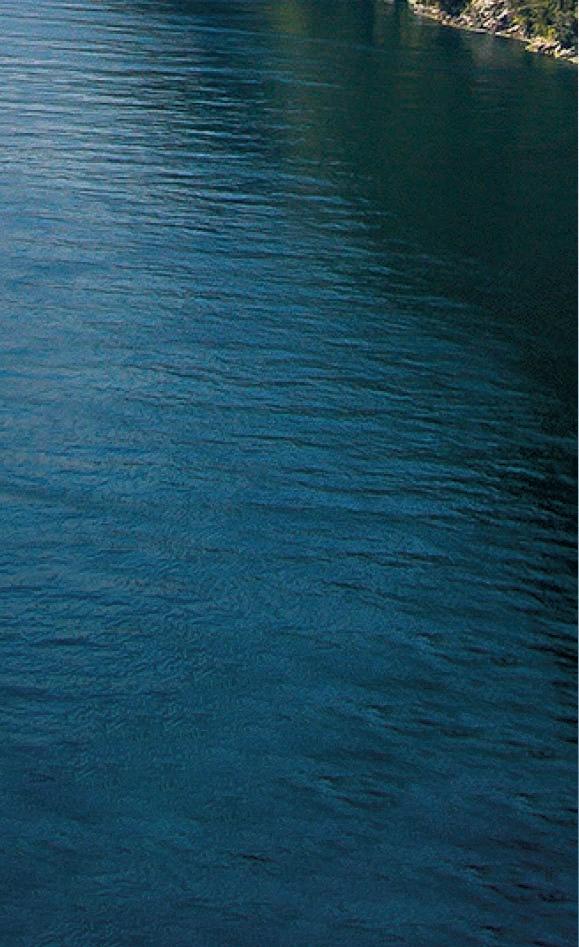
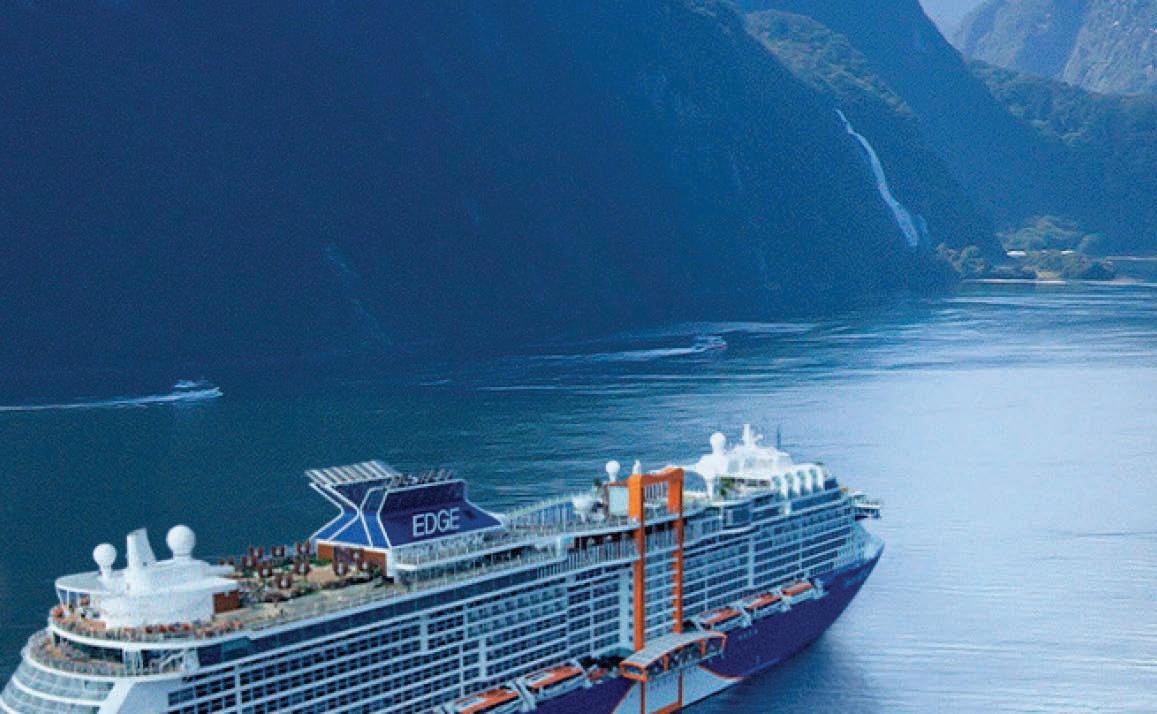
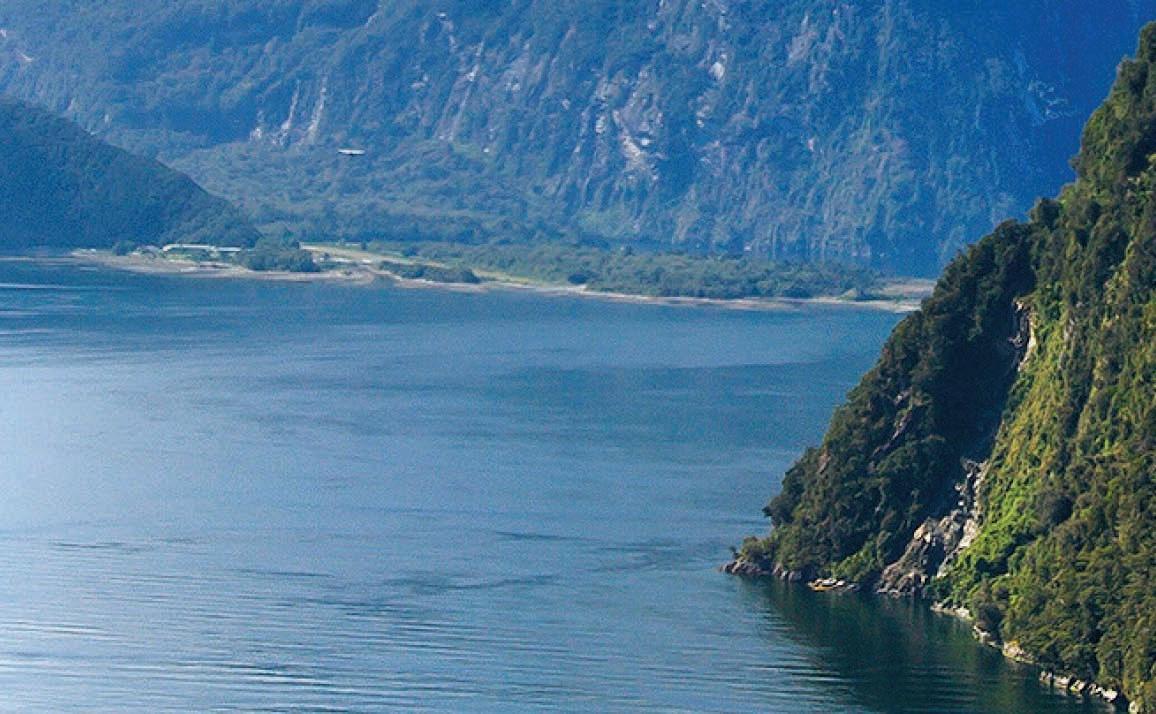



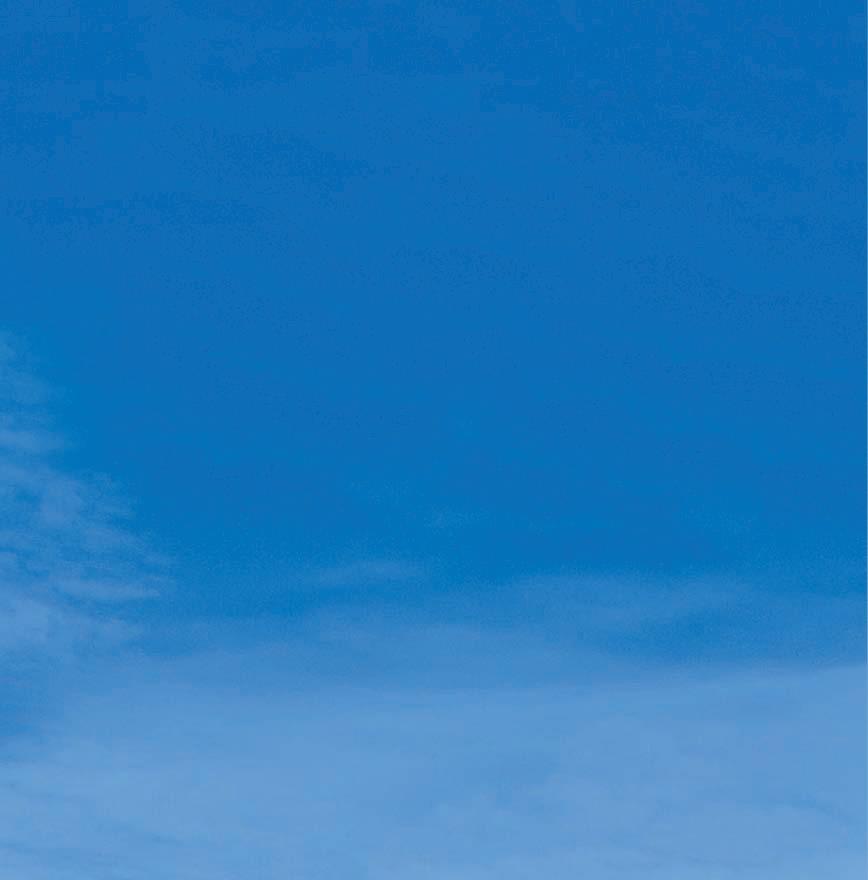
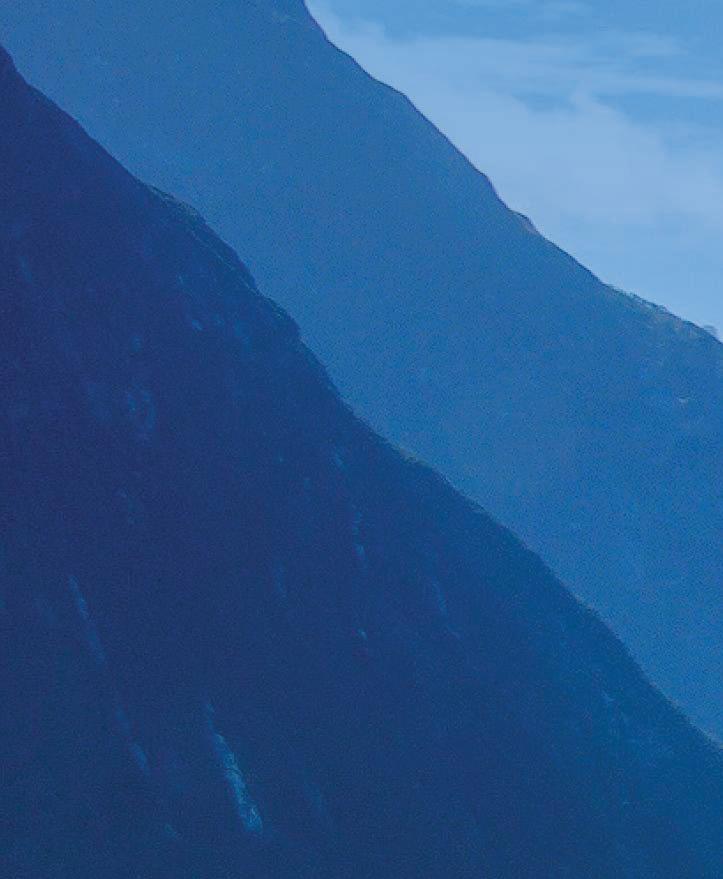

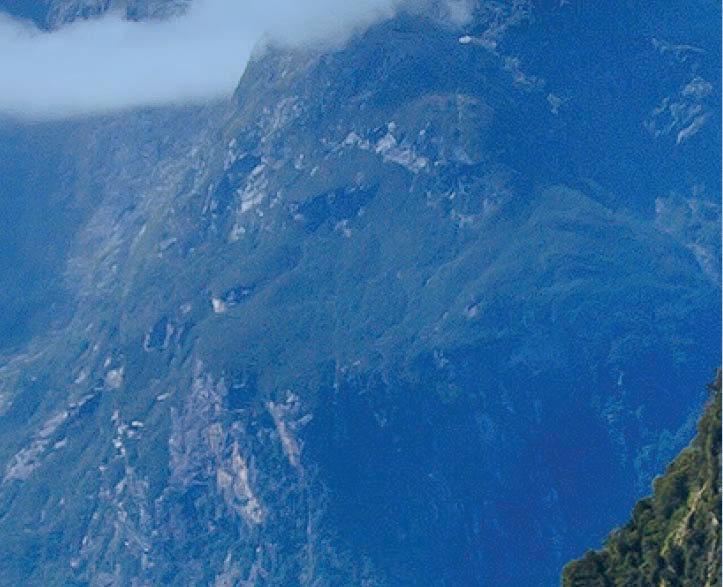
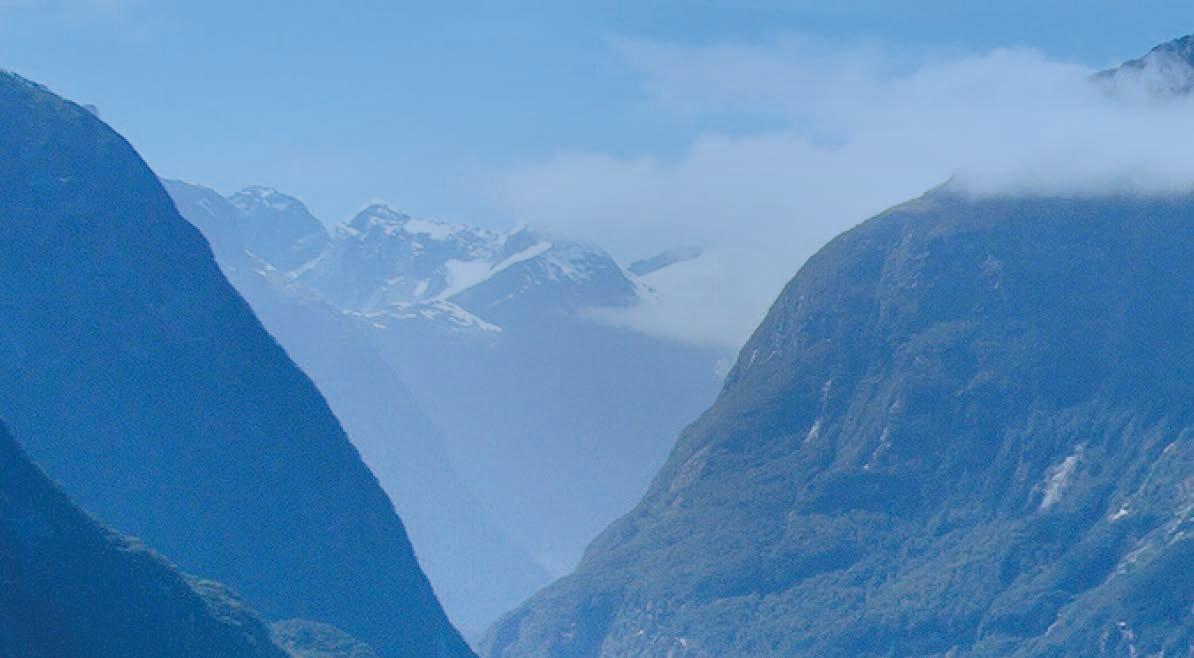



experts Paul Gauguin Cruises (pgcruises. com). The journey begins in the nation’s capital, Papeete, on the island of Tahiti, and takes in big-name stops such as Bora Bora and Moorea before striking out to the remote Tuamotu Islands at the heart of the archipelago, an area where many visitors don’t venture.
The beauty of this trip, I realise as one palm-fringed, aqua-blue day melts into another, is that we can choose what level of “wild” we’re comfortable with at each stop. Despite my shark swim I’m not all about the adrenaline. I love a gentle slice of slowdown, a chance to understand what a destination is about.
I find it on the island of Huahine, around 200 kilometres north-west of the main island of Tahiti, one of our earliest stops. With a population of just over 6000, Huahine is not unknown but it’s definitely less visited than many other spots in the archipelago (former United States President Barack Obama explored the isle during a yacht tour with wife Michelle, Bruce Springsteen and Oprah Winfrey in 2017).
I join a small-group 4WD tour led by local guide Joe (“As in G.I. Joe!” he says with a laugh) and we wind along coastal and mountain roads, through the lush foliage, thick with hibiscus and palms. We stop at the village of Fā’ie, where Joe shows us the sacred blue-eyed eels that live in the town’s fresh water. We visit a lagoon where locals have set up fish traps that feed the villagers every day and a marae, a traditional Polynesian ceremonial site. Joe knows everyone, waving to friends and family as they zip by on motorbikes or relax beneath heavily laden mango trees, weaving palm fronds. He hugs people with a traditional Polynesian foreheadtouch greeting. “You know what the people like to do around here?” he asks. “They play cards. They have a siesta.
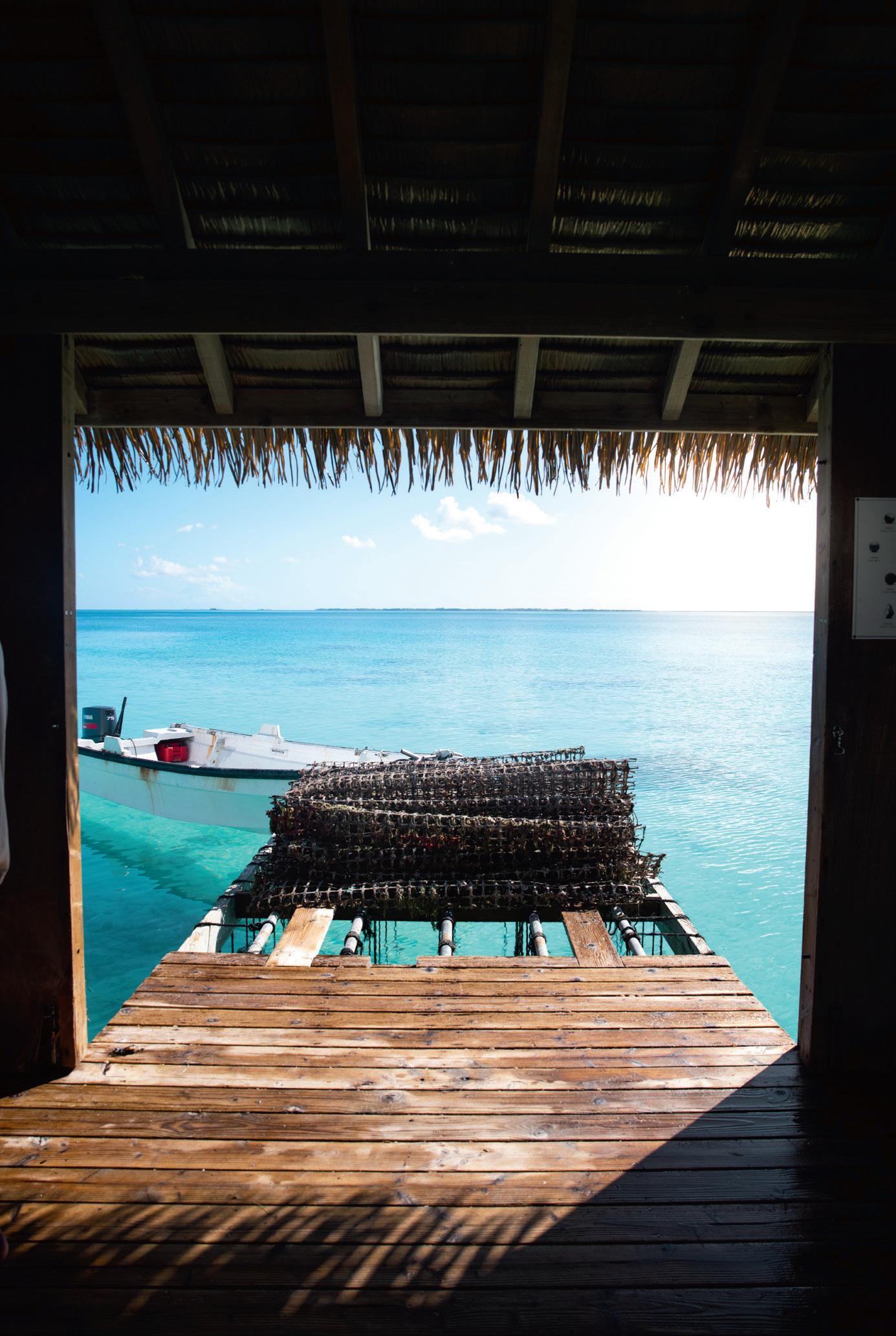
They catch a fish. And they go to sleep. We call it, ‘Haere maru, haere papu’. It means, ‘Go slowly, go easily.’” That’s how our journey with Joe feels as we start to blend into Huahine’s rhythms. Haere maru, haere papu.
Onboard the 330-guest MS Paul Gauguin, life goes pretty slowly and easily, too. Formerly under American stewardship, the vessel was acquired by luxury French brand Ponant in 2019 and has enjoyed a chic makeover, with updated décor that matches the shades of blue outside.

Culturally, the ship operates with a charming and slightly zany blend of French, American and Polynesian language and cuisines: announcements are in a mix of English and French, with the occasional Polynesian “māuruuru”
(thank you) or “ia orana” (hello) thrown in. You might eat fresh wahoo fish or mahi-mahi one night (Paul Gauguin sources fish directly from the sea that it sails on, a testament to the pristine condition of the French Polynesian waters) and seared foie gras or southern fried chicken the next.
The ship’s “Gauguins and Gauguines” – Polynesian entertainers and storytellers – bring the culture of the islands directly onto the ship, most notably in regular dance performances. Entertainment is generally low-key; magicians and documentary screenings, maybe some dancing in the La Palette cocktail lounge after dinner. There’s no sense that you have to be anywhere or do anything at any particular time.
“My name is Florizel but you can call me
Flo, as in ‘go with the flow’,” declares one waiter on the first night and that seems as good a tagline as any for our tropical voyage.
There’s one constant – whether I’m sipping a Mai Tai beside the ship’s pool, cranking up my heart rate with toothy wildlife or letting galaxy-black gems fall through my fingers at a local pearl farm – and that’s the unending masterpiece of the French Polynesian landscape. No camera can adequately capture the Barbie-pink sunsets, the chlorophyll-green of the rainforests, the layered hues of the ocean, from pale-mint reefs to the deepest Prussian depths. We may go slowly and we may go easily on our good ship Paul Gauguin but the beauty of these islands makes my heart beat faster.
Enjoy fine dining and butler service as you cruise, then take to the sky – or go below the surface – for a new perspective. Scenic Eclipse II is taking ultra-luxury cruising to the next level.
The state-of-the-art discovery yacht Scenic Eclipse II is bringing an elevated standard of at-sea ultra-luxury to Australian shores when it arrives in April 2024 for a twoyear season. The ship features 114 suites, all with private balconies and 24/7 butler service. There’s also up to 10 all-inclusive dining experiences and pool decks that are ripe for taking in the dramatic vistas of the tropical Pacific Islands, Indonesian archipelagos and epic coastlines of Australia.
Scenic Eclipse II will glide through Oceania with an expert Discovery Team, including historians and marine biologists, on hand to guide the included discovery excursions. Get an elevated point of view from one of the ship’s two helicopters, reach the shoreline on a comfortdesigned Zodiac or dive to 200 metres underwater in the discovery yacht’s submersible.*
Onboard experiences are curated and indulgent, with a close to 1:1 crew-to-guest ratio that ensures your every need is catered for. Try salt therapy in the expansive 550-square-metre Senses Spa, sound-bowl healing in the yoga and Pilates studio or select a whisky nightcap from more than 100 varieties at the Scenic Lounge Bar before retiring to your suite fitted with a king-size bed.
To find out more, call 138 128, visit scenic.com.au/kimberley or contact your local Scenic Travel Advisor
� Soar over Western Australia’s rugged, red-hued Kimberley in a Scenic Eclipse II helicopter (the region’s most extensive helicopter program) and enjoy an aerial view of Montgomery Reef, 20 kilometres off the coast, as well as thunderous waterfalls and pristine beaches.
� Plunge below the surface on the Scenic Neptune II, the ship’s submersible, to discover the Great Barrier Reef ’s kaleidoscope of vibrant coral reef and tropical marine life from a unique underwater viewpoint.
� Explore remote and exotic destinations like Indonesia’s Spice Islands and Raja Ampat . Impossibly blue waters, unspoiled powderwhite beaches and verdant jungle await.
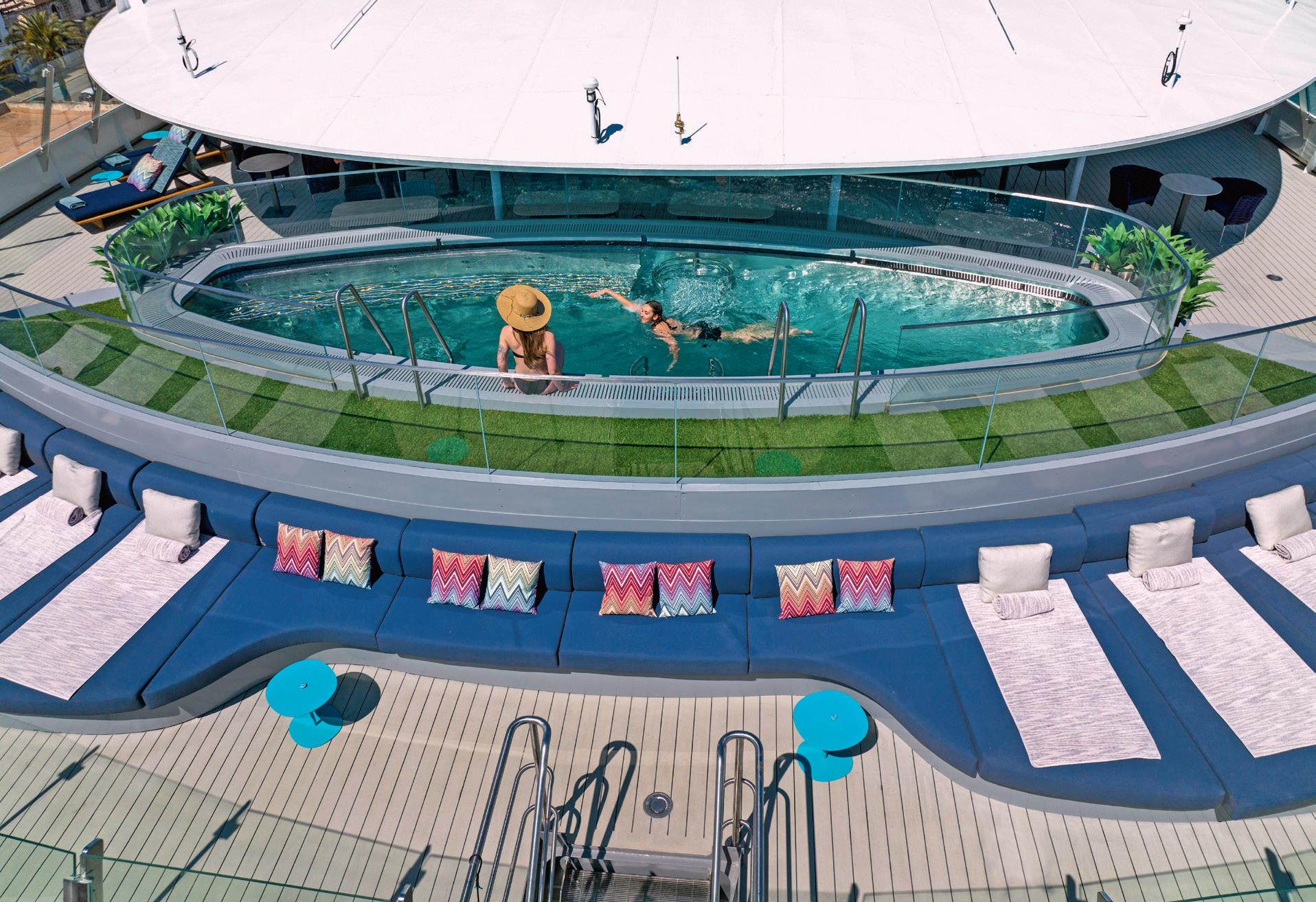



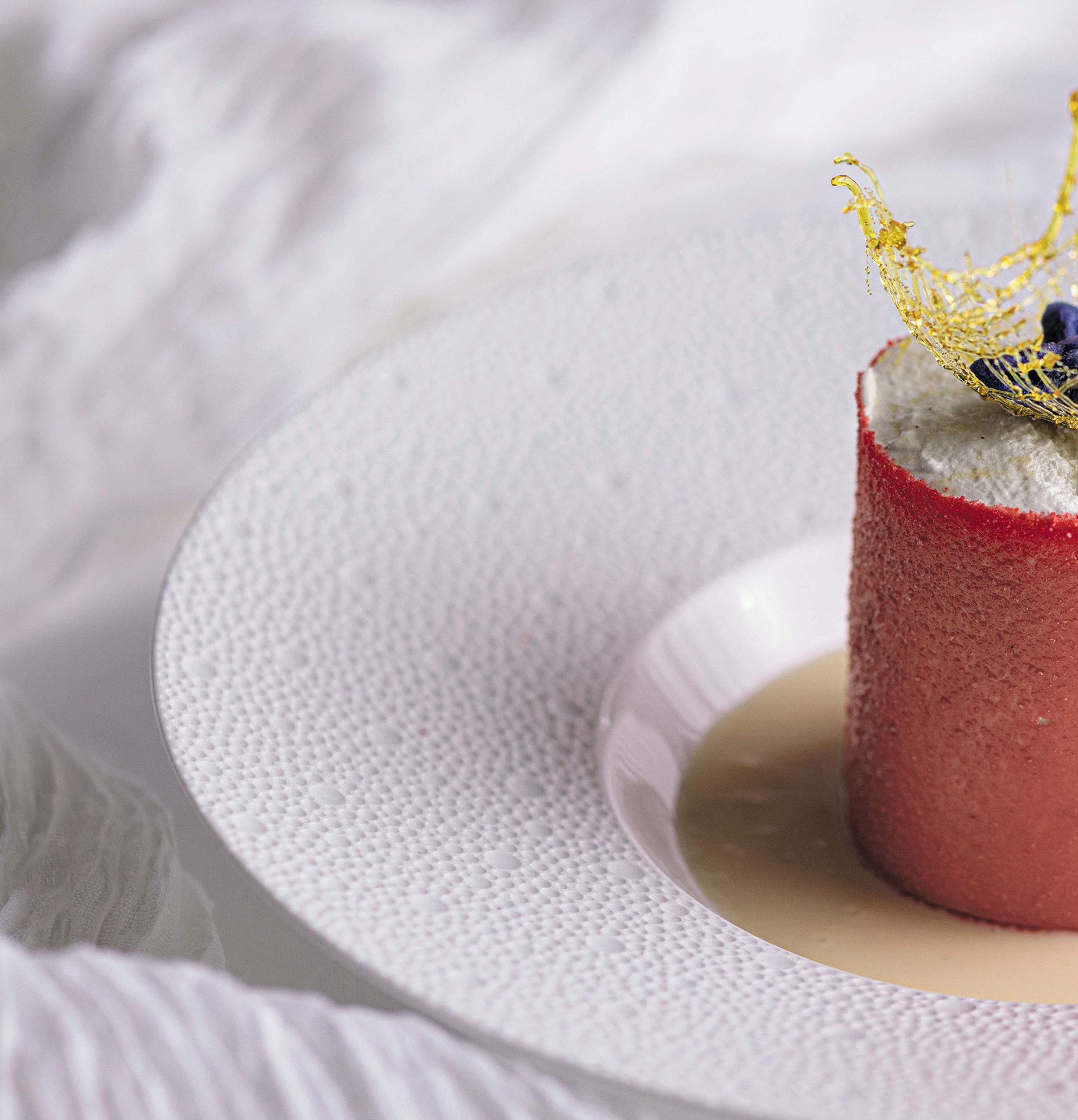

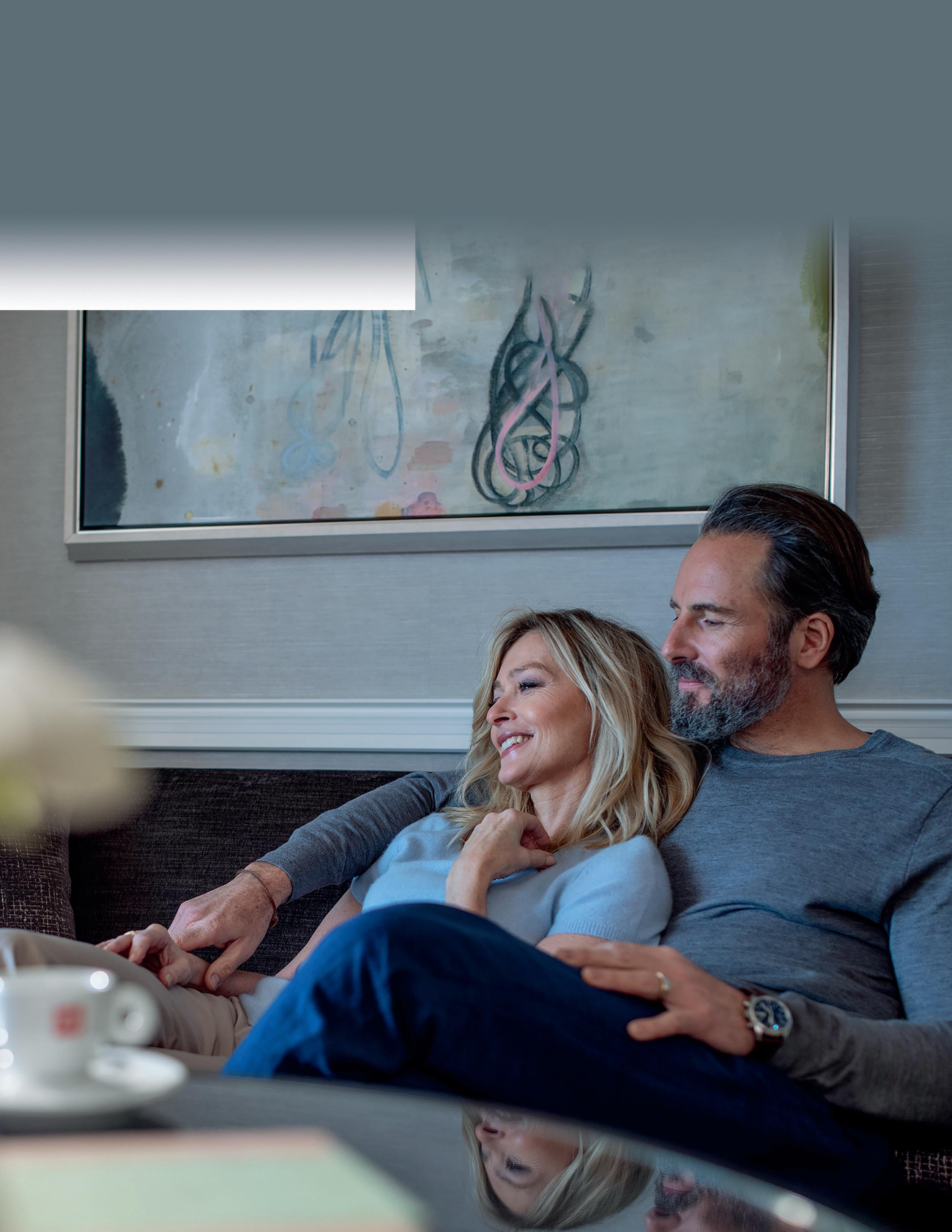
 Budapest, Hungary
Budapest, Hungary
Sailing the Danube River offers a glimpse of countries once hidden behind the Iron Curtain. Story by Faith Campbell

VOYAGE AROUND THE GLOBE IN STYLE ON BOARD OUR BEAUTIFULLY RENOVATED SHIPS, WHERE WORLD-CLASS DINING AND ENTERTAINMENT MEET EXCEPTIONAL SERVICE AND EXPERIENCES.
TO VIEW AND BOOK ONE OF OUR CURATED ITINERARIES, CONTACT YOUR TRAVEL ADVISOR, VISIT CRYSTALCRUISES.COM OR CALL 1300-503-640
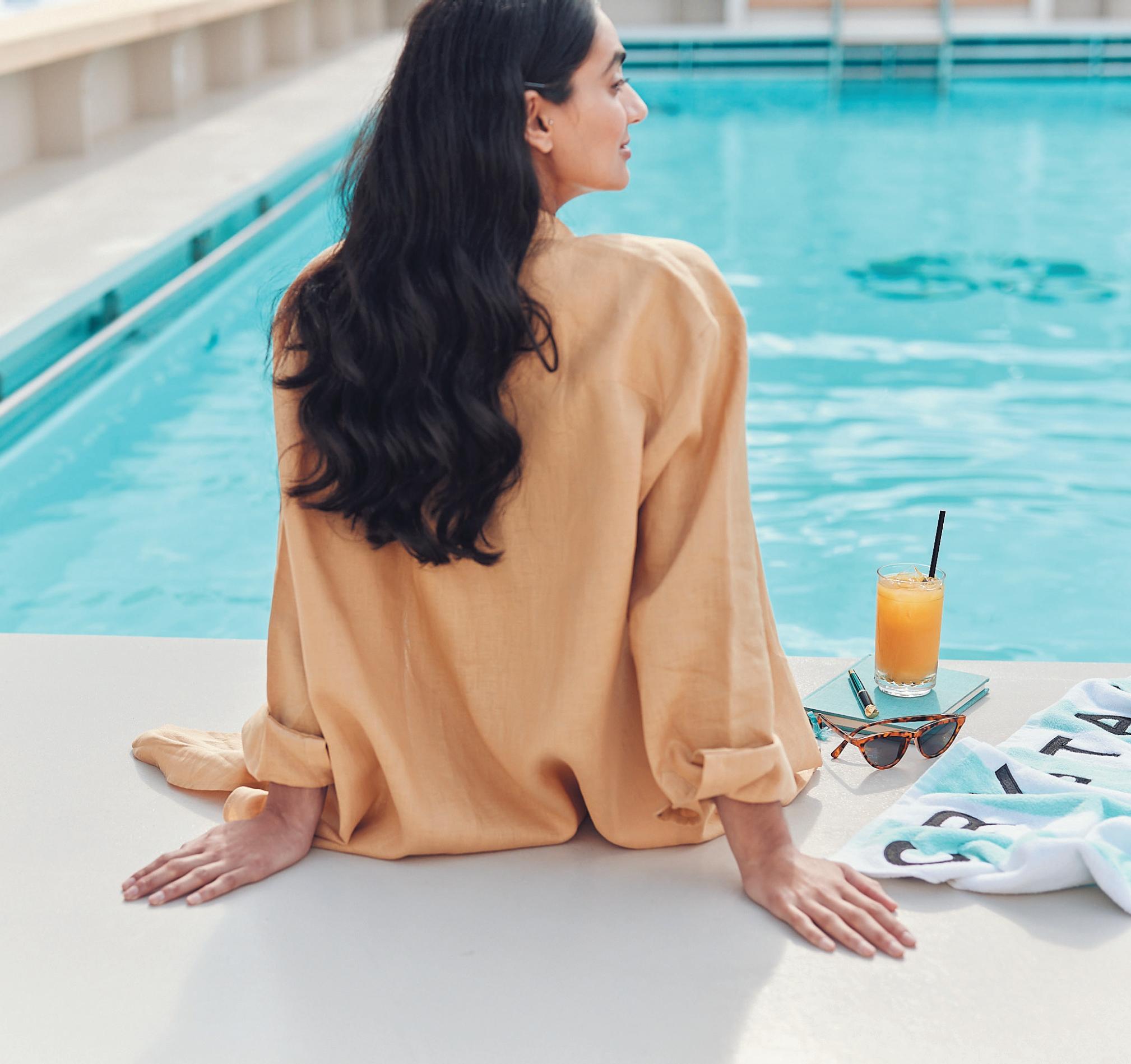
“Several parts of the Delta look like the Amazon,” says guide Cosmin, as our small boat whips down a narrow tributary of the Danube River. We’re about 10,000 kilometres from the South American rainforest and the thicket of green crowding the water looks nothing like the Romania I expected. The trees fall away and we’re zooming across a broad lake under cartoon clouds. “Look to the right!” shouts Cosmin over the engine and all 10 of us do. “Glossy ibis flying! Squacco heron flying! A king cormorant on the dry branches of that tree!”
It’s day four of Viking Cruises’ Capitals of Eastern Europe itinerary (vikingcruises.com.au) and I get a crick in my neck spotting pelicans, swans, terns and coots. I blink and miss the azure kingfisher that darts in front of the boat. We’ve detoured from our route sailing from Bucharest, Romania, to Vienna, Austria, to spend a few hours touring the Danube Delta, about 5800 square kilometres of UNESCO-protected biosphere reserve. Cosmin, who’s from Transylvania, cracks Dracula jokes (“The real vampires of Romania? Mosquitoes”) as Ric, a guest all the way from Iowa, makes notes and peers through binoculars. “I’m about 120 away from seeing 5000 bird species
worldwide,” he tells me later. “When I signed up for the cruise, this trip was the clincher.” For Ric and his wife, Betty, it’s all about the birds; for couples I meet from Palm Springs, Louisiana and Melbourne, and families travelling from Sydney, Northern California and Nashville, the voyage is a chance to check out places they’ve never been. Over 17 days aboard the 190-guest longship Viking Rinda, we’ll visit Bulgaria, Serbia, Croatia and Slovakia and spend a couple of days in Budapest, Hungary. Ask cruise director Leonard (who sipped a Virgin Mary while giving a talk on the legend of Dracula the day before) and the highlight of our itinerary is sailing through the Iron Gates on day seven. Chairs on the sundeck fill up by midmorning as we glide along. With Serbia on the left and Romania on the right, the landscape shifts from verdant forest to high, craggy escarpments. I’m unclear whether “Iron Gates” refers to the hydroelectric plant and its two locks (the river was dammed here in the 1970s) or to the towering gorge walls but Leonard’s commentary – tales of dragons in caves and a love affair between the sun, moon and river – makes the latter more appealing. When the giant stone face of King Decebalus appears

(he’s taller than Rio’s Christ the Redeemer), carved into rock on the Romanian side like a silent sentinel, I’m convinced.
“Welcome to our charming and lovely town. We have one bank, one church and one school.” Nikolai, the guide who greets us in Donji Milanovac, not far past the Iron Gates, is disarmingly tall and endearingly frank, “After the political and religious problems, our best years are to come.” It’s hot and quiet walking the few blocks to the church, past small grocery stores, neat gardens with huge, blousy hydrangeas, a handful of restaurants and the school, where Nikolai was once a student. A craft market is set up by the river and women hang hand-embroidered tablecloths and blouses on fences; I board the ship with bottles of dizzyingly boozy homemade cherry brandy and plum rakia.
“I like how relaxed it is,” says Amy, who’s here with her husband, Bill, to celebrate his birthday (the crew serenades him on the big day). We’re having an early lunch on the ship and share a table at the indoor-outdoor Aquavit Terrace, one of two dining spaces; our waiter remembers Amy likes iced tea and that I’m into the veggie burger and sweet potato fries. The American couple is already planning a trip to South-East Asia and a cruise

on the Seine in 2024. “Our kids are grown, our job is done,” says Amy happily. Days later I’ll bump into them in a Budapest bar.
When I’m not too tired after a tour or another 20,000 steps a day, I plonk down in the lounge, which is always packed with curious guests. One night, Leonard tells us about growing up in communist Bucharest and his experience of the 1989 Romanian revolution and on another, a Serbian writer does a neat job of unravelling the geopolitics of the region in simple terms. Sore feet are momentarily forgotten (and Viking Rinda’s only bar gets busier) when local folk musicians and dancers come aboard.
In Pécs, Hungary, an ancient city that’s said to have been deemed so pretty by a World War II pilot that it escaped bombing, guide Andras tells us that the country’s inflation is the highest in the EU. “Yeah, it’s high but it’s good to be the best at something,” he says wryly. Wandering the old town, he compares 19th-century Hungarian composer Franz Liszt to Harry Styles and points out the colourful Zsolnay porcelain roof tiles that might have charmed that fighter pilot; famous all over Hungary, they’ve been manufactured in Pécs since
Dine on a medley of five-star, locally-sourced cuisine, accompanied by included premium spirits and wines. From airport transfers and onboard gratuities to daily immersive excursions, every detail is taken care of.

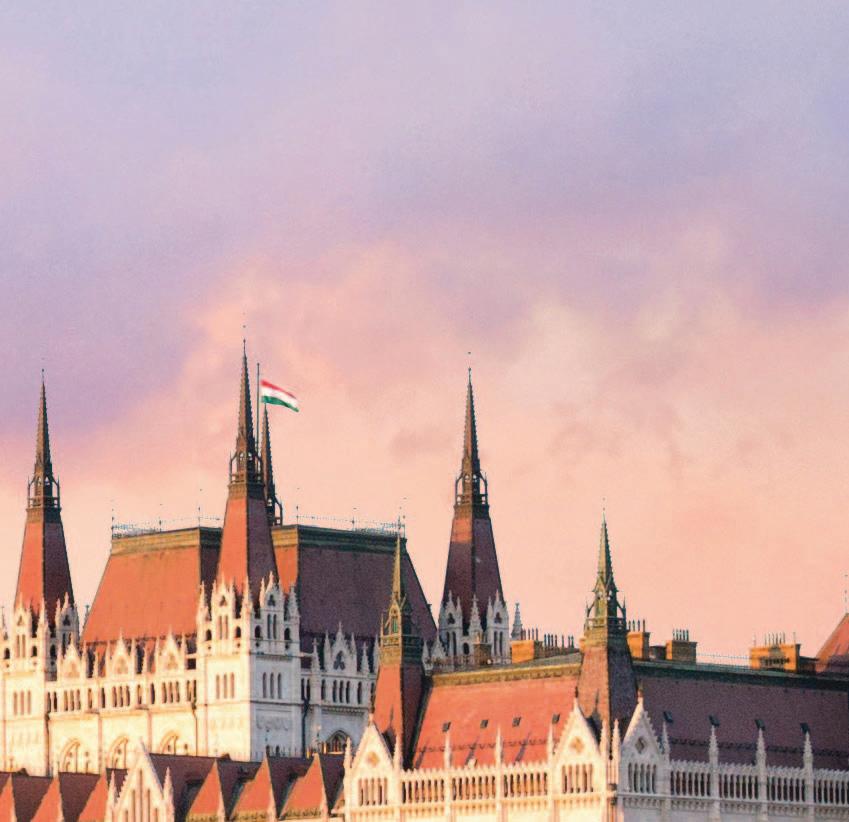
Our one-of-a kind floating boutique hotels are destination-inspired and purposefully designed with every luxury and comfort in mind.






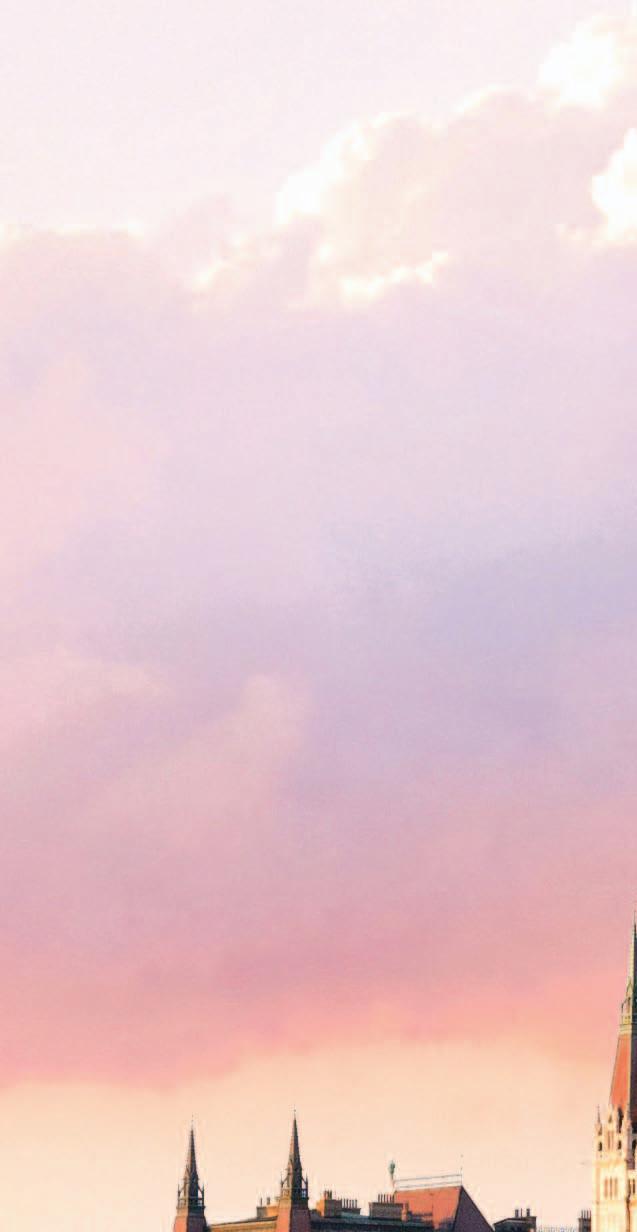
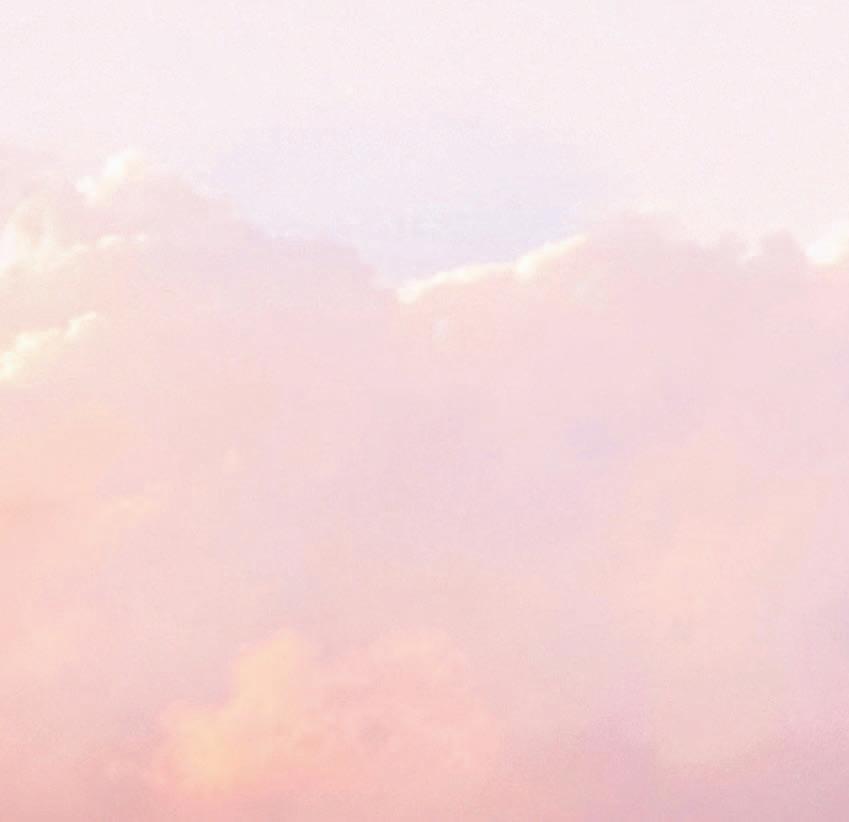

8 Days • Budapest to Passau (or in reverse) | S.S. Maria Theresa


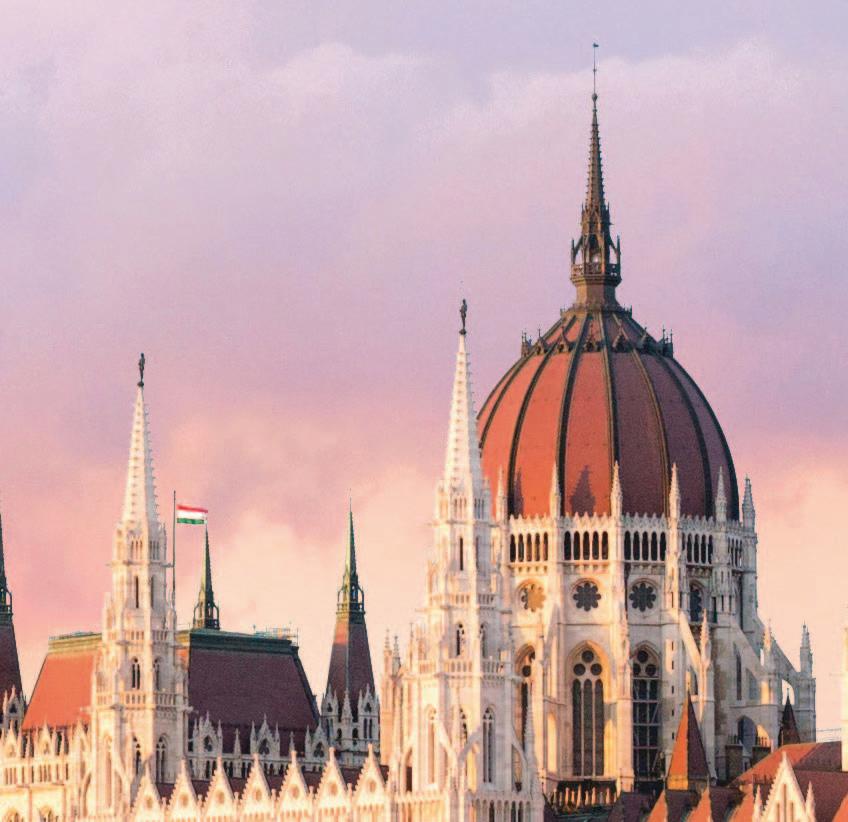

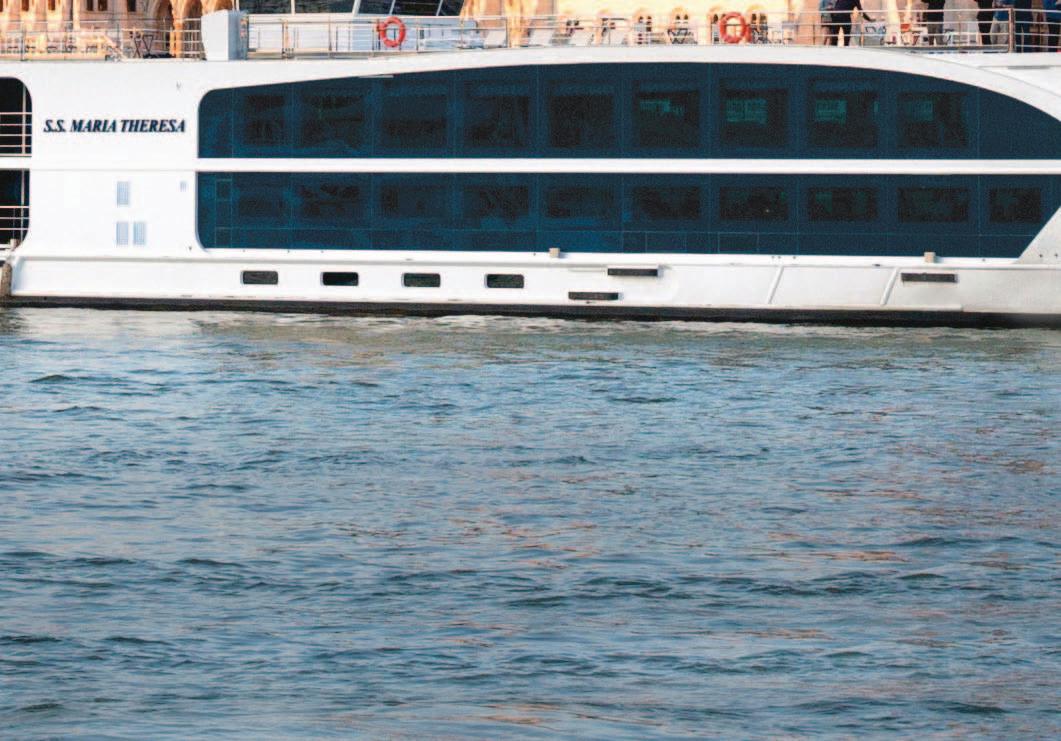
Embark on a captivating journey through Central Europe, immersing yourself in the rich cultural heritage of four remarkable countries. This meticulously curated experience offers a tantalising blend of iconic landmarks and hidden gems, expertly guided by local insiders, including exclusive access to extraordinary attractions like the Kunstkammer, Vienna’s esteemed art collection.
Departures in 2024 & 2025 from $4,079* pp twin share






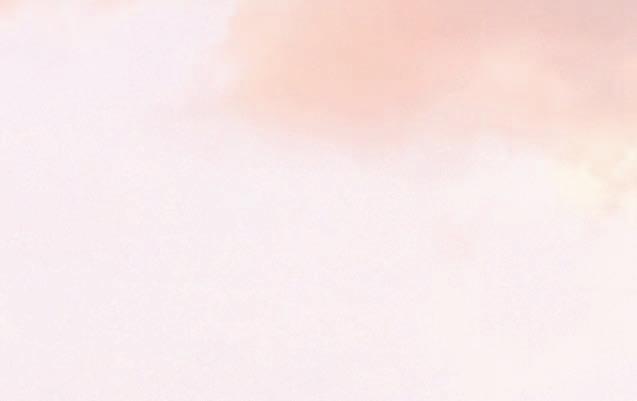
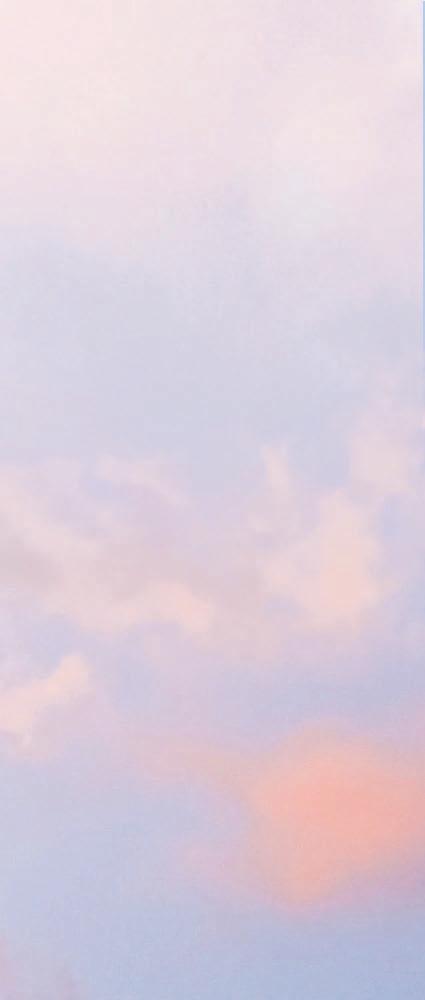
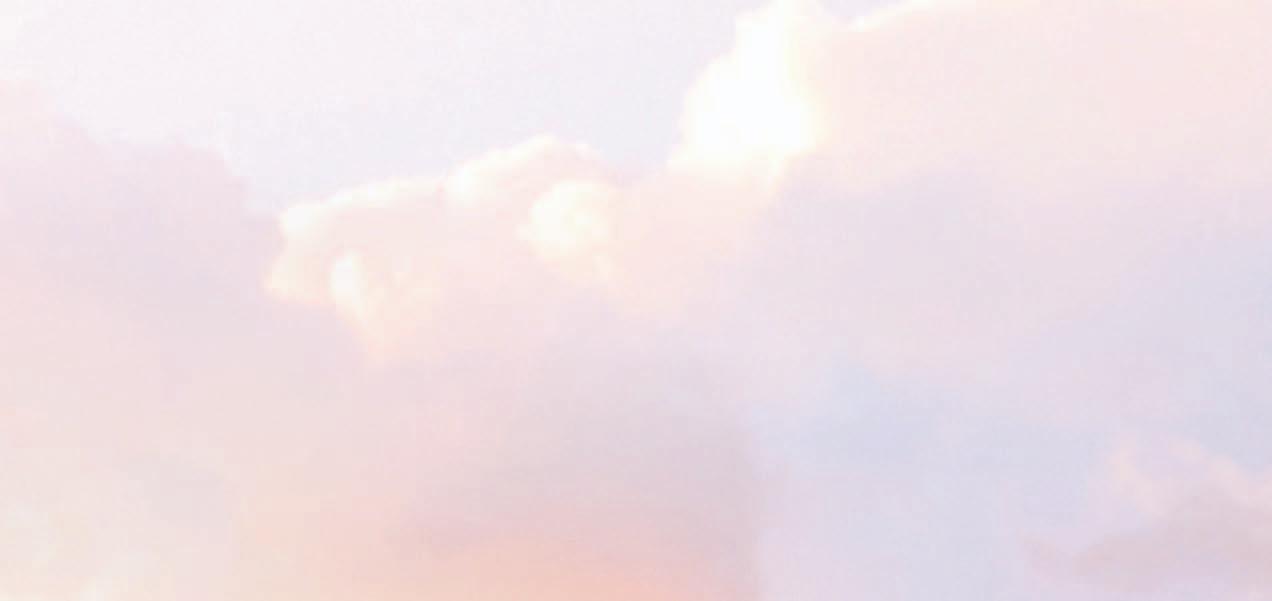

1853. There’s free time before we get the bus back to the port of Mohács so I buy a honking great cheese burek, take pictures of pastel-painted buildings and sit in the grand main square.

Sailing from Mohács to Budapest, my boyfriend and I hang out in our Scandi-elegant state room with its balcony and wall of glass doors and watch small beaches covered in vibrant umbrellas and sunbathers pass by. Holiday huts face the water, with tinnies tied up at boat ramps and humble piers. Anglers sit still beneath the beating sun; two women wave from a canoe. Viking Rinda is barely louder than a humming fridge thanks to its hybrid engines and, even from bed, I can hear crickets, birds and the fishermen chatting. At dinner in the restaurant, we look for Ken and Chavonne from California, who are on a father-daughter schoolies adventure before she leaves home for college. I eat most of the bread basket while deciding, as I do almost every night, to order the three-course menu of local specialties (such as the spiced trout fillet in Bulgaria and chocolate coconut cake – ĉupavci – in Croatia).
For almost two weeks I’m surprised every day – by another beautiful town I hadn’t heard of; by a hike in Serbia’s Đjerdap
National Park; on a bike ride in Belgrade that’s broken up by a dip at the city’s man-made beach; when I buy a pair of slippers and the shoemaker phones his son to help translate his thanks into English; and by the easy comfort of Viking Rinda and watching life unfold on the river. But Budapest I know. When our fellow guests head off on optional excursions to the thermal baths and Jewish Quarter, we slip into the crowd at the Great Market Hall for lunch, crisscross the river’s bridges and hang outside a tiny bar with a rockabilly band playing inside.
After dinner, not long before the ship pulls away from the dock, Leonard urges everyone to join him on the sundeck. The long summer afternoon finally fades to night and both sides of the shore, Buda and Pest, begin to light up. The fairytale monuments of the Castle Hill district emerge from the gloaming and as we drift by the Hungarian Parliament building, fancy as a wedding cake, it glows gold against the blue sky. Just when it feels like the show’s over, Leonard tells everyone to turn around. In two days exploring on foot, bus, bike and funicular, none of us has seen Budapest like this: captured in one perfect frame, all its lights shining on the inky Danube River.
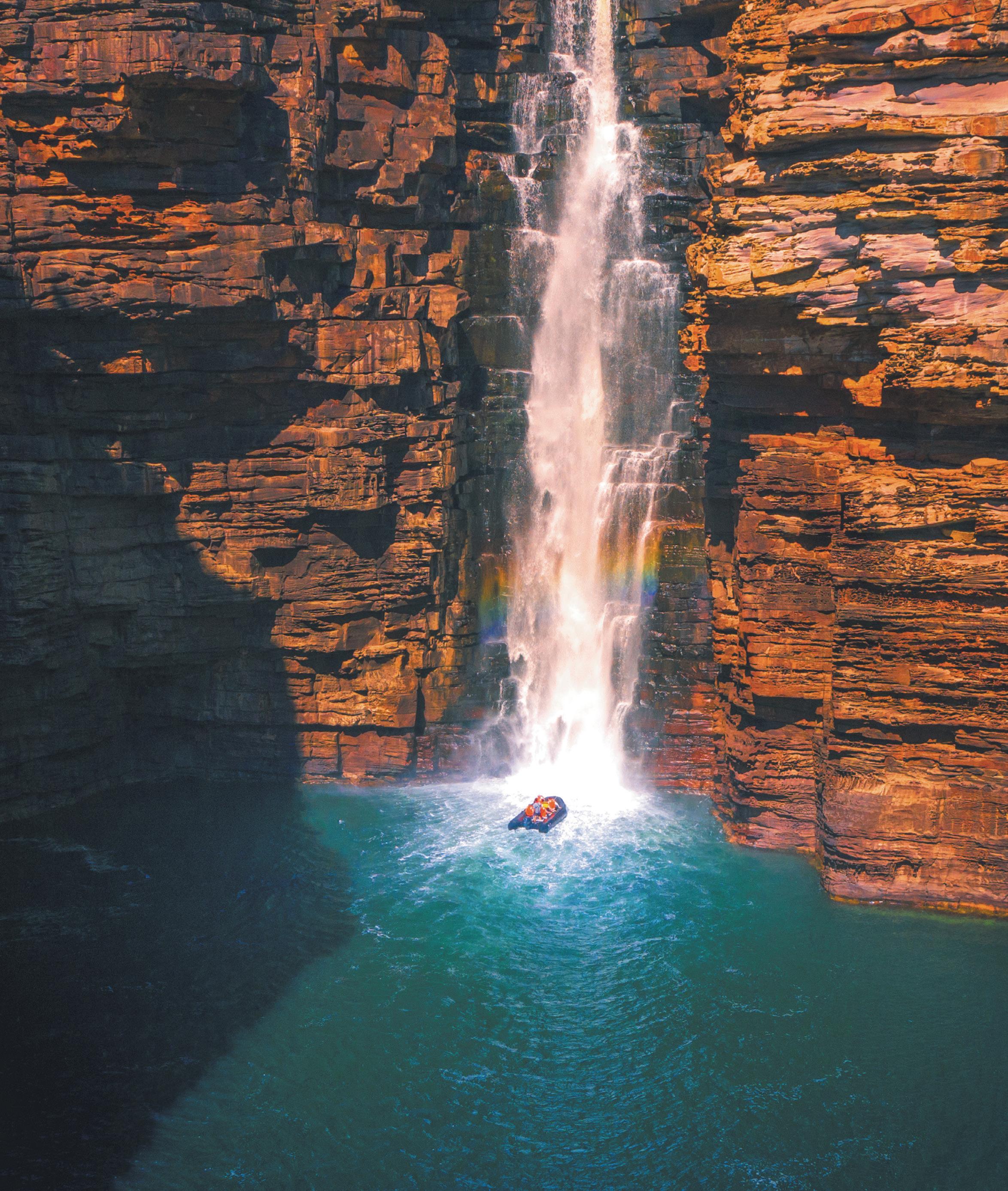
A classic Australian adventure with the pioneers of expedition cruise.
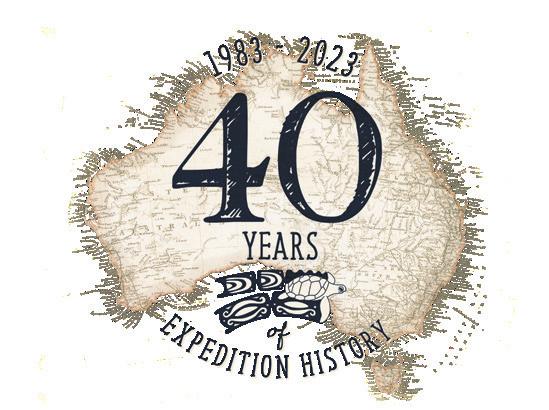


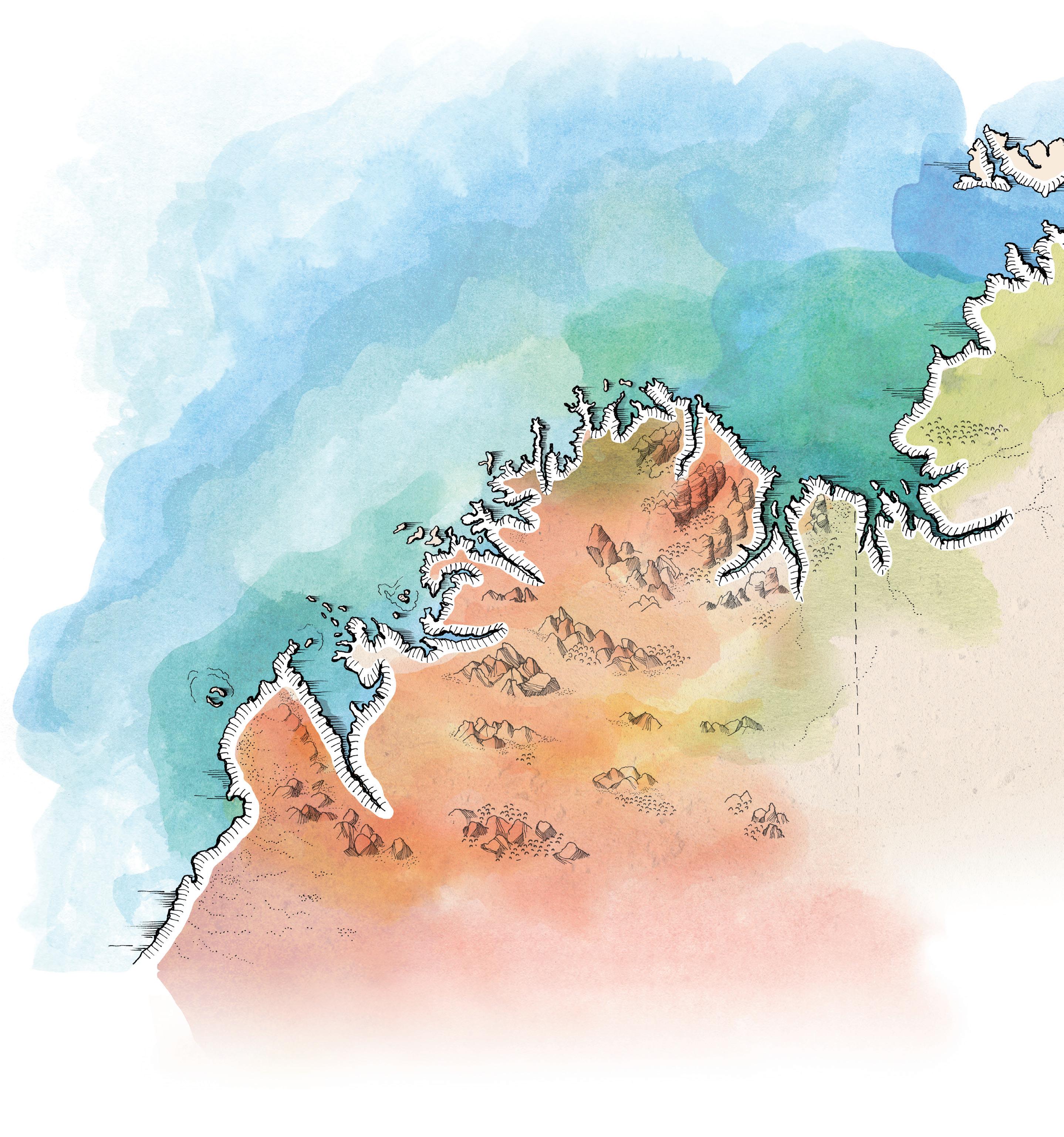
Experience the mighty waterfalls of the Kimberley coastline in full flow after the annual “big wet” season. Explore this iconic Australian wilderness from the unique perspective of an expedition ship on our classic 10-night voyage. Discover remote and ancient lands shaped by the powerful forces of nature and with a richly storied history of indigenous culture, seafaring trade, and early colonial exploration.
For 30 years, our expert guides and crew have shared this majestic coastline with like-minded explorers. Our local knowledge is unrivalled and ensures you are in the right place at the right time, with more excursions ashore to experience the wonder of the Kimberley. Our purpose-built expedition ships and our renowned “Xplorer Tenders” are designed to explore with comfort and ease and to connect you with the spectacular landscapes of the Kimberley.
Along the way, marvel at the powerful tidal phenomena of Montgomery Reef and enjoy thrilling Zodiac rides at Horizontal Waterfalls. Cruise into the pristine and untouched natural sanctuaries of the Lacapede Islands and Prince Regent River to encounter rare seabirds and marine life in the wild. Witness ancient indigenous rock galleries and learn about Wandjina and Gwion Gwion art.
At days end, return to the ship, relax with a sundowner, and enjoy our warm Australian hospitality and the convivial company of your fellow explorers. Join us this season for a classic Australian adventure.
10 Nights | All-inclusive | Season starts April 2024
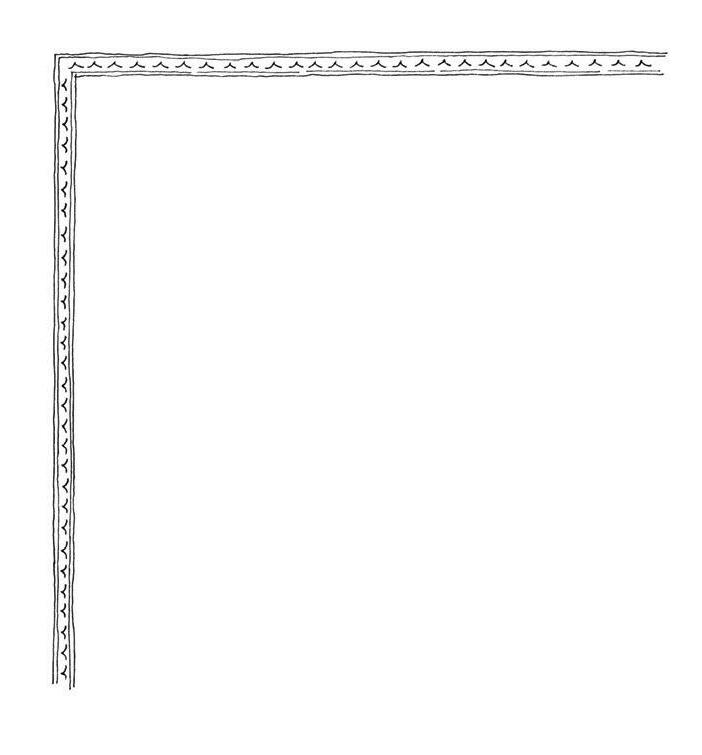

View the itinerary call +61 7 4040 9999 visit coralexpeditions.com email explore@coralexpeditions.com

So much to do, so much time. There’s a fine line between a night to remember and a night you’ll never forget. There’s a fine line between cruising and Cunard.
Cross it with us at Cunard.com
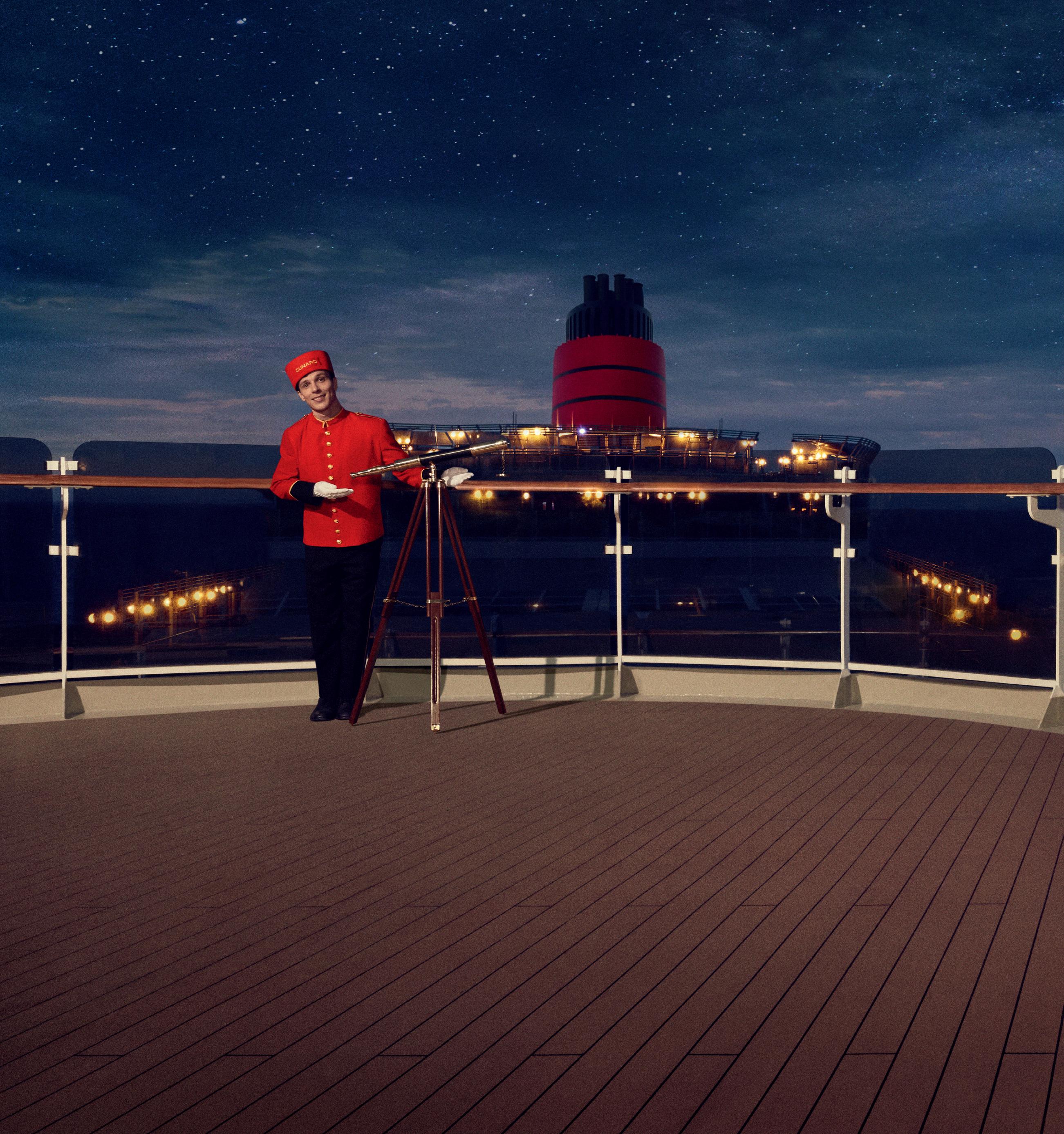

From the North to the South Pole and everywhere in between, these new voyages welcome all-comers in 2024.
 Story by Dilvin Yasa
Story by Dilvin Yasa
Guests aboard the 2666-capacity Nieuw Statendam on Holland America Line’s (hollandamerica.com) 10-day Icelandic & Scottish Mysteries trip have decisions to make: visit the Isle of Skye’s 170-million-year-old dinosaur footprints or spend their downtime in an Icelandic geothermal spa? Check out the Viking village of Djupivogur or cruise to nearby Papey Island to view the seabirds? All this from the comfort of an elegant ship that’s far from the primary-coloured family-friendly world. But don’t misunderstand the cruise line’s classic aesthetic; there are dedicated spaces designed for each generation (including kids’ clubs) and interconnecting family cabins are easy to come by. The voyage departs from Reykjavik and disembarks in Amsterdam.
 Frank Denney
Blue Lagoon geothermal spa, Grindavik, Iceland
Frank Denney
Blue Lagoon geothermal spa, Grindavik, Iceland
For solo travellers Ponant (au.ponant.com) lives up to its pioneering reputation by becoming the first cruise line to sail southern Japan’s tropical islands – and by waiving the single supplement, too. The 13-day Odyssey in the Heart of Japan’s Subtropical Islands voyage sets off from Ha Long aboard the 184-guest Le Jacques-Cartier and offers the opportunity to swim in the turquoise waters of Kabira Bay near Ishigaki Jima, observe the traditional Okinawan dwellings of Taketomi Jima, laze on the wild beaches of Iriomote Jima and dive the waters of remote Yonaguni Jima. Dry off and explore the culture of Kume Jima, the isle that once linked Okinawa to China. Disembarkation is in Naha, Okinawa.
With solo staterooms and hosted social events aimed at those travelling without a plus one, Celebrity Cruises (celebritycruises.com) treats all its passengers equally on its new Caribbean program, which includes the seven-night Western Caribbean and Perfect Day voyage (with stops at Perfect Day on CocoCay for the first time). As you go to and from Fort Lauderdale, Florida, on the 3260-capacity new-build Celebrity Beyond and take in the sights of Cozumel and George Town, the ship’s activities team is on hand to facilitate new friendships through solo traveller gatherings and a buddy system for shore excursions.
Forget arduous overland trekking – Seabourn (seabourn.com) is changing the face of safari with its premier Grand Africa Voyage, which circumnavigates the continent and takes in 26 countries over 90 days (return from Barcelona). Keen to see the gorillas of Rwanda, kayak with seals in Namibia and traverse the reserves of Kenya? This luxury, all-inclusive cruise aboard the 450-guest Seabourn Sojourn ticks off bucket-list destinations and experiences, takes in lesser-known spots such as Angola and Cape Verde and drops by Mozambique, Madagascar, Zanzibar and Morocco along the way. Six overnight stays are also included in the November 2024 sailing, plus optional multiday Seabourn Journeys (previous hits have included a visit to Botswana’s Chobe National Park and a pit stop in Marrakech, Morocco).
Immerse yourself in The Coral Triangle, aka the “Amazon of the seas”, with Aqua Expeditions (aqua expeditions.com). Spend 12 nights cruising aboard Aqua Blu, a 15-suite long-range explorer yacht, around West Papua and Raja Ampat for an epic mix of wildlife and cultural expeditions. You could be swimming with whale sharks at Triton Bay one day or snorkelling and diving with 1400 other species of marine life (including black-tip reef sharks and manta rays) at Raja Ampat on another. You’ll also discover the region’s hidden lakes and the stingless moon jellyfish that inhabit them.
Cruising on Ovation of the Seas, a 4905-passenger Quantum-class ship owned by Royal Caribbean (royalcaribbean.com), does not come without its challenges. With skydiving and surf simulators, an aqua park and dodgem cars, the difficulty here is trying to get the family off the ship at each port. The nine-night South Pacific cruise makes terra firma a little more enticing, with the returnSydney voyage showcasing the best of New Caledonia and Vanuatu. Take the open-air Tchou Tchou train along Noumea’s coastline, send a waterproof postcard in Port Vila from the world’s only underwater post office and snorkel the pristine waters off Mystery Island.
It’s a rare parent whose eye wouldn’t twitch at the idea of taking their kids to Mauritius, Madagascar, the Seychelles, Maldives, Sri Lanka, Thailand, Malaysia and Singapore on the one trip. But with Norwegian Cruise Line’s (ncl.com) 17-day Asia: Maldives, Thailand & Seychelles itinerary, the “unpack and relax” aspect of cruising allows families to enjoy each destination with the minimum of stress. Departing from Port Louis, Mauritius, aboard the Norwegian Sky (the 2004-capacity ship was remodelled in 2022), the journey is an opportunity to walk through lemur-populated rainforests, appreciate the local culture at various temples, snorkel gin-clear atolls and thrill at smooth-coated otters and crab-eating macaques in reserves and national parks. On board, things are just as exciting: expect kids’ and teens’ clubs, a water park and video arcade. The cruise disembarks in Singapore.

Hurtigruten’s (hurtigruten.com)
16-day Antarctica & Falklands Expedition itinerary offers shore excursions that read like the script for an energy drink commercial: kayak in Antarctic waters brimming with icebergs, take a scenic flight over the Falklands in a twin-engine Britten-Norman Islander, explore the rugged landscape on foot or pitch a tent for an evening of ice camping. Sailing aboard the 530-passenger MS Roald Amundsen, you’ll start and end the cruise in Buenos Aires, with all meals, drinks and onboard activities, plus most shore excursions, included.
Pack your sunnies and an eye mask for a voyage to Canada’s High Arctic and Greenland, the far-flung lands of the midnight sun. Viking ’s (viking cruises.com.au) recent foray into expedition cruising proves the all-inclusive luxury line doesn’t do things by halves and its 27-day Canada and the Northwest Passage trip on the 378-guest Viking Octanis delivers more action than a Tom Cruise movie. Kicking off in Nuuk and disembarking in Toronto, the cruise’s on-shore fun includes kayaking the Ilulissat Icefjord, tackling Sisimiut’s hiking trails, fishing for salmon in the Kapisillit River, exploring the tablelands of Newfoundland’s Gros Morne National Park and taking in the natural beauty (and the old town) of Quebec.

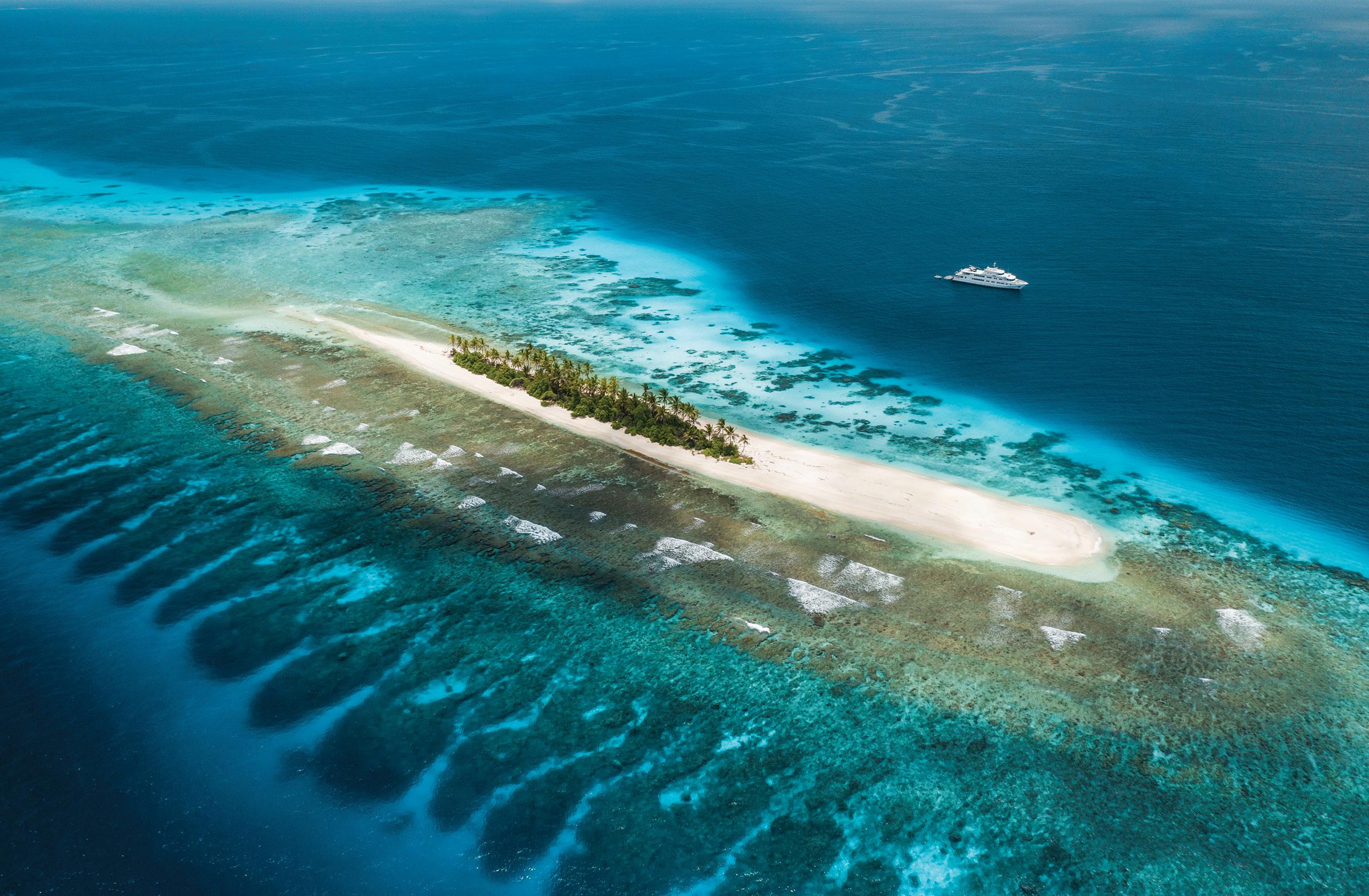
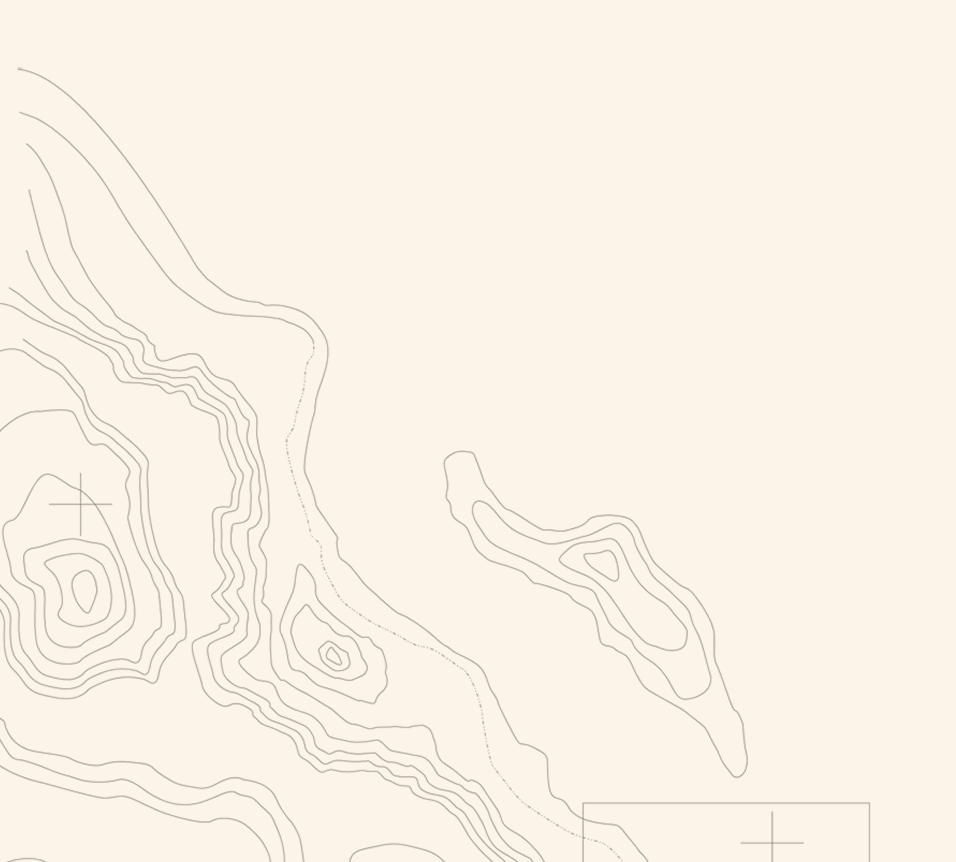

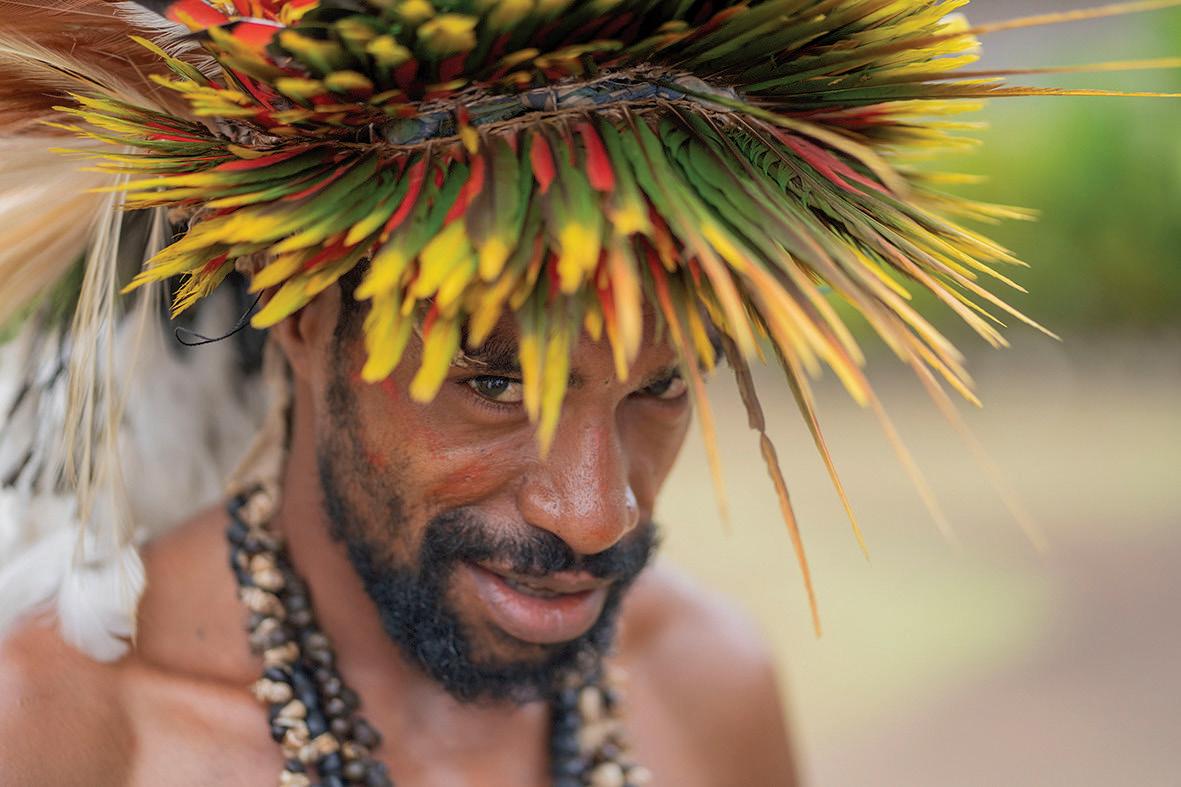


Celebrated chef Tommaso Barletta joins actor and close friend John O’Hurley (J. Peterman from Seinfeld ) to deliver 10 raucous nights of regional dining experiences on Regent Seven Seas’ (rssc.com) Epicurean Spotlight: Athens to Barcelona tour. On the brand-new Seven Seas Grandeur, food and wine is at the heart of each experience, whether it’s preparing local dishes with the chefs on board or on a Gourmet Explorer shore excursion in Greece, Turkey, Italy, France and Spain. Tour the vineyards of Bozcaada, feast on a family farm picnic in Sicily and enjoy a chef-led market tour (plus lunch) in Rome. A pre-cruise Ancient Greece & Wineries add-on makes for a delicious entrée.
It’s hard to go past the launch of a rare wine collection – some 80 new labels from the world’s top vineyards – across the Oceania Cruises fleet (oceania cruises.com). Getting through bottles of Château Mouton Rothschild, Dom Pérignon and Vina Errazuriz Kai Carmenère will take time, something you’ll have plenty of when sailing the 24-day Cape Horn Mariner voyage from Rio De Janeiro to Santiago, Chile. Check out Brazil, Uruguay, Argentina and the Falkland Islands before cruising Antarctica then sailing the Chilean fjords. Shore experiences have a gourmet flavour, from a chef-led Argentine culinary jaunt to olive oil tasting in the countryside and more.
With its all-inclusive fares, which include business-class flights, private executive transfers and butler service, Silversea’s (silversea.com) 125-day Grand Pole to Pole Expedition, a Puerto Williams to Longyearbyen itinerary covering 90 ports in 21 countries, cements the cruise line’s reputation for luxurious, once-in-alifetime voyages. Sailing aboard the recently refurbished Silver Wind, you’ll explore polar opposites in geography as the ship makes its way around Antarctica, the South Shetland Islands and South Georgia then cruises up the east coast of South America, stopping in at both the Arquipélago dos Bijagós and Barra Grande, Brazil – new destinations for the line. West Africa and Europe (and the possibility of spotting polar bears) also get a look in before you disembark in Svalbard.
If the idea of spending seven days at sea with the likes of Sydney Swans legend Adam Goodes, former cricketer Brett Lee and champion golfer Karrie Webb sounds like your perfect match, mark your calendar for Cunard ’s (cunard.com) inaugural Sporting Greats and Wellness Voyage. Sailing in February 2024, the return Sydney trip aboard the Queen Elizabeth sets the bar high – offering its 2081 guests panel discussions, Q&As and workshops, tutorials and games to test their own sporting prowess. Short excursions include going behind the scenes at the Australian F1 Grand Prix track with broadcaster Mark Beretta.
Sail while you’re sleeping and wake to villages, jungles, beaches and islands. When you take to the seas with French cruise line Ponant, you’ll travel through lesser-known passages, discovering the untouched islands of Japan.
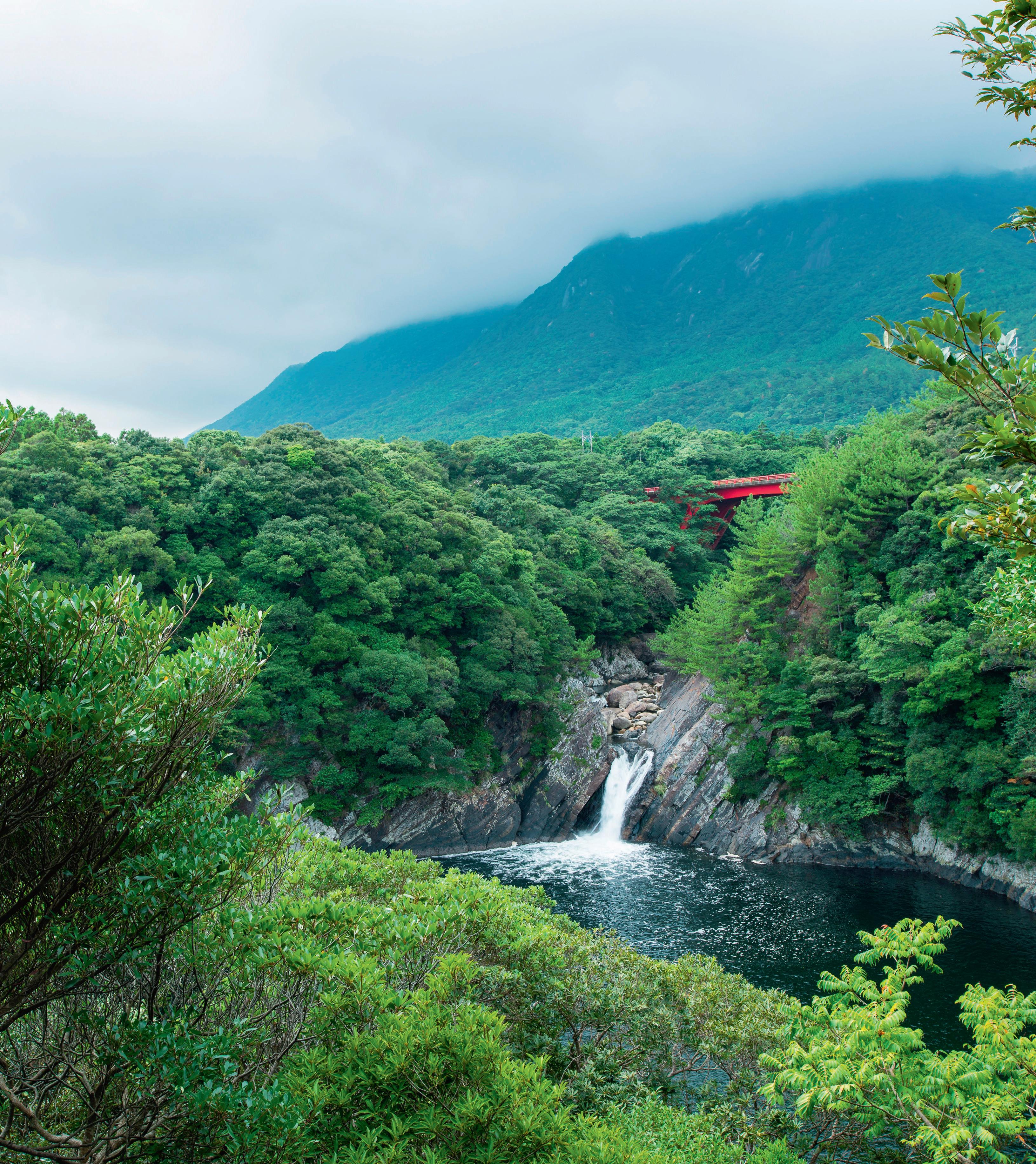
Keelung, Taiwan Ishigaki Taketomi-jima
Iriomote-jima Kumejima Iheyajima
Ōshima Yakushima Kagoshima, Japan
8 days | Departs 13 March 2024
From $8,420 per person* aboard Le Jacques-Cartier
Naha, Okinawa, Japan Iheyajima Zamami
Kumejima Ishigaki Taketomi-jima
Iriomote-jima Yonaguni-jima Keelung, Taiwan
8 days | Departs 16 March 2024
From $8,030 per person* aboard Le Jacques-Cartier
Hike through butterfly-filled jungles, snorkel with sea turtles in sapphire waters and explore 17th-century villages. The Okinawan and Yayeaman archipelagos, dotted over a 1,000-kilometre stretch from Kyushu to Taiwan, show a side of Japan few have glimpsed – most don’t have airports (and some not even ports).
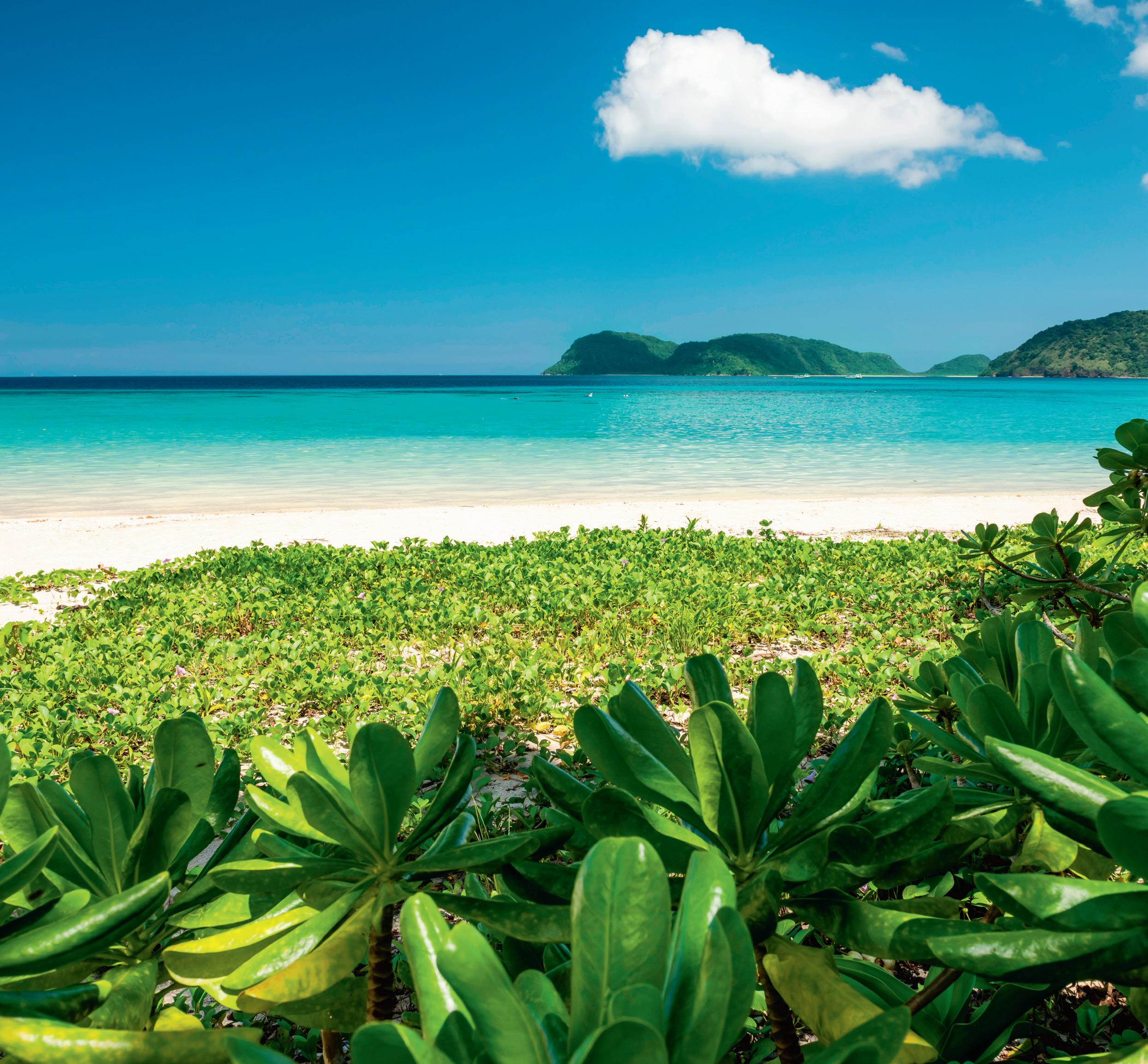
Thanks to carefully cultivated relationships with local Japanese national parks and governments, Ponant has been granted rare access to these remote isles. “We’ve created a very small-ship-specific itinerary, visiting villages and going through narrow passages,” says Ryo Ijichi, expedition leader at Ponant.
On two eight-day expeditions through Okinawa – either departing or arriving in the Taiwanese port of Keelung – tours interconnect these remote islands that you’d ordinarily need to go back and forth from the capital to see. “The ship sails when you’re asleep so when you wake, you see a new rural village, jungle, beach or island from your balcony.”
Presented by Ponant Iriomote-jimaIn the heart of the Yaeyama archipelago, guests have the opportunity to trek through Iriomote-jima, “the jungle island”, which is so densely carpeted with mangrove forest it looks prehistoric. Keep an eye out for a crested serpent eagle or the endangered Iriomote wild cat, a rare subspecies of leopard.


Just over 30 kilometres east is the unmissable Taketomi-jima. “It has the most well-preserved traditional village, with Okinawan architecture and roads made of coral-reef sand.”
If you’re departing from Keelung, you’ll stop at the UNESCO-listed Yakushima off the southern coast of Kyushu, where you can bathe in waterfalls, spot wild monkeys and deer and gaze up at 7,000-year-old cedar trees. Coming from the other direction, guests have the opportunity to snorkel the lush coral gardens in Zamami in the Kerama Islands, the waters teeming with marine life such as lionfish, clownfish and green sea turtles.
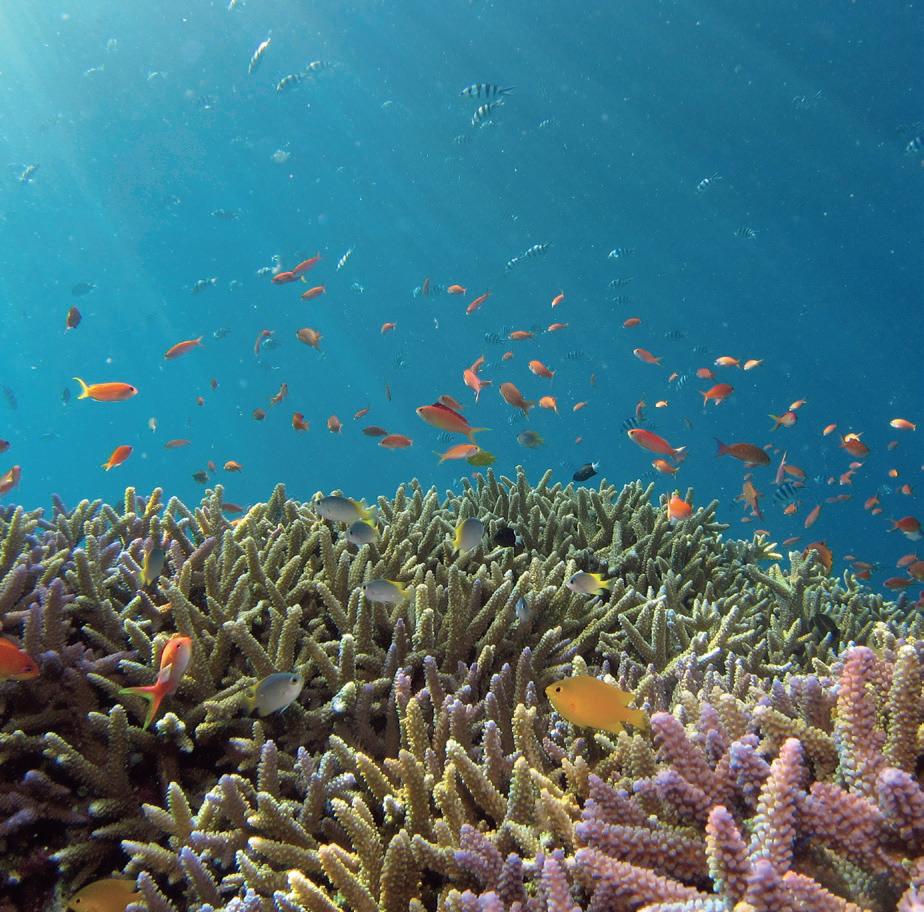
The ship: Le Jacques-Cartier
This 92-room energy-efficient vessel was designed for reaching the most remote corners of the globe. Every detail is considered in this small-ship experience, such as French products from Diptyque, Lenôtre and Ladurée, as well as onboard lectures by naturalists and historians.
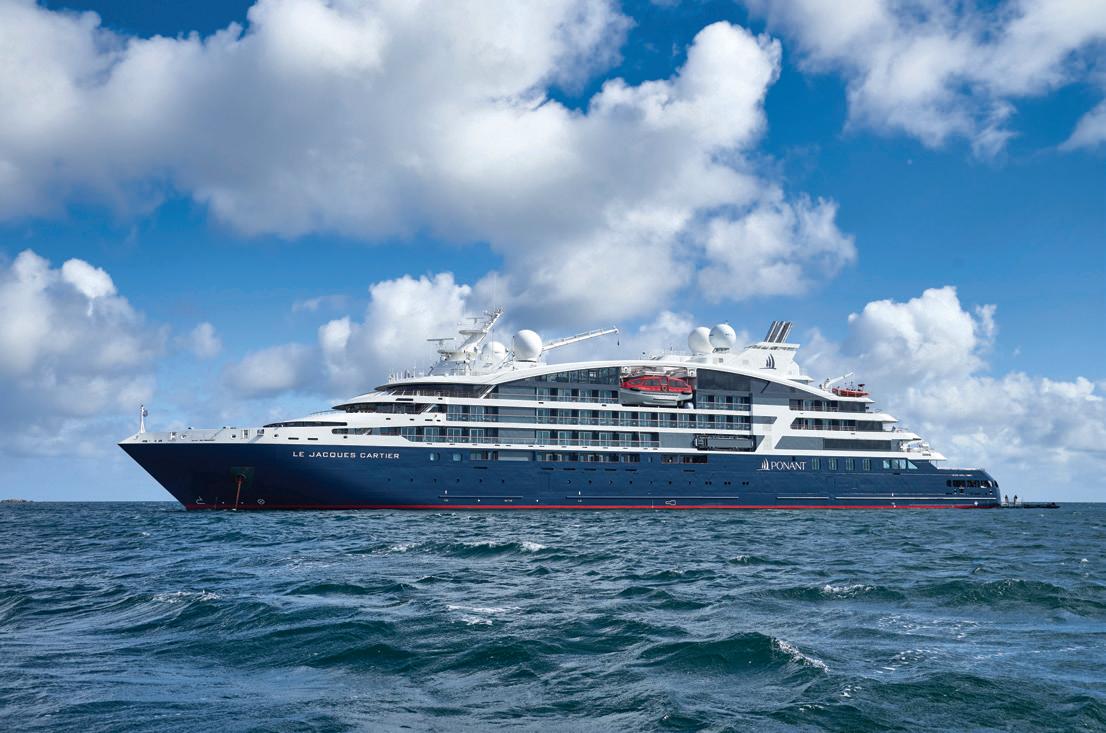
Take in the ocean views from the private, open-to-sea balcony in your stateroom or suite or from the stern of the ship as you dip into the glass-walled infinity pool. Head underground to the Blue Eye, the first underwater bar at sea, to sip Charles Heidsieck champagne while watching marine life through portholes.
Naturally, gastronomy plays a starring role onboard. Savour artful fine dining at Le Nautilus (think langoustines with candied shallots and sauce Périgueux) or dine alfresco on grilled meats and freshly baked organic bread at the Grill Restaurant on Deck 3. Or just retire to your room for room service.
An innovative marina at the stern was designed for easy disembarkation so guests can hop onto Zodiacs for unlimited shore excursions or partake in marine sports, including ocean swimming, kayaking and paddleboarding.
Taketomi-jima Iriomote-jima Yonaguni-jima
Miyako-jima Kumejima Iheyajima Zamami
Naha, Okinawa, Japan
13 days | Departs 4 March 2024
From $15,610 per person* aboard Le Jacques-Cartier
Wind through the tropical islands of southern Japan on a voyage that offers both buzzing highs and peaceful moments. After sailing for about 700 kilometres from the wind-sculpted grottoes and forested islands of Ha Long Bay, Vietnam, you’ll arrive in pulsing Hong Kong, where neon skylines and temples coexist. From there, the pace slows for an immersion of Okinawa, Yaeyama and Sakishima islands.
While weaving through many of the same highlights offered by the eight-day cruises, this itinerary will make stops at two additional islands – a first for Ponant. Explore windswept meadows spotted with wild horses in Yonaguni-jima, which is “kind of like the Easter Island of Japan”, says Ijichi. “It’s so remote, with no development on the majority of the island.”

Okinawa’s northernmost tip, Iheyajima, is another new port of call, where you can watch a traditional Eisa drumming show. Visit a local distillery and taste Okinawan cuisine, sink your toes into the powdery soft sand in Kabira Bay and see mythical Mifuga rock formations and traditional dance on Kumejima, the island that linked Okinawa to China in the time of the Ryukyu Kingdom.
Guests have the chance to interact with local fishermen and farmers when the Le Jacques-Cartier delivers supplies. “This expedition offers so much more adventure than any other cruise. There is nothing else like it.”
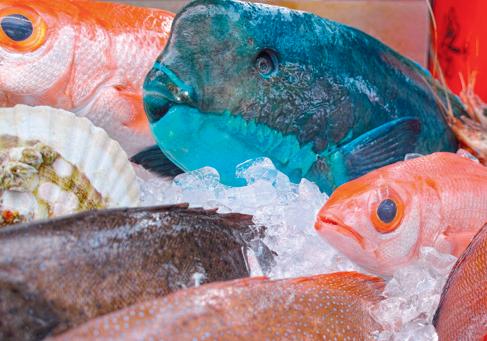
For more information visit au.ponant.com 1300 737 178 (Australia) 0800 767 018 (New Zealand) reservations.aus@ponant.com
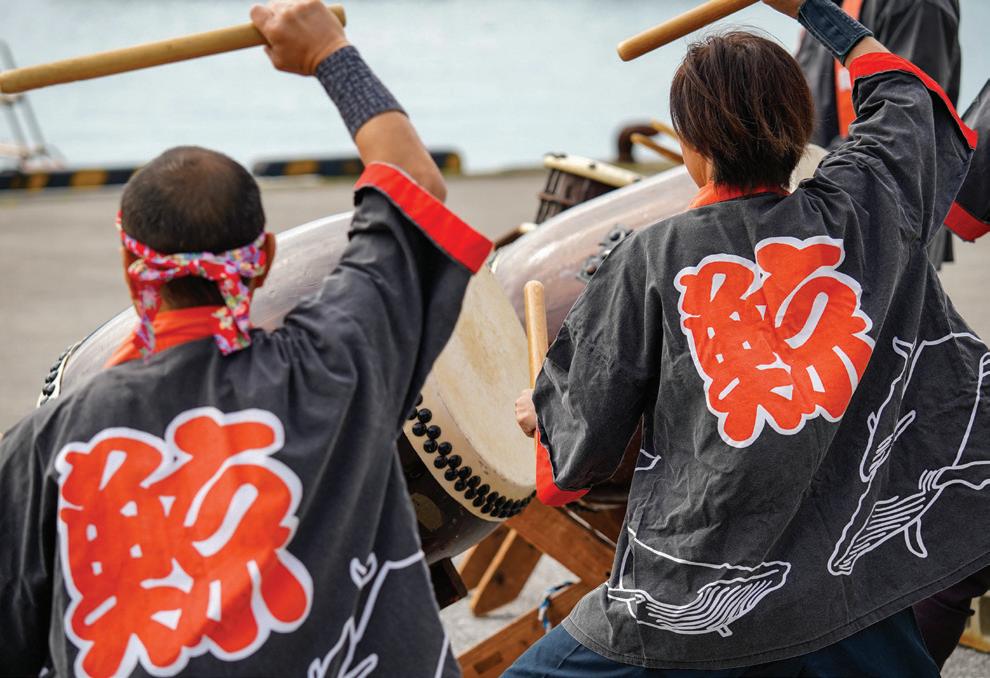 Presented by Ponant
Yonaguni Island
Naha fish market, Okinawa
Presented by Ponant
Yonaguni Island
Naha fish market, Okinawa

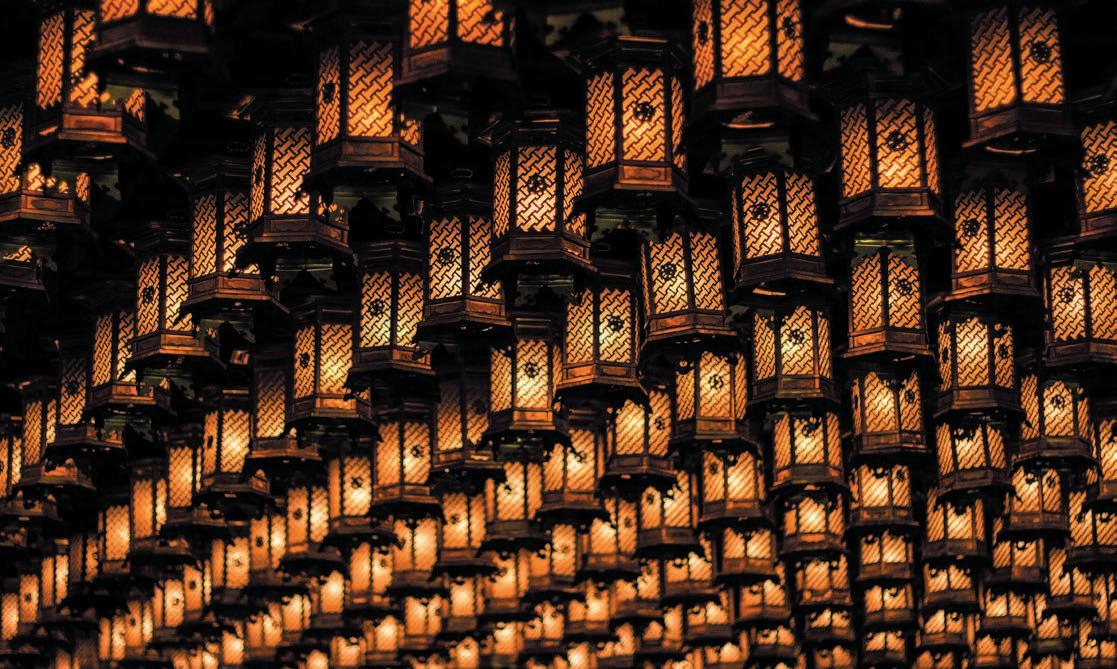
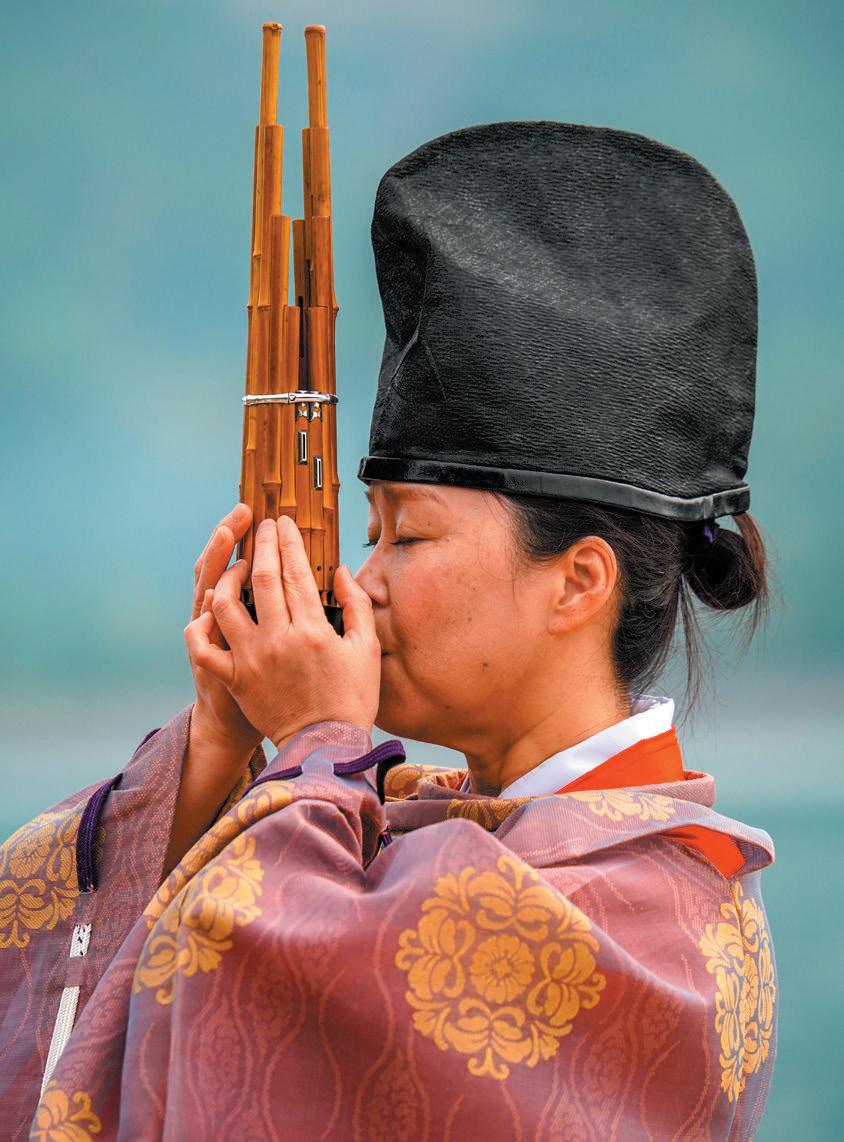


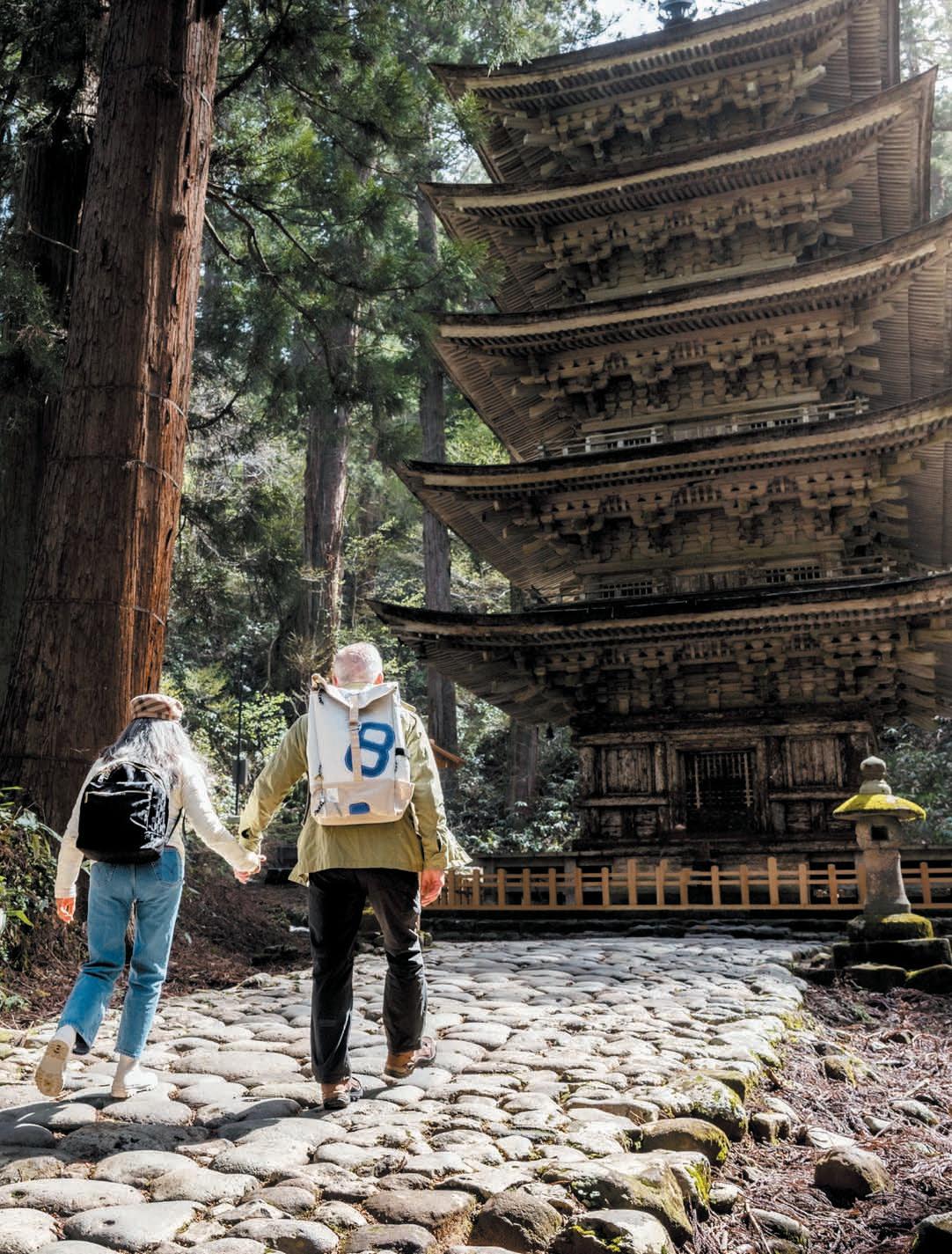






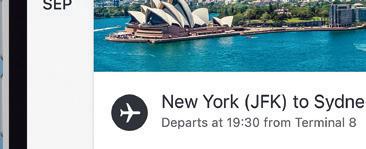
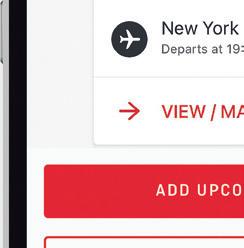







Photographing Queen Elizabeth II was possibly Polly Borland’s most famous – if not finest – hour. Granted just five minutes to shoot Her Majesty for the Golden Jubilee two decades ago, Borland remembers feeling panic-stricken over the time constraints and mysterious royal protocol. She was starstruck and tongue-tied, at one stage on all fours trying to reposition the royal ankles. On the way out, still reeling from the ultra-bright ring flash, the Queen commented, “I think you’ve blinded me.”
Recalling the moment, the 64-year-old Melbourne-raised artist says, “I was just a mess – a bumbling idiot.” Still, she somehow nabbed a winning close-up of the Queen with a gold lamé backdrop, which the monarch approved. Borland now sees the shot as a tool of colonial propaganda – one that hangs in her toilet. It marked the end of an editorial portrait career that saw her snap everyone from Germaine Greer and Kylie Minogue to Donald Trump and Silvio Berlusconi. Since then, Borland’s artistic focus has shifted to sculpture, initially pictured in her photographs and more recently as standalone works. “It reignited my imagination,” she explains. “It’s multidimensional in a way that photography can’t be.” Next month, her latest work will be exhibited at Sydney’s Sullivan+Strumpf gallery.
Recognised for her surreal images of models wrapped in bulbous, cotton-stuffed stocking fabric, Borland unveiled BOD earlier this year – a two-metre-tall cast-aluminium abstracted figure of a human clad in her signature padding –as part of the Marfa Invitational art fair in the West Texas desert. Viewers point to feminist overtones in her strange, compelling works but she says that she never intends to say anything in particular. “They’re like puzzle pieces that you have to keep looking at to figure out. I don’t think my work is for the faint-hearted.”
Exhibited at: National Portrait Gallery, London and Canberra; National Gallery of Victoria, Melbourne; Nino Mier Gallery, Los Angeles; Station Gallery, Melbourne; Paul Kasmin Gallery, New York
What the experts say: “Polly’s work can be unsettling and that’s the great strength of it… [She] has developed an aesthetic and an intuition that draws that slightly uncanny sense out of images.” – Pip Wallis, former curator, Contemporary Art, National Gallery of Victoria
defy easy interpretation.Polly Borland and two sculptures from her Blobs series
Adam Goodrum knows what you think about stacking chairs. “They’re almost a second class of sorts,” says the industrial designer, “so I wanted to design a stacking chair that wouldn’t read as a stacking chair.” The result – the Molloy – is the antithesis of the moulded plastic church-hall number.
Instead, the Sydney-based creative crafted a sleek, solid timber chair that doesn’t sacrifice style or comfort in the quest for function. “It’s a quiet chair,” says Goodrum, who made the piece as part of a range for Australian furniture company Cult (cultdesign.com.au) in 2014. “It’s got a kind of gentle language with all the soft curves and lines.”
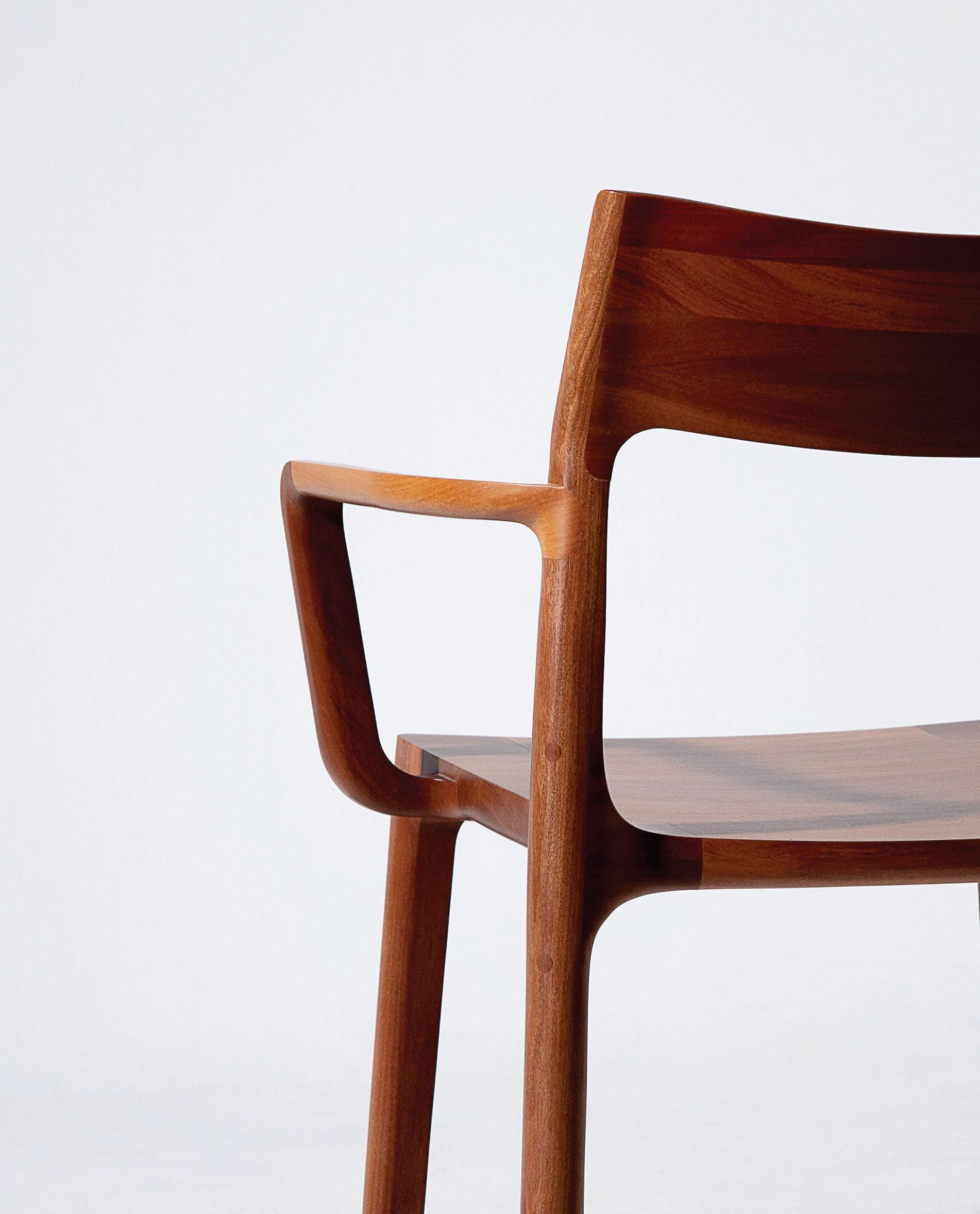
Composed of eight pieces glued together and hand-sanded, the chair in walnut, ash or oak is time-consuming and expensive to produce – hence the price starting at $3275 each. Because of its multiple components and timber grain directions, Perth-raised Goodrum named the chair after Molloy Island –a “magical” place in south-west Western Australia where two rivers run into one. He built an A-frame holiday house there with his father three decades ago.
Made in Australia (and Japan for the international market), the awardwinning design is in the permanent collection of Sydney’s Museum of Applied Arts and Sciences. The Sydney Opera House commissioned a version with armrests for its order of 60 Molloy chairs in 2018 and 350 are headed to the Australian Embassy in Washington DC.
A graduate of the University of Technology Sydney, Goodrum made international waves in 2008 with his brightly coloured, aluminium folding Stitch chair (produced by Italian firm Cappellini) and has designed for the likes of Alessi and Veuve Clicquot. “I do some things that are more theatrical but the Molloy is more humble. I like the idea that it’s not asking for attention.” Showy it’s not but the Molloy is now shown around the world.
This chair is a rare thing: multipurpose furniture that’s both stylish and functional.
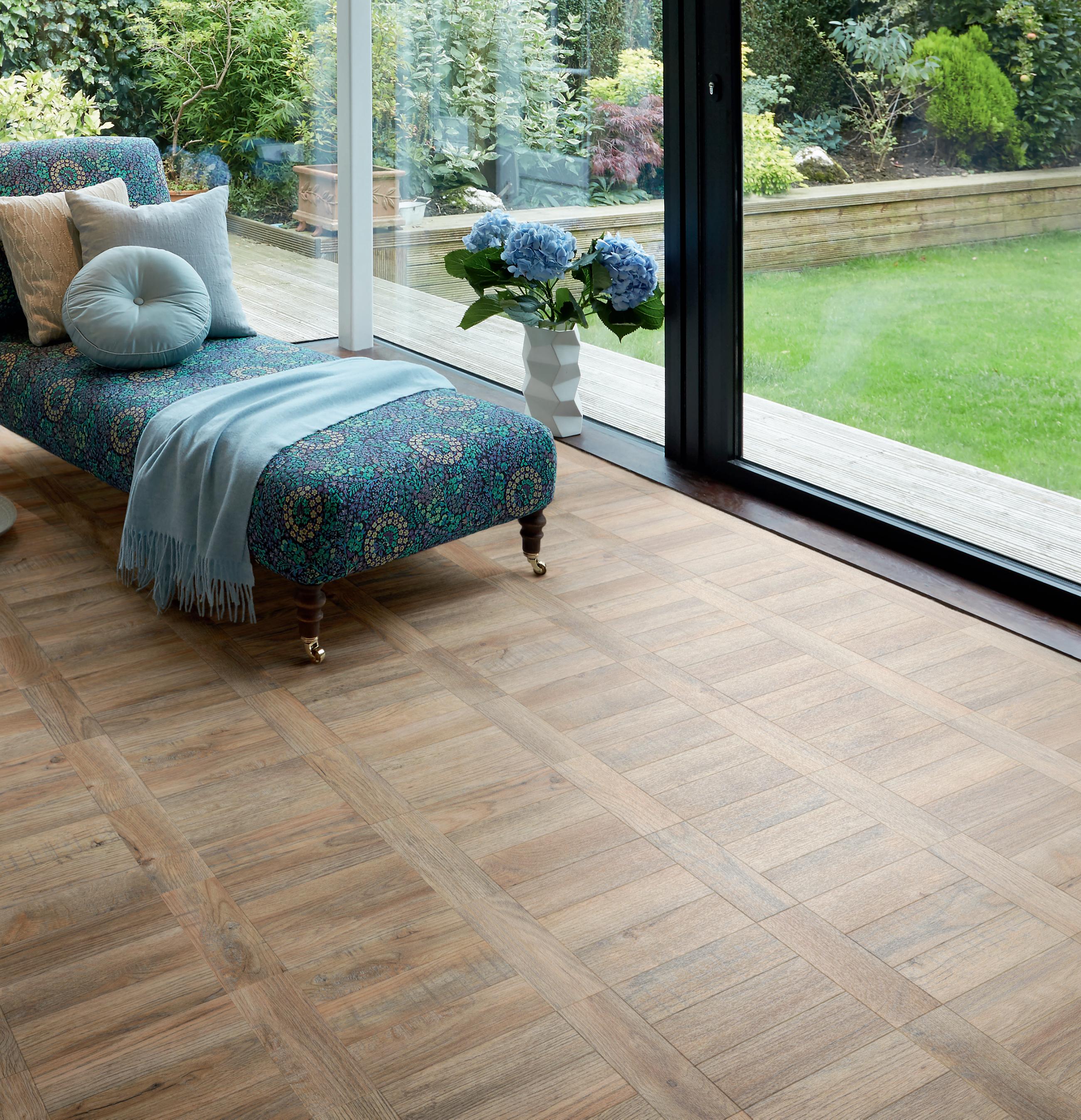







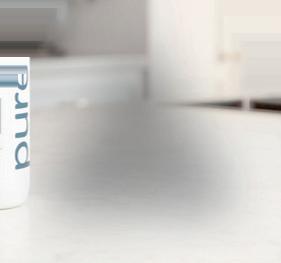





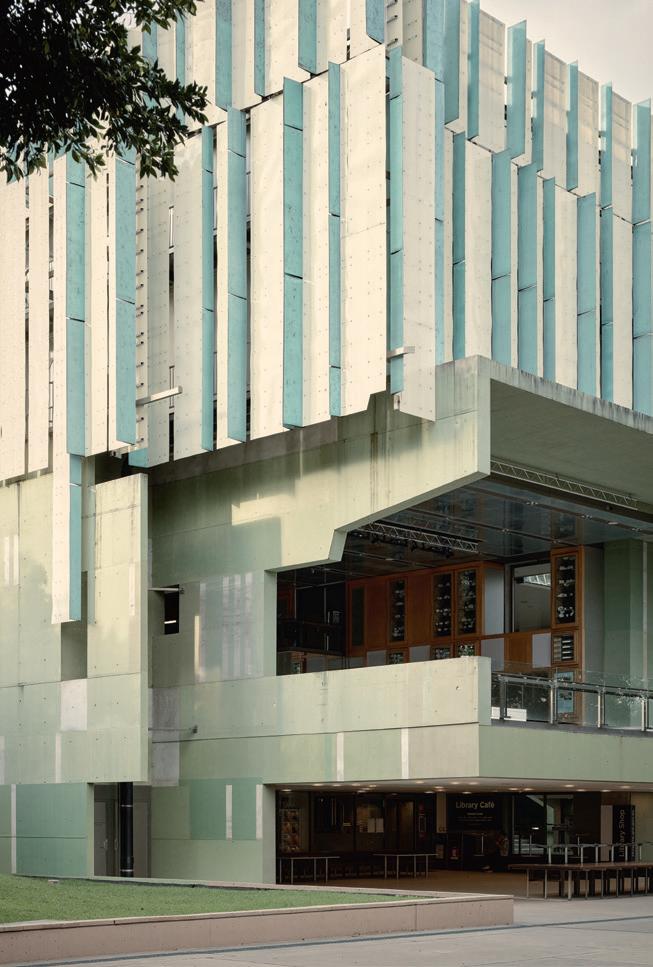

I was drawn to the State Library of Queensland. Years ago, I was having a coffee with my brother at the Gallery of Modern Art next door, when I looked over and saw this interesting minimalist Modernist building. It was predominantly concrete with a green dappled-glass band wrapped around it, in a gesture to the Brisbane River. There were people flowing in and out of the building – it was humming – and I had to know more about it.
It was redeveloped in 2006 by [the architecture practices] Donovan Hill and Peddle Thorp. My friend and fellow Indigenous architect Kevin O’Brien had worked on it so I asked him to take me through the building. It’s a series of interconnected meeting places, each with its own purpose and character. At the core is a light-filled atrium that connects the spaces together. There are outdoor terraces that nod to the quintessential Queensland verandah and blur the notion of what’s inside and outside.
It transcends the notion that a library is uptight and about social order. They’ve captured the spirit of how people come together, whether it’s over a cup of tea, looking up family history, a person studying for the HSC or a person reading a journal. It invites everybody, young and old, to sit comfortably alongside each other. That sense of inclusion is magnificent.
It playfully brings the character of Queensland into its spaces. The tearoom has lots of timber panelling, which captures the essence of an old Queenslander house with timber cabinets. It has a collection of souvenir tea towels and other ephemera, which tell of the state’s history. It also curates Aboriginal and Torres Strait Islander culture really well and includes an archive of artefacts. Truth-telling – sharing the hard stories about Aboriginal culture – also happens in various spaces. It has a lot of soul and almost dares people to participate in their culture, regardless of who they are.
The library is subtle and humble in its design. Some architecture can be quite arrogant and impose itself on place, while other architecture tries to fit in and respond to people and nature. The core brief we should consider is how a building makes people feel and how it can bring them together.
The Modernist institution is an exemplary model of designing for Country, says Wiradjuri man and architect Craig Kerslake.Craig Kerslake is managing director of Sydney-based architecture and design firm Nguluway DesignInc (designinc.com.au). He is a founding member of the DAB Indigenous Industry Advisory Board.

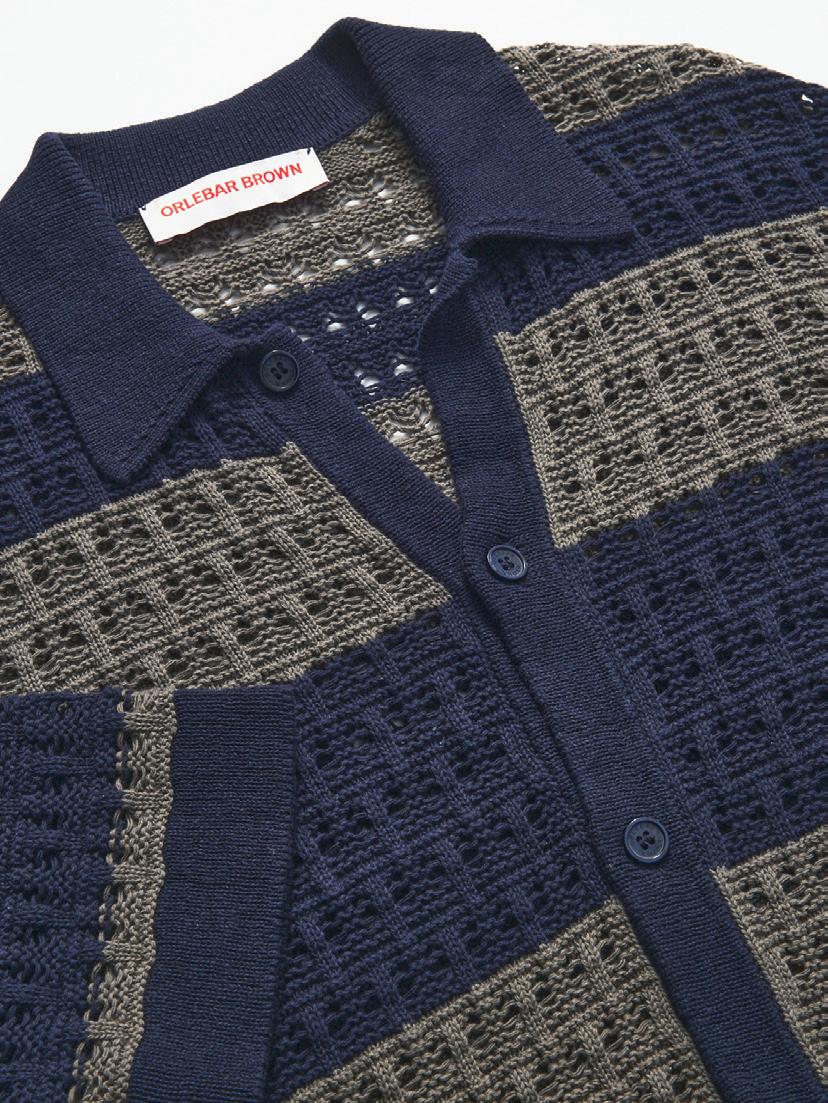

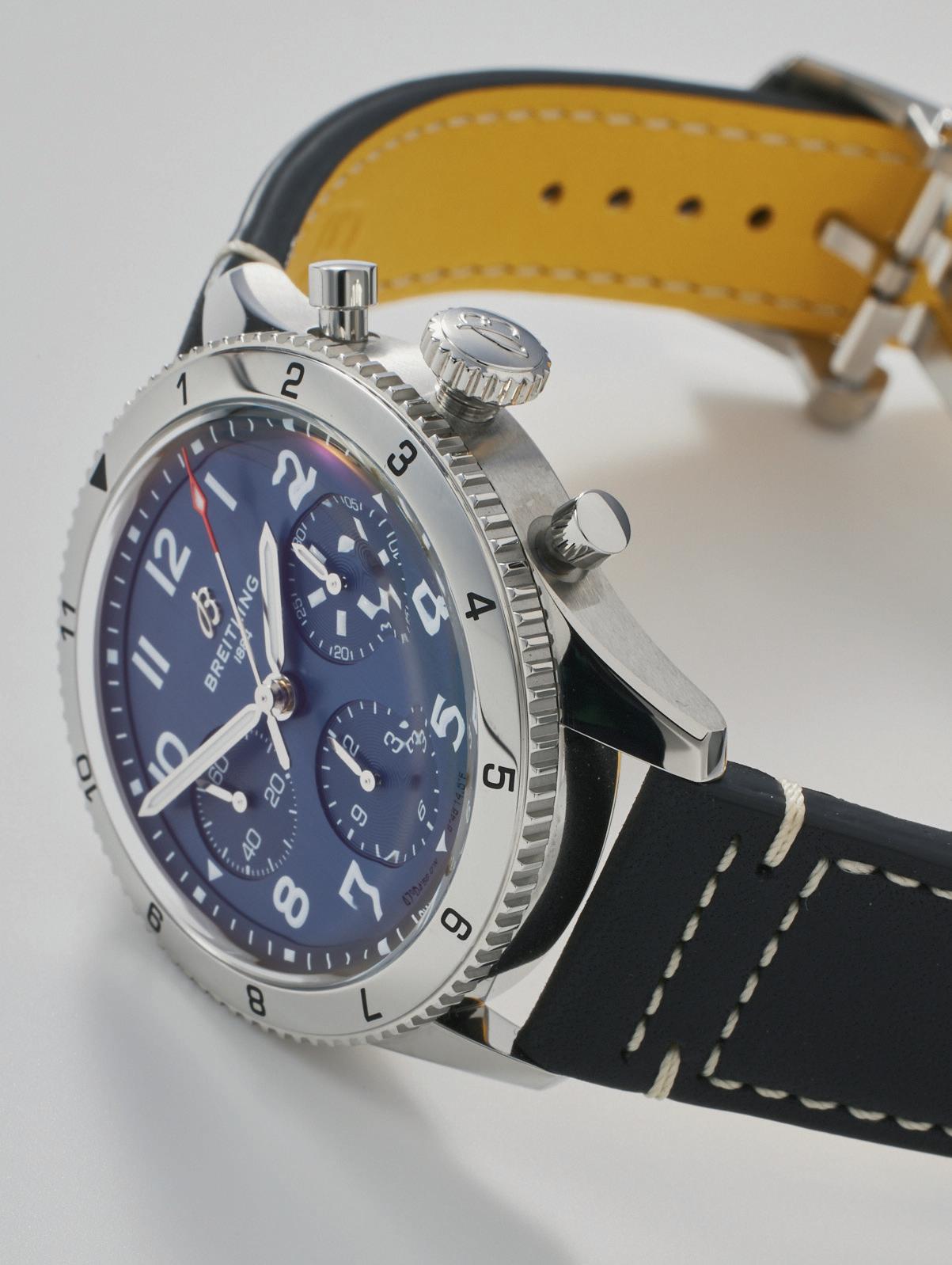

Editor’s note: Nineties minimalism meets new-world practicality in this structured leather tote. Woven tape handles, an incorporated water bottle and an interior zip pocket make it the perfect travel mate for a sporty watch and nautical separates.
Prada bag / $5800 / prada.com
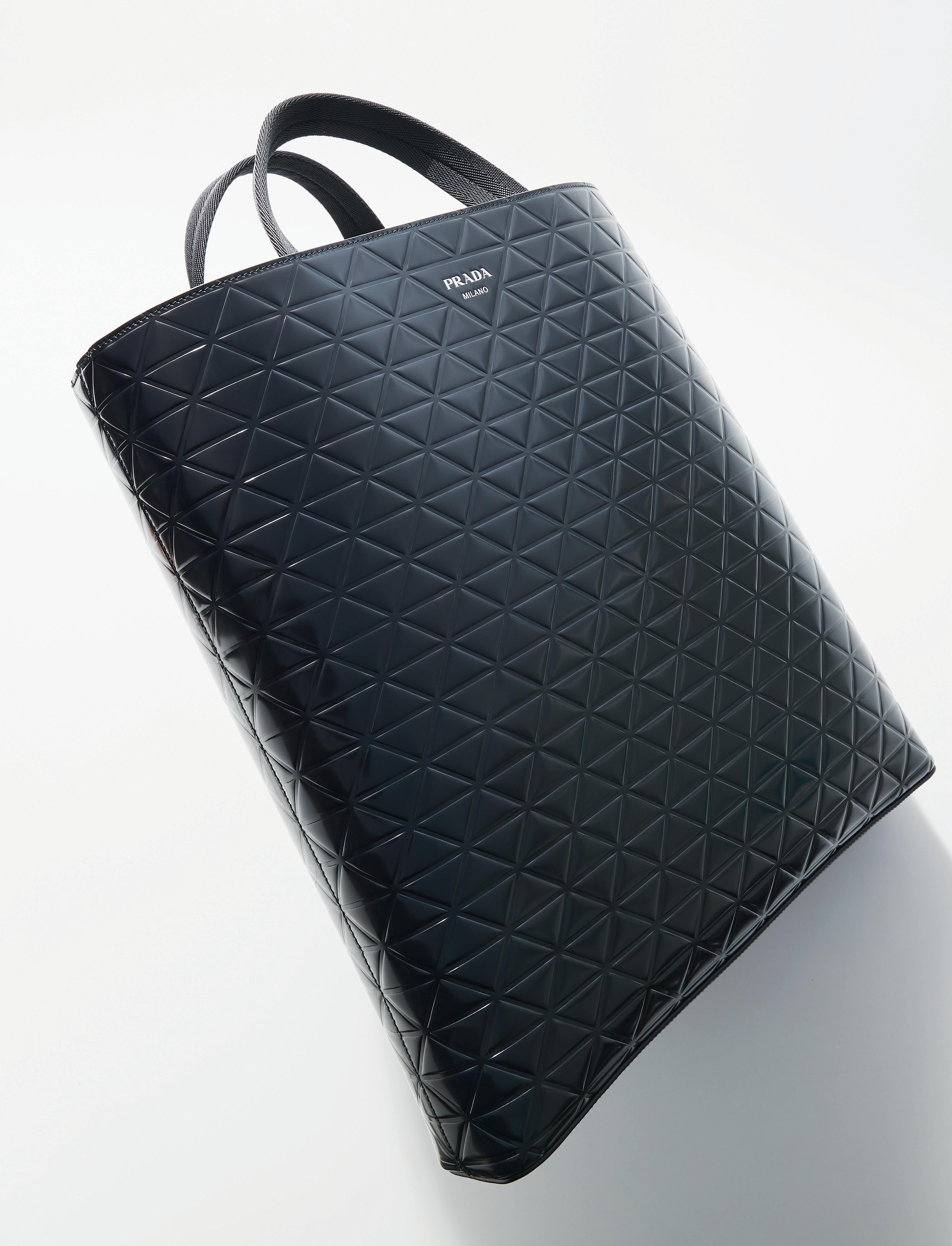
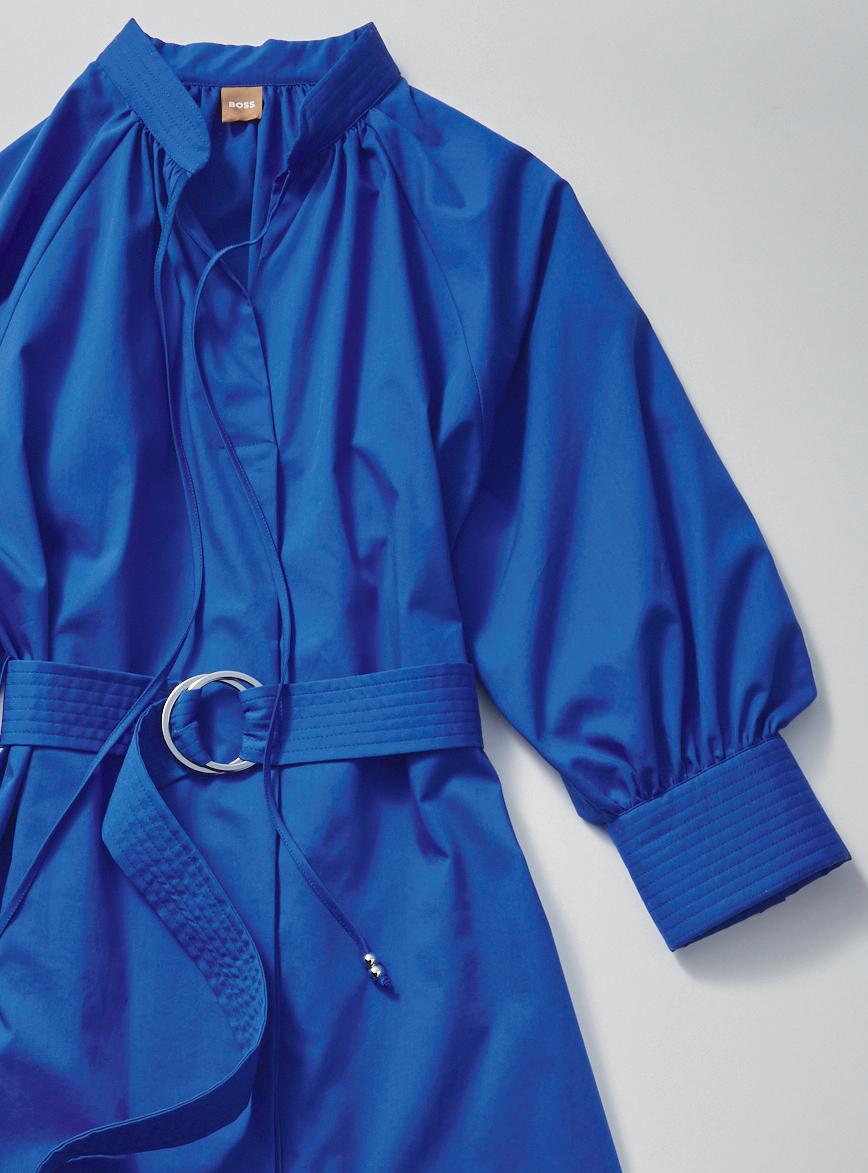



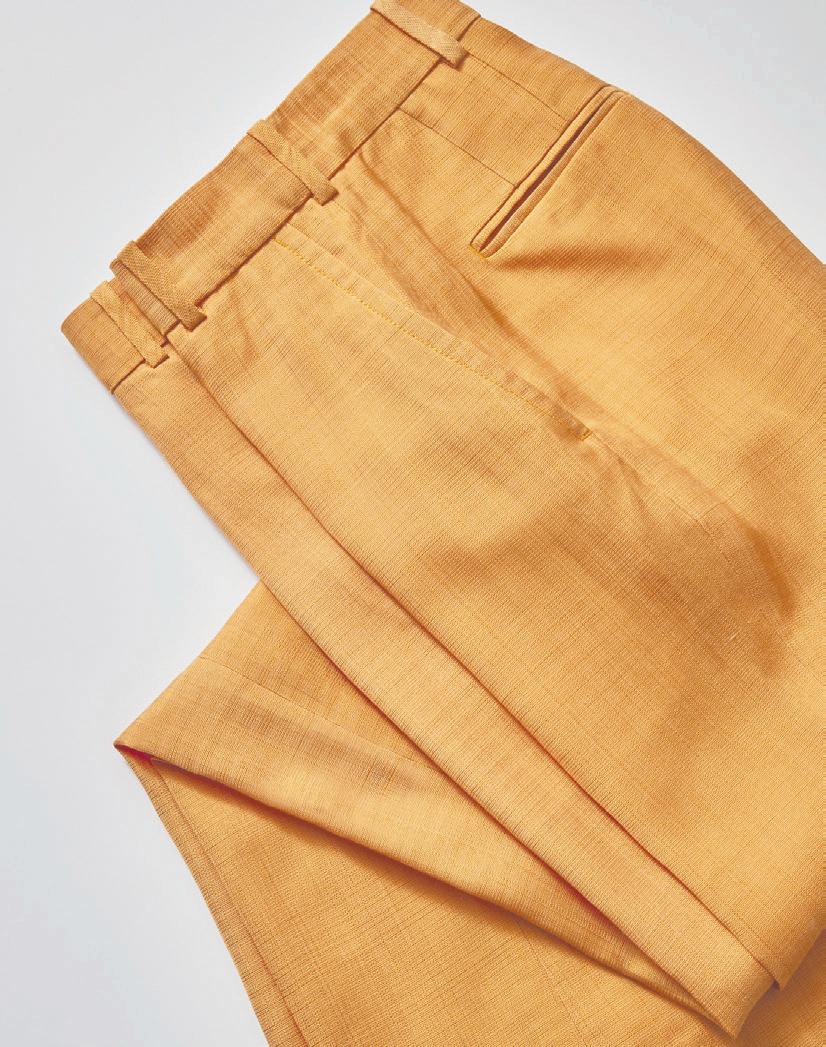
Editor’s note: Graphic and bold, this organic cotton twill shirt with its relaxed, straight fit and snap-button closure is a definite suitcase stand-out. Pack it with solid colours, flat summer sandals and the confidence of knowing it will come out crease-free on the other side.
Marimekko shirt / $350 / marimekko.com

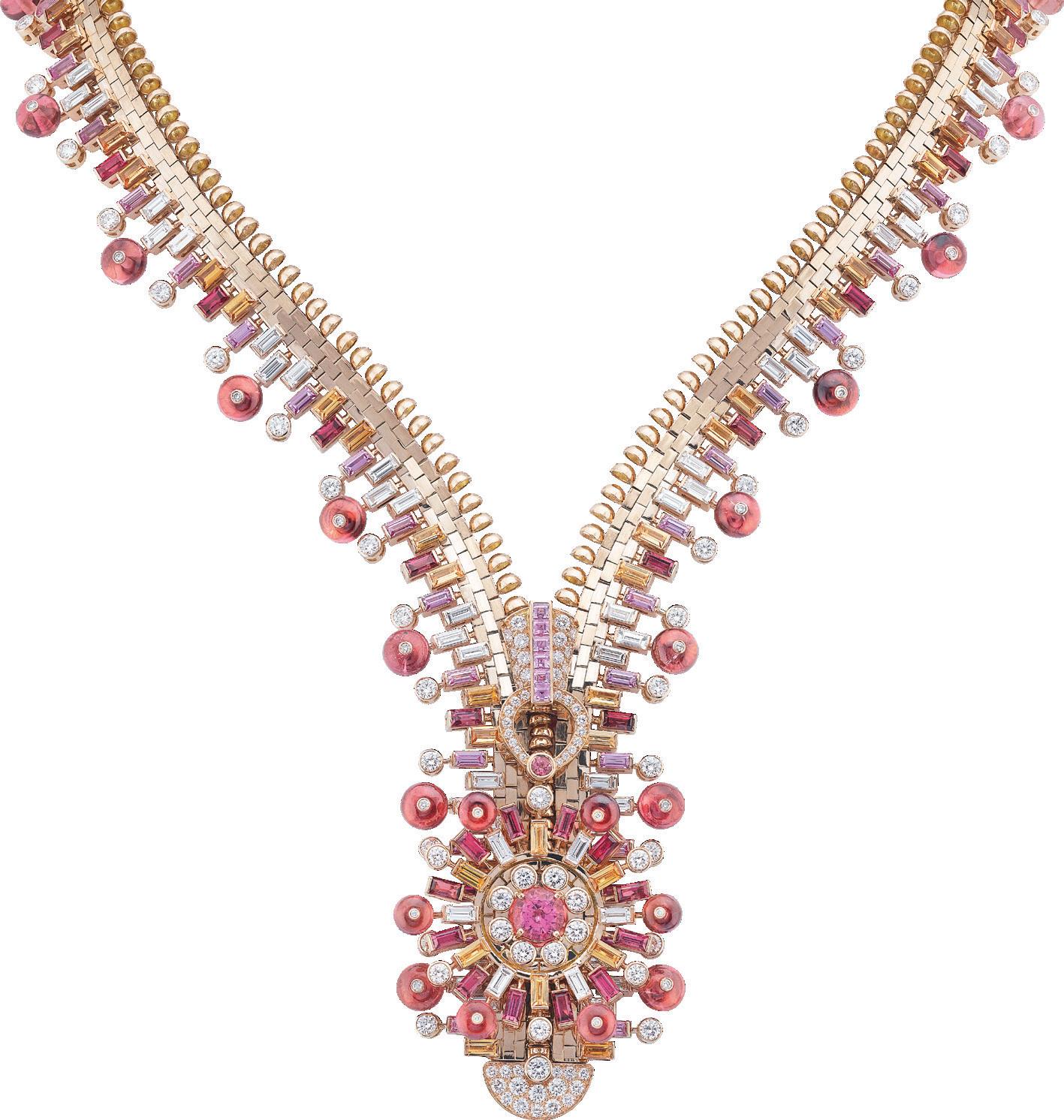
“The Zip necklace is the ultimate icon,” says Nicolas Luchsinger, the Asia-Pacific president of Van Cleef & Arpels (vancleef arpels.com). “It’s a rebellious design, one that brings together high jewellery and couture, but it’s also much revered for its mastery of technique and innovation – a collector’s piece.”
Luchsinger should know: having first worked at Christie’s in New York, he went on to found Van Cleef & Arpels’ Heritage collection, an offering of rare
jewels it acquires from private clients to resell. The Zip garners the most attention. The design harks back to the late 1930s when Wallis Simpson, then Duchess of Windsor, met with Renée Puissant, creative director and daughter of Van Cleef & Arpels’ founders. Simpson was impressed by the Surrealist-inspired work of couturier Elsa Schiaparelli, who had begun incorporating exposed metal zippers in her dresses in place of covered buttons. “At the time, it was a bold and daring thought.”
The magic is in its movement. Each piece is unique and can be worn open or zipped to form a bracelet, the workable sliding closure a feat of engineering in itself. Then there’s the adornment.
The house’s recent iteration, the Zip Antique Sunflower Rose necklace in rosegold (above), features 151 round and 75 baguette-cut diamonds, 46 baguettecut and six round pink sapphires and 31 tourmaline beads. It took 850 hours for master craftsmen to assemble. Every year, the Paris-based jeweller creates adaptations of the piece – just don’t mind the waitlist. Luchsinger is tight-lipped when it comes to special orders but he will say, “We have a lot of clients who want more than one, in white- and rose-gold and with different precious stones. It’s deeply personal to them. Of course, we can only create a few each year so as you can imagine, it requires some management.”
A design inspired by couture reveals its



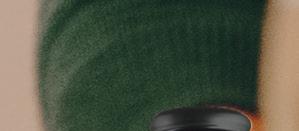
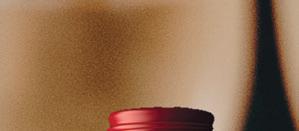






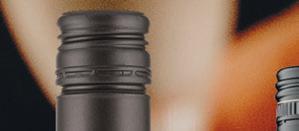






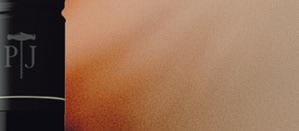
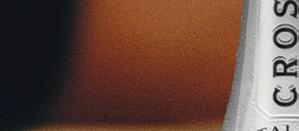





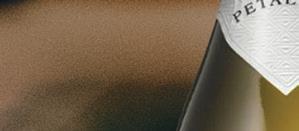
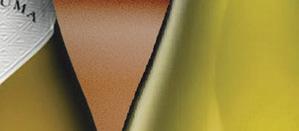





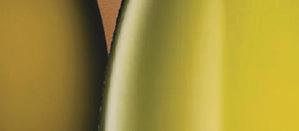



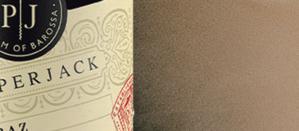

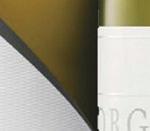

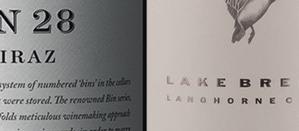









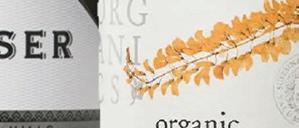

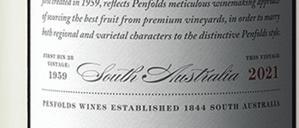


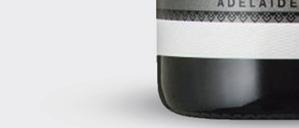

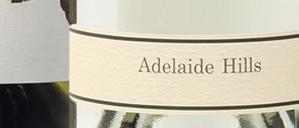

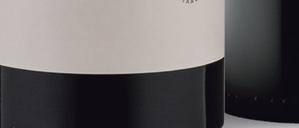



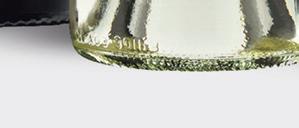



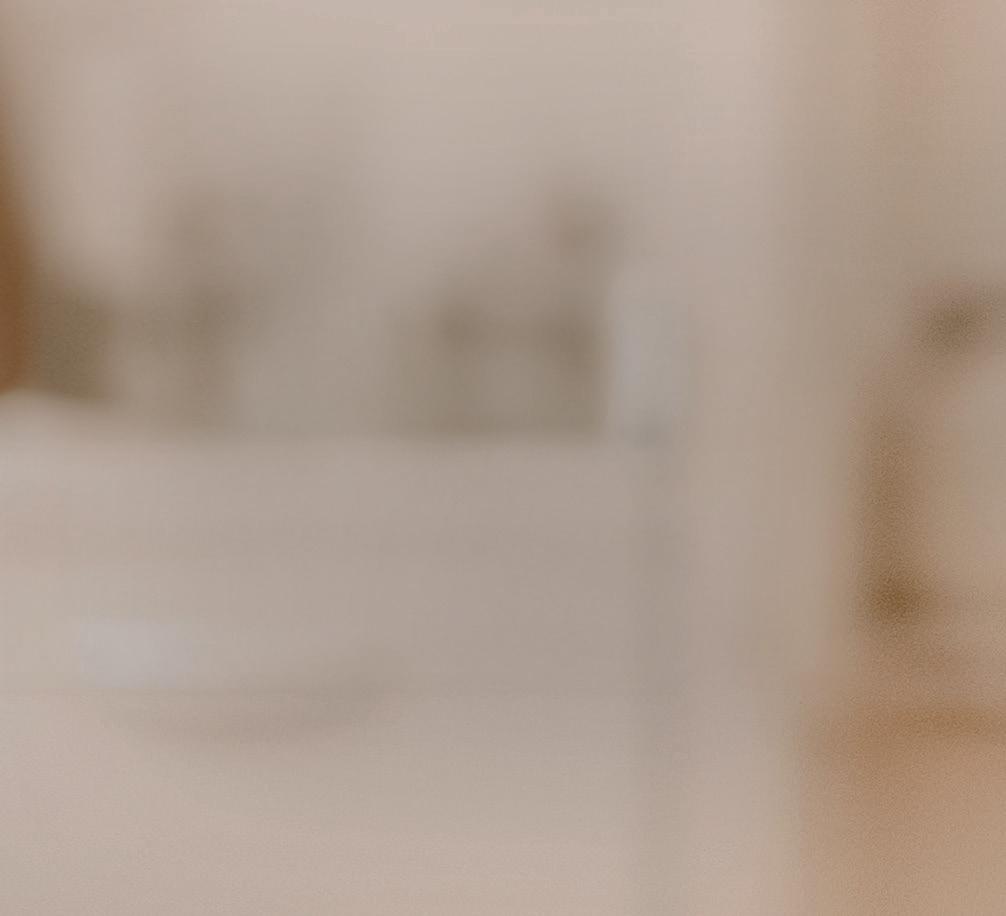

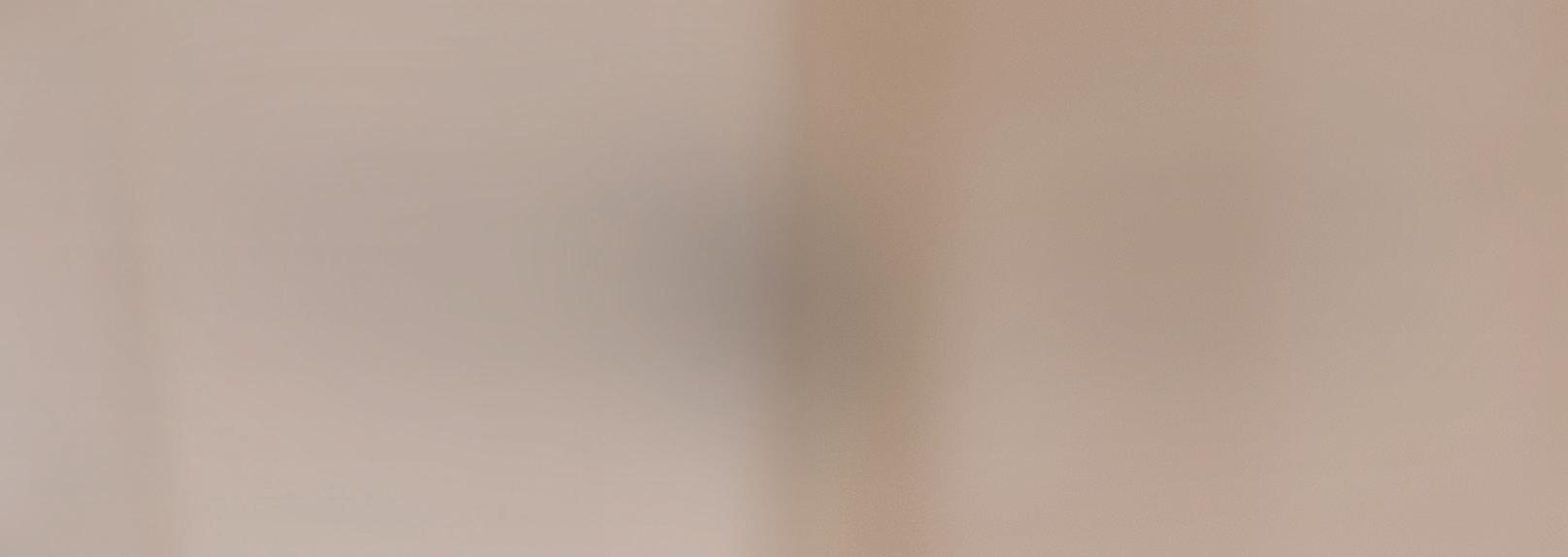

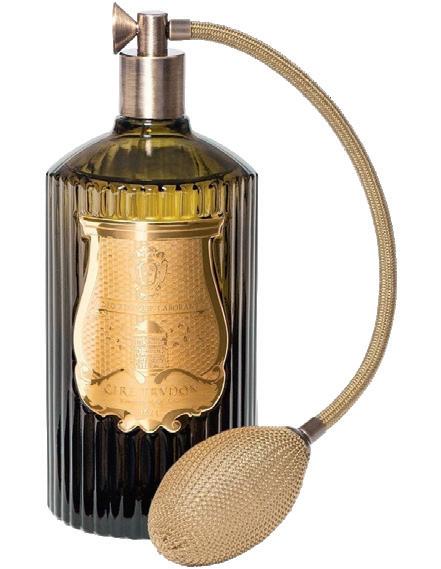 Interview by Hannah-Rose Yee
Interview by Hannah-Rose Yee
The city you visit most? Paris. I’d never been there before I went to show my collections. It’s become my second home. Can you narrow your packing down to one pair of shoes? Absolutely not. You never know what party you’re going to be invited to. You need a dress shoe, sandal, fashion shoe and runner. Fair enough. What’s your garment-care secret? If you’re not travelling with a handheld steamer, you’re doing it wrong. You’re at the airport. What do you pick up? Charlotte Tilbury’s Instant Magic Facial Dry Sheet Mask. Got to stay hydrated. Do you have any rituals on the plane? I spray the seat. I love Trudon Cyrnos Room Spray. I never drink on the first leg but I always have a drink on the second leg just because I think I deserve it. What do you listen to inflight? Fat Mascara, a super-informative beauty podcast. When you land in Paris, where do you stay? Hôtel de Crillon (qantas.com/hotels/ hoteldecrillon). It’s where we show our collections as well. I’ve gotten to know all the staff so it’s like going back to visit family. Any must-visit restaurants? The steak frites at Le Bistrot Paul Bert (bistrotpaulbert.fr) are the best in the world. They won’t even answer the phone but you just go there and beg for a table. And for a nightcap? Hôtel Costes (hotelcostes.com). Models, designers and celebrities are always there running amok. What about shopping? I get my mother her favourite soaps from Officine Universelle Buly (buly 1803.com) and then I pick up presents for me. And how do you stay in touch when you’re on the road? My friends and I write letters from our hotels.
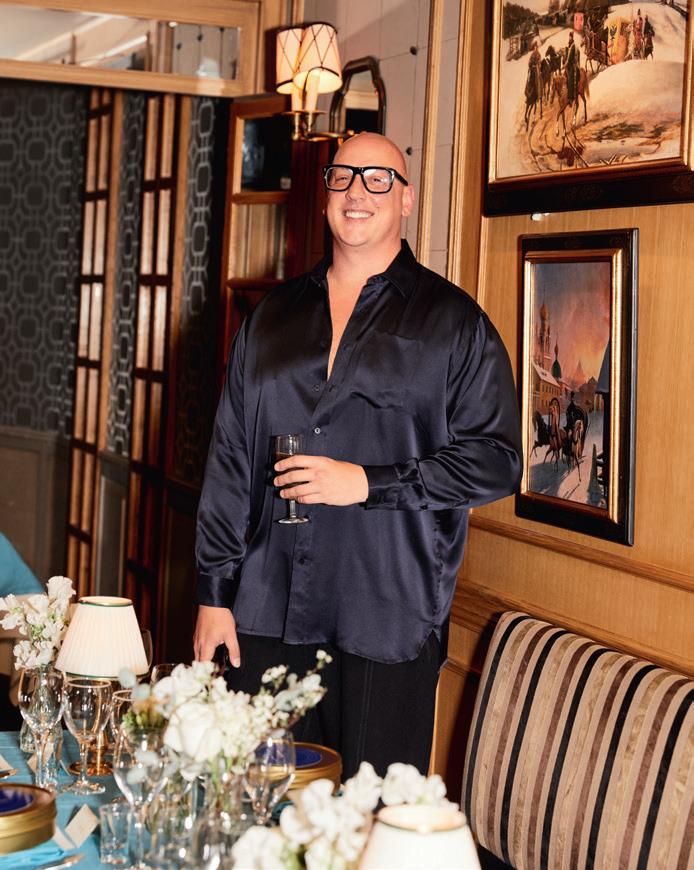



The fashion designer always packs a room spray, a handheld steamer and four pairs of shoes.
Michael


Want to know your position in the calendar month? The Rolex Oyster Perpetual Day-Date 36 won’t help. That’s because its date window’s numerals have been replaced with 31 emojis ranging from pandas and peace signs to ladybirds and love hearts. This unlikely carousel rotates on a similarly kooky dial that’s made up of multi-coloured jigsaw pieces. Yet this mad creation from Rolex feels symptomatic of the new direction of watch design that’s increasingly characterised by wild colours, novel materials and left-field collaborations.
Take, for example, the Audemars Piguet Royal Oak Concept Tourbillon Spider-Man, a watch that costs more than $300,000 and has a mini 3D sculpture of the web-slinging superhero on the dial. Or the Oris ProPilot X Kermit Edition. The lime-green face hosts a monthly cameo in the date window from Miss Piggy’s former squeeze.
It’s all a significant departure for an industry renowned for being notoriously straitlaced. Nicholas Biebuyck, heritage director at TAG Heuer, admits that the watch world is exploring “more liberation after a period of very conservative design”. He believes this explosion of creativity stems from the current success of the watch industry, with exports of Swiss watches increasing by nearly 12 per cent in the first half of 2023. “Now that we’re going through a boom period, brands can afford to take a few risks because if your commercial performance is already fairly well guaranteed, you can try something a bit different.”
Fuelling the consumer appetite for these bolder designs is the fact that, in a world where the smartphone is ubiquitous, a timepiece is now less about time-telling functionality than a means of self-expression in the digital age. If watch design is a reflection of the world around us then right now we are living in interesting times.
Forget stealth wealth. The latest roster of collectable timepieces is loud and proud.
Forging a watch case and bracelet out of sapphire crystal is particularly tricky as the material is almost as hard as diamond. Hublot has mastered this technical process but just in case you’re still not sufficiently dazzled, they’ve upped the wow factor by throwing in an eyepopping bezel stacked with 48 technicolour gemstones and a tourbillon movement.
Midnight Purple
Usually if your wrist turned purple it’d be a sign that you’d fastened your watch too tightly. Not with the latest Happy Sport model – the iridescent hue of which is apparently inspired by the night sky on the brink of dawn. Five “dancing diamonds” jiggle inside the 33-millimetre case that’s opulently framed with further sparkle courtesy of that diamond-set bezel.
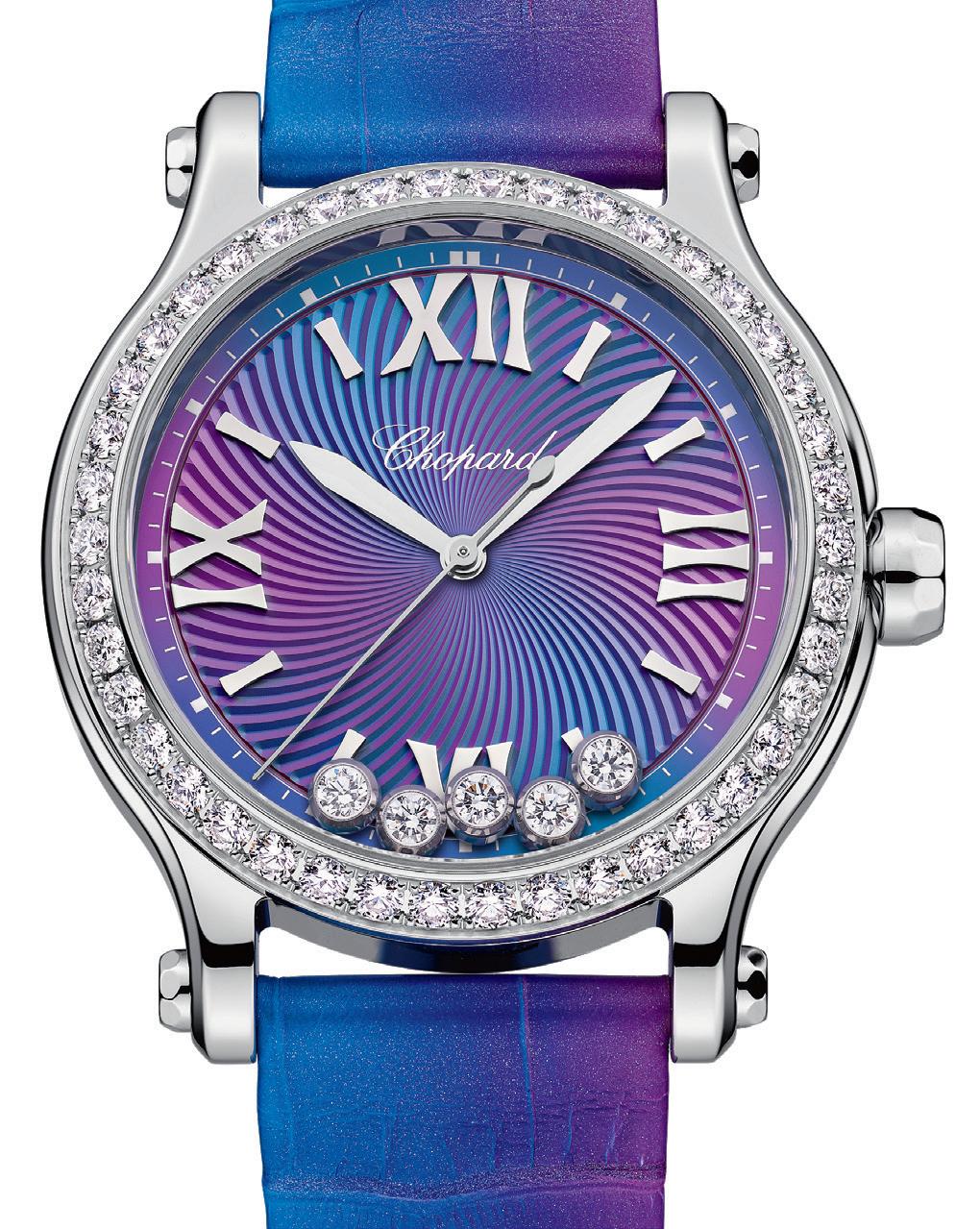

What’s black and white and recently spotted on the wrist of Lewis Hamilton? The answer, of course, is the IWC Perpetual Calendar, a genius creation that recognises the varying lengths of the different months and leap years. In snow-white ceramic, the 46.5-millimetre case evokes the winter wonderland of Lake Tahoe in California and delivers a stark contrast to the jet-black dial.
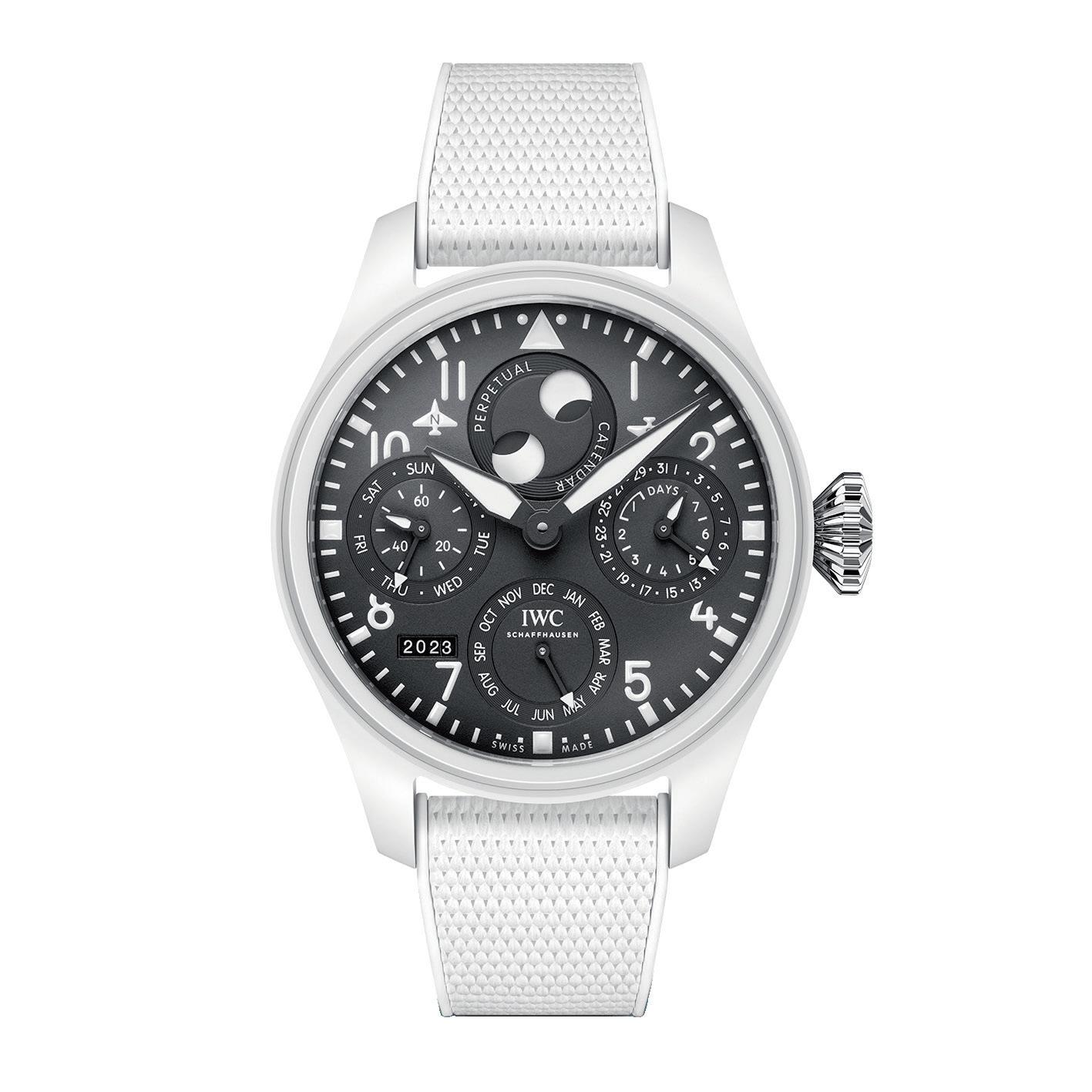
Cartier Clash

[Un]limited
Part wristwatch, part bracelet, the Clash [Un]limited is a highimpact collision of beads, facets and bevelled edges. It combines yellow and “violet gold”, a mauvetinted form developed by Cartier. This quartz-powered piece fastens via a novel bracelet that uses rolling balls as centre links.
Introduced in 1968 to celebrate the United States team’s victory in the America’s Cup, the Skipper brought colour to chronographs with a metallic blue dial sporting jolts of pistachio green and bright orange. Now it’s back with 100-metre water resistance.
$9800 / tagheuer.com


You don’t need to be courtside to appreciate this tennisthemed watch with its neongreen accents on the second hand. The crown is unusually positioned on the left, while the aluminium build feels wondrously light on the wrist. Should you like this summery design, be aware it’s a limited edition of 800 pieces – getting one will be a case of first come, first served.
According to legend, a Californian dial restorer in the 1970s was repairing a Panerai when he was unable to find matching numerals. His work-around was to combine Arabic and Roman numbers and the “California dial” was born. That style returns here on a moss-green dial housed in a 45-millimetre case made of the company’s recycled eSteel that’s specially treated for a burnished look.

8 Breguet Classique Quantième Perpétuel 7327
Breguet offers a fresh take on the perpetual calendar by managing to deliver the wealth of information – day, date, month, leap year and phases of the moon, etc –in a way that feels effortless. Inside the 39-millimetre rosegold case, the dial even finds room to showcase the brand’s fabled guilloche handiwork.
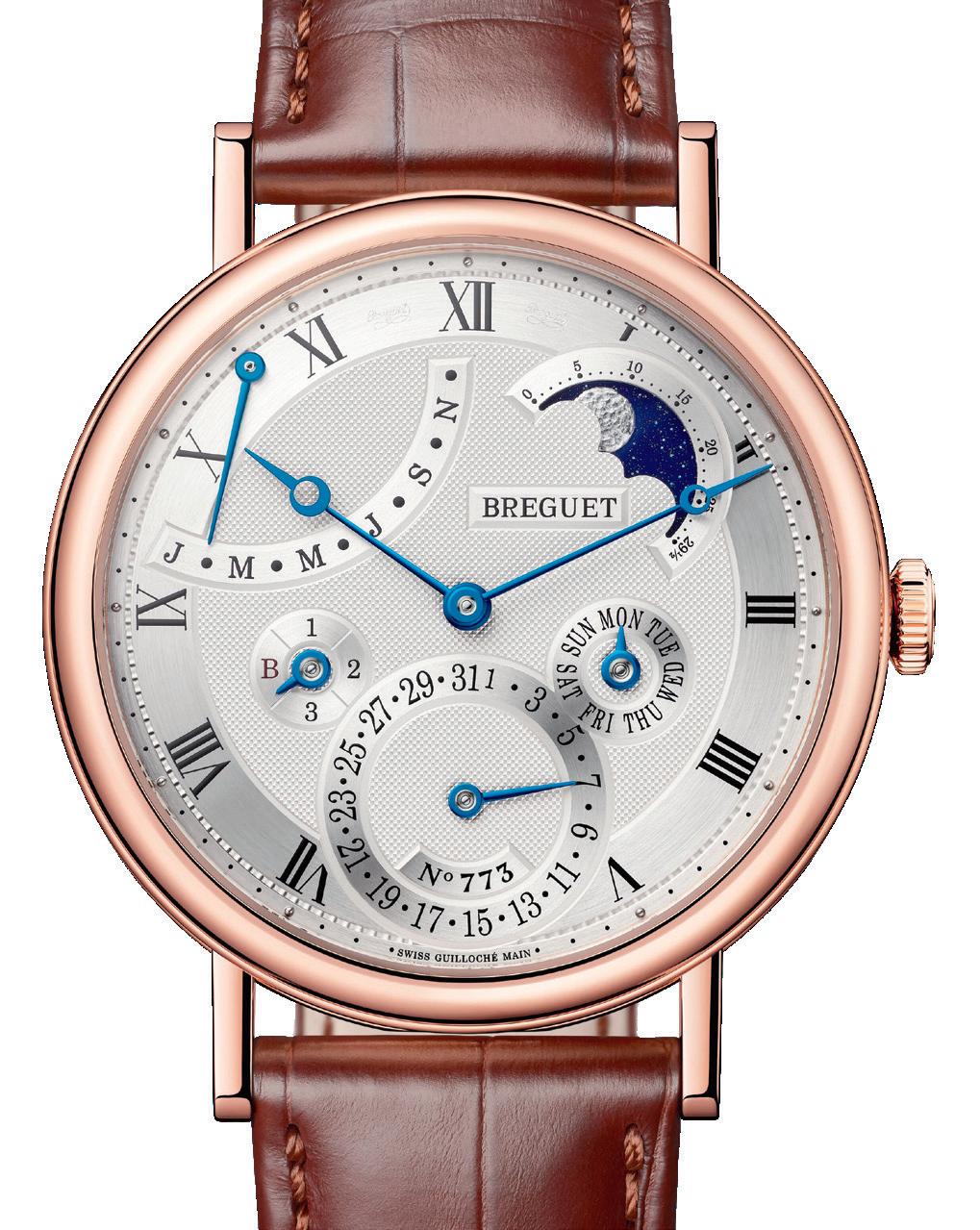
$116,800 / breguet.com
9
Longines Pilot Majetek Originally commissioned in 1935 by the Czechoslovakian Air Force, this heritage reissue from Longines is distinctive, with its knurled bezel and cushionshaped case. A 43-millimetre diameter ensures plenty of rugged wrist presence but the matt black dial and beige lume make it surprisingly wearable, especially when anchored on its green NATO-style strap or brown or green leather.
$5900 / longines.com

During their short summers, the Hotaka Mountains in Japan turn a deep shade of green. The patterned dial of this GMT summons that seasonal moment, its verdant texture lifted by the silvery steel hands and indices and crisp white on the bezel.

The Calatrava is viewed as the classic dress watch but this sportier incarnation feels like it’s undone its top button. The centre of the black dial is stamped with grid-like guilloche, while yellow, red or blue accents bring a sense of fun. The result is a notably casual take on the model, but this being Patek, it’s encased in white-gold.
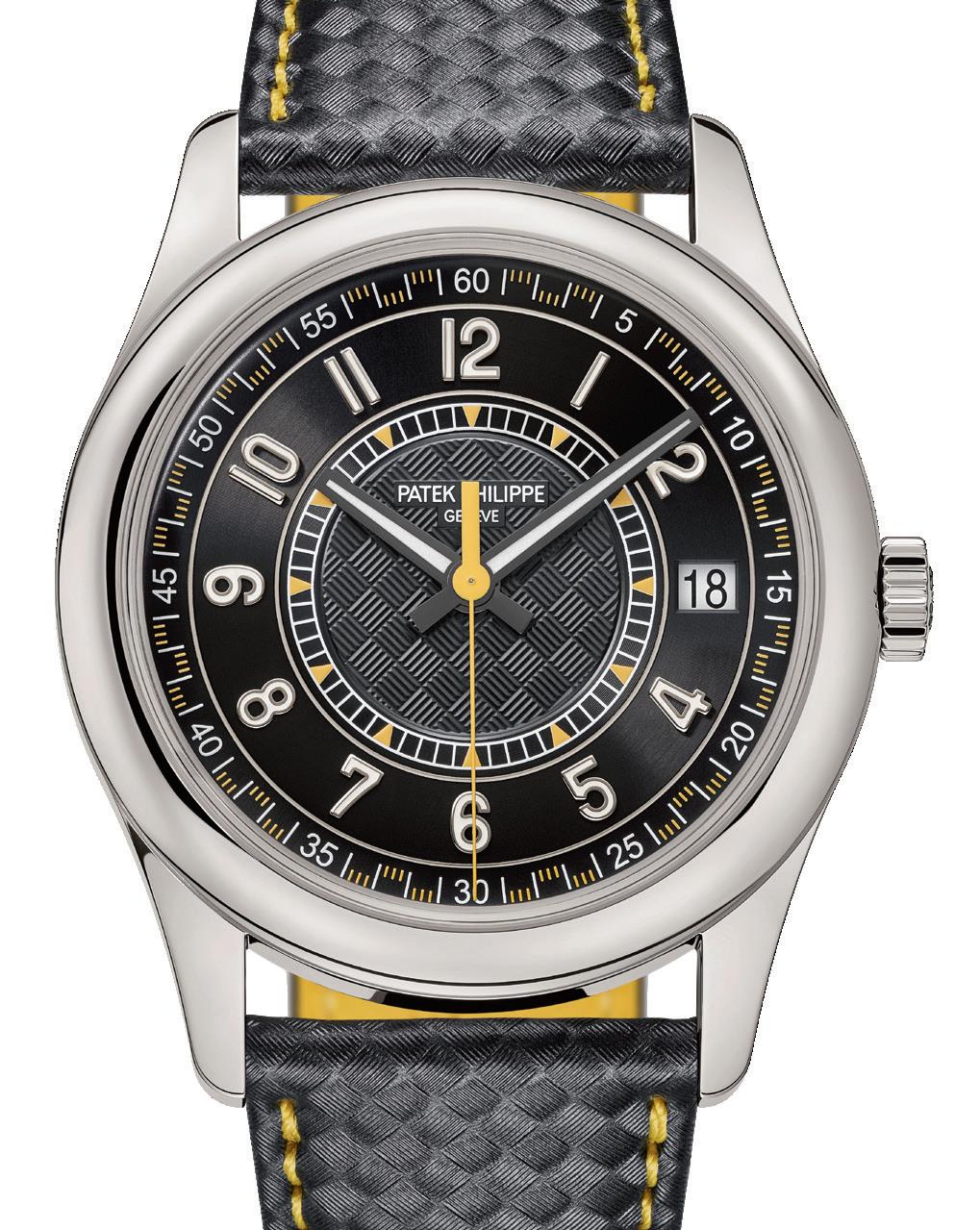
This is a statement bracelet watch that has a small, angled dial allowing the wearer to discreetly eye the time without their dinner companion knowing. The latest version features a case, bezel and snake chain bracelet in rhodium-plated white-gold.
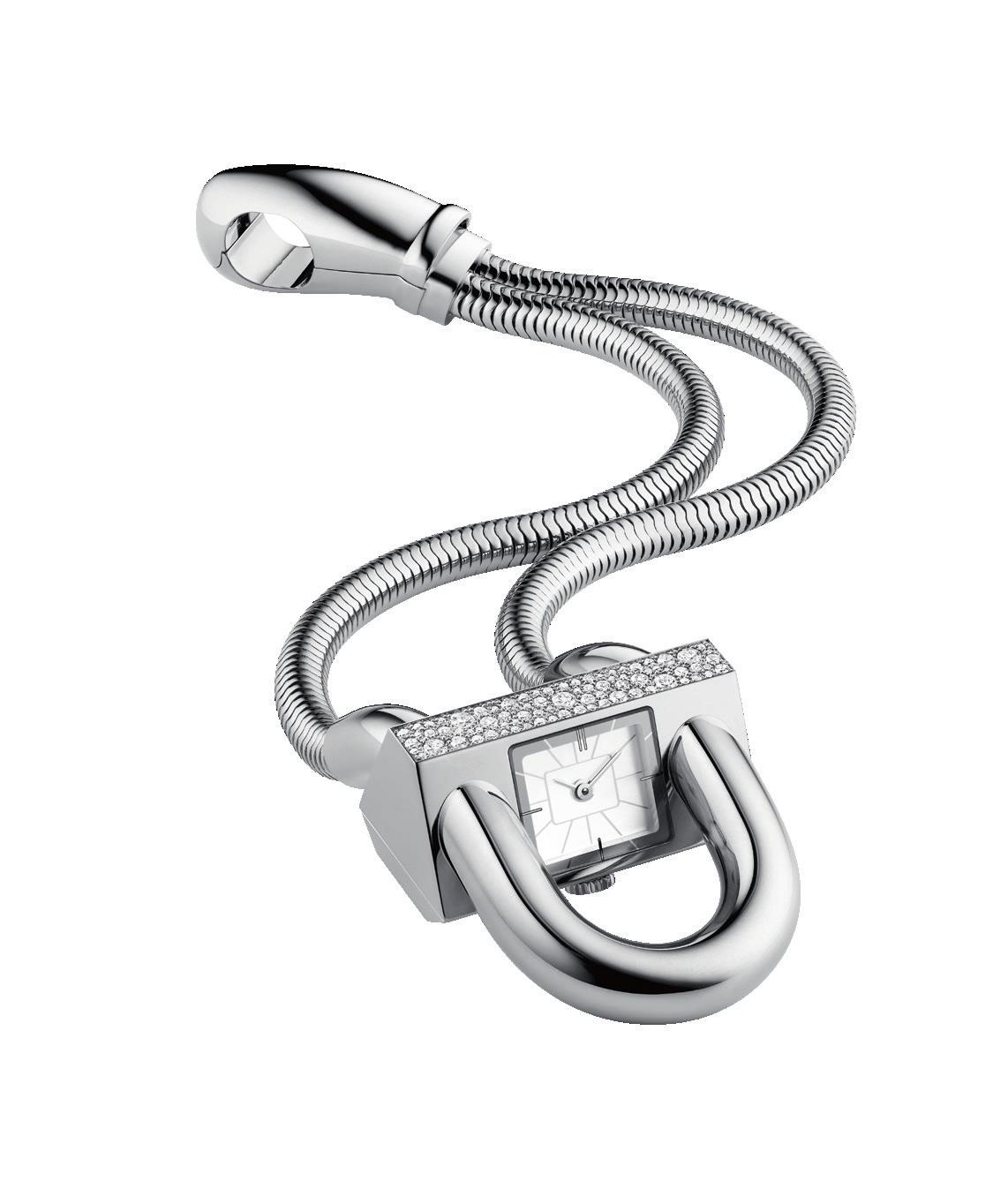
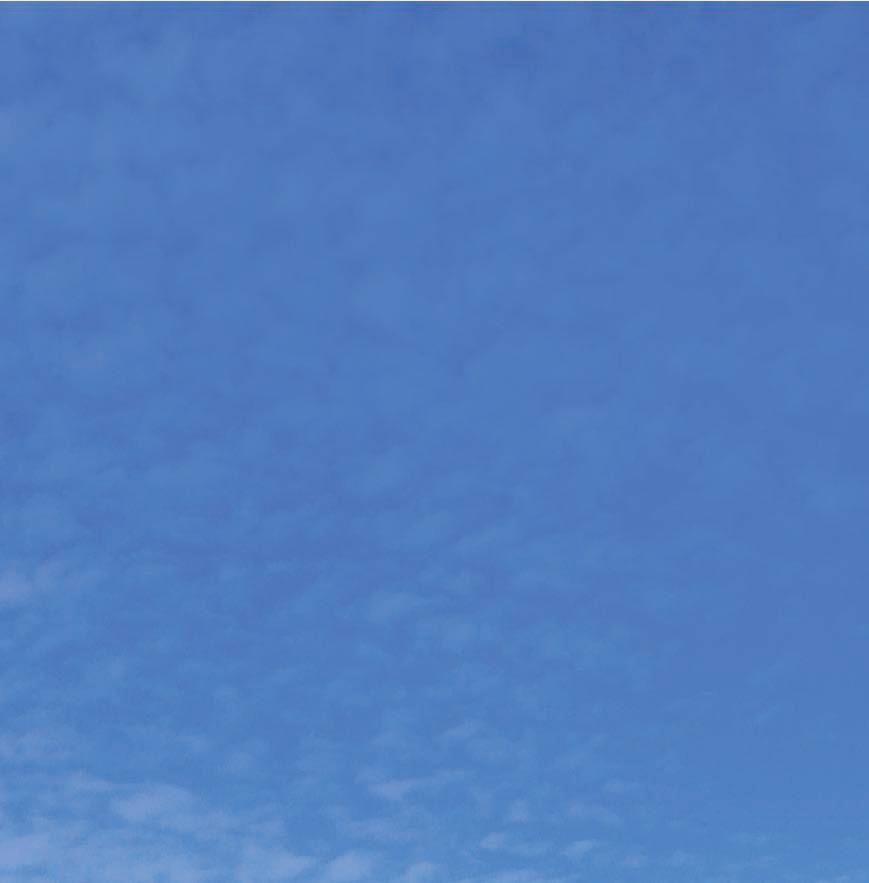

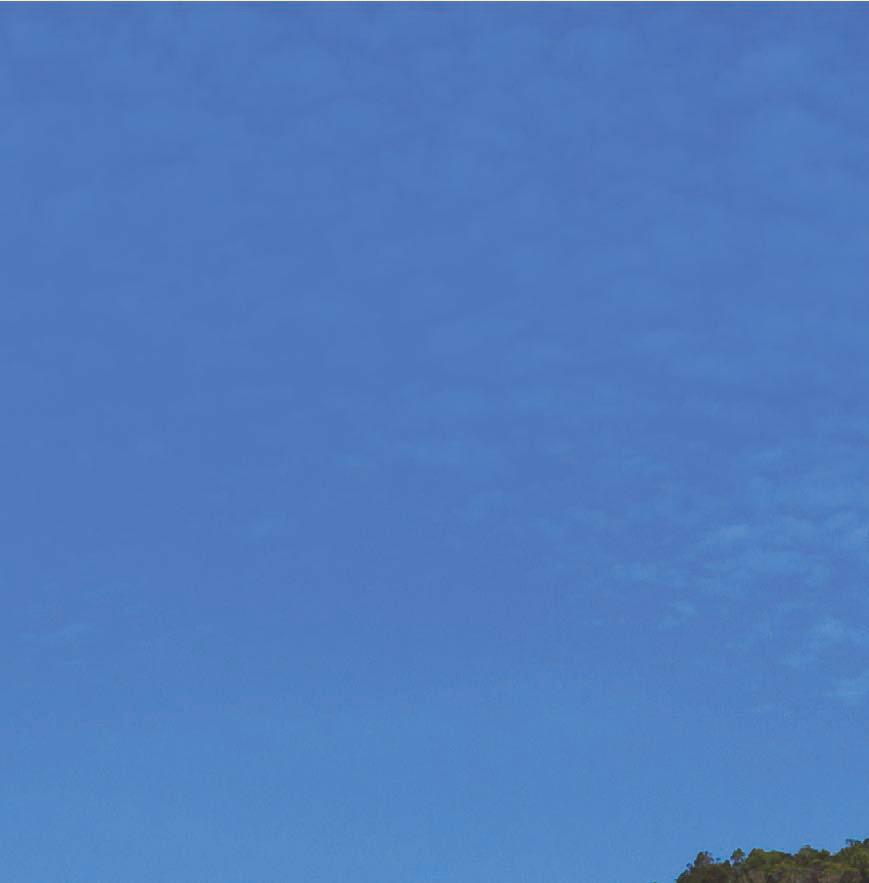
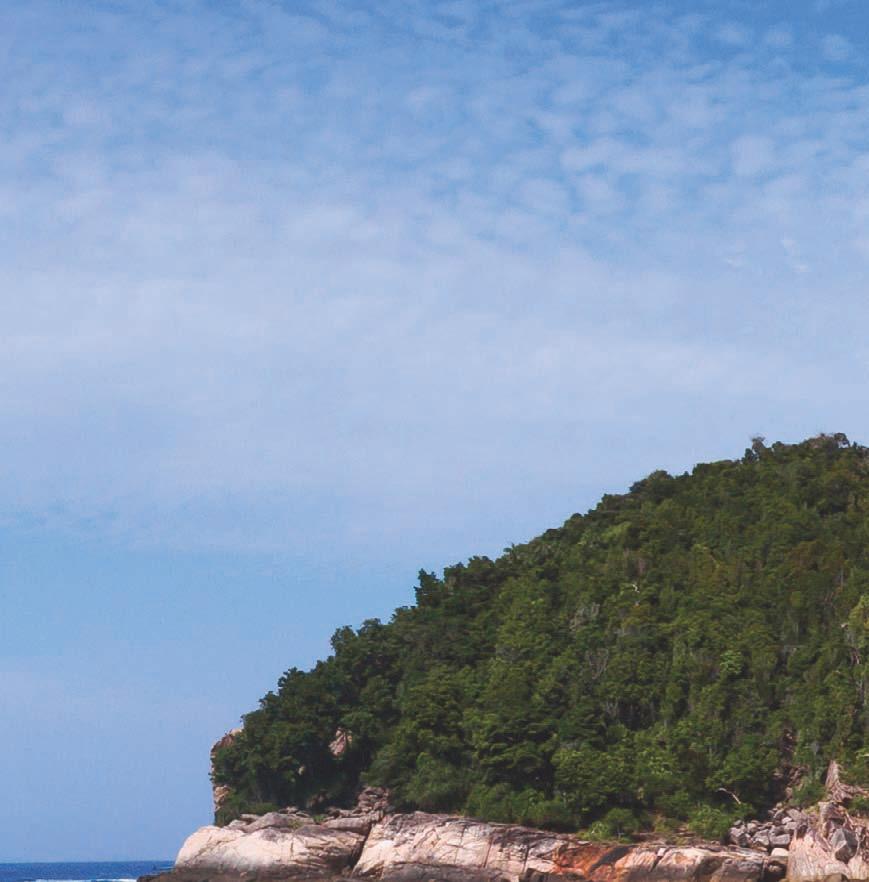

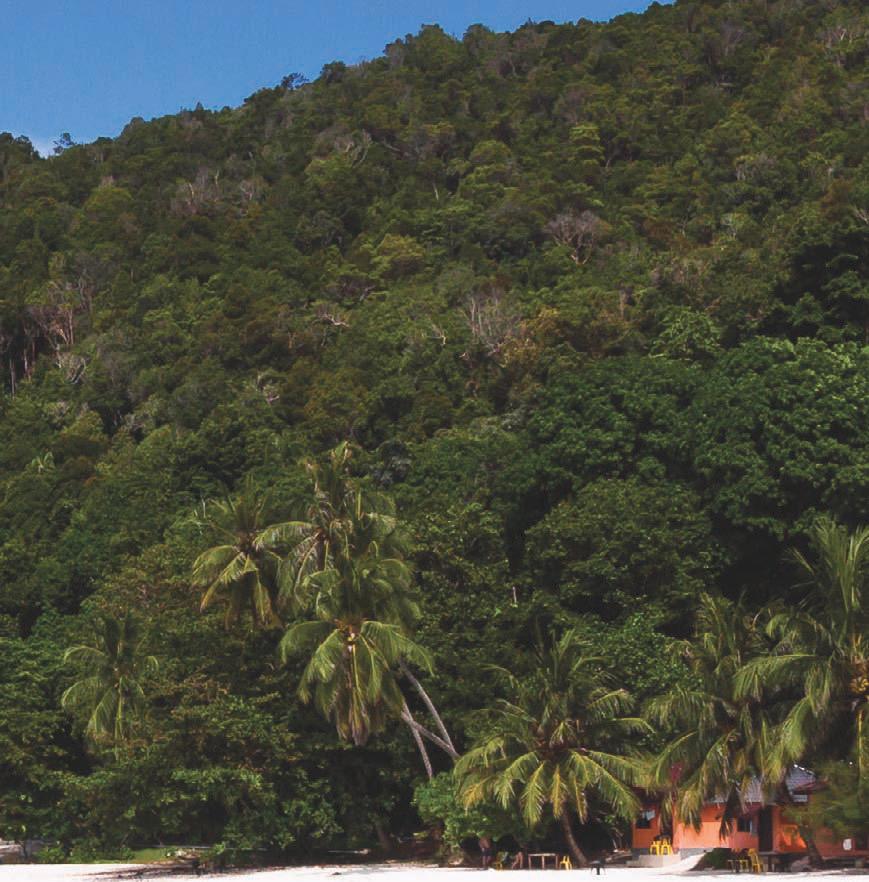




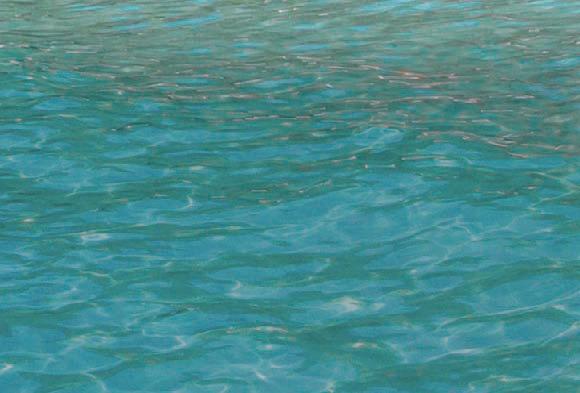


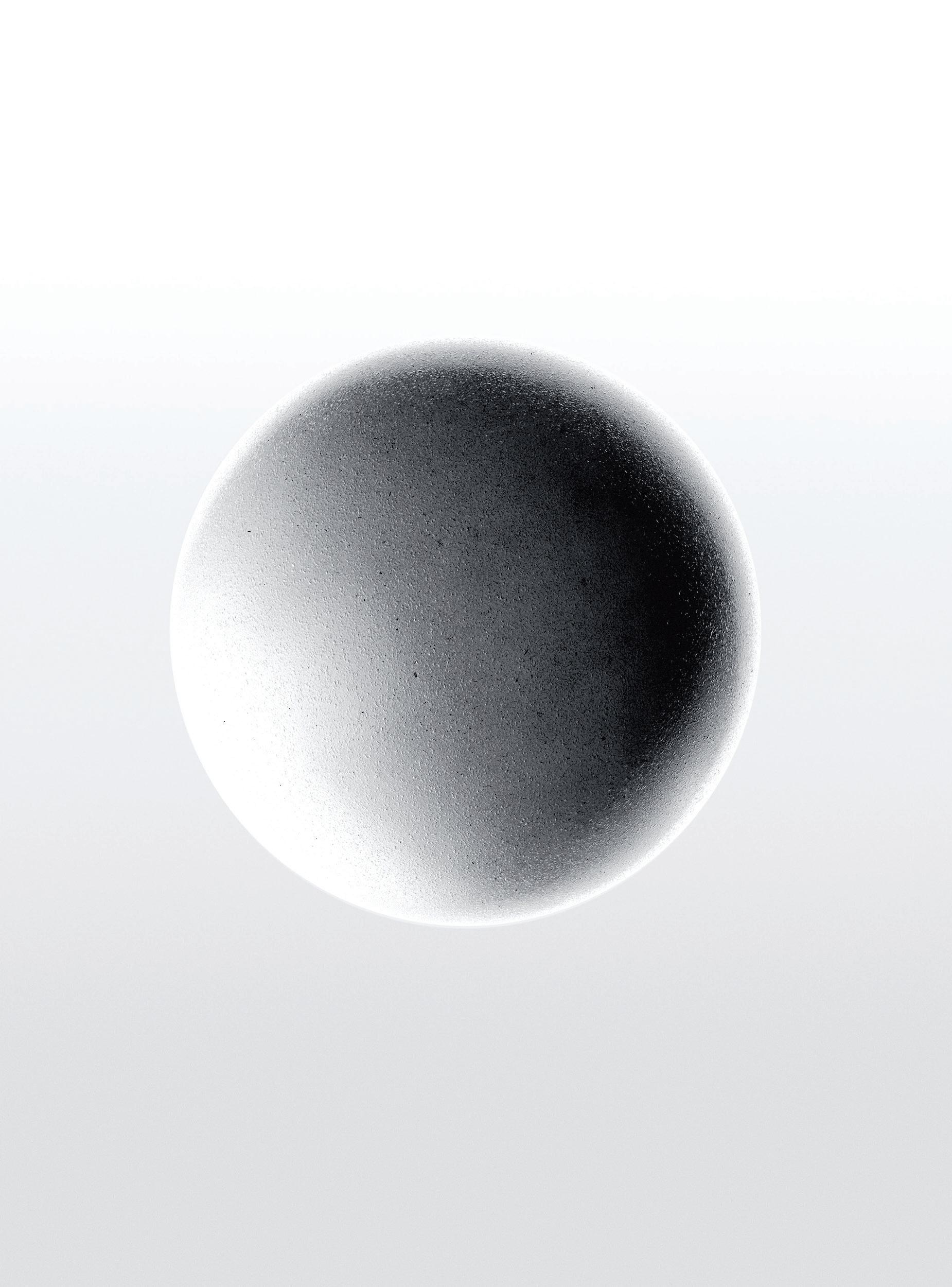

From measuring and warding off climate change to thwarting cybercrime or detecting cancer at a cellular level, quantum technologies could revolutionise numerous aspects of our lives. The scientific race to harness quantum’s massive potential to deliver formerly unattainable insights or solve seemingly intractable problems has already stretched over decades and there’s no finish line in sight. But there’s currently a very loud roar from the crowd as the development of quantum in Australia hits a critical point.
Just ask Australia’s chief scientist, Dr Cathy Foley. She’s talking about a $6.1-billion industry and more than 19,000 new jobs by 2045. Her delivery of the National Quantum Strategy in May shone a light on Australia’s many firsts and achievements as a global leader among 16 quantum-active nations that are pursuing world-changing advances.
On Foley’s bold agenda is accelerating the move by quantum technologies and their mind-boggling applications from the lab into the real world. Australia has done much of the groundbreaking research, she emphasises. “We’ve reached a level of maturity now where there’s a lot of opportunity. Everyone needs to understand why quantum technology is important to them and if you’re serious about your business, it’s time to get involved.”
Top of the chief scientist’s strategic list is building an ecosystem to support the rapidly growing number of startups emerging from 22 quantum-related research institutions across the country. Some are already making sales, she points out, and several are operating internationally.
Foley is seeking stronger business engagement beyond the tech sector, where brands like Alphabet, Microsoft, IBM and AWS are already deeply involved. Vital in the mix is keeping investor dollars surging, along with bringing on future
Story by Deborah Tarrantgenerations of quantum-skilled workers, researchers and entrepreneurs to make it all happen for a global industry that’s tipped to grow by 30 per cent a year for the next five years.
So what is quantum technology?
Very simply, quantum technologies use the laws of quantum mechanics to create powerful new technologies by harnessing subatomic particles – electrons and photons – to store and process information. Broadly, they fall into three categories. Quantum sensing and imaging can detect minute changes and measure gravity and magnetic fields with hitherto impossible precision. Quantum imaging can pick up cellular changes in the human body or detect deeply buried minerals. Quantum communications covers advances in encryption and can beat (or, more ominously, facilitate) cyber hackers and keep networks secure.
Most talked about, more complex and less mature is quantum computing, which will enable calculation, modelling, data management and optimisation in ways that will stretch the upper limits of today’s supercomputers.
An error-corrected, scalable quantum computer is the nascent industry’s holy grail. At the forefront is the work of Professor Michelle Simmons. The 2018 Australian of the Year is the longtime director of the Australian Research Council Centre for Quantum Computation and Communication Technology at the University of New South Wales and, more recently, director of Silicon Quantum Computing (SQC), the country’s first quantum computing company, which was founded in 2017. Globally, she’s lauded for a multitude of firsts – an atomic-scale transistor and the narrowest conducting wires, for starters.
Beyond the far-fetched realms of science fiction, quantum technologies have leapt into reality and promise to upend the way we live and work. Here’s what you need to know.
Minara Resources, wholly owned by Glencore, is Australia’s largest cobalt producer and the second largest producer of nickel.
Our Murrin Murrin site in WA’s northern Goldfields is an integrated nickel and cobalt mining and processing operation employing over 1,000 people.

Murrin Murrin offers a wide range of opportunities to advance your career. We are a diverse, dedicated and driven workforce, building a sustainable business today with a focus on tomorrow. Join us.
Advancing careers.
Advancing everyday life.
glencore.com.au/joinmurrin
SQC is unique because it has created the ability “to make devices in silicon with atomic, the highest degree of precision,” she says. “No other company can do that.” The process uses two atoms, silicon and phosphorus, and claims the fastest operation time. Simmons’ team makes quantum hardware chips on an atomic manufacturing line and has a foundry where they build, design and test. There’s a quantum server farm that brings together the chip with the control and software layers to create a full stack. “So we’ve figured out how to scale it, how to make it high yield and reproducible,” she says. “Then we look for people with problems that need solving and run them on our processors in-house.
“Bank of Australia is one of our investors and they look at how to optimise the banking system for their customers. We’re looking at Telstra’s network and how to improve communications. There’s a raft of applications out there and everyone is trying to figure out which ones are the most commercially relevant.”
Among the quantum computing technologies being developed, including SQC’s, most require special cryogenic (yes, super-cold) vacuum environments or complex lasers to operate with stability and accuracy.
Quantum Brilliance (QB), a company spun out of the Australian National University and now operating across Australia and Germany, uses nitrogen atoms inside synthetic diamonds to operate its qubit (classical computers work on binary bits to store or process information and quantum computers use qubits) and produce a circuit at room temperature. Its unique selling point is a quantum computer the size of a lunchbox, which can be mass deployed anywhere.
While quantum computers promise exponentially more computing capacity, QB puts the focus on size, weight and energy use. “You could have hundreds of them inside a supercomputer or data centre and power consumption would be reduced dramatically,” says CEO Mark Luo. “It’s better for the environment.”
Synthetic diamond quantum computers will be widely distributed within three to four years, he predicts. “Quantum utility – doing something useful with quantum computers, compared to same-size traditional computers – as well as saving power, is coming much sooner than people expect.”
What about a personal quantum computer? Applications for edge computing – which puts it close to the user and source of data – are also being explored by QB. Its devices can be adopted by computer facilities and AI companies, logistics, aerospace, defence, pharmaceuticals, cybersecurity and researchers.

Use cases for quantum technologies look set to be ubiquitous. Consensus among the experts is that everywhere information technology goes, quantum is expected to follow.
Foley’s sights are on the early detection of diseases and injuries. In August, a CSIRO-led Quantum Meets Sports event brought physicists together with the Australian Institute of Sport to explain how the new technologies might benefit
athletes, from sharper logistics to analysis of biomarker data from trackers and the impact of head injuries on brain health. “Wouldn’t it be great if we’d predicted [Matildas’ captain] Sam Kerr’s calf muscle injury and pulled her out of training before it happened?” muses Foley about the early FIFA Women’s World Cup setback.
The global pharmaceutical industry is eagerly eyeing quantum’s potential to produce novel medications, speed up drug trials and solve supply chain issues. (We can only wonder at the quantum effect on the 200 days it took supercomputers across the world to test the COVID-19 vaccine.)
Foley is also talking about the modelling of catastrophic weather events, while Simmons is convinced of the power of quantum analogue simulation to create new materials and make existing ones more effective in the manufacture of solar cells and nitrogen fertiliser.
So much of the talk is future-facing but a range of homegrown applications are up and running. The optimisation of complex logistics and distribution networks is already live. Transport for NSW has been honing data management efficiencies, wrangling the 657 million public transport trips taken annually and congestion hotspots, with a host of local quantum firms, beginning with Sydney startup Q-CTRL in 2021.
The finance industry is facing the threat of quantum adoption by cybercriminals, who are also getting prepped with Harvest Now Decode Later tactics. Quantum will allow security systems to be broken in minutes, warns Vikram Sharma, founder of Canberra-based QuintessenceLabs, which is marketing quantum key generation and distribution and “crypto-agile” key management for the counteroffensive.
In defence, better sensing and measurement is saving the day, with the Australian Defence Forces’ surveillance network, JORN, having a quantum precision upgrade with a Sapphire Cryogenic Clock that might gain or lose a second – but only every 40 million years, thanks to Adelaide company Quantx.
Not surprisingly, mineral exploration is one area where Australia is out there on several fronts, with Canberra startup Nomad Atomic already in the market with its single-atom gravimeter. Big players like BHP and Woodside, meanwhile, are hiring quantum-qualified graduates.
Australia’s trailblazing status is traced back to early work in photonics in the 1950s and superconductivity in subsequent decades. From the mid-1990s, investment started to flow to develop early quantum systems. More than $400 million in federal funding for quantum has been leveraged by state and international governments and industries, notes Foley. “Our success comes down to patient, long-term investment. We have the infrastructure and the people.”
Some 2500 PhD graduates in quantum physics have emerged from Australian universities, a disproportionate number for the size of the population, and the diaspora of founders and researchers who have worked or trained here are leading the way around the world.
A global quantum drive is now on, with the United Kingdom, United States, Canada and China forging ahead, prompting some concerns that Australia may fall behind. But Simmons is characteristically confident, saying that SQC is leading the world. “All our intellectual property is owned in Australia. There’s a tremendous amount of talent that allows you to build a whole system here.”
The emergence of a viable quantum computing industry raises many questions, including what that means for traditional computer power. At Western Australia’s Pawsey Supercomputing Centre, where capabilities run to huge international radio astronomy telescope projects – such as the Square Kilometre Array that aims to look beyond galaxies to the moment just after the Big Bang – the viability of bringing classical and quantum computing together is being explored.
Can they be integrated? Early indicators suggest they can. After Pawsey developed a prototyping pathway earlier this year, it managed to process what’s known in the business as a simple “Hello, World!” algorithm, using a QB accelerator connected to the centre’s Setonix supercomputer. “A quantum accelerator sitting next to a supercomputer like ours opens up another realm of possibilities to solve problems,” says Pawsey executive director Mark Stickells. “I don’t think anywhere else has done it at room temperature. It’s not commercial yet and the challenge now is to work with the ecosystem to develop the path for this technology.”
In August, conversations began for the National Quantum Collaboration Initiative aimed at bringing academia, government and industry together to make plans for Australia’s ongoing quantum success. The Initiative is being run by the Sydney Quantum Academy (SQA), established in 2019 by the NSW government and four Sydney-based universities.
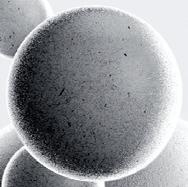
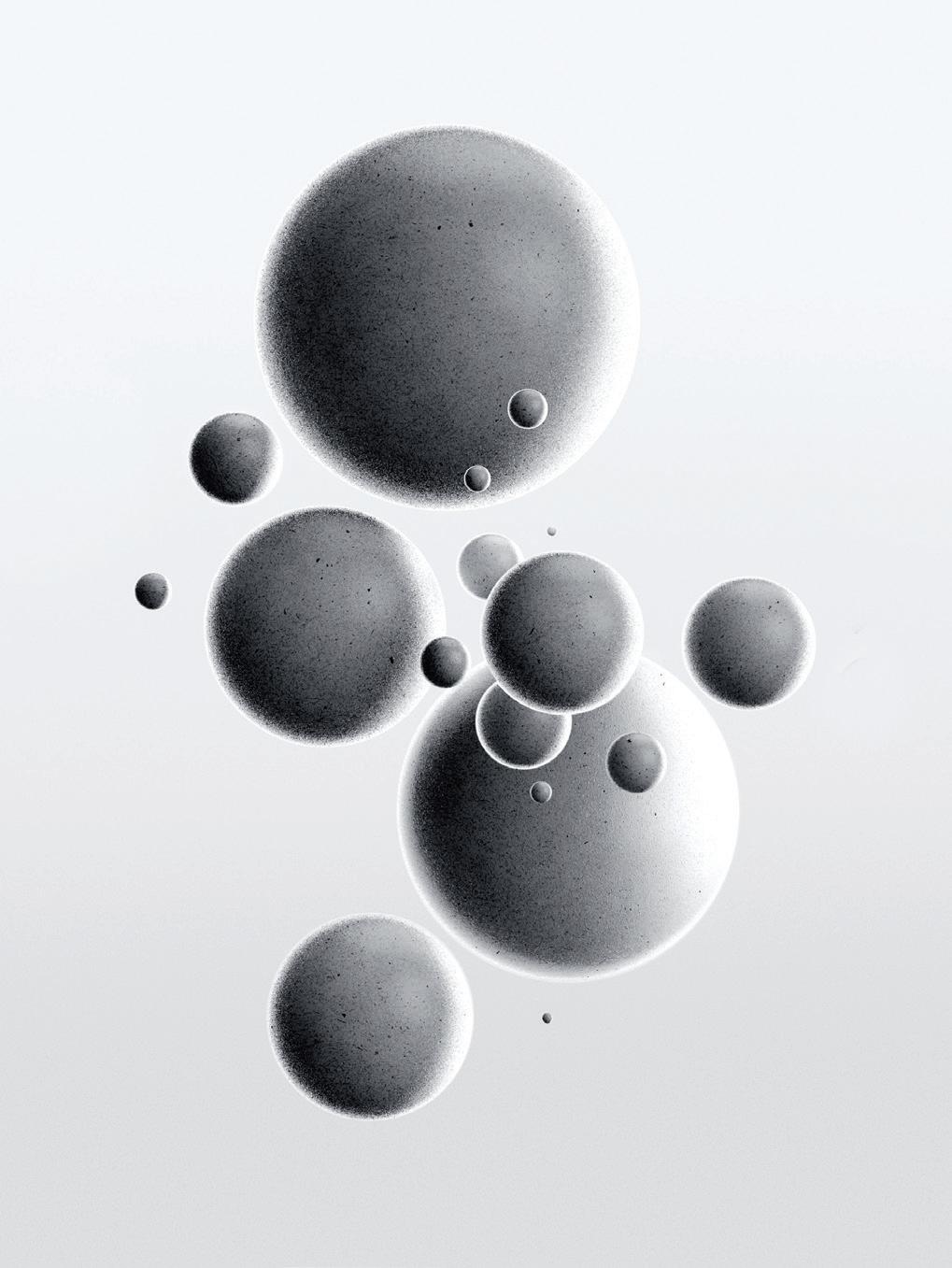
In line with the National Quantum Strategy, the initial focus will be on talent, skills and workforce, says SQA CEO Professor Peter Turner. “We’re listening to business about the quantum skills they are looking for.”
An inkling comes from the SQA’s advisory board –where representatives of big business rub shoulders with quantum startup leaders – about the need for quantumtrained graduates to have transferable skills. For business, it’s about getting those bright graduates into internships and jobs for quantum use-case development and combining the new quantum kids on the block with classical experts in industry to speed up progress.
The nation’s chief scientist can’t curb her enthusiasm, not least for the fifth and last theme of the recently launched strategy, which calls for “a trusted, ethical and inclusive quantum ecosystem” focused on “economic prosperity, while safeguarding national wellbeing”. It aligns well with the mindset of Australians, Foley believes. Moreover, it’s essential, due to the pervasiveness and strength of the new technology.
“We have to bring the region with us and make sure it’s implemented in a balanced way,” says Foley, who is intent on blending researchers with startups and the wider community to de-risk the adoption of quantum technologies. “Everyone must be lifted by this tide. It should be part of the way we develop technology in Australia. We don’t want to be looking back once the genie is out of the bottle.”
Climate change is one of Australia’s biggest challenges, which is why we’re working with some of the country’s leading bus companies to create a fully electric fleet for Australia.
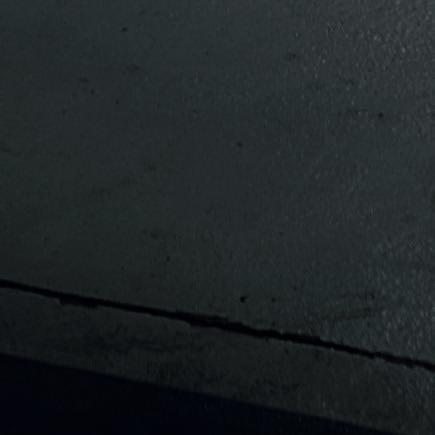

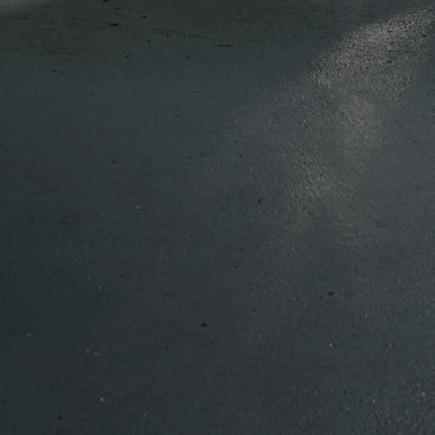



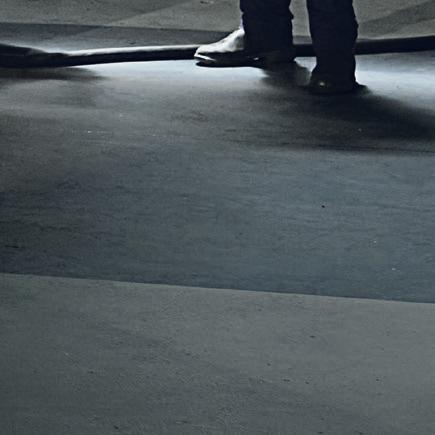
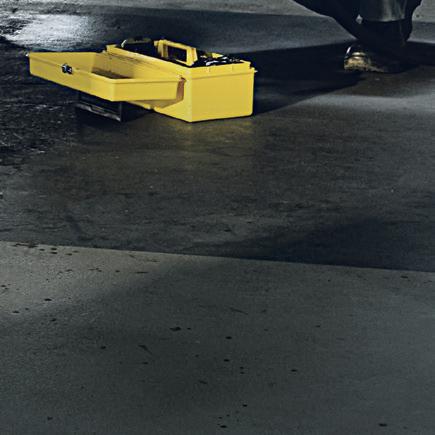
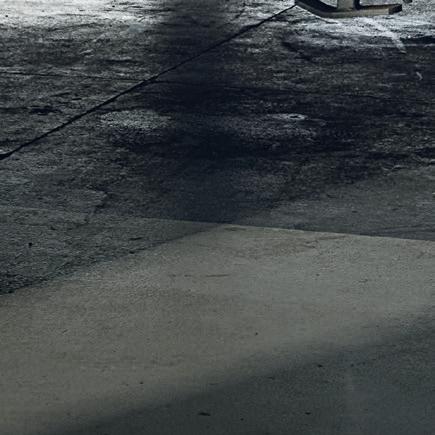


commbank.com.au/sustainablefinance







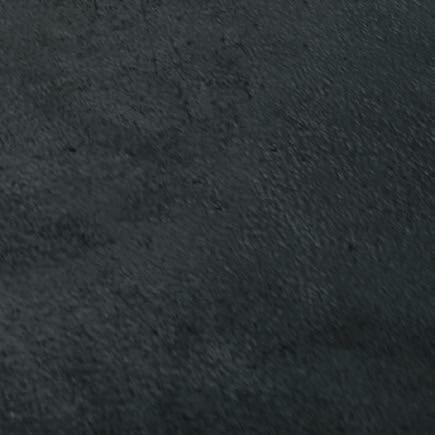
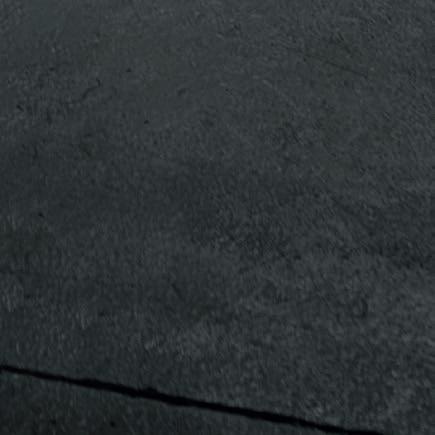


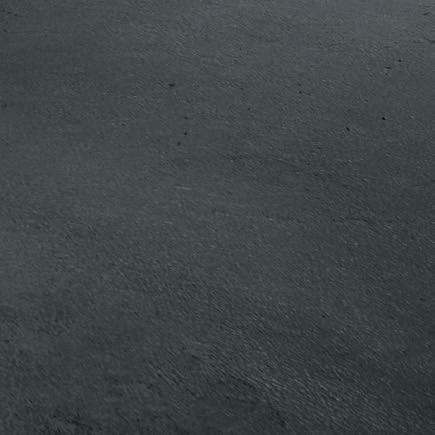


We’re helping drive Australia toward net zero.
Current role Chief Executive Officer, Pacific, Accor
Tenure 20 months
Previous roles Senior vice president, Talent & Culture, Accor; executive coach, facilitator and mentor, Ashley Coaching & Consulting; director, People Reaching Potential; regional director, HR Starwood Australia, New Zealand and the Pacific

How do you define good leadership?
Leadership at its best is when you’re open, curious, courageous and have a vision that’s got boldness. When a leader sets the scene, it empowers people. If they feel heard and understand the direction, it’s easy for everyone to get on board.
The path to becoming a CEO can be quite varied but it’s not common for an HR professional to get the top job. What are the advantages of having a people culture background?
Everything is done by people. We are a customer-facing business so it’s important that people are able to be their best and bring their best selves to work. It means that you always put people at the centre of your decision-making and when you do that, you get a great company that has purpose and real soul to it. It’s not the usual path but I’ve always seen myself as a business person first and HR was the function and discipline that I operated within.
The CEO of Accor took a non-traditional path to the top job but says her people-first approach makes all the difference.Interview by Kirsten Galliott Illustration by Marc Némorin
Have there been any disadvantages not coming through a more traditional pathway?
[Laughs] I wouldn’t say disadvantages but people question it a bit. When I stepped into the role, it was, “So you came from what area and discipline?” It was curious to me that there was such a high level of interest. Perhaps being female added to it. I’ve always been very commercial – I ran my own business for more than 10 years and had to learn how to be entrepreneurial.
Is staffing one of your biggest headaches? I understand staff numbers are still about 10 per cent short in peak periods. Yes, that’s right. It’s a lot better than last year – we were about a quarter down on the numbers that we needed – but we’re optimistic in hospitality. We’re seeing the working holiday visas return, more students are coming into the country and people who love hospitality are returning to it. The challenging areas are often the remote locations.
In 2021, you implemented Work Your Way to encourage staff to speak up about their needs. Can a hotel company offer true flexibility?
Absolutely. It’s not simply about flexibility but about a bespoke approach. If you’ve got a dog that you need to take to the vet, for example, you work your day around that. What flexibility do you need that is going to make your life better and still let you contribute and feel great about working? We’ve had examples of HR people who now work one day on a weekend because it suits them to have a day off during the week. We’ve had chefs who would sit at the corner of a kitchen bench and do their rosters and ordering. Now they can do that every couple of weeks from home. It comes back to creativity and being open-minded.
Some leaders would really struggle with that system. I embrace it. I think when we started having a one-size-fits-all approach, we lost what makes a company great. It’s the individual personalities that make it special. I’m interested in how we can work together in the future... Does productivity look different? Maybe the way we measure productivity isn’t necessarily the right way to do it. Is it the number of key strokes you do or is it your output? I argue it’s the output that you’re contributing to the business.
Accor is one of the largest hospitality companies in the world, with more than 40 brands and 5400 hotels. You’re uniquely placed to assess how travel has changed. What do you see? Design is still important but people really want experiences. When they come in to a hotel, they want to have a great experience when they’re greeted, they want their minibar to be very special and feature something local, they want the restaurant to be amazing and they want to know they can access a community activity. The experience element is critically important – and it can be a spa through to a dining experience – so that’s become more central to what we do.
So what do travellers want now? They want the experience to live up to their expectations and they want to make sure it’s memorable.
Despite cost-of-living pressures, travel is a non-negotiable now, isn’t it?
Absolutely. We’re seeing people stay in a higher-level hotel, spend a little extra on dinner or get a more expensive bottle of wine. Business travellers are really valuing travel as well, extending their stays by a day to explore a city or go to a concert.
During the pandemic, everyone was predicting the death of business travel, thanks to Zoom. That’s not the case, is it? People want to do business face-to-face. They’re happy to have virtual meetings but when it comes down to financial negotiations, they want to do it in person. Groups want to get together in small meetings and conferences, too. Corporates are not back yet to the levels of pre-COVID but they’re returning reasonably strongly. The digital nomad phenomenon has become popular as well and people are doing the “bleisure”, coming to work in Sydney for a couple of days and staying on for a few more days on the weekend.
Have you had to adapt your hotels in any way to accommodate remote workers?
We have a combination of hotels and apartment-hotels so people can do longer stays. We’re starting to think about how the lobby space can be integrated into a co-working space. How does the food and beverage space become somewhere people can have meetings as well? At the Hotel Morris, which we recently opened in Sydney, you walk straight into the bar and restaurant. There’s no front desk so you can come in, sit at the bar, pull your laptop out and check in at the same time. People want an integrated experience.
Hotels haven’t changed a lot over the past few decades. What will the hotel of the future look like?
We’re going to see more of the community in hotels. Locals will feel that they can visit – they can come in and use the restaurants, sit in the lobby, grab their takeaway coffee, drop off their dry-cleaning. From a design perspective, there’s such a big movement towards sustainability and people valuing nature. That’s very important, whether it’s plants on the outside or inside of the building or glass allowing more sunlight in. It’ll be good to have more of the outside in a hotel.
How are you incentivising travellers to make sustainable choices? It can’t just be about towels on the bathroom floor anymore, can it?
The number one principle is that if you’re going to take something away from a guest, you’ve got to be very generous with what you offer. The first principle we think about is generosity with the consumer and the customer. Last year we removed 82 per cent of single-use plastics – 43 items – in
our hotel rooms and this year we’ve removed all single-use plastic bottles in our hotels. You have to explain what you’re doing – and what the impact of that is – and offer an alternative. In the hotel, if you have filtered water that anyone can refill at any time versus one plastic bottle of water, there’s a level of generosity to it.
Are you actively seeing people asking for more sustainable choices from your hotels?
People are asking questions, particularly corporates as part of their tender process. It’s not just about the environment. It’s also about diversity. It could be First Nations, women in leadership, LGBTQIA+. I think it’s about being a good corporate citizen and understanding the community you’re in. We’re going through a process right now with Ecotourism Australia. We’re the first hotel company to sign up to getting our hotels accredited. It’s not enough for us to say that we want to do a sustainable thing. We need a check and balance against us and we need feedback as to how we’re going.
How do you see AI impacting your business?
We’re really at the early stages with AI. A lot of our administrative or back-of-house functions can be done through robotics. That’s positive because it means that those hours that we’d normally attribute staff to, we can attribute to front desk and customer-facing things. So that makes it exciting because people can be more creative. It’s kind of like the ultimate technology because you’re integrating all this information and then you should be able to get a better outcome, faster, for the customer and your team.
What’s your biggest strength as a leader?
I’m very decisive. I call it ruthless execution [laughs]. But my opinion can be changed. If we’re on a track and it doesn’t seem to be working, I can simply change course by making another decision. Courage would be another one. I’m not one to have a lot of boundaries and rules. I think having philosophies inspires creativity and innovation in myself and other people.
Personal motto
Excellence is better than perfectionism.
Email approach
I tell people not to email me. The best way to get in contact with me is WhatsApp or text. Then a phone call. My EAs are always terrified because
if I haven’t looked at my email for a while, I’ll literally just go through and delete everything in my inbox.
Motivation tactic
Expectancy theory. When you tell people they can achieve it, people always rise to the challenge.
And what about your biggest gap?
Making sure that I don’t go too fast for everyone around me and that I stay humble in the process are probably my two big watch-outs. I’ve learnt that sometimes you have to go slow to go fast. I’ve learnt about First Nations culture through some work I’ve done in the past few years. That deep listening and getting to know the person as an individual has made me a better leader.
Is there one lesson you have to keep learning again and again as far as your leadership goes?
Sometimes I get so excited in the moment. We can be in the middle of a conversation and I’ll make a noise and everyone will go, “Sarah has an idea.” So letting others go first – you know, that classic “leaders eat last”.
Has there ever been a time in your career where you have genuinely been scared?
Yes, a couple of times. One was when I left a full-time job and started my own business. They say that being scared and excited is the same emotion; it’s just that you attribute it to different things. I think that’s probably true. But there was a moment during COVID when we were holding off on making difficult decisions about the team. Thank goodness the federal government came out with JobKeeper – I was really worried about our people then.
How do you look after yourself?
I make sure I have downtime. If I’ve got a really busy week –this week I’m travelling to Uluru for a few days and then I’m in Melbourne for the back end of the week – I’ll make sure my Saturday and Sunday is absolutely clear of work. I might even clear some time on Monday morning and do a session with my trainer. I make sure I lead by example in that way.
What advice would you give a brand-new CEO?
You got the job so just run with it. Self-belief is the most important thing.
Productivity hack
Delete your emails.
Business book or podcast
The book is The Ride of a Lifetime, about the Disney CEO. And I’m listening to Helen McCabe’s podcast, Future Women Leadership Series, at the moment.
Rule you don’t break Family is the number one priority and family time is also a priority.
Favourite piece of advice
Surround yourself with people who are much smarter than you and you’ll all be successful.
This grocery wholesaler made it more efficient for its large network of retailers to source product lines. Here’s how.
Two years ago, the team at grocery wholesaler Metcash saw an opportunity to make ordering stock simpler and faster for the retailers it supplies – as well as help those businesses make better purchases.
Metcash distributes to more than 1600 supermarkets, including IGAs, grocers and corner stores in Australia, from distribution centres around the country. While no two independent stores in the network are alike, the majority are family-owned and community-focused and require a localised selection of products that are outside Metcash’s warehouse range. Finding and ordering these goods had been a time-consuming process and the retailers also wanted a simpler way to see and order the top-selling products in their state that they didn’t currently stock.
“It wasn’t always apparent to them if there were great-selling lines elsewhere that they should be stocking in their store,” says Simon Williams, Head of Merchandise Business Development at Metcash.
Metcash partnered with SAP for a solution, using Commerce Cloud to create Sorted, an integrated B2B e-commerce marketplace that saves retailers the time and effort of researching new products, contacting suppliers, negotiating terms and paying separate invoices. Retailers have the option to use Sorted to find and order products from more than 400 suppliers. Sorted then places the order with each supplier and gives retailers the choice of having products bundled into their regular deliveries from Metcash or receiving the goods directly.

Sorted analyses data to provide retailers with personalised recommendations for products based on what’s been selling well in their region. “Every single store will see a different view based on where they are geographically and also whether or not they’re stocking that line. That’s been a real game changer.”
Darren Partridge of IGA Thrumster, near Port Macquarie in NSW, says using Sorted has stocked his store with more of the items that customers want. “It’s allowed us to have a process of ordering, invoicing and receiving those products. I describe Sorted as the retailer’s online store – easy to navigate and use.”
There are almost 2200 retailers with access to Sorted. According to Metcash, they’re saving six hours per week in ordering time and now have access to 70,000 lines of products – with more expected this year.
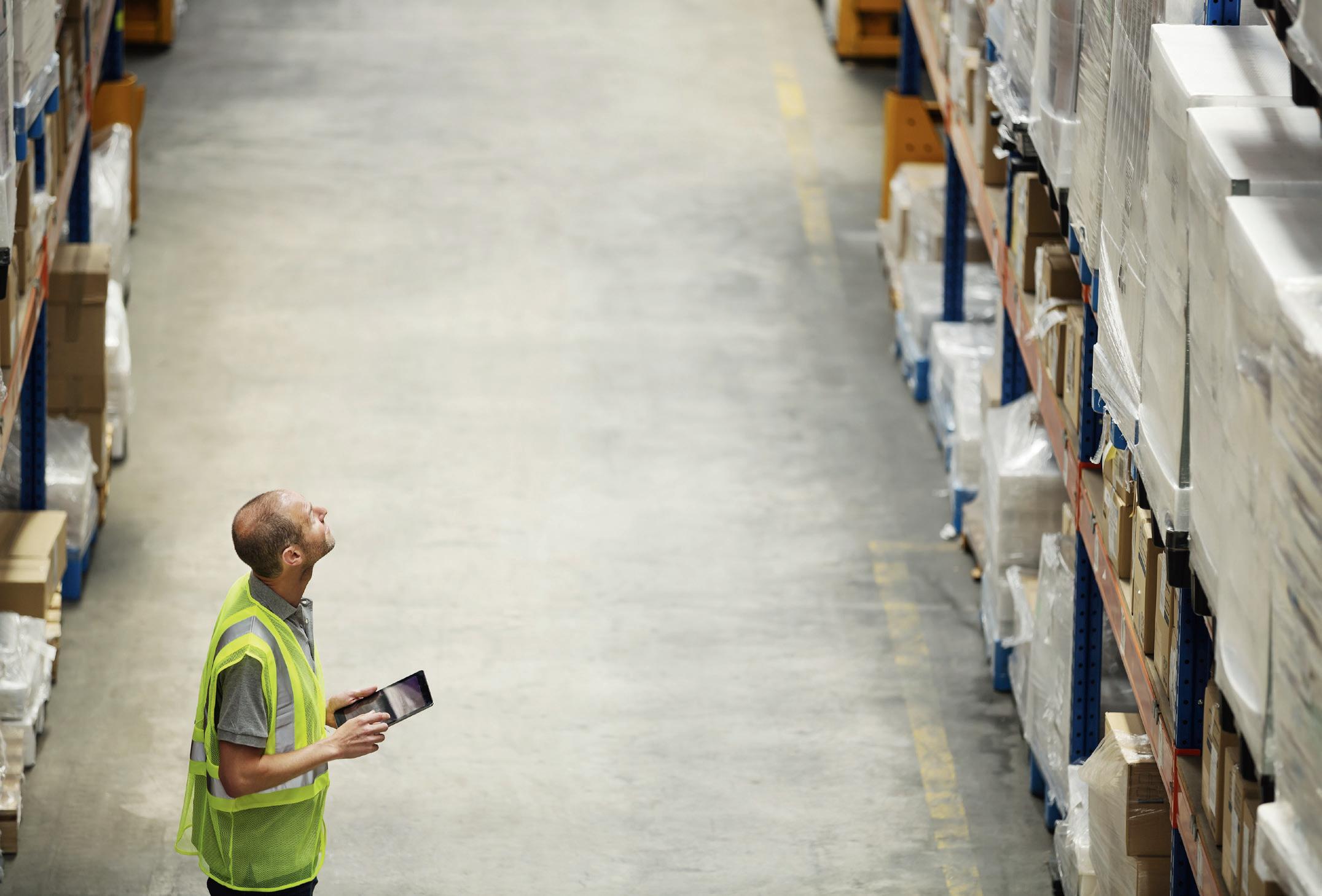
Brigitte MacGowan and Desley Maidment wanted to build a business that would allow them to travel together. A decade on, their brand, State of Escape, is taking them all over the world as it soars to new heights.
Brigitte MacGowan and Desley Maidment launched their business, State of Escape, with a bang in 2013, designing a super-practical yet ultra-stylish neoprene tote bag.
The tote became an instant sensation, capturing the attention of shoppers and fashion editors alike, with sales growing 300 per cent in the first two years.

Today, the now-trademarked Escape bag sells in the tens of thousands every year in more than
20 countries, according to Maidment, State of Escape’s CEO. Every style in its range (which now extends to crossbody bags, overnighter totes and designer collaborations) is still made in the founders’ hometown of Sydney. “It was important for us to produce the bags here because having an Australianmade product really underscores our ethos,” says Maidment.
MacGowan, the brand’s creative director, is currently based in New York and Maidment in Singapore however
the pair travel together for work “all the time”. They return to the head office in Sydney, where they have 12 full-time staff, and circle the globe to meet retailers and immerse themselves in local markets.
“We longed to have a business that gave us opportunities to explore the world through our careers,” says MacGowan. “We tell our husbands, ‘Sorry, we have to go!’” adds Maidment. Here, they explain how travel has been instrumental in bagging global success.
Let your business fly “We travel to better understand our customers’ lives. Using Qantas Points and Qantas Business Rewards savings helps us keep our costs down.”
– Desley Maidment (left)

“Personal connection in local markets is part of our business’s success”
“We’ve had many trips to Japan, where they are very particular about quality and simple, impeccable design,” says MacGowan (above, left). “We’ve been fortunate that our products resonated there. We met our Japanese distributor on our first trip and they were incredible hosts. We love food so Desley and I were in our element! We went into the stores and met all the sales staff to give them training so they could understand our philosophy and speak to customers about our brand. They really love that personal connection and I know it’s part of our success. In the early years, Business fares could be a bit of a stretch. We accumulated Qantas Points, for our business and for our Frequent Flyers, so we could put in for upgrades, which we were lucky enough to get quite often. These days, we still look for savings when we book through Qantas Business Rewards.”
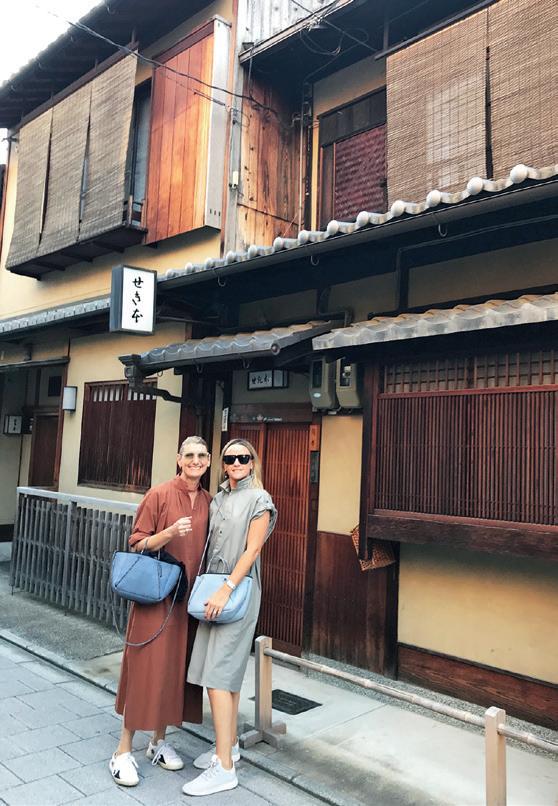
we’re in six countries on that continent. In 2018, I relocated to New York to help build the business. Others have told us that to understand the nuances of the US market, you have to be physically present, though Sydney is still home. I love that I can take off from JFK on the weekend and get to work in Sydney by 11am Monday. I’m a Platinum Frequent Flyer now and I love the International First Lounge during layovers at LAX –I know the host at the front desk, the menu, the route to the gate. I have a shower, a meal, get back on the plane and sleep all the way to Australia.”
By moving up the three levels of the Qantas Business Rewards program, members enjoy up to 10% off selected flights, to over 1,300 international destinations with Qantas, oneworld and partner airlines.
SINGAPORE > LONDON > SYDNEY
“Coming home brings us closer to our team”
Earn points twice on every business travel flight – once for the business and once for the traveller. Our loyalty programs work together so your business* and travellers can earn points for the same trip.
SYDNEY > NEW YORK CITY
“The trip that unlocked our American expansion”
“State of Escape was three years old when the Australian Fashion Council invited us to be part of the Australian Designers Abroad program in New York,” recalls MacGowan. “It was a great introduction to new opportunities and we ended up signing exclusively with Neiman Marcus. Our South American distributor discovered us there and now
“Brigitte and I recently met in London to do some forward planning and then I flew to Sydney to brief all the team,” says Maidment. “We love travelling together and seeing our bags ‘in the wild’, worn by women all around the world. We travel to better understand their lives. It’s just as important for me to come home to Sydney regularly and connect in person with our team. I manage the business side of State of Escape, so I’m conscious of how we’re tracking against budget and the trips we need to make to grow our market. Qantas Business Rewards is a great centralised hub that helps me keep tabs on expenditure, tap into flight savings and build our points for future trips and upgrades. It’s a super-easy interface for me and our finance manager to reconcile expenses, too.”
As a member, you and your travellers can enjoy up to 30% off Qantas Club membership fees. Enjoy access to international, domestic, associated and partner lounges – the ultimate pre-flight experience when travelling.
Discover how other members unlock more for their business at qantas.com/businesspassport


Skip awkward networking events and stay in at this art-filled hotel (qantas. com/hotels/acehotelsydney), where the social schedule is always stacked. Located in a creative neighbourhood, the 264-room Ace outpost is Australia’s first and it’s a buzzy hive of action, from rooftop restaurant Kiln, where the Jatz cracker does a fine-dining flip, to the lobby-level LOAM, a spill-over site for music or wine tastings. You never know who you might bump into.
com/hotels/abyadinasydney) tucked behind an atmospheric staircase water feature. It’s the first of a host of considered choices throughout the 194-room high-rise. Other big wins include in-room kitchenettes fit for longer stays, one-touch blackout blinds and Dean & Nancy on 22, a Manhattanstyle bar brought to life by the Maybe Sammy team. Dining solo? A spot at the bar is the best seat in the house.
coffee and T2 teas from 7am. Or take your laptop to the Lounge (above), a rooftop terrace with a firepit and city views. Later, switch to streaming in your suite, the bed framed by the generous picture window.
You’ll
CBD
It’s the cleverly designed common areas that impress at this 230-room property (qantas.com/hotels/little nationalsydney). In the Library – a guest-only area that’s dedicated to co-working – there’s ample space for you to spread out, with charging ports and complimentary Nespresso
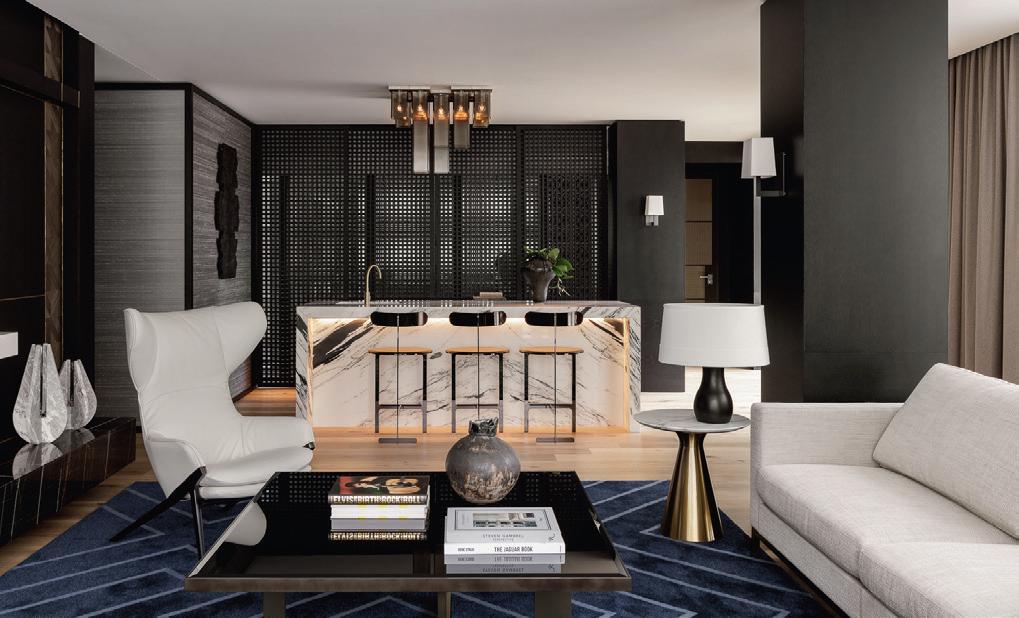
Blurring the line between business and pleasure is a cinch at this luxury retreat (qantas.com/hotels/capella sydney). Go for a run on a harbourside route in the morning, catch up with the local contingent over coffee at Aperture, the light-filled lobby café, then hit the Auriga Spa after back-toback Zooms (it’s open until 6pm). There’s also complimentary laundry pressing, soaking tubs and evening turndown services across all of the hotel’s 192 rooms.



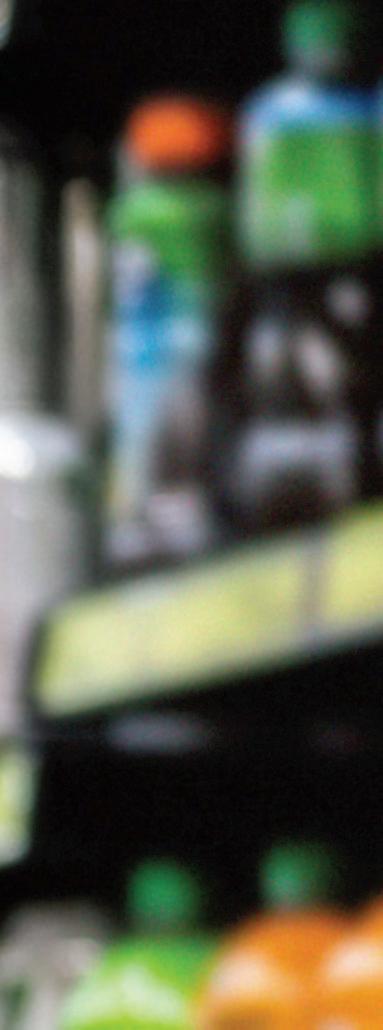



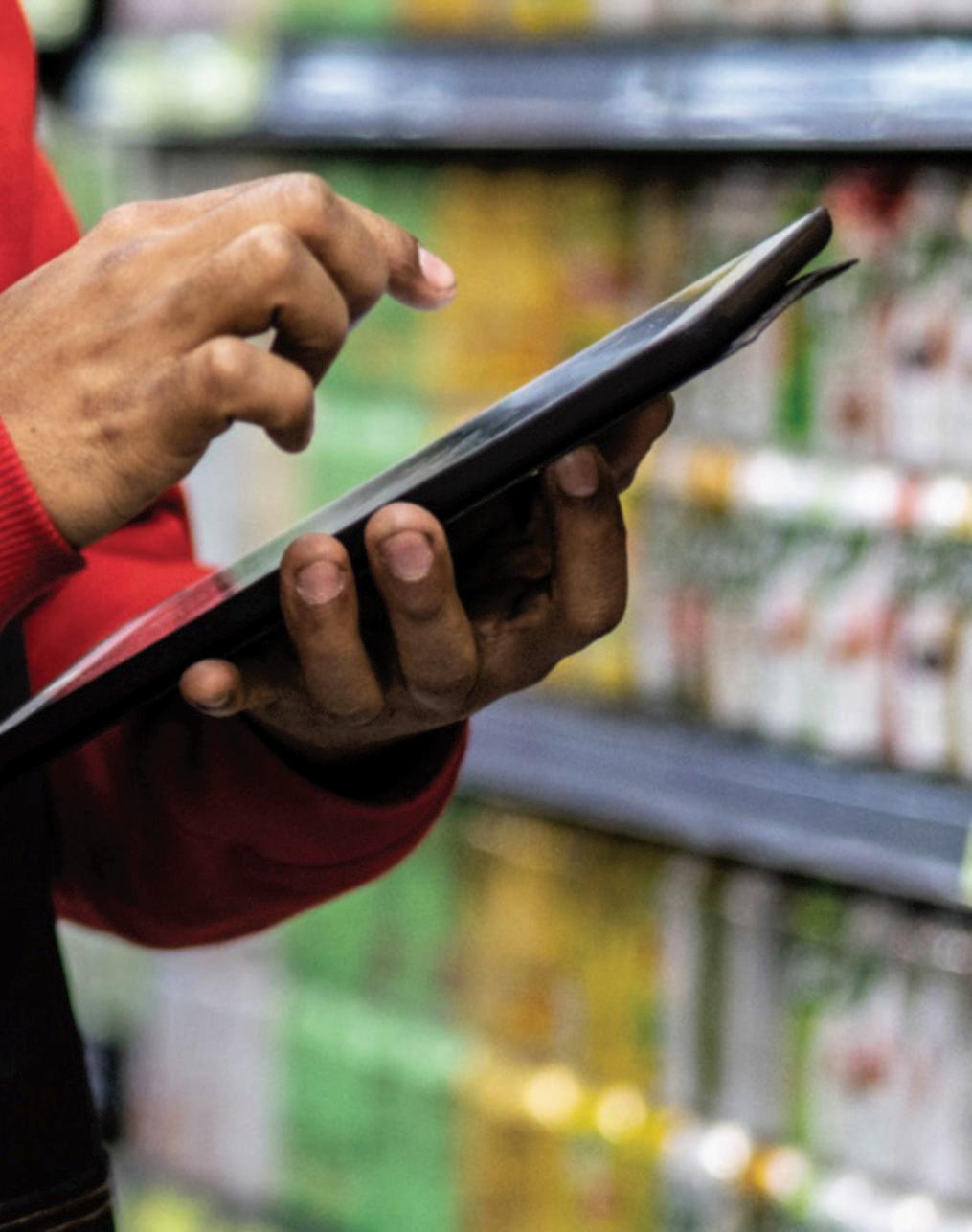
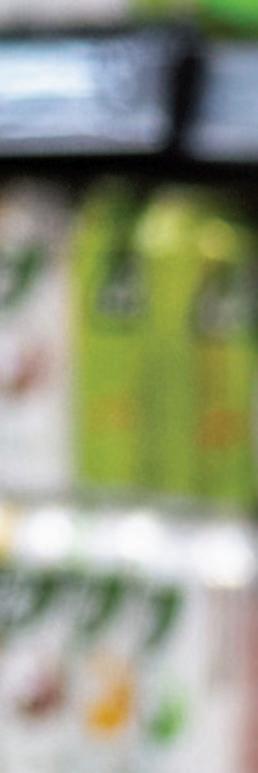



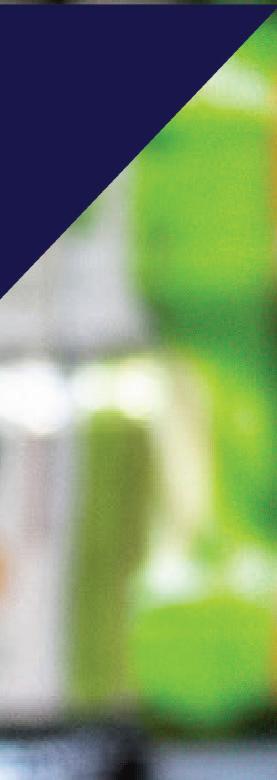


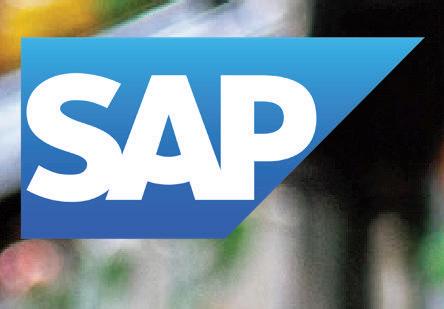
My first hurdle was when my grandmother passed away in my final year at uni. I was really rocked by that and ready to pack it all in. It was a fork in the road – I could have gone either way. What kept me going was remembering how important education was to my grandmother. She didn’t get to go to high school and didn’t want those patterns repeated. I was the first in my family to graduate with a tertiary degree. It wasn’t about being academically gifted, though – it was about trying your best and having a crack at something.
My first job was straight out of uni working at the Department of Prime Minister and Cabinet. It was in the Council for Aboriginal Reconciliation. My boss was the head of the comms unit and he took a chance on me – I had no experience but he believed in me. I felt like a fraud much of the time but also felt that I had things to contribute as part of the team. I often think about the people across my career who have championed me and I’ve always felt a sense of wanting to do that for other people when I’ve been in those positions.
My first uncomfortable conversation was the first time I had staff reporting to me. There was somebody who’d applied for my role and didn’t get it. Needless to say, that person wasn’t happy. We had an honest conversation. It was tricky and I overcompensated – I was a first-time boss and probably went a little harder than I might do now. I didn’t see it then but I believe now that you have to lead with humility. It doesn’t mean you can’t have tough conversations but when you do it with humility and empathy, it changes the nature of the conversation.
My first “I’ve got this” moment was hearing a line I’d come up with used in a press conference. It was when I was at the Council for Aboriginal Reconciliation in the 1990s. We’d been workshopping a number of lines and my line was the grab that got used on TV and radio and in print. I realised there’s a lot of power in getting those communications right. The thing that ignites somebody’s imagination or distils the idea into that quick grab is how you get your message out. That’s how you bring people along and get a bigger audience to hear what’s important.
From the beginning, the Bundjalung woman and CEO of Reconciliation Australia has built her career on the power of communication.
The first time I surprised myself was when I was able to explain the P&L and balance sheet. That probably sounds bad for someone who sits on boards but I’ve never been particularly strong with maths. I was working at the Mary MacKillop Foundation at the time and it was one thing to feel like I understood it enough to satisfy myself but being able to explain it and get it right really surprised me. I think sometimes we underestimate ourselves – particularly women. It’s about trusting your gut.
The first time I was surprised by public opinion was when I worked on the 2008 Apology to the Stolen Generations. The media and public commentary in the lead-up to the Apology were very negative. It was, “What do we need to apologise for?” We knew we had to tell the stories of the Stolen Generations to give the rest of the community the reason why. It surprised me to see the turnaround in public opinion as we got closer to the day. People became open to what was happening rather than resistant to it. That shows the power of storytelling and humanising policies… I think you have to be hopeful in the work I do. It would be very easy to dwell on the negatives and the things that aren’t working or the constant setbacks. That can be a dangerous place to wallow.

“Hearing then Prime Minister Paul Keating give the Redfern Park speech in 1992, when I was fresh out of uni. He was talking about the history of First Nations peoples and colonial-settler Australia. There was something in the power and the structure of the speech. It clarified for me what I could do with my career and how to take important issues and communicate them so well that they become part of the Australian identity.”

We need to challenge the concept of productivity. The idea of a good worker being the one who responds immediately comes with a huge cost. When we’re interrupted by a text message, it takes, on average, 23 minutes to get our focus back. But most of us never get 23 minutes. The average office worker focuses on one task for less than three minutes. The average CEO of a Fortune 500 company gets 28 minutes of uninterrupted focused work time a day. Personally, I would criminalise workplace instant messaging.
There are practical ways to protect people’s focus. Avoid open-plan offices. Buy everyone in the organisation a kSafe – they can lock their phone inside for a time they set – and a subscription to [site- and app-blocker] Freedom. The New Zealand company Perpetual Guardian gave every worker a mug and a flag; if you don’t want to be interrupted, you put the flag in the mug.
Companies are more productive in four days rather than five. This is the consistent finding of four-day work experiments at Perpetual Guardian, Microsoft in Japan and Toyota in Sweden. Stanford University’s Jeffrey Pfeffer explains it this way: you want your team to walk onto the pitch rested, calm and ready for the match. If that’s true of your sports team, it’s true of your work team.
If you want a culture that encourages deep thought, make a workday walk the norm. We’re taught to think of a mind wandering as a bad thing. But when we take time to let our thoughts float without any obvious thing to focus on, we’re processing the past, anticipating the future and making connections between things not ordinarily connected, which is the heart of creativity. There are many more important things in the world than paying attention but you won’t achieve anything without it.
the author
to concentrate in a world where the ability to stay on task is under constant attack.

Co-founders Angela Hoover, 25, and Jed White, 54 (pictured opposite)
Investors VC investors: Y Combinator, K20 Fund, Goodwater Capital, Gaingels, BBQ Capital, Acacia Venture Capital Partners
Angel investors: Nick Chan, Tim Trumper, David Gyngell, Peter Zavecz
Headquarters San Francisco, United States
Staff 10 and hiring
Market valuation Raised US$2.5 million on a valuation cap. Gearing up for the first priced round of funding later this year.
Interview by Jane NichollsWhat’s your elevator pitch?
“Andi (andisearch.com) is a search engine for the next generation: visual, conversational and factually accurate. Instead of just links, Andi gives you answers, like chatting with a smart friend. The internet is full of wonderful information but it gets buried by ads and SEO spam. We wanted to reimagine search for the way that people like to consume information now, through direct answers and a visual feed.”
How did the idea come about?
“I spent my gap year in Australia when I was 18, working in construction because I wanted to be a civil engineer. I went travelling in Europe on my way home [to the United States} and I was doing a lot of Google searches and getting frustrated by the amount of ads. As a broke backpacker, if I’m trying to find the cheapest hostel or restaurant near me I actually want a high-quality result. I met Jed, who’s Australian with a startup background, at Denver airport –I heard his accent and we got talking about what a new search engine would look like.”
What was the problem you were trying to solve?
“Google came up with the PageRank algorithm and a lot of that was based on keywords. Andi is based on semantic search – it ranks content based on contextual evidence and elevates the most relevant and highest-quality sources, filtering low-quality content, with no ads. Our vision for Andi is to provide an assistant that uses generative AI to answer questions and automate tasks.”
How did you get it off the ground?
“I started studying a business major at the Community College of Denver and Jed and I kept in contact. He was a journo in a previous life but for 20 years he’s been building vertical search engines. By this time, he was living in Denver, working on another startup. Eight months [after we met], we’re talking and he says, ‘Hey, I’ve built the back end of Andi – I think we have something here.’ I started watching videos on YC Startup School, a free online course. Through that, we were accepted into Y Combinator [YC], an accelerator in the US.”
How did you convince investors?
“We came out of the three-month YC program and launched generative AI question answering in March 2022, months before ChatGPT was released. We had turned search from a bar with a list of blue links into a conversational assistant. The YC investment gave us credentials and from early on, we had a working product to show investors. Nick [Chan, now COO] and I worked together on the angel round of funding and we raised around US$500,000 –his backing gave Australian investors confidence to take the leap of faith. Since then we’ve worked our butts off. Our business model is ‘freemium’: free, anonymous search for everyone and paid pro accounts down the line.”
What’s next?
“Enterprise search is another part of the business model – there’s demand for natural language search. We’ve spoken to more than 30 companies that want to use Andi to search their own internal documents for staff or on the front end for users. We hope in the future that ‘Ask Andi’ is a phrase that’s as common as ‘Google it.’”
The vision to build a next-gen search engine was for results to be graphic, plain talking and truly helpful, says co-founder Angela Hoover.








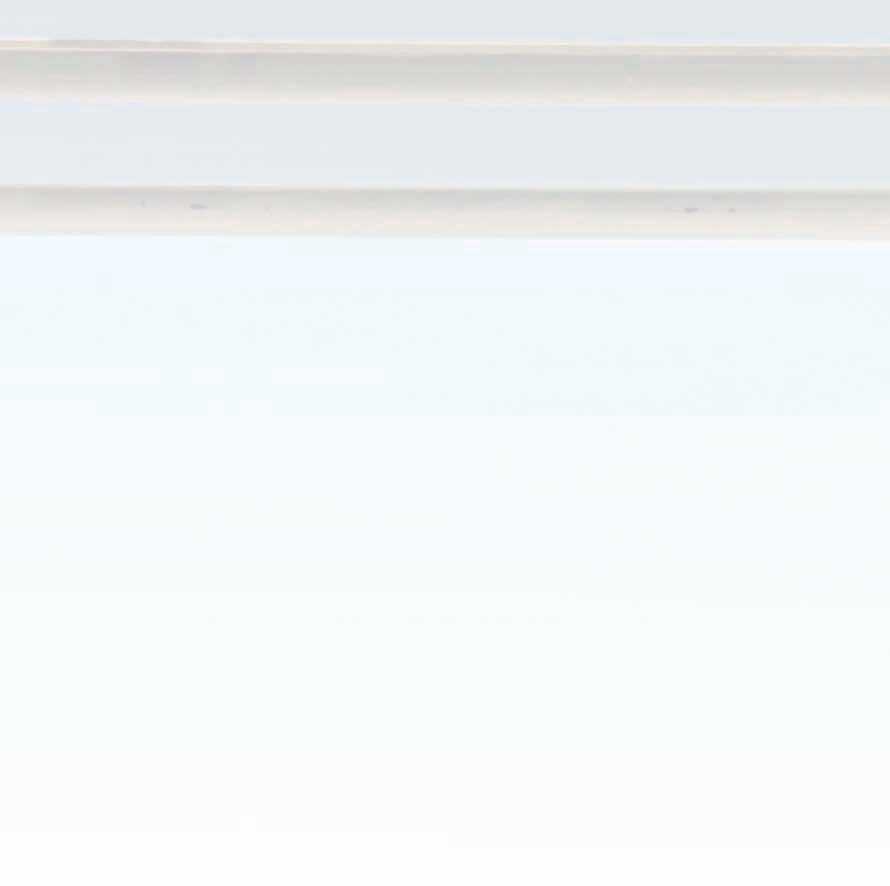
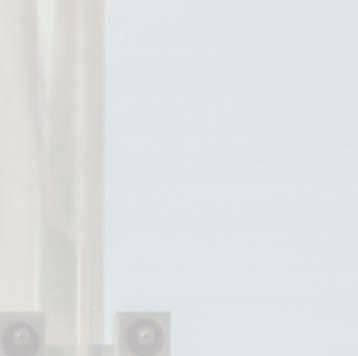

















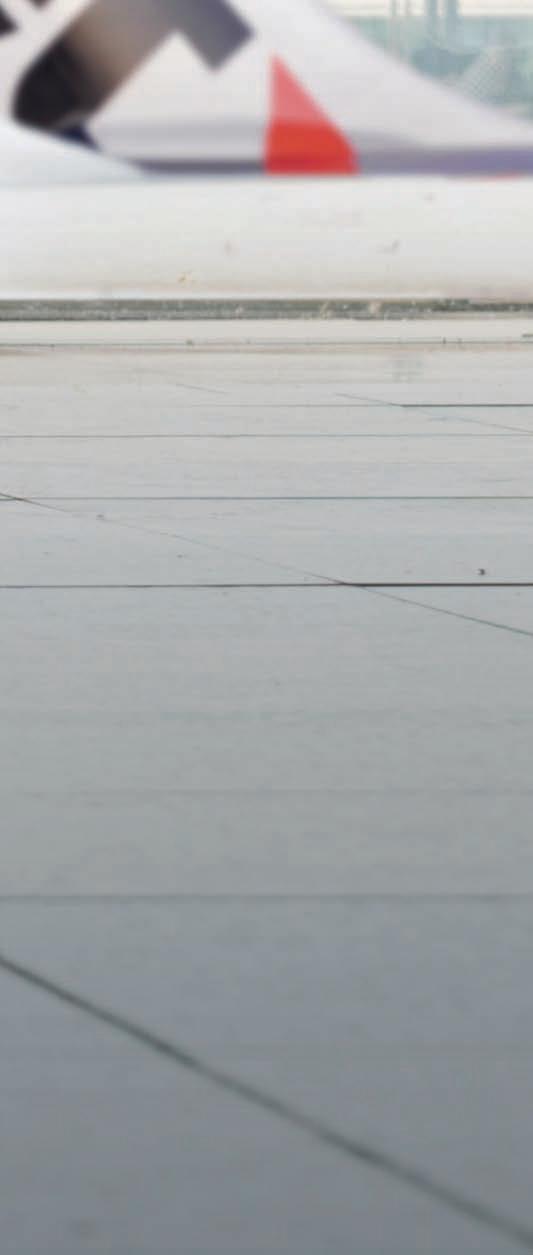

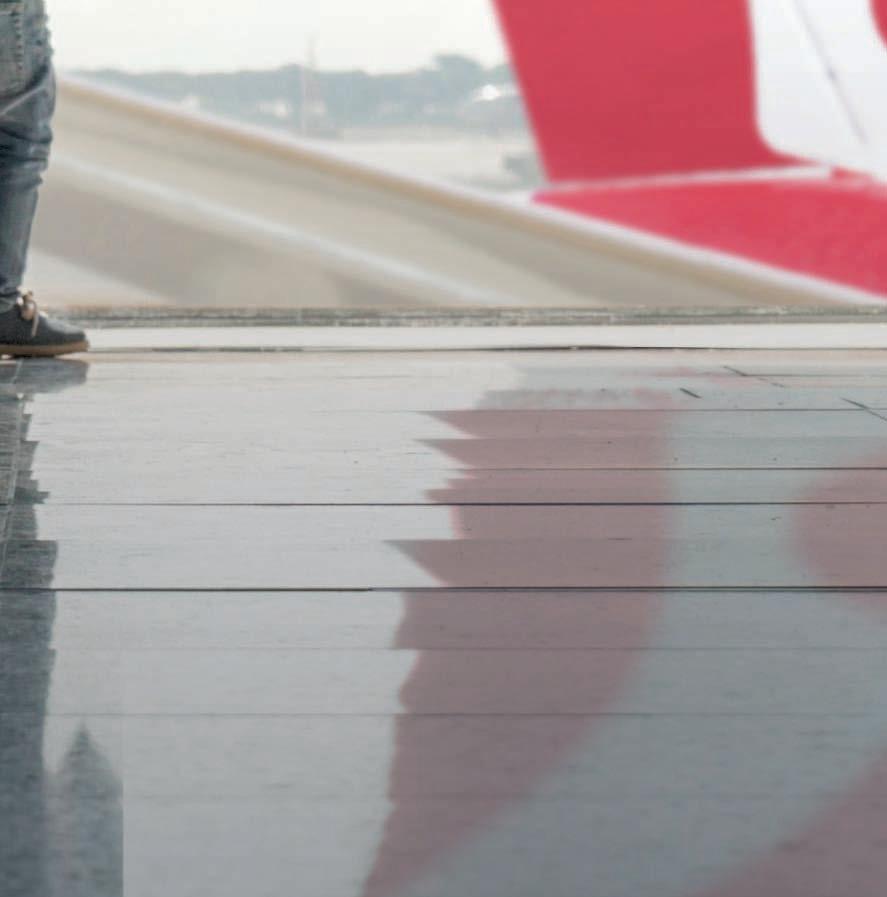



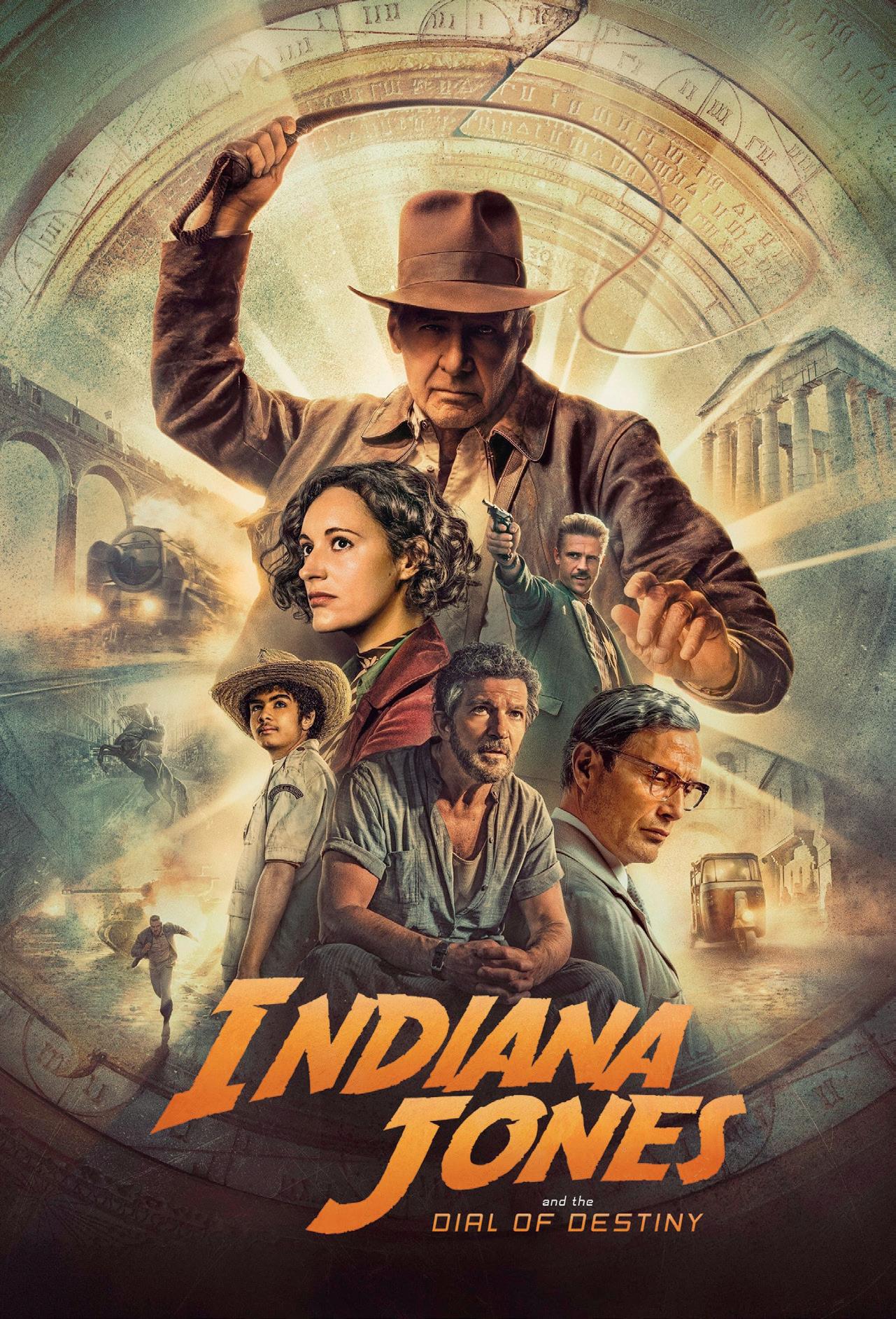
Though it’s not an official rule, a horror movie set in a house is always helped by terrible retro décor. Blame it on the 1973 blockbuster The Exorcist or 1979’s The Amityville Horror, two of the genre’s best, in which the set decoration was as gut-churning as the storyline. In Cobweb, the wallpaper is the plot: Peter (Woody Norman), an eight-year-old boy, hears knocking coming from inside his bedroom wall and discovers it has something to do with his parents (The Boys’ Antony Starr and Mean Girls’ Lizzy Caplan, above), who appear to be eerily adept at gaslighting their only son. Rated MA15+

There are train chases, whip cracks and bad guys to boot but audiences should be warned: this is not your father’s Indiana Jones. While it’s true that at 81, Harrison Ford (above) is getting on a bit, for a large chunk of the movie Ford plays a younger version of himself; a feat generated by computer – or, whisper it, AI. Young or rather youngish Indy is on the run from the Third Reich in World War II Germany, his computerised face almost convincing but his gait a giveaway. He’s a little slower and more ponderous than you’d expect from our hero, who’s supposed to be in his prime. Ford also plays his own age in the film when it’s set in 1969 New York. He’s about to retire when

he runs into Fleabag ’s Phoebe WallerBridge, who’s well cast as Helena, the smart-alec daughter of Indy’s former colleague Basil Shaw (Toby Jones). Together, Helena and Indy seek to unearth the Dial of Destiny, a relic that allegedly has supernatural powers and the ability to change the future. Problem is, former Nazi Jürgen Voller (played by Hannibal ’s Mads Mikkelsen, projecting pure evil) is after it, too. Has Indy grown too curmudgeonly, too wounded by time to face the bad guys? It’s one of those meta questions that seems to be asking audiences, “Has Harrison Ford become too weary?” Well, it is Harrison Ford so obviously not. But if he ever is, there’s always AI. With Antonio Banderas. Rated M
Patrick Wilson (above), who has half a dozen horror movies, such as The Conjuring, tucked under his bed, directs this supernatural thriller in which he reprises his role as Josh Lambert. This is the fifth film in the Insidious series, about a family haunted by a dark force. Set nine years after Chapter 2, the Lamberts, including now-separated wife Renai (Rose Byrne), have been hypnotised to forget the unspeakable acts that once befell them, until their son, Dalton (Ty Simpkins), opens that pesky red door, which just so happens to be a portal to the dead. Rated M
Words by Natalie Reilly

After more than two decades of his stylised movies, it’s obvious that writer and director Wes Anderson delights in a visual theme. In this, his eleventh film, about a tiny 1950s Roswell-type town, the characters are similar to all the others in Anderson’s earlier films, too: emotionally bereft, intellectual, awkward and deeply lonely. From Augie Steenbeck (Jason Schwartzman), a recently widowed father of four, to Midge (Scarlett Johansson, right), the rudderless Liz Taylor-esque actress. Even the kids exhibit the same personality type we’ve seen since the director’s breakout, Rushmore, in 1998. And it’s these sad children who seem to take precedence over the plot about space and potential invaders. Some might call that staid but Asteroid City is, at its gooey centre, about peace, love and understanding. Rated M

You have to hand it to Jennifer Lawrence, producer and star of this spicy comedy. Percy is a socially defeated 19-year-old (Andrew Barth Feldman), whose helicopter parents (Matthew Broderick and Laura Benanti) hire Maddie (Lawrence, left with Barth Feldman), a 32-year-old Uber driver on the brink of bankruptcy, to date him in exchange for a luxury vehicle. Lawrence knows how to trick audiences into laughing about raunchy older women with intimacy issues while slyly suggesting that the housing crisis in America has reached a tipping point. The main focus is on the surprisingly sweet friendship between the leading characters in this coming-of-age tale, co-written by John Phillips and Gene Stupnitsky (The Office). Rated MA15+

The best shows to binge this month
Like a 20-year reunion with friends you once thought you couldn’t live without, this sequel to Sex and The City is full of reflection. Was Miranda (Cynthia Nixon) queer all along? Will Carrie (Sarah Jessica Parker, below) survive without Big (Chris Noth)? We couldn’t help but wonder... Rated MA15+

Set in the evangelical circles of Texas, this dark comedy is about siblings bickering over who will take over their daddy’s megachurch and fortune when he’s gone. Stars John Goodman (below, centre). Rated MA15+

The Idol
Call it an ironic skewering of celebrity and influencer culture or a comment on the cult of fame. It might even be a feminist satire. Whatever the subtext behind this five-part series from director Sam Levinson (creator of the critically acclaimed Euphoria), it’s far from dull. Centred on Jocelyn (Lily-Rose Depp), a famous singer fresh off a nervous breakdown, who embarks on a relationship with Tedros (Abel Tesfaye, also known as real-life musician The Weeknd, above with Depp), a nightclub owner who weaves a Svengali-like spell on her. With Dan Levy. Rated MA15+

From Taylor Sheridan, who gave us smash hit neo-Western Yellowstone, comes another branch of American culture: the CIA. This series focuses on the “lionesses” of the agency. With Avatar ’s Zoe Saldaña (left). Rated M

This story of Anne Frank is told from the point of view of Miep Gies, a Dutch woman who helped Anne’s family to hide from the Nazis for two years. Stars Bel Powley and Liev Schreiber (below with Powley) as Otto Frank. Rated M

Listen in to these great stories

With their mother dead and father gone, the five Dunbar boys are forced to fend for themselves. To survive, they’ve had to write their own rules. Clay, the quiet fourth brother, will be the one who creates a miracle of sorts, building a bridge for his family to transcend life as it is for something better. This Australian coming-of-age story from Markus Zusak, author of worldwide bestseller The Book Thief, is about the possibility of love and dignity in the midst of terrible loss and cruelty.

In 1950s Melbourne, Tilly Dunnage is toiling away in a down-at-heel dress salon – but she has good reason to hide her talents. Back in her fictitious outback hometown, Dungatar, the locals are keen to find her after she left the main street in flames in an act of vengeance. In Rosalie Ham’s darkly comic sequel to The Dressmaker, which was made into a film starring Kate Winslet, Tilly must face the secrets of her past.
When he was diagnosed with motor neurone disease (MND) in 2013, former AFL player and manager Neale Daniher had two choices: give in to the incurable condition or create hope for other sufferers. Raised in a large family in regional NSW, Daniher had an illustrious career across three clubs. Post-diagnosis, he founded FightMND, which has raised millions for research into what he calls “The Beast”. Here, Daniher reflects on his life and how to make every day count.

Free Wi-Fi and Entertainment App
Once onboard, connect your own device to Qantas Free Wi-Fi on domestic flights in three simple steps to access the internet and Qantas Entertainment App.
STEP 1
Enable Aeroplane Mode and select the “Qantas Free Wi-Fi” network in your Wi-Fi settings .
STEP 2
Follow the prompts on the “Welcome Onboard” screen to connect.
STEP 3
Once you’re connected, you’re now ready to access the internet and the Qantas Entertainment App.
Having trouble connecting?
Make sure you are connected to the “Qantas Free Wi-Fi” network and go to wifi.qantas.com in your preferred browser to start exploring. Inflight entertainment varies by route and aircraft. Voice calls are not permitted inflight.
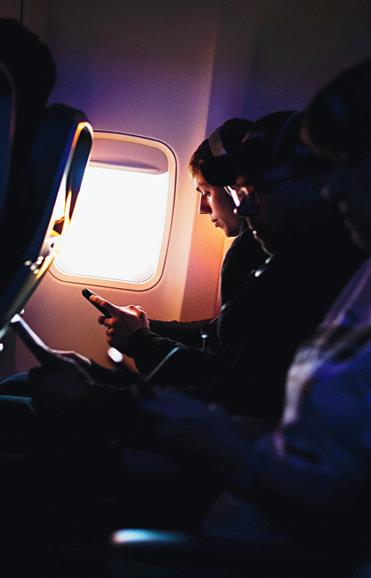
Enjoy unlimited access to theaustralian.com.au, and themonthly.com.au when you are connected to Qantas Wi-Fi onboard and in Qantas lounges
These exercises are designed to provide a safe way to stretch and enjoy movement in certain muscle groups that can become stiff as a result of long periods of sitting. They may be effective at increasing the body’s blood circulation and massaging the muscles. We recommend you do these exercises for three or four minutes every hour and occasionally leave your seat to walk down the aisles. Each exercise should be done with minimal disturbance to other passengers. None of these exercises should be performed if they cause pain or cannot be done with ease.
Ankle circles
Lift feet. Draw a circle with toes, moving one foot clockwise and the other counterclockwise at the same time. Reverse circles. Rotate in each direction for 15 seconds. Repeat if desired.
Knee lifts
Lift leg with knee bent while contracting your thigh muscle. Alternate legs. Repeat 20 to 30 times for each leg.
With shoulders relaxed, drop your ear to your shoulder and gently roll your neck forward and back, holding each position for about five seconds. Repeat five times.
01
Start with both heels on the floor and point feet upwards as high as you can.
02
Put both feet flat on the floor. Lift heels high, keeping the balls of the feet on the floor.
03
Repeat these three stages in a continuous motion and at 30-second intervals.
Bend forward slightly. Clasp hands around left knee and hug it to your chest. Hold for 15 seconds. Keeping hands around the knee, slowly let it down. Alternate legs. Repeat 10 times.
With both feet on the floor and stomach held in, slowly bend forward and walk your hands down the front of your legs towards your ankles. Hold for 15 seconds and slowly sit back up.
Shoulder roll
Hunch shoulders forwards then upwards, backwards and downwards in a gentle circular motion.
Mobile phones and electronic equipment: All transmitting electronic devices, including mobile phones, tablets and laptop computers, must be switched to flight mode* prior to departure. Smaller devices such as mobile phones, e-readers, electronic games, MP3 players, iPads and other small tablets may be held in your hands or stowed in a seat pocket. Unless otherwise directed by the captain, these devices may remain switched on and used in flight mode during take-off, cruise and landing. Larger electronic equipment such as laptop computers may only be used from when the aircraft seatbelt sign is extinguished after take-off until the top of descent. After landing, the cabin crew will advise when flight mode may be switched off.
Headsets: Do not use a personal single-pin audio headset in the Qantas inflight entertainment system unless it is supported by a two-pin airline headset adaptor. Personal headsets that connect via a cable
to a handheld device can be used at any time from boarding until arrival. Headsets and other devices that connect via Bluetooth must be switched off for take-off and landing but can be used during cruise.
*Flight mode enables you to operate basic functions of your mobile phone or personal electronic device while its transmitting function is switched off, meaning you cannot make phone calls or send an SMS.
Your wellbeing is our priority. Our Fly Well program brings together a number of measures to give you peace of mind during your flight.
Cabin air: Our aircraft air conditioning systems are fitted with hospital-grade HEPA filters, which remove 99.9% of all particles including viruses. The air inside the cabin is refreshed every few minutes, ensuring the highest possible air quality.
Inflight: The aircraft configuration, including the seats and galley, act as a natural barrier, and people are not seated face to face. The direction of inflight airflow is ceiling to floor.
Enhanced cleaning: Our aircraft are cleaned with a disinfectant effective against coronaviruses, with a focus on the high contact areas of seats, seatbelts, overhead lockers, air vents and toilets. Our people are trained in the latest hygiene protocols.
Face masks: Some destinations require you to wear a mask during your flight or at the airport. Ensure you check the latest government requirements before you travel. Your face mask needs to cover your mouth and nose, fit securely and must be worn unless you’re under 12 years of age or have a medical exemption.
Your inflight health: When flying, passengers can be seated and inactive for long periods of time. The environment can be low in humidity and the
cabin pressure equivalent to an altitude of 2440 metres above sea level. The following advice helps you stay healthy during your journey.
The importance of inflight blood circulation and muscle relaxation: When walking, the leg muscle action helps return venous blood to the heart. Sitting in the same position for a long period of time can slow this process and, in some people, leads to swelling in the feet. Some studies have shown that immobility associated with travel of longer than four hours (by air, car or rail) can also lead to an increased risk of deep vein thrombosis (DVT), or clotting in the legs. Personal factors that increase the risk of DVT include:
Age over 40 years
Personal or family history of DVT or pulmonary embolus
Recent surgery or injury, especially to the lower limbs, pelvis or abdomen
Cancer
Inherited or other blood disorders leading to clotting tendency
Pregnancy
Oestrogen therapy (oral contraceptive pill or hormone replacement therapy).
There are a number of ways to help reduce the possibility of DVT, including the following:
Avoid leg-crossing while seated
Ensure adequate hydration
Minimise alcohol and caffeine intake before and during your flight
Wear comfortable, loose-fitting clothes
During your flight, move your legs and feet for three to four minutes per hour while seated and move about the cabin occasionally
Do the light exercises we recommend here (see above) and through the inflight entertainment system.
If you have concerns about your health and flying, or you feel that you may be at risk of DVT, Qantas recommends that you talk to your doctor before travelling. Additional measures such as well-fitted compression stockings or anti-clotting medication may be recommended for high-risk individuals.
Jet lag: Unlike other forms of transport, air travel allows for rapid movement across many time zones, which can disrupt the body’s biological clock. This is commonly known as jet lag. This disruption can affect various body rhythms such as the sleepwake cycle and the digestive system, leading to symptoms such as tiredness and lack of energy and appetite. In general, the more time zones crossed, the more disruption of the body clock and the more symptoms experienced after the journey. We recommend the following to minimise the effects of jet lag.
Before your flight:
Get a good night’s rest
During your flight:
Eat light meals
Wear loose, comfortable clothing and sleep when you can
Stay hydrated – drink plenty of water and avoid excess tea, coffee and alcohol
At your destination:
If possible, give yourself a day or two after arrival to adjust to the new time zone
Try to eat meals and do other social activities at appropriate destination times to adjust to the new time zone
Cabin humidity and hydration: Humidity levels of less than 25 per cent are common in the cabin, as the outside air that supplies the cabin is very dry. The low humidity can cause drying of the surfaces of the nose, throat and eyes and it can irritate contact lenses. If normal fluid intake is maintained during the flight, dehydration will not occur.
We recommend:
Drink water and juices frequently during the flight
Drink coffee, tea and alcohol in moderation
Remove contact lenses and wear glasses if your eyes are irritated
Use a skin moisturiser to refresh the skin
Cabin pressurisation: During flight, aircraft cabin pressure is maintained to a sufficient density for your comfort and health. As the aircraft climbs, the cabin may reach the same air pressure as at an elevation of 2440 metres above sea level. Cabin pressure does not pose a problem for most passengers. However, if you suffer from obstructive pulmonary diseases, anaemias or certain cardiovascular conditions, you could experience discomfort at these altitudes. These passengers should seek medical advice before flying, as some may require supplementary oxygen. Qantas can arrange this but requires at least seven days’ notice before travelling. The rate of change in cabin pressure during climb and descent is also carefully maintained and does not usually cause discomfort. However, children and infants, and adults who have sinus or nasal congestion, may experience some discomfort because of pressure changes during climb and particularly descent. Those suffering from nasal or sinus congestion because of a cold or allergies may need to delay travel. The following advice may assist:
To “clear” your ears, try swallowing, yawning or pinching your nose closed and gently blowing against it. These actions help open the Eustachian tubes, equalising pressure between the middle ear chamber and throat. If flying with an infant, feed or give your baby a dummy during descent. Sucking and swallowing help equalise pressure in an infant’s ears. Give children something to drink or chew during descent. Consider using medication such as nasal sprays, decongestants and antihistamines 30 minutes prior to descent to help open up your ear and sinus passages.
Motion sickness: Air travel, especially if turbulence is experienced, can cause motion sickness, as it leads to a conflict between the body’s sense of vision and its sense of equilibrium. Maintaining good visual cues (keeping your eyes fixed on a non-moving object) helps prevent motion sickness. When the weather is clear, you should look out at the ground, sea or horizon. If the horizon can’t be seen, closing your eyes and keeping your head movements to a minimum will help. While over-thecounter medications are available, we recommend
you consult your doctor about the appropriate medications. More information can be found: At qantas.com.au/info/flying/intheair/ yourhealthinflight
Through the onboard entertainment system
On our information leaflet available from Qantas or your travel agent
Smoking: Government regulations prohibit smoking on all flights operated by Australian-registered aircraft. The use and charging of all e-cigarettes and other personal vaporisers are not permitted on board an aircraft. There are smoke detectors in all toilets and penalties for regulation breaches.
Travelling with children: Please ask cabin crew for help if required. Baby food and nappies (diapers) are available on most flights, while some washrooms are fitted with baby change tables. Please dispose of nappies etc. in the waste bins.
Leaving flights: On international flights, the cabin crew will distribute the necessary Customs and Immigration forms. If you are stopping en route, you will need your boarding pass to re-board the aircraft. If you’re travelling as a domestic passenger on an international flight within Australia, retain your boarding card with the large D sticker. This will be required to clear Customs at your destination.
Transferring from Australian domestic flights numbered QF400 and above to international flights: At check-in you will be issued with your international boarding pass. Your international boarding pass and baggage will be tagged through to your final destination. There is no need to claim your baggage or attend check-in at the transfer airport. Follow the signs for international transfers passengers to the complimentary transfer bus (not necessary in Melbourne and Darwin).
Transferring from international to domestic flights numbered QF400 and above: On arrival at your Australian transfer port, go through Immigration and collect your luggage. Proceed through Customs and follow the signs to the domestic transfer area to re-check your luggage. A complimentary transfer bus (not necessary in Melbourne, Adelaide and Darwin) departs at regular intervals for the domestic terminal for your connecting Qantas flight within Australia. If your connecting domestic flight is numbered QF1-QF399, there is no need to clear Customs and Immigration. These flights depart from the international terminals. Customs and Immigration clearance will be completed at your final destination.
Transferring to a Jetstar domestic flight: If your next flight is with Jetstar (JQ) or a Qantas codeshare flight operated by Jetstar (QF5400-QF5999), you will need to collect your baggage and follow the signs to the Jetstar counter to check in for your flight and re-check your baggage.
The Qantas Group has a strict policy of denying boarding, or off-loading any passenger who makes inappropriate comments or behaves inappropriately inflight or on the ground. Qantas will not accept any inappropriate comments as “jokes”. It will also seek to recover all costs incurred, including diversions as a result of security incidents, from those involved.
Security screening is subject to the laws and regulations of the country of operation. The Qantas Group ensures that its passengers, staff and aircraft are safe and secure through an outcome-focused, risk-based approach to security management. Qantas security standards apply across the business, including QantasLink and Jetstar. A dedicated operations centre monitors global security events 24 hours a day.
Pack your own luggage
Do not carry any items for another person Carry valuables, approved medication and keys in your carry-on baggage
All knives, sharp objects or cutting implements must be in checked baggage
Security measures can include random frisk search after consent is obtained. Passengers may request privacy and must be searched by a screener of the same gender
Important note: Security screening is subject to the laws and regulations of the country of operation.
On all international flights to and from Australia: Each container of LAGs in your carry-on baggage must be 100ml or less
All 100ml containers must be placed in a single transparent one-litre plastic bag
Plastic bags containing LAGs are to be screened separately from other carry-on baggage
All powders must be screened separately with restrictions on the carriage of inorganic powders over 350ml (350g)
Passengers may still carry prescription medicines or baby products sufficient for the flight
If departing, transiting or transferring on an international flight at an Australian
international gateway airport, duty-free powders and LAGs must be sealed, with receipt, in a security tamper-evident bag issued at the time of purchase
The Australian federal government has introduced full-body scanners at international gateway airports: Sydney, Adelaide, Brisbane, Cairns, Darwin, Perth, Melbourne and the Gold Coast
The Australian Federal Government has commenced introducing full-body scanners at major domestic airports: Adelaide, Brisbane, Cairns, Canberra, Darwin, Gold Coast, Hobart, Launceston, Melbourne, Newcastle, Perth, Sunshine Coast, Sydney and Townsville
At international gateway airports passengers refusing to pass through the scanner will be banned from entering the sterile area or boarding an aircraft for 24 hours
Exemptions apply for people with serious medical conditions, infants and small children, and people in wheelchairs
As per advice, the energy exposure is comparable to that from a mobile phone several metres away
There are no known safety concerns for people with pacemakers and metal implants or for pregnant women
Common items used every day may seem harmless but on an aircraft they may become dangerous. When the aircraft changes altitude, variations in temperature and pressure may cause items to leak, create fumes or catch fire.
Items that are forbidden on aircraft or have carriage restrictions include lithium batteries, other battery types, camping stoves, fuels, oils, compressed gases, aerosols, household cleaners, matches, lighters, paints, explosives (including flares, fireworks, sparklers and bonbons), emergency position-indicating radio beacons, radioactive material, biological and infectious substances and fuel-powered equipment. This list is not exhaustive so please carefully consider what items you pack for your next flight.
If you’re unsure about an item in your baggage, ask a member of our friendly cabin crew.
For further information, go to qantas.com or email dg@qantas.com.au.
Qantas is a partner in the Australian government’s Charter for Safe Travel. Travellers may obtain the latest travel advice for their destination by visiting smartraveller.gov.au.
Several countries are introducing automated immigration clearance procedures to cope with growing air-travel numbers. The goal is to provide a faster, smoother immigration experience to eligible passengers without compromising border security. Please note that some automated clearance options may not be available due to COVID. Countries providing facilities across our network:
Australia SmartGate: e-passport holders of Australia, Canada, China, France, Hong Kong, Ireland, Japan, Korea, Macau, New Zealand, Singapore, Sweden, Switzerland, UK and US
China e-Channel: citizens of China
Hong Kong e-Channel Residents: citizens and residents of Hong Kong
Hong Kong e-Channel Visitors: frequent visitors that are visa-exempt, including Australians
Indonesia Autogate passport gates: citizens of Indonesia
Japan Speedy Immigration: citizens and foreign nationals with re-entry and special re-entry permits
New Zealand SmartGate Plus: e-passport holders of Australia, New Zealand, UK and US
Singapore enhanced-Immigration Automated Clearance System (eIACS): citizens, permanent residents, work permit holders and APEC cardholders
UAE eGate: UAE citizens and residents
UK ePassport gates: e-passport holders of UK, Switzerland and European Economic Area (EEA)
USA Global Entry system: US citizens and permanent residents, Dutch citizens, South Korean citizens and Mexican nationals. Canadian citizens and residents with NEXUS membership
USA Automated Passport Control: for US, Canadian and Visa Waiver Program passport holders
Fee applies
Pre-enrolment required





Access to preferred or pre-reserved seating is in accordance with the individual policy of the oneworld member airline operating the flight. First and business class check-in desks and lounges are not available at all airports. Fast track is not available at all airports. Priority baggage handling is not available on flights operated by British Airways. Extra baggage allowance benefits differ for Sapphire and Emerald tier members. oneworld benefits are available only to passengers on scheduled flights that are both marketed and operated by a oneworld member airline (marketed means that there must be a oneworld member airline’s flight number on your ticket). Alaska Airlines, American Airlines, British Airways, Cathay Pacific, Finnair, Iberia, Japan Airlines, Malaysia Airlines, Qantas, Qatar Airways, Royal Air Maroc, Royal Jordanian, SriLankan Airlines and oneworld are trademarks of their respective companies. Some limitations and exceptions may apply. For more information, visit www.oneworld.com/benefits. Fiji Airways is a oneworld connect partner which provides select alliance benefits to oneworld members. For more information, visit www.oneworld.com/oneworld-connect. For detailed information on the oneworld Lounge Access policy, visit https://www.oneworld.com/airport-lounges.

Across
01. Toil (6)
05. Rabbit cage (5)
08. Accepts as inpatient (6)
11. Messages (8)
12. Extinguish (10)
13. Meal accompaniments (4,6)
14. Embroiled (8)
15. Fun and games... and skittles (4)
16. Consequences (7)
19. Searched for underground water (6)
22. Latin American dance (3,3)
24. Oblivious (7)
27. Garish (4)
28. Apple variety (4)
29. Selected by voting (7)
30. Shrubs (6)
31. Ferret relative (6)
33. Characterise (7)
34. Chapel benches (4)
36. Secretarial (8)
39. Required element (10)
41. Common pet crustacean (6,4)
42. Maths calculation (8)
43. Water-bound area (6)
44. Blends (5)
45. Shirker (6)
Across
01. Dog belonging to us is hard work (6)
05. Pen requested by Starsky’s offsider (5)
08. Owns up and allows access (6)
11. Fails to notice about four official letters (8)
12. Eradicate variety of Italian hen (10)
13. Team asks waiter for extra dishes (4,6)
14. Needs hem repaired – it’s caught up (8)
15. Drink from the tap (4)
16. Your personal property may be seen as special in movies (7)
19. Used divine means to detect spring (6)
22. Half a chance to repeat ballroom performance (3,3)
24. Bringing back rather a wan understudy is a bit ignorant (7)
27. Noisy Abbott’s mate ends up with five hundred (4)
28. Festival held in Georgia and Los Angeles (4)
29. Chose to be electrocuted, court dismissed (7)
30. Plot with Eliot to find spies (6)
31. Before the jumble sale, we found what goes pop (6)
33. Picture of wine and fish (7)
34. Where people sit and wait for service (4)
36. Relating to administrative work of priests (8)
39. Part of recipe needed when I get dinner organised (10)
41. He moves in when others come out of their shell (6,4)
42. Job for the summer (8)
43. I touch down, I’m told, in Sicily or Corfu (6)
44. Combines one thousand and nine points (5)
45. An artful tax evader? (6)
Down
02. Silly (7)
03. Childbirth specialists (13)
04. Echo (11)
05. Hurry, make... (5)
06. Ambushes (5)
07. Game stalkers (7)
08. Remorseful (7)
09. Distance units (5)
10. Ownership document... deed (5)
17. Coincidence (5)
18. Company’s constitution (7)
20. Satisfactorily equipped (4,9)
21. Rejoice exceedingly (5)
23. Move with effort (5)
25. Birch relative (5)
26. Vacuous (5-6)
32. Traced (7)
33. Mayflower settler (7)
35. Charming (7)
37. West Yorkshire football club ... United (5)
38. Cuban music (5)
39. Inwards email folder (5)
40. Windowpane (5)
02. Is a workout before nine really foolish? (7)
03. They stand and deliver (13)
04. Ring clergyman and Her Majesty to remonstrate (11)
05. Heats arranged according to speed (5)
06. Pitfalls of returning paintings as an afterthought (5)
07. He turns around to see predators (7)
08. Like a bad actor, talking horse is humiliated (7)
09. A long way to go to get around slime (5)
10. The initial typed letters explain what may make you noble (5)
17. Stroke of luck to see whale tail (5)
18. Hired transport for councillor nursing broken heart (7)
20. We will be given position with quality inclusions (4,9)
21. Some visit Luxembourg and return to gloat (5)
23. He upset Ms Longoria by appearing in drag (5)
25. Gore stands in front of the German tree (5)
26. Hated my deep confusion. It’s senseless! (5,6)
32. Tracked down order for cold tea (7)
33. One who made progress curls lip up like The Reaper (7)
35. Fetching a few who were behind victory (7)
37. City guides speak out (5)
38. Half of Peru has qualification in dance (5)
39. Where Pandora found evil new correspondence (5)
40. Flute, for example, seen in mirror (5)
Tough puzzle, simple rules: each row, column and 3x3 box must contain the numbers 1-9.
Create as many words of four letters or more as you can using the given letters once only but always including the central letter. Don’t use proper nouns or plurals ending with “s”. See if you can find the nine-letter word using all letters.
10 Good
15 Very good
19+ Excellent
Complete the names of these performers who provide voices for fictional characters and find the missing words hidden in the box of letters. The letters left over will spell out two characters Jim Henson provided the voice for.
Can you spot the seven differences between these two images? Circle what’s changed on the image below.
01. What British TV presenter writes The Thursday Murder Club books?
02. Cervical, thoracic, lumbar, sacral and coccygeal are types of what body part?
03. What sauce’s name derives from Swahili for “pepper-pepper”?
04. What is the world’s most visited country?
05. What is the opposite of waning in the moon’s cycle?
06. The Rollers and the Gliders are Australia’s national teams in what sport?
07. What dog breed is credited with more than 2000 rescues in the Swiss Alps?
08. What is Morocco’s most populous city?
09. “All the leaves are brown” is the opening line of what classic 1965 song?
10. The measurement Mach 1 is more commonly known as what?
11. Which three world capitals start with “O”?

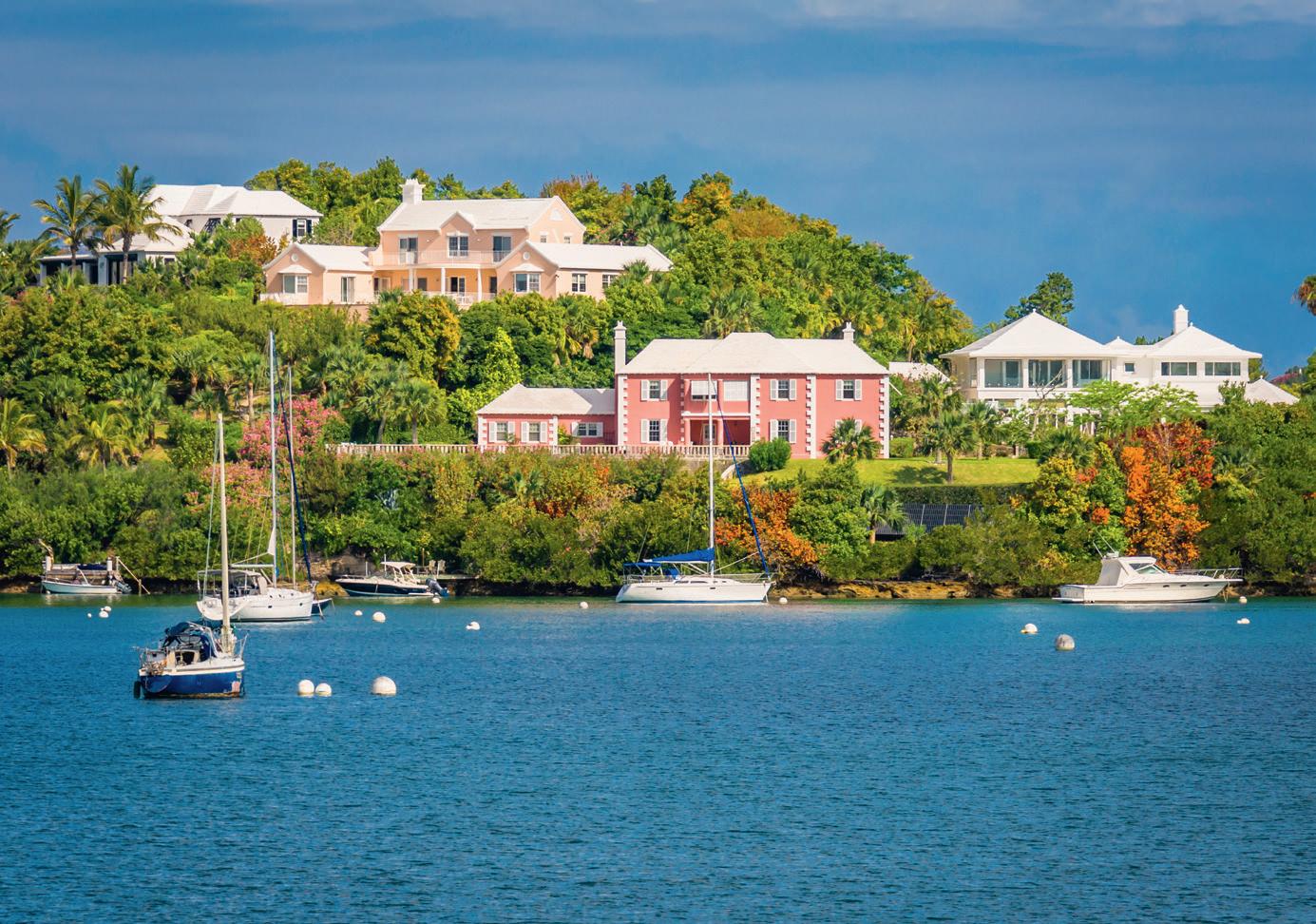
12. In motoring, what does ICE stand for?
13. What percentage of dinosaurs are thought to have been carnivorous?
14. What Hong Kong peninsula’s name is Cantonese for “nine dragons”?
15. In what Australian state were 2023 TV series Deadloch and Bay of Fires filmed?
16. By what name are the Tower of London’s Yeoman Warders better known?
17. How many points are needed to win in table tennis at the Olympics?
18. What is the second-largest country in Africa?
19. Finneas O’Connell is the brother and musical collaborator of what chart-topper?
20. Which country is the world’s top olive producer?
If you’ve filled in the answers, please take the magazine with you so the cabin crew know to replace it with a new copy.
Get
Easy
Moderate
Hard
Wheel of words
Agog, Eggy, Gale, Gang, Gaol, Gene, Glee, Glen, Goal, Gone, Gong, Long, Ogle, Yoga, Agony, Along, Angel, Angle, Eagle, Elegy, Glean, Leggy, Engage, Gangly
Nine-letter word: Genealogy

Spot the difference
01. Chimney removed
02. Colour changed
03. Palm tree added
04. Extension to white house
05. Boat flipped
06. Extra buoys added
07. Larger side of pink house
Adam Sandler, Alec Baldwin, Ben Stiller, Brittany Murphy, Bruce Willis, Christopher Plummer, Dakota
Fanning, Dana Delany, Ellen DeGeneres, Eric Idle, George Clooney, Haley Joel Osment, Hayden Panettiere, James Earl Jones, Jennifer Love
Hewitt, Jim Carrey, Mark Hamill, Matt Damon, Michael J Fox, Michelle Pfeiffer, Minnie Driver, Neil Patrick Harris, Reese Witherspoon, Ricky Gervais, Ringo Starr, Seth MacFarlane, Shia LaBeouf, Susan Sarandon, Simon Pegg, Taylor Lautner, Tina Fey
Solution: Kermit The Frog and Rowlf The Dog
Quiz
01. Richard Osman 02. Vertebrae 03. Peri-peri
04. France 05. Waxing 06. Wheelchair basketball 07. St Bernard 08. Casablanca
09. California Dreamin’ 10. The speed of sound 11. Oslo, Ottowa and Ouagadougou
12. Internal combustion engine 13. One per cent
14. Kowloon 15. Tasmania 16. Beefeaters
17. Eleven 18. Democratic Republic of the Congo 19. Billie Eilish 20. Spain
your daily dose of travel inspiration as we share the latest and greatest tips on where to go, things to do, what to eat and drink, and more.





 PILOT’S WATCH CHRONOGRAPH 41 TOP GUN OCEANA
PILOT’S WATCH CHRONOGRAPH 41 TOP GUN OCEANA
“ONCE I DREAMED TO BECOME THE FASTEST DRIVER. TODAY, I AM A DRIVER OF CHANGE.”
